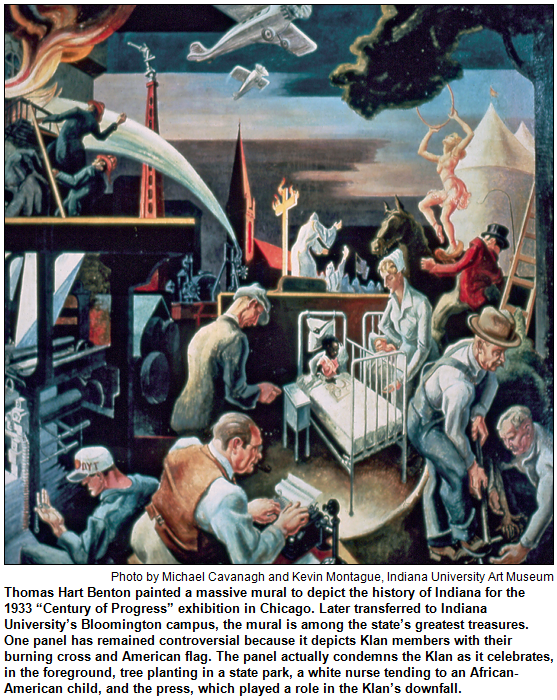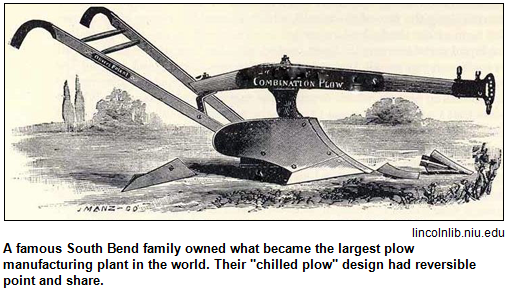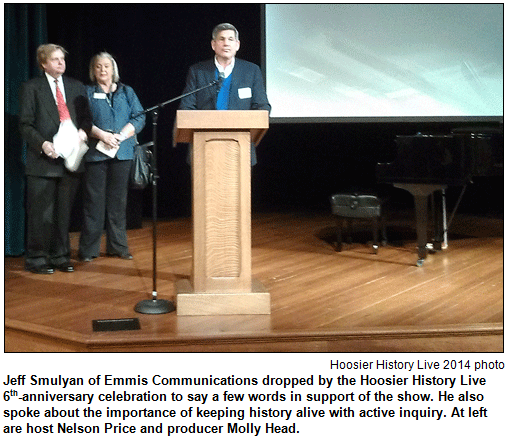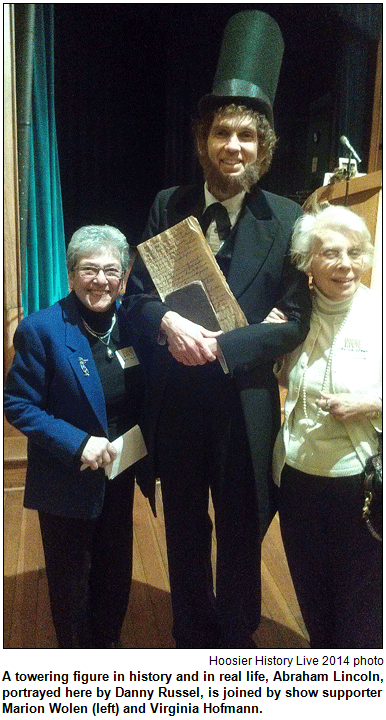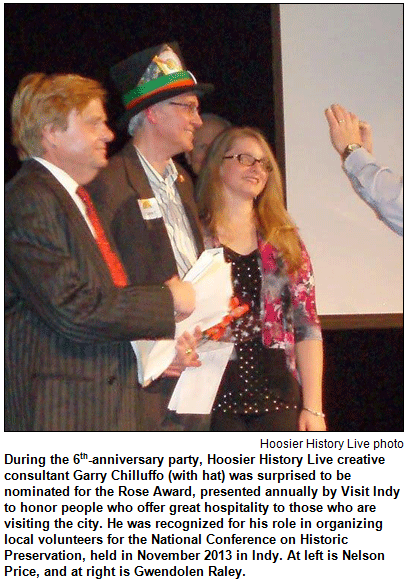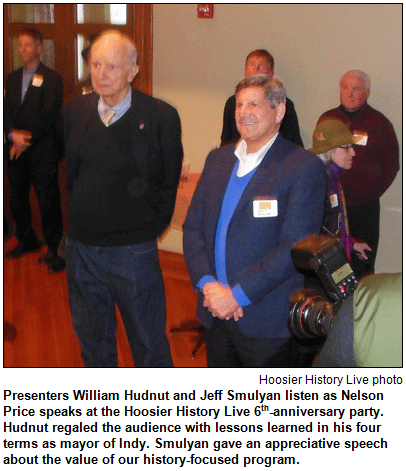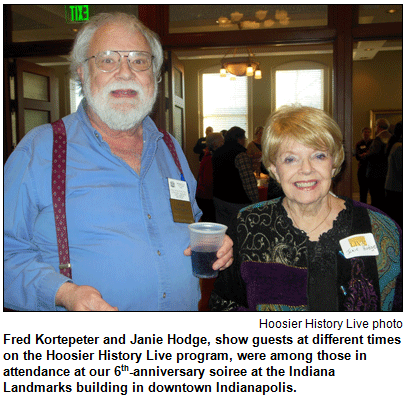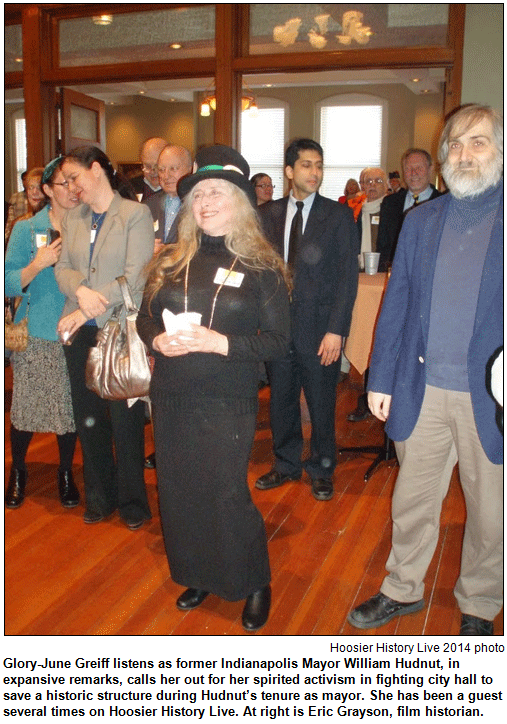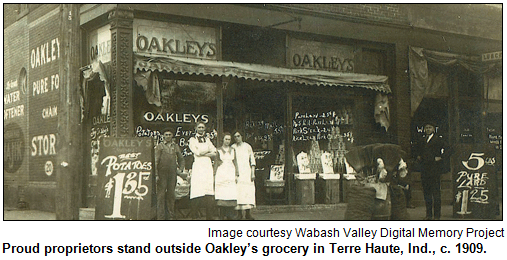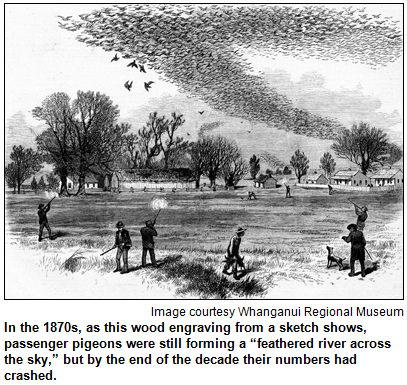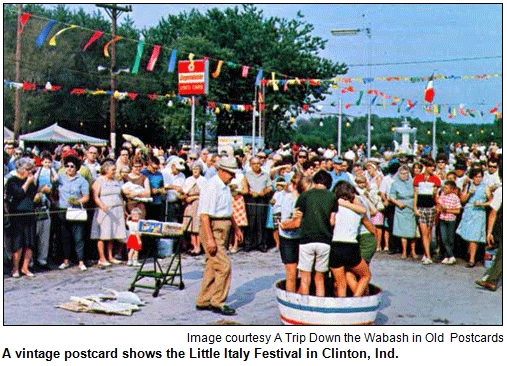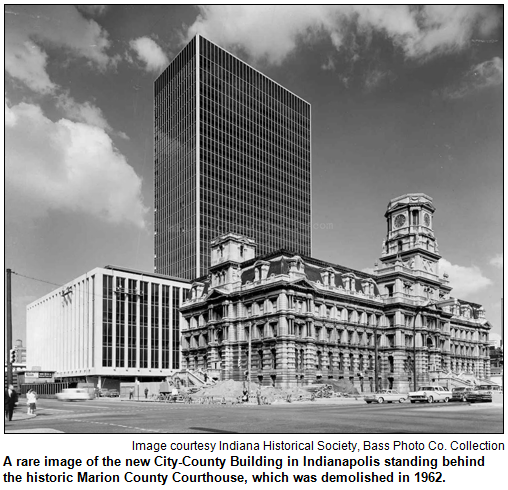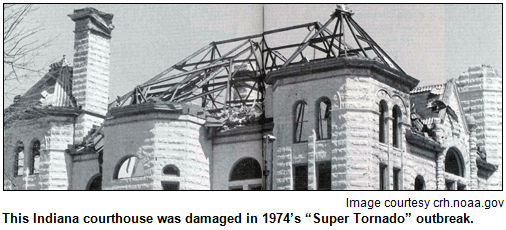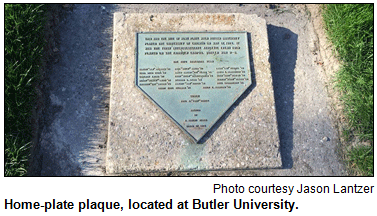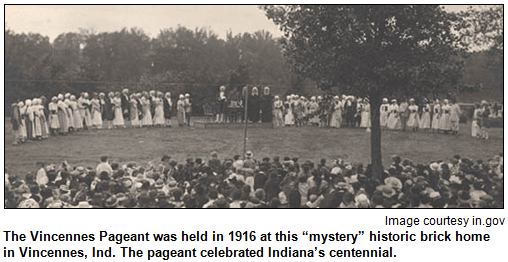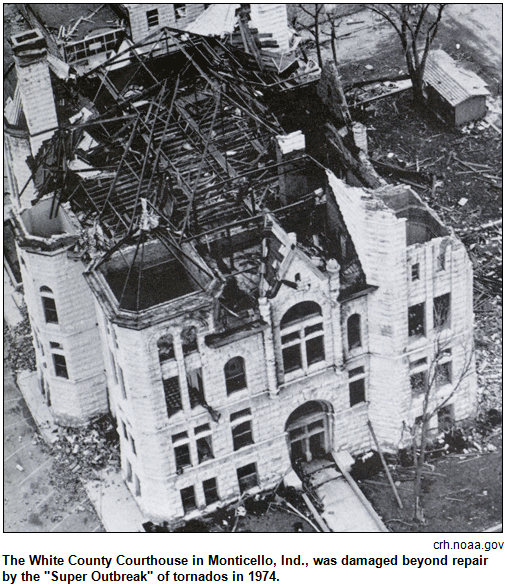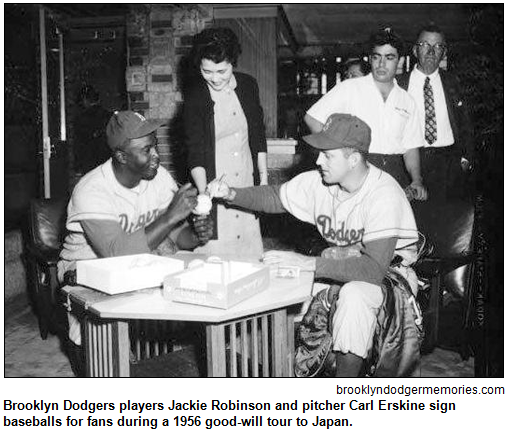Home | About us | Support the show | Contact us | Archives | Listen
2018 | 2017 | 2016 | 2015 | 2014 | 2013 | 2012 | 2011 | 2010 | 2009 | 2008
Archives - 2014
Shows with audio on this page:
- James Whitcomb Riley: before he was famous (Nov. 22, 2014)
- World War I and Indiana (Sept. 27, 2014)
- From family grocers to supermarkets (July 19, 2014)
- Historic women's groups (Oct. 25, 2014)
Lost cemeteries
 (Dec. 27, 2014 - encore presentation) - Lost cemeteries periodically make headlines across Indiana. Last year, Indianapolis police reported the discovery of a human jawbone in Garfield Park on the city's south side. The question arose: Could the historic park, the oldest public park in Indy, be the site of a lost cemetery?
(Dec. 27, 2014 - encore presentation) - Lost cemeteries periodically make headlines across Indiana. Last year, Indianapolis police reported the discovery of a human jawbone in Garfield Park on the city's south side. The question arose: Could the historic park, the oldest public park in Indy, be the site of a lost cemetery?
To explore lost or "nearly lost" cemeteries across the state - and issues associated with the forgotten or neglected burial grounds - Nelson is joined in studio by two expert guests in this encore presentation of a show that generated a lot of interest. Its original broadcast date was June 1, 2013.
The guests are Jeannie Regan-Dinius, cemetery and burial ground registry coordinator for the Indiana Department of Natural Resources, and pioneer-cemetery advocate Theresa Berghoff, an Elwood native who now lives in Indianapolis.
They share details about lost graveyards everywhere from Berne in Adams County and the Madison County community of Leisure to a site near Kessler Boulevard and Keystone Avenue on the north side of Indy, and Rome in southwestern Indiana.
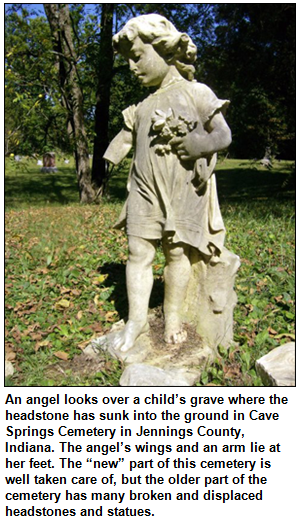 Nelson and his guests also explore Greenlawn Cemetery, which was founded in 1832 near White River and Kentucky Avenue in Indy. More than 1,600 pioneers had been buried in Greenlawn when, because the graveyard was prone to flooding, city leaders initiated a mass reburial more than 150 years ago with the creation of Crown Hill Cemetery, the country's third-largest private cemetery.
Nelson and his guests also explore Greenlawn Cemetery, which was founded in 1832 near White River and Kentucky Avenue in Indy. More than 1,600 pioneers had been buried in Greenlawn when, because the graveyard was prone to flooding, city leaders initiated a mass reburial more than 150 years ago with the creation of Crown Hill Cemetery, the country's third-largest private cemetery.
In 2008, our guest Jeannie Regan-Dinius helped oversee the move of 33 tombstones and remains of Hoosier pioneers from a mid-1800s cemetery in the Castleton area of Indy to Crown Hill. Shortly after the reburial - which was initiated to allow for the widening of I-69 near its interchange with I-465 - Jeannie joined Nelson for a Hoosier History Live show during our first year on the air.
During this show, Jeannie is joined by Theresa Berghoff, a cemetery restorer whose ancestors included Revolutionary and Civil War veterans buried in Wayne County. Theresa, who has helped restore tombstones, describes lost or "nearly lost" cemeteries in Richmond, and in the Augusta community in Pike Township on the northwest side of Indianapolis.
In Richmond, Maple Grove Cemetery, which apparently had been the site of more than 500 graves, was closed during the late 1800s. The cemetery's land then became part of Glen Miller Park. Many of Richmond's first settlers were buried in Maple Grove Cemetery.
Some "learn more" websites:
- Find a Grave.
- Hoosier Home's Marion County Cemeteries.
- Indiana Pioneers Restoration Project.
- Bill Shaw and R. Lee Kellems, Mystery of "Lost Cemetery" at Keystone and Kessler in Indianapolis.
- Encyclopedia of Indianapolis, Indianapolis Cemeteries.
- Inside Indiana Business, South Bend exploring development of 1830s Cemetery as a historic site.
Families and children: evolution of outreach
 (Dec. 20, 2014) - In Indiana today, you won't find places called the "Home for Friendless Women" or agencies known as "benevolent societies."
(Dec. 20, 2014) - In Indiana today, you won't find places called the "Home for Friendless Women" or agencies known as "benevolent societies."
Those were some of the ways, though, that outreach was handled with families, children and other Hoosiers in need more than a century ago. During the Civil War, some early social service organizations focused on helping widows and children of soldiers, whose deaths often left their families destitute.
To explore the evolution of outreach to Hoosiers in need, Nelson is joined in studio by guests from organizations whose heritage stretches back more than 100 years. Their names have changed - sometimes several times - as their approach to outreach has evolved.
Families First, a nonprofit that is generally considered to be the oldest social service agency in the state, traces its founding to Thanksgiving Day in 1835. That's when a group of early Indianapolis movers and shakers, including attorney/banker Calvin Fletcher and civic leader James Blake, met to share ideas about helping families who were poverty-stricken because of a lack of jobs at the city's earliest factories and mills.
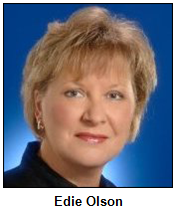 The civic leaders established the Indianapolis Benevolent Society, which, following various names changes in the nearly 180 years since then, is now known as Families First.
The civic leaders established the Indianapolis Benevolent Society, which, following various names changes in the nearly 180 years since then, is now known as Families First.
Our guests include Edie Olson, the current president and CEO of the Families First, an agency that now offers services ranging from family counseling to domestic-violence treatment and parent-education classes.
 She shares insights about the evolution of social outreach in central Indiana. So does Tina Cloer, president and CEO of the Children's Bureau.
She shares insights about the evolution of social outreach in central Indiana. So does Tina Cloer, president and CEO of the Children's Bureau.
It began in 1851 as the Widows and Orphans Friends' Society, spinning off from the Benevolent Society.
In 1880, according to a history of the Children's Bureau, "Across the state 700 children (were) living in county 'poor asylums,' a situation that many recognize as totally unacceptable."
To help, the organization had founded the first orphanage in Indianapolis, which opened at Capitol Avenue and 14th Street. The orphanage was built for $1,200 in 1855, according to a history of the Children's Bureau.
"In the late 1850s, the women of the Widows and Orphans Friends' Society were reluctant to accept 'tainted money' from theater folk," the bureau's history notes.
That attitude changed, though, in the late 1860s when local theaters offered to put on performances to benefit orphans. 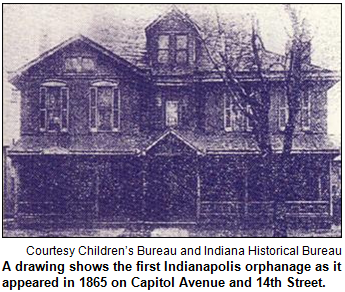 Also during the 1860s, a Home for Friendless Women was opened in the Hoosier capital.
Also during the 1860s, a Home for Friendless Women was opened in the Hoosier capital.
During the 1870s, financial turmoil followed the Civil War. That meant about 20 percent of the population in the Hoosier capital was on what were known as "relief rolls," according to a history of Families First put together by Pat Ankers of the Indianapolis Woman's Club.
Her history notes that, during the late 1870s, the Benevolent Society opened a "Friendly Inn" that provided meals and lodging to "transients" in exchange for work in a lumber yard.
The initial orphanage - called the Indianapolis Orphans' Asylum - moved in 1880 to a building at College Avenue and 13th Street in the Old Northside neighborhood. The three-story structure had served as the first home of Butler University, then known as Northwestern Christian College. The orphanage was closed in the early 1940s.
Today, the Children's Bureau of Indianapolis (the agency's name since 1961) offers a range of services, including an adoption recruitment program for families involved in the state's foster-care system. The Children's Bureau offices are in the Gene Glick Family Support Center, 1575 Dr. Martin Luther King Jr. St.
The benevolent society underwent a series of name changes, becoming known as the Family Service Association of Indianapolis. To avoid confusion with state agencies that have similar names, it became Families First in 2009. Funding comes from various sources, including United Way.
Learn more:
History Mystery
In addition to helping start the Indianapolis Benevolent Society, which evolved into today's Families First, civic leader Calvin Fletcher was a prominent banker and attorney in the earliest days of the Hoosier capital. 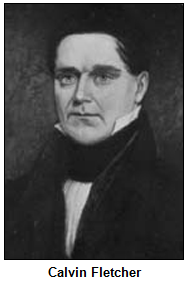 His extensive diaries are considered a trove for historians about daily life for decades in the young city.
His extensive diaries are considered a trove for historians about daily life for decades in the young city.
His family was associated with an Indianapolis-based bank that traced its origins to 1839 and had various names initially. During the late 1800s and early 1900s, descendants of the Fletcher family continued to be directly involved with the bank.
For decades during the 20th century, the bank was well-known by a four-letter abbreviation. The acronym was a household "word" in Indy during the 1970s and '80s. Eventually, though, the bank was absorbed by larger ones based out of state.
Question: What was the acronym during the 20th century for the bank once associated with the Fletchers?
The prize pack is a gift certificate to Ram Restaurant, two passes to the Indiana State Museum and two passes to Conner Prairie, courtesy of Visit Indy. The call-in phone number is (317) 788-3314, and please do not try to win the prize if you have won any prize from WICR during the past two months. Please do not call in to the show until Nelson has posed the question on the air.
Roadtrip: Albany with a real hardware store
Guest Roadtripper and public historian Glory-June Greiff suggests a trip to Albany (not New Albany!). It's northeast of Muncie on an elbow of S.R. 67, where it meets S.R. 28.
It's a quintessential small town that saw its heyday more than a hundred years ago during the Gas Boom, although it had been founded much earlier, in 1833.
 Glory says she always looks forward to a treat at Dairy Dream (not Dairy Queen!) which (in season) not only offers ice cream sodas, among other frosty treats, but quite a large variety of food beyond the usual drive-in fare. It's located on S.R. 67, which bypasses downtown.
Glory says she always looks forward to a treat at Dairy Dream (not Dairy Queen!) which (in season) not only offers ice cream sodas, among other frosty treats, but quite a large variety of food beyond the usual drive-in fare. It's located on S.R. 67, which bypasses downtown.
Glory continues: "Also on 67, so many times I passed a little stone cottage that I imagine was once upon a time a filling station but today is The Cottage at 112 W. Walnut. I finally stopped! A little family operation, they offer some of the most fabulous fudge I've ever tried - and believe me, I've tried a lot!"
She also recommends the "great coffee" at The Cottage and notes that they also offer their own fragrant candles.
But don't skip downtown. There's a real hardware store at 209 W. State (which is S.R. 28), called C.J.'s Hardware, where you can find exactly what you need. The building has a fascinating history, too; ask the owner about it!
Dime stores have almost disappeared these days, but the Albany Dime Store at 136 W. State lives on, and it even has the old-fashioned candy in glass cases that these sorts of places always had.
In winter the Dairy Dream is closed, but never fear, downtown you'll find Milton's Family Restaurant at 220 W. State Street, serving a variety of tasty down-home meals, perfect after your explorations.
Johnny Wooden: Hoosier hoops icon
 (Dec. 13, 2014) - How often are two statues erected in honor of the same person in one year?
(Dec. 13, 2014) - How often are two statues erected in honor of the same person in one year?
That's what happened in 2012 with the legacy of Martinsville native Johnny Wooden, often cited as the best college basketball coach in history.
The first statue of Wooden (who died in 2010 just a few months before his 100th birthday) is a bronze sculpture near Bankers Life Fieldhouse in downtown Indy. The other is outside Pauley Pavilion at UCLA, where Wooden coached the Bruins to 10 NCAA championships in 12 years, one of the most astounding dynasties in all of sports.
Far beyond sports, Wooden became known as a motivator and folk philosopher because of his "Pyramid of Success," used as a blueprint by thousands of Americans.
Before all of that, Wooden was an outstanding basketball player at Martinsville High School and at Purdue University. In fact, he became the first person named to the Naismith Memorial Basketball Hall of Fame as both a player and a coach.
To explore the life and impact of this remarkable Hoosier, Nelson is joined in studio by three guests:
- Barbara Olenyik Morrow, the author of a new book, Hardwood Glory: A Life of John Wooden (Indiana Historical Society Press) that explores his Hoosier roots.
- Jim Powers, a retired coach in South Bend who, as a star player during the 1940s, was coached both in high school (South Bend Central High School) and college (Indiana State University) by Wooden. Coach Powers, who is 89, has been inducted into the Indiana Basketball Hall of Fame.
 And Mark Montieth, a former sportswriter for The Indianapolis Star who hosts "One on One," a popular radio show featuring sports legends, on 1070/107.5 WFNI.
And Mark Montieth, a former sportswriter for The Indianapolis Star who hosts "One on One," a popular radio show featuring sports legends, on 1070/107.5 WFNI.
"The respect his former players had for him was unprecedented, in my opinion," Mark says about Wooden, whom he interviewed. In addition to hosting his radio show, Mark writes for pacers.com.
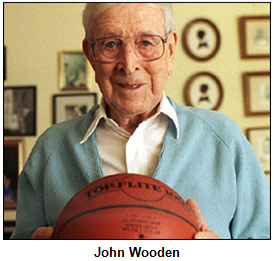 Our guest Barb Morrow, who is based in the northeastern Indiana town of Auburn, has interviewed Wooden's daughter, in addition to former players and others who knew the Hoosier icon.
Our guest Barb Morrow, who is based in the northeastern Indiana town of Auburn, has interviewed Wooden's daughter, in addition to former players and others who knew the Hoosier icon.
In her book, she explores how Wooden's long life intersected with those of other famous Hoosiers - from John Dillinger to former IU coach Branch McCracken - as well as the social history that unfolded during his era.
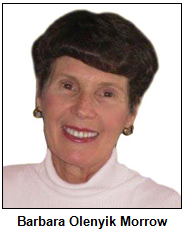 For example, she explores Wooden's progressive views on race relations, including his decision in 1948 while coaching at Indiana State (then known as Indiana State Teachers College) to play Clarence Walker, an African-American from East Chicago, in a post-season tournament. She calls that "a history-making move that paved the way for other blacks to play in national tournaments."
For example, she explores Wooden's progressive views on race relations, including his decision in 1948 while coaching at Indiana State (then known as Indiana State Teachers College) to play Clarence Walker, an African-American from East Chicago, in a post-season tournament. She calls that "a history-making move that paved the way for other blacks to play in national tournaments."
During our show, we also clarify some misconceptions about Wooden's life, as well as explore little-known or often-overlooked episodes. Regarding the latter, our guest Mark Montieth points out that Wooden's pro career as a player often has been neglected in discussions of his life. After graduating from Purdue, Wooden played for the first truly pro team in Indianapolis, the Kautskys, during the 1930s.
Our guest Jim Powers, who says, "I am so proud to have been one of his 'boys'," cites as a favorite saying associated with his mentor: "Make each day your masterpiece."
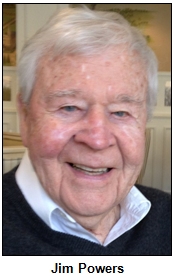 A sampling of other homespun wisdom Wooden passed along to the world included: "Make friendship a fine art" and "Build a shelter against a rainy day."
A sampling of other homespun wisdom Wooden passed along to the world included: "Make friendship a fine art" and "Build a shelter against a rainy day."
Wooden credited those nuggets to a seven-point creed that his father wrote on a crisp white card that Wooden carried in his wallet daily.
 In turn, his "Pyramid of Success" features "bricks" at the base of the pyramid such as "Industriousness" and "Enthusiasm"; they are topped by "Faith" and "Patience," among other qualities.
In turn, his "Pyramid of Success" features "bricks" at the base of the pyramid such as "Industriousness" and "Enthusiasm"; they are topped by "Faith" and "Patience," among other qualities.
The future motivational icon grew up in a Morgan County farmhouse without electricity or indoor plumbing. During his high school years, his father quit farming because of financial pressures.
From those humble beginnings, John Wooden went on to coach UCLA not only to 10 championships, but to a history-making winning streak that lasted 88 games. The streak ended in 1974, one year before Wooden's retirement as coach.
His roster of players during his UCLA heyday included future pro superstars Lew Alcindor (who later became Kareem Abdul-Jabbar) and Bill Walton, who clashed with Wooden over the length of his hair - but who always respected the coach and expressed appreciation in later years for what he taught on and off the basketball court.
Among those in subsequent generations who say they were influenced by Wooden's techniques is the native Hoosier now serving as UCLA's coach. Steve Alford, the former New Castle and IU star player, has written the foreword to Hardwood Glory.
Learn more:
- Watch John Wooden: Values, Victory, and Peace of Mind
- Pioneers of the Hardwood, by Todd Gould.
History Mystery
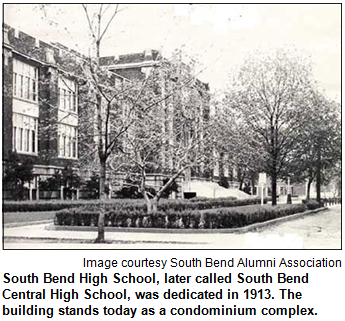 Hoosiers who played for Coach Johnny Wooden's championship teams at UCLA included a South Bend native who later became a popular TV actor. Born in South Bend in 1946, he was an outstanding player at South Bend Central High School, where he was coached by our guest Jim Powers.
Hoosiers who played for Coach Johnny Wooden's championship teams at UCLA included a South Bend native who later became a popular TV actor. Born in South Bend in 1946, he was an outstanding player at South Bend Central High School, where he was coached by our guest Jim Powers.
From 1966 to 1968, he played for Wooden at UCLA, where his teammates included Lew Alcindor (later known as Kareem Abdul-Jabbar). During the years he played for UCLA, the Bruins won two NCAA national championships.
As a TV actor, the South Bend native is best remembered for his role as a police officer in a critically acclaimed TV series during the 1980s. He was nominated for an Emmy Award for his role in the program; it was known for intertwined story lines, some of which continued over several episodes, then unusual for a TV series.
Question: Who is the basketball star-turned-TV actor from South Bend?
The prize pack includes a signed copy of the book the book Hardwood Glory: A Life of John Wooden, courtesy of author Barb Olenyik Morrow, and four passes to the NCAA Hall of Champions and four passes to the Indiana History Center, courtesy of Visit Indy.
Roadtrip: Big high school gym contest in Indiana
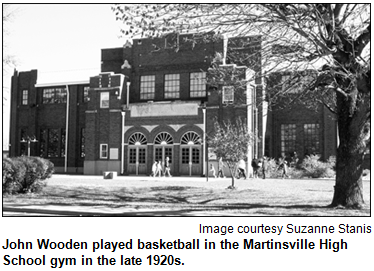 Guest Roadtripper Suzanne Stanis of Indiana Landmarks suggests a trip to Martinsville in Morgan County to see what was billed in 1924 as "The Biggest Gym in the World."
Guest Roadtripper Suzanne Stanis of Indiana Landmarks suggests a trip to Martinsville in Morgan County to see what was billed in 1924 as "The Biggest Gym in the World."
With more than 5,000 seats, the gym could handle the entire population of Martinsville, which numbered 4,895 in 1920 - with room to spare.
The Artesians' enormous home went on to be dwarfed by other gyms, including the 9,000-plus-seat New Castle Field House and the 8,000-plus-seat Anderson Wigwam, but the Martinsville shrine to Hoosier Hysteria remains.
Today the Glenn Curtis Memorial Gym, named in honor of the Martinsville High School coach who brought home three state basketball championships, is part of West Middle School.
Rare movies with Indiana connections + Danville history
(Dec. 6, 2014 - encore presentations) - As a treat for listeners who missed some of the most popular shows in our Hoosier History Live archives, we will broadcast two of them, back-to-back. The shows, both of which are 30 minutes, typify how we cover the waterfront of Indiana topics:
Rare movies with Indiana connections
 During this show, don't expect a discussion of Hoosiers (1986), Breaking Away (1979) or Rudy (1993), movies with well-known links to the Hoosier state.
During this show, don't expect a discussion of Hoosiers (1986), Breaking Away (1979) or Rudy (1993), movies with well-known links to the Hoosier state.
Dozens of more-obscure films, both silent movies and talkies, also have major connections to Indiana because of their topics, settings, cast or directors.
To explore these movies, some of which are in danger of being "lost," Nelson is joined in studio by Indianapolis-based film historian and collector Eric Grayson in this show that originally aired on Nov. 27, 2010.
Eric's vast collection of rare 16mm and 35mm films includes movies based on bestselling books by Hoosier naturalist Gene Stratton-Porter, including a 1934 movie version of her masterpiece A Girl of the Limberlost.
Eric also shares insights about a movie he hosts for public screenings: The Great Dan Patch (1949), a biography of the fabled harness racing horse born in Oxford, Ind. During the late 1800s and early 1900s, Dan Patch became a sensation at racetracks because of his amazing speed and stamina.
Also during our show, Eric and Nelson explore silent movies starring Fort Wayne native Carole Lombard. The glamorous star, who later married Clark Gable, is far better known for her sound movies of the 1930s and early '40s. But Eric owns rare prints of Lombard's earliest movies, silents such as Smith's Pony (1927) and Run, Girl, Run (1928).
Other movies discussed during the show include The Hoosier Schoolmaster (1935), a movie based on a bestselling novel by Vevay native Edward Eggleston. He created the storyline from the experiences of his brother, who had been a school teacher in 19th-century Indiana.
Danville town history
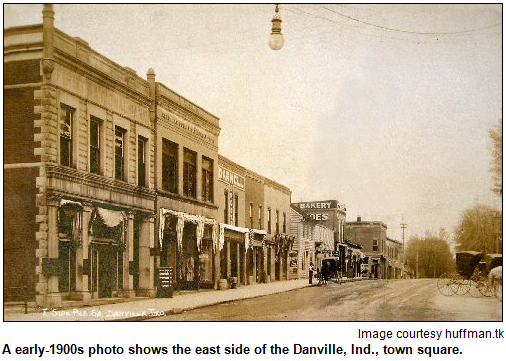 For the second encore show (original air date: March 6, 2010), Nelson is joined in studio by Danville lawyer and civic leader Jeff Baldwin, the author of Danville (Arcadia, 2009), a visual history of the town in Hendricks County.
For the second encore show (original air date: March 6, 2010), Nelson is joined in studio by Danville lawyer and civic leader Jeff Baldwin, the author of Danville (Arcadia, 2009), a visual history of the town in Hendricks County.
A lifelong Danville resident, Jeff notes that the town was devastated by a 1948 tornado. Evidence of its destruction is still being discovered by residents when they dig in many yards and unearth shards of glass.
On a more lighthearted topic, Jeff points out that Danville once found itself in the national spotlight when a mysterious "Danville Turkey" showed up in the middle of Main Street and stopped traffic by strutting back and forth for days. The turkey could not be shot because it was not in season. As a protected animal, it also could not be adopted.
During the show, we also explore the bygone Central Normal College, which specialized in training teachers. According to Jeff's book, at the turn of the last century, Central Normal had trained more teachers than IU, Purdue, and the forerunners of Ball State and Indiana State combined. Central Normal closed in 1951.
Regarding popular current destinations for visitors to Danville, there's the Mayberry Café, a diner that pays tribute to the classic TV series The Andy Griffith Show.
Jennings County and Vernon
 (Nov. 29, 2014) - A county and its largest town in southeastern Indiana may have short lists of residents, but their histories are deep, rich and on full display to this day.
(Nov. 29, 2014) - A county and its largest town in southeastern Indiana may have short lists of residents, but their histories are deep, rich and on full display to this day.
In scenic Jennings County, the entire town of Vernon - the state's smallest county seat - is listed as a historic district on the National Register of Historic Places.
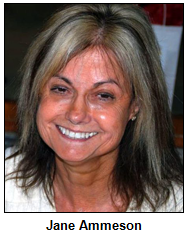 "More than 100 of its buildings date back to the 1800s, which is remarkable in a town with a population of less than 400," travel writer Jane Ammeson has written of Vernon.
"More than 100 of its buildings date back to the 1800s, which is remarkable in a town with a population of less than 400," travel writer Jane Ammeson has written of Vernon.
Its rich heritage is intertwined with a raid during the Civil War, the Underground Railroad, paintings by acclaimed artist T.C. Steele, railroad history, a courthouse square and buildings that date to the 1820s and '30s.
Noting that Vernon was platted in 1815, a year before Indiana even achieved statehood, Jane writes that the town "is considered one of the best examples of a mid-19th-century Indiana community."
She joins Nelson in studio to share insights about Vernon and its home county, which is located about halfway between Columbus and Madison.
 They also are joined by Dan Wright, the mayor of Vernon; he has the distinction of being the state's only elected mayor of a town. (All of the other elected mayors are affiliated with cities.)
They also are joined by Dan Wright, the mayor of Vernon; he has the distinction of being the state's only elected mayor of a town. (All of the other elected mayors are affiliated with cities.)
In 1863, Jennings County was in the path of Gen. John Hunt Morgan and his band of Confederate marauders as they made their way across southern Indiana. Pillaging and looting during a journey that became known as "Morgan's Raid," they demanded that the town of Vernon surrender. Instead, residents refused and deceived Morgan into altering his destructive path.
Civil War re-enactments are staged to this day, particularly during Vernon's annual Sassafras Tea Festival & Civil War Living History.
Other history facts we will explore during the show:
- Jennings County became the site of the first elevated railroad and underpass west of the Alleghenies. The historic Madison & Indianapolis Railroad came through the county.
 In 1921, Vernon was the setting for the state's first all-female jury trial.
In 1921, Vernon was the setting for the state's first all-female jury trial.- The Jennings County Courthouse dates to 1859.
Several of the streetscapes in Vernon - and rural scenes in Jennings County - that were depicted in paintings by Steele during the 1880s and '90s look unchanged today. Paintings by Steele, arguably Indiana's best-known artist, include Street in Vernon (1886) and Hills of Vernon (1894).
In his paintings, Steele also depicted the Muscatatuck River in Jennings County. Jennings County also is the home of historic Muscatatuck Park, which has nine miles of trails.
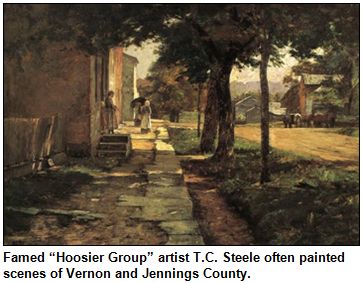 The origin of the name "Muscatatuck" apparently is unclear, but the inspiration for Vernon is undisputed. The town's name is derived from Mount Vernon, the stately home of George Washington. Vernon was founded in 1815, so Washington's presidency would have been a vivid memory for the earliest residents.
The origin of the name "Muscatatuck" apparently is unclear, but the inspiration for Vernon is undisputed. The town's name is derived from Mount Vernon, the stately home of George Washington. Vernon was founded in 1815, so Washington's presidency would have been a vivid memory for the earliest residents.
Famous natives of Jennings County included Jessamyn West (1902-1984), the author of the bestseller The Friendly Persuasion (1945). Like many of her books, it was a fictional version of the lives of her Civil War-era ancestors, who were Quakers in southern Indiana. When she was a child, Jessamyn West's family moved to southern California.
So did the Quaker family of Hannah Milhous Nixon, who later became the mother of Richard Nixon. Jessamyn West was the second cousin of Richard Nixon.
Learn more:
Roadtrips: Christmas at the Capital, Statehood Day and Festival of Trees
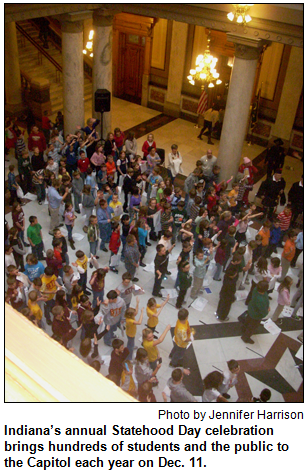 Jim Corridan of Indiana State Archives suggests we join Gov. and Mrs. Pence, as well as Lt. Gov. Ellspermann, on Dec. 5 and 6 for Christmas at the Capitol. From 5:30 to 6:30 p.m. on Friday the 5th and 1 to 3 p.m. on Saturday the 6th, the Friends of the Indiana State Archives are hosting youth choirs from across the State to sing in the Capitol.
Jim Corridan of Indiana State Archives suggests we join Gov. and Mrs. Pence, as well as Lt. Gov. Ellspermann, on Dec. 5 and 6 for Christmas at the Capitol. From 5:30 to 6:30 p.m. on Friday the 5th and 1 to 3 p.m. on Saturday the 6th, the Friends of the Indiana State Archives are hosting youth choirs from across the State to sing in the Capitol.
The event is free and open to the public, and the rotunda will be newly decorated for the holidays.
And the next week is Indiana's 198th birthday. On Thursday, Dec. 11, the public is invited to attend the annual Statehood Day celebrations in the Capitol building.
The event includes presentations by members of the legislature, judiciary, Gov. Pence, and the placing of Indiana's Constitutions on public display in the Statehouse rotunda. The hourlong event starts at noon on the 11th.
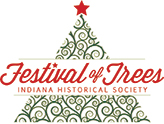 And Amy Lamb of the Indiana Historical Society suggests a Roadtrip to the new Festival of Trees, a winter wonderland of 25 exquisitely decorated trees open now through Jan. 3.
And Amy Lamb of the Indiana Historical Society suggests a Roadtrip to the new Festival of Trees, a winter wonderland of 25 exquisitely decorated trees open now through Jan. 3.
The popular A Christmas Story living room is back, allowing you to step right into a classic movie scene. You can have your photo taken next to the famous leg lamp (in a pink bunny suit, if desired), or visit the new holiday selfie station.
Other daily activities include a singalong from 1 to 2 p.m. in the Cole Porter Room. Every Saturday from noon to 4 p.m., drop by to create a special handmade craft to take home with you, or get a special winter face painting. Additional weekend programming will include film screenings, a visit from a vintage Santa, painting and much more.
IHS also will offer three free admission days as holiday gifts to the community. Visit on Dec. 6 for the 12th annual Holiday Author Fair (noon to 4 p.m.), on Statehood Day (Thursday, Dec. 11) or on Saturday, Dec. 20, when you can record a video memory relating to L.S. Ayres and Company that may become part of You Are There: That Ayres Look next spring.
In addition to IHS's normal hours of Tuesday through Saturday, 10 a.m. to 5 p.m., Sunday hours of noon to 5 p.m. have been added between Thanksgiving and New Year's Day. For more information, including specific weekend offerings, call (317) 232-1882 or visit indianahistory.org.
History Mystery
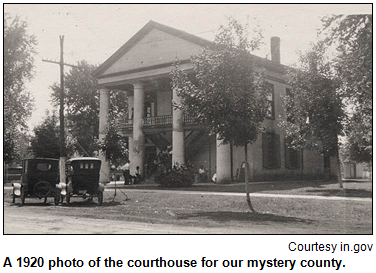 Even though Vernon in Jennings County is the smallest town in the state to be a county seat, another county has the distinction of being Indiana's smallest. This mystery county is the smallest of the state's 92 counties both in population and in size.
Even though Vernon in Jennings County is the smallest town in the state to be a county seat, another county has the distinction of being Indiana's smallest. This mystery county is the smallest of the state's 92 counties both in population and in size.
Hint: Like Jennings County, it also is in southeastern Indiana.
Question: What is the county?
The prize pack includes four passes to the NCAA Hall of Champions and a gift certificate to Le Peep Restaurant, courtesy of Visit Indy, and four admissions to the Indiana History Center, courtesy of the Indiana Historical Society.
James Whitcomb Riley: before he was famous
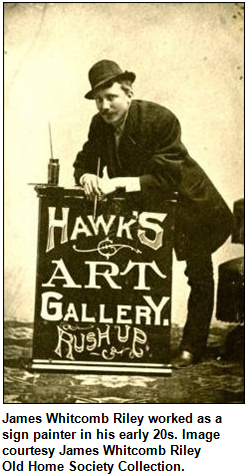 (Nov. 22, 2014) - Long before the "Hoosier Poet" became known across the country as a spellbinding entertainer, he had a colorful life. That was so even before young James Whitcomb Riley worked as a musician and sign painter on the traveling medicine show circuit, which Hoosier History Live will spotlight along with other, captivating aspects of the famous Hoosier born in Greenfield in 1849.
(Nov. 22, 2014) - Long before the "Hoosier Poet" became known across the country as a spellbinding entertainer, he had a colorful life. That was so even before young James Whitcomb Riley worked as a musician and sign painter on the traveling medicine show circuit, which Hoosier History Live will spotlight along with other, captivating aspects of the famous Hoosier born in Greenfield in 1849.
We explore Riley's complicated relationship with his father, a Civil War veteran; his role in a hoax about a poem described as the long-lost work of Edgar Allen Poe; his schooling, childhood antics and sorrows; the visit of a Confederate soldier and a haystack of other aspects of the early life of the Hoosier who had written more than 1,000 poems when he died in 1916.
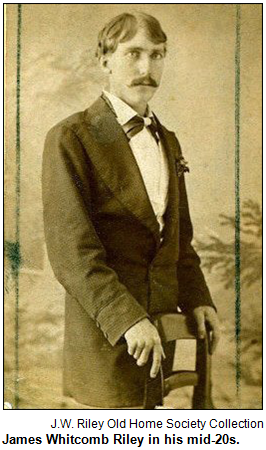 Nelson is joined in studio by three guests who have immersed themselves in Riley's pre-fame life. They include historic re-enactor Danny Russel, a popular entertainer/educator who periodically portrays Riley during our show as he shares some of Riley's poems, both obscure and famous.
Nelson is joined in studio by three guests who have immersed themselves in Riley's pre-fame life. They include historic re-enactor Danny Russel, a popular entertainer/educator who periodically portrays Riley during our show as he shares some of Riley's poems, both obscure and famous.
Our guests also include two Hancock County residents deeply involved with the James Whitcomb Riley Boyhood Home in Greenfield. They are Brigette Cook Jones, president of the Hancock County Historical Society, and Gwen Betor, past president of the Riley Old Home Society. (Brigette is secretary of the society). Both Brigette and Gwen are longtime docents at the home Riley's father built on the Old National Road (now U.S. 40).
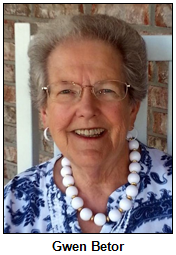 As a boy, Riley became captivated by the circus, imitated entertainers and once was given a flying squirrel that he featured in his routines - before things came to a sad end. Nelson and his guests share insights about that episode during our show, as well as insights about the series of jobs Riley attempted before he became a celebrity. They even included work as a Bible salesman and a shoe clerk.
As a boy, Riley became captivated by the circus, imitated entertainers and once was given a flying squirrel that he featured in his routines - before things came to a sad end. Nelson and his guests share insights about that episode during our show, as well as insights about the series of jobs Riley attempted before he became a celebrity. They even included work as a Bible salesman and a shoe clerk.
So prepare for revelations, even if you grew up keenly aware of Riley's classic poems - such as When the Frost Is On the Punkin - and his national impact.
Expect some of our show topics to be humorous, such as Riley's desperate attempts as a boy to remove his freckles and what happened when he received his first pair of long pants.
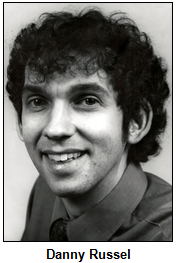 Other topics are poignant, including the end of his engagements to two women. His relationship with one fiancée ended in connection with his loss of a newspaper job in Anderson. And that's related to the "Poe poem," which was revealed as a fraud.
Other topics are poignant, including the end of his engagements to two women. His relationship with one fiancée ended in connection with his loss of a newspaper job in Anderson. And that's related to the "Poe poem," which was revealed as a fraud.
"People don't realize how much he struggled before he become such a huge national celebrity," our guest Brigette Cook Jones says.
 History trivia: Our guest Danny Russel portrays other historic figures with Indiana connections, including Abraham Lincoln. And Brigette Cook Jones joined us in October 2011 for a show about the real Hoosier who inspired Riley's classic poem Little Orphant Annie.
History trivia: Our guest Danny Russel portrays other historic figures with Indiana connections, including Abraham Lincoln. And Brigette Cook Jones joined us in October 2011 for a show about the real Hoosier who inspired Riley's classic poem Little Orphant Annie.
Learn more:
- Hoosier History Live Oct. 1, 2011 show, "The real-life Little Orphant Annie".
- Riley's hoax poem.
- James Whitcomb Riley Old Home and Museum.
- Elizabeth J. Van Allen, 1999, "James Whitcomb Riley: A Life".
Roadtrip: Evansville African American Museum
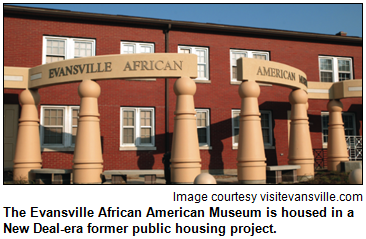 Guest Roadtripper Kisha Tandy of the Indiana State Museum suggests the Evansville African American Museum as a Roadtrip.
Guest Roadtripper Kisha Tandy of the Indiana State Museum suggests the Evansville African American Museum as a Roadtrip.
The museum is located in Lincoln Gardens, a "New Deal" public housing project built in 1938. Lincoln Gardens now houses the museum; it is located in the African American community of Baptisttown.
Similar to Lockefield Gardens, which was constructed and completed in Indianapolis between 1935 and 1938, and the Indiana Avenue neighborhood in Indianapolis, Lincoln Gardens was a largely thriving, self-sufficient community.
The Evansville African American Museum features panels presenting the history of Baptisttown and a wonderful display of artifacts related to Lincoln High School, which served African American students 1928-1962 and is now Lincoln Elementary school. The museum also features traveling exhibits.
Sondra Matthews, founder of Our Times newspaper in Evansville, led the effort to establish the museum in 2007.
History Mystery
 After he became famous across the country, James Whitcomb Riley befriended many other notable Hoosiers, including fellow literary greats.
After he became famous across the country, James Whitcomb Riley befriended many other notable Hoosiers, including fellow literary greats.
In 1893, another native Hoosier who was enjoying national attention joined the "Hoosier Poet" for a celebrity appearance at the World's Fair - the Columbian Exposition - in Chicago.
The other notable Hoosier was the author of a historical novel that became a runaway national bestseller. He also had claims to fame in several other endeavors, including military exploits. At the World's Fair, he joined Riley in the spotlight when "Indiana Day" was celebrated.
The other Hoosier literary figure even had served as the governor of a new territory of the United States and as a diplomat.
Question: Who was he?
The call-in phone number is (317) 788-3314, and please do not try to win the prize if you have won any prize from WICR during the past two months. Please do not call into the show until Nelson has posed the question on the air.
The prize pack includes four passes to the Indianapolis Zoo and four passes to the NCAA Hall of Champions, courtesy of Visit Indy, and four admissions to the Indiana History Center, courtesy of the Indiana Historical Society.
Epidemics in Indiana history
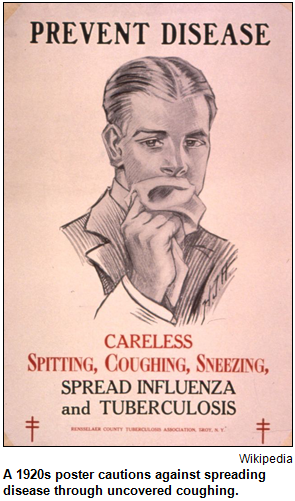 (Nov. 15, 2014) - Amid the intense focus on Ebola and widespread concerns (or needless panic, according to many experts) about the possibilities of an epidemic in this country, Hoosier History Live explores epidemics in Indiana's past.
(Nov. 15, 2014) - Amid the intense focus on Ebola and widespread concerns (or needless panic, according to many experts) about the possibilities of an epidemic in this country, Hoosier History Live explores epidemics in Indiana's past.
Did you know a malaria epidemic swept Indianapolis just as the Hoosier capital was getting under way in the 1820s? Some doctors blamed the epidemic on the swamps and marshland that were on the new city's site, chosen because of its central location.
With two Indianapolis-based medical historians as studio guests, Nelson explores the impact of that early epidemic, plus others that affected not only Indiana, but places far beyond our borders.
The influenza epidemic of 1918, a cholera epidemic of the mid-1800s, the polio scare that prevailed for most of the first half of the 20th century and the AIDS epidemic that caused panic during the 1980s and '90s are among the crises explored during our show.
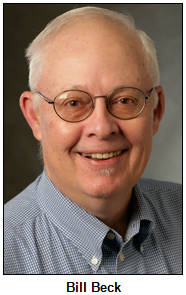 We also explore the devastating impact of tuberculosis during the late 1800 and early 1900s - even though "epidemic" may not be the most accurate term to describe the widespread TB cases. (Tune in to the show for an explanation.)
We also explore the devastating impact of tuberculosis during the late 1800 and early 1900s - even though "epidemic" may not be the most accurate term to describe the widespread TB cases. (Tune in to the show for an explanation.)
And we explore episodes of panic over potential epidemics, including a swine flu scare in 1976, when a vaccination program encountered various public relations problems. Fears of an epidemic proved unfounded.
Nelson is joined in studio by:
- Dr. William McNiece, president of the Marion County Historical Society. Dr. McNiece is an anesthesiologist at IU Health's Riley Hospital for Children.
- Bill Beck, an author and historian who has written dozens of business and institutional history books, including histories of Indiana hospitals. The founder of Lakeside Writers' Group, he is treasurer of the Marion County Historical Society.
In July 2009. Bill Beck was a Hoosier History Live guest for a show about the 1918 influenza epidemic and its Indiana impact.  In July 2012, we explored various aspects of the polio epidemic, including the involvement of Eli Lilly & Co. in distributing the polio vaccine during the 1950s.
In July 2012, we explored various aspects of the polio epidemic, including the involvement of Eli Lilly & Co. in distributing the polio vaccine during the 1950s.
Now we broaden the focus and explore those epidemics, as well as several others.
In many Indiana towns, outbreaks of cholera during the 1830s, '40s and subsequent decades caused extreme panic.
Take the town of Aurora on the Ohio River, which had a population of 2,000 in 1849. Fourteen deaths from cholera were reported in one day, according to a historical account supplied by Dr. McNiece, an associate professor at the IU School of Medicine. 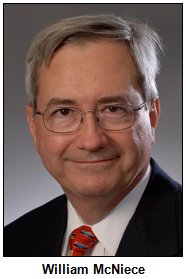 During the next three weeks in 1849, 51 other victims died in Aurora. As a result, 1,600 of the 2,000 residents fled the town.
During the next three weeks in 1849, 51 other victims died in Aurora. As a result, 1,600 of the 2,000 residents fled the town.
Also in 1849, the town of Madison reacted to outbreaks of cholera by creating a board of health with the power to quarantine residents and to impose fines on people who brought the disease into the city.
Decades before that, a malaria epidemic swept Indianapolis in 1821 just as the brand-new city was being developed on lowlands and swamps. A burial site for pioneers who were victims of the epidemic was called Plague Cemetery; it was located on the current site of Indiana University-Purdue University at Indianapolis. In recent years, a marker has been installed on the historic Plague Cemetery site - which, ironically, is near a complex of classroom buildings for IU medical students.
Some of the historic epidemics - including the reactions to AIDS beginning in the early 1980s - have involved widespread misinformation about the ways the diseases and disorders can be transmitted.
Other epidemics, including polio, were brought under control with the development of vaccines.
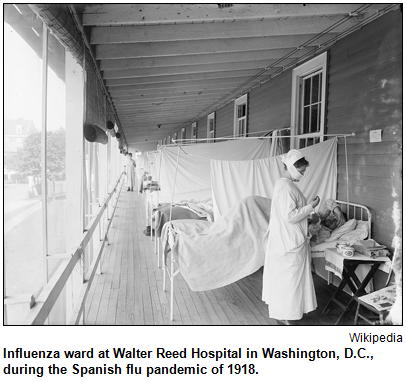 According to the Indiana Historical Society, the peak years for polio cases in the Hoosier state were 1949 and 1954, with, respectively, 1,147 and 1,448 new cases reported. In 1955, Dr. Jonas Salk developed the polio vaccine.
According to the Indiana Historical Society, the peak years for polio cases in the Hoosier state were 1949 and 1954, with, respectively, 1,147 and 1,448 new cases reported. In 1955, Dr. Jonas Salk developed the polio vaccine.
The 1918 influenza epidemic, which ravaged North America and Europe, is considered to have been the country's worst flu epidemic. It coincided with - then persisted after - World War I. Both of our guests have presented programs about that horrific epidemic at the Indiana Medical History Museum.
Even though Ebola cases primarily have been confined to West Africa, the Indiana State Department of Health has opened a 24-hour call center to answer questions from the public. The phone number is (877) 826-0011.
Learn more:
- Walter Daly, M.D., Black Cholera comes to Central Valley of America in 19th Century.
- Indianapolis Star, Flu lessons from history.
- Hoosier History Live show, Polio epidemic during the 1940s and '50s.
- Centers for Disease Control and Prevention.
- National Archives, The influenza epidemic of 1918.
- The Great Pandemic.
- 1821 Plague Cemetery, Indianapolis.
- Damien Center.
Roadtrip: Linden, Ind.
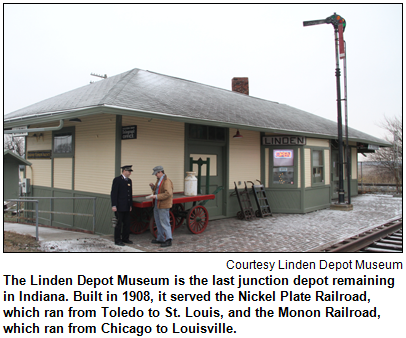 Guest Roadtripper and film historian Eric Grayson tells us, "I'm suggesting a visit to the historic tiny town of Linden, Ind., which is on 231 between Crawfordsville and Lafayette and was platted in 1851."
Guest Roadtripper and film historian Eric Grayson tells us, "I'm suggesting a visit to the historic tiny town of Linden, Ind., which is on 231 between Crawfordsville and Lafayette and was platted in 1851."
Eric continues: "Linden has a railroad depot museum, the Linden Depot Museum, which preserves a 1908 depot intact, with interactive history displays, including a telegraph and several model trains. The museum is famous for its Christmas decorations, and look for a visit from Santa coming up next month."
Linden also has a Carnegie Public Library still in use, and one of Eric's favorite vintage ice cream stands, the Lindy Freeze. It is one of those independent ice cream places from the 1950s that is famous for its Peanut Butter Mountain sundae.
Lindy Freeze is right next to Linden Park, and if you're very lucky, the railroad won't have cleared the brush in October, when several kinds of butterflies use the park as a staging area on their migration southward.
History Mystery
 In 1892, the country mourned when First Lady Caroline Scott Harrison died of tuberculosis in the White House.
In 1892, the country mourned when First Lady Caroline Scott Harrison died of tuberculosis in the White House.
One of the highest-profile victims of the disease in the 1890s, Mrs. Harrison is buried at Crown Hill Cemetery in Indianapolis. Her husband, former President Benjamin Harrison, also is buried at Crown Hill.
A few years after Mrs. Harrison's tragic death, an Indiana chapter of a national organization was founded and named in her honor. To this day, the chapter carries her name. The national organization is one that she helped organize.
Question: What is the organization?
The prize pack is a gift certificate to LePeep Restaurant and two passes to the Benjamin Harrison Presidential Site, courtesy of Visit Indy, and four admissions to the Indiana History Center, courtesy of the Indiana Historical Society.
Kidnapping of free blacks in early Indiana
(Nov. 8, 2014) - After Indiana became a state in 1816, our first governor called attention to a problem: the kidnapping of free African-Americans, who were taken to the South and sold as slaves.
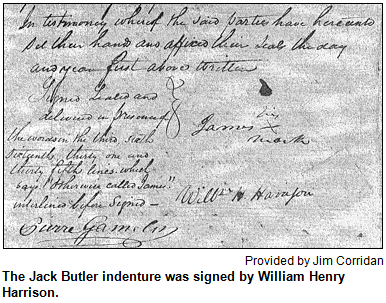 This problem - although seldom mentioned today - was serious and pervasive enough that the state's first governor, Jonathan Jennings, felt compelled to urge legislation to prohibit it.
This problem - although seldom mentioned today - was serious and pervasive enough that the state's first governor, Jonathan Jennings, felt compelled to urge legislation to prohibit it.
To explore the kidnapping problem - sometimes called "man stealing" in the 1800s - Nelson is joined in studio by two guests who share stories of African-American families who were affected. Nelson's guests are:
- Jim Corridan, who has been the state's archivist and director of the Indiana Commission on Public Records since 2005. For four years, Jim also served as deputy state librarian; he chairs the Indiana Historic Records Advisory Board.
- Georgia Cravey, an Indianapolis-based historic researcher and scholar. She is a former reference librarian for the Indianapolis Public Library.
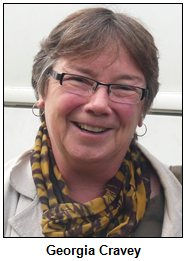 Among the kidnapped African Americans were members of a family who had lived in Vincennes. Jim Corridan will explain what happened to Jack Butler, his pregnant wife and six children, who were kidnapped after they moved to Illinois from a Knox County farm owned in part by William Henry Harrison. Jack Butler had been born free in Maryland circa 1776.
Among the kidnapped African Americans were members of a family who had lived in Vincennes. Jim Corridan will explain what happened to Jack Butler, his pregnant wife and six children, who were kidnapped after they moved to Illinois from a Knox County farm owned in part by William Henry Harrison. Jack Butler had been born free in Maryland circa 1776.
Much of the information about the kidnapping issue - including the concerns of Gov. Jennings - has been researched by Maxine Brown, a Corydon-based historic preservationist.
Maxine, who organized a recent conference that included presentations about the kidnapping issue, recommends the book Freedom at Risk: The Kidnapping of Free Blacks in America 1780-1865 (University Press of Kentucky, 1994), by Carol Wilson. According to Maxine, kidnappings were so common that historians have been unable to compile accurate statistics.
 During our show, Georgia Cravey shares insights about a Henry County family affected by kidnapping attempts. The situation involving the family of William Trail is described in letters in a collection at the Indiana Historical Society.
During our show, Georgia Cravey shares insights about a Henry County family affected by kidnapping attempts. The situation involving the family of William Trail is described in letters in a collection at the Indiana Historical Society.
Also during our show, Jim Corridan discusses what sort of justice was available for free blacks in early Indiana.
In the family situation that Jim will describe, although Jack Butler had been born free in Maryland, he wound up as a slave in Kentucky. Butler escaped and made his way to Vincennes.
He worked for Indiana's territorial governor, William Henry Harrison, as an indentured servant (later ruled a form of slavery by the Indiana Supreme Court). Through a series of episodes that Jim will describe, Butler and his family became free but were kidnapped, sent to Louisiana and sold into slavery.
Upon learning of this, Harrison fought for the family's release and the conviction of the kidnappers. According to Jim, many current and former Vincennes residents wrote depositions in support of the Butler family during a trial in Louisiana.
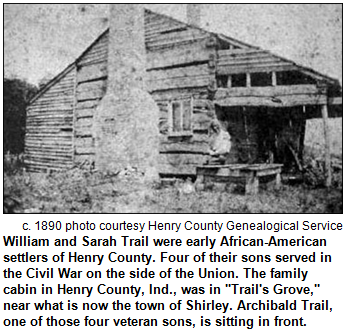 Our guest Jim Corridan is president of the Grouseland Foundation. Grouseland is the restored historic home built in Vincennes by Harrison, who later in life moved to Ohio and was elected U.S. president.
Our guest Jim Corridan is president of the Grouseland Foundation. Grouseland is the restored historic home built in Vincennes by Harrison, who later in life moved to Ohio and was elected U.S. president.
Our guest Georgia Cravey grew up in Charleston, Ill., the site of an early Lincoln-Douglas debate, as well as of a Copperhead riot. In the case she discusses that involved kidnapping attempts, William Trail (1784-1858) settled with his family in Henry County during the 1830s.
Learn more:
- National Archives, "Kidnapping of Free People of Color".
- Louisville Courier Journal, "Indiana and Early Acceptance of Slavery".
- Black History of Henry County, Indiana.
- Indiana Historical Society, William Trail Jr. letter, 1865.
- Freedom at Risk: The Kidnapping of Free Blacks in America, by Carol Wilson.
- IU Press, The Negro in Indiana Before 1900, by Emma Lou Thornbrough.
Roadtrip: Wilderness to World-Class at the Athenaeum
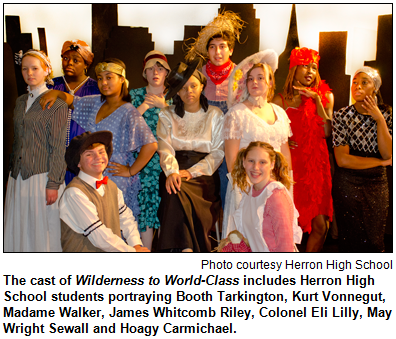 Guest Roadtripper and teacher Robin Knop of Herron High School suggests a "don't-miss" musical performance coming up next week! Wilderness to World-Class: Indy's Story through Song will be performed by Herron High School students and special guests at the Athenaeum Theatre on Nov. 11 with doors opening at 6:30 p.m. and the show starting at 7 p.m.. Tickets are $5, and they are free for ages 12 and under.
Guest Roadtripper and teacher Robin Knop of Herron High School suggests a "don't-miss" musical performance coming up next week! Wilderness to World-Class: Indy's Story through Song will be performed by Herron High School students and special guests at the Athenaeum Theatre on Nov. 11 with doors opening at 6:30 p.m. and the show starting at 7 p.m.. Tickets are $5, and they are free for ages 12 and under.
The performance is part of the city's 2014 Spirit and Place Festival. The musical is based on Indianapolis playwright Claude McNeal's past production of Indy in Revue. Wilderness to World-Class is a dramatic, historical and original musical telling the journey of one man's family as they witness Indianapolis' growth from its founding in the 1820s to the capital city it is today.
The show will highlight important people, places and events in Indianapolis history using narration, audiovisual tools, dance and song. Attendees will receive a specially designed bike map featuring many of the downtown sites mentioned in the show.
Wilderness to World-Class is collaborative production by Herron High School and Claude McNeal Productions.
History Mystery
A neighborhood in Indianapolis has deep connections to African American history. Located northwest of Monument Circle, the neighborhood included the homes of many black business and civic leaders of the 1800s and early 1900s.
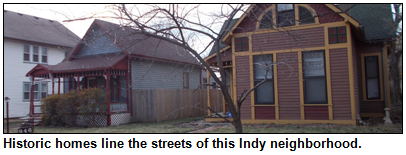 Now considered a historic district, the neighborhood takes its name from a civic leader who was the corporate attorney and manager for the businesses of hair products entrepreneur Madam Walker. With his extended family, he lived in the neighborhood, where some homes date to the 1890s or even earlier.
Now considered a historic district, the neighborhood takes its name from a civic leader who was the corporate attorney and manager for the businesses of hair products entrepreneur Madam Walker. With his extended family, he lived in the neighborhood, where some homes date to the 1890s or even earlier.
In fact, the neighborhood - long before being known by its current name - was identified as far back as the 1830s as an area of African American settlement.
Question: What is the Indianapolis neighborhood?
The prize pack is a gift certificate to LePeep Restaurant and two passes to the Indiana State Museum at White River State Park, courtesy of Visit Indy, and four admissions to the Indiana History Center, courtesy of the Indiana Historical Society.
Amish in Indiana
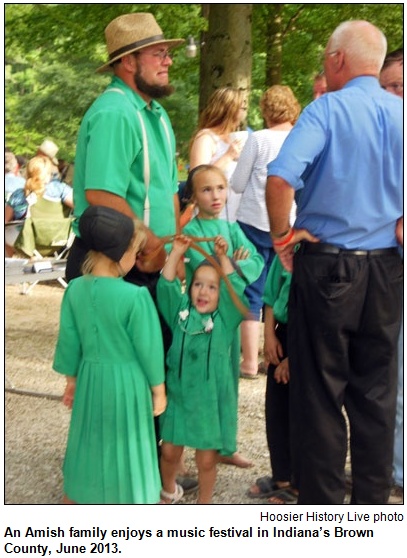 (Nov. 1, 2014 - encore presentation) - Only two states, Ohio and Pennsylvania, have larger Amish populations than Indiana.
(Nov. 1, 2014 - encore presentation) - Only two states, Ohio and Pennsylvania, have larger Amish populations than Indiana.
The 49,000 Amish here live in about 22 distinct communities scattered across the state, from Elkhart and LaGrange counties in northern Indiana to settlements near the towns of Washington in southern Indiana, as well as Berne and Geneva in the northeast.
In this encore broadcast of one of the most popular shows in our Hoosier History Live archives (its original air date was Oct. 5, 2013), Nelson's guest is Steve Nolt, a history professor at Goshen College and co-author of a book that poses these questions:
"What is it about the Amish that both enchants and perplexes us? ... Could a horse-and-buggy people be more satisfied than the rest of us, with all our modern conveniences?"
Steve is the co-author of The Amish (Johns Hopkins University Press, 2013), which explores all aspects of the "intensely private and insular" folks known, as his book puts it, "for their simple clothing, plain lifestyle and limited technology."
During the show, Steve and Nelson explore the ever-increasing population of Amish in Indiana (the average family has seven children), as well as their values, schools and their shift from an almost exclusive focus on farming to jobs in factories and businesses. Employers include the RV industry in the Elkhart area - even though the Amish do not own or drive motor vehicles.
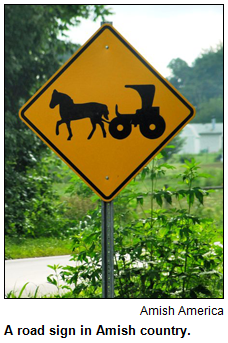 In addition to being the co-author of The Amish, Steve Nolt is the author or co-author of several other books about the Amish and has collaborated on multiyear projects about their religion, history and distinctive culture.
In addition to being the co-author of The Amish, Steve Nolt is the author or co-author of several other books about the Amish and has collaborated on multiyear projects about their religion, history and distinctive culture.
According to his book The Amish, which was co-written by Donald Kraybill and Karen Johnson-Weiner, about two-thirds now support themselves in Amish-owned small businesses or by working in non-Amish factories and shops.
 During our show, Steve Nolt addresses misconceptions about the Amish, who recently have become, as his book puts it, "popular culture icons of tourism and reality TV shows, even as they have deftly learned to flourish in a digital world."
During our show, Steve Nolt addresses misconceptions about the Amish, who recently have become, as his book puts it, "popular culture icons of tourism and reality TV shows, even as they have deftly learned to flourish in a digital world."
He emphasizes that the Amish are not homogeneous. Some communities in Indiana include families who send their children to public schools until the eighth grade. Children in other communities almost exclusively attend private schools.
Founded more than 300 years ago in Europe as an offshoot of the Anabaptist Christians, the Amish Church faced persecution. The first Amish settled in Pennsylvania during the 1730s. According to The Amish, many families headed west - including to Ohio and Indiana - during the 1800s because of rising land prices in the eastern United States.
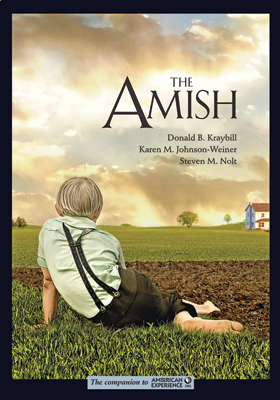 In northern Indiana, the towns of Nappanee and Shipshewana - both with Amish communities that date to the 19th century - have been popular in recent decades for tourists and shoppers intrigued by products such as quilts and baked goods. The Amish typically refer to outsiders as, simply, "the English."
In northern Indiana, the towns of Nappanee and Shipshewana - both with Amish communities that date to the 19th century - have been popular in recent decades for tourists and shoppers intrigued by products such as quilts and baked goods. The Amish typically refer to outsiders as, simply, "the English."
In The Amish, Steve and his co-authors explore Rumspringa (which translates as "running around"), the rite of passage when adventurous teenagers in many Amish communities enjoy the freedom to experiment with cultural influences before deciding whether to be baptized and officially join the church.
During our show, Steve and Nelson explore misconceptions about Rumspringa, which drew widespread attention in the late 1990s following a series of alcohol and drug arrests of "wilding" Amish teenagers. Typically, Rumspringa ends with marriage, according to The Amish. Activities during the rite of passage vary widely among Amish communities, with many youth never engaging in mischief.
In Indiana, about two-thirds of the Amish live in the northern part of the state; LaGrange and Elkhart counties have the largest concentrations. Nearly 22,000 Amish people live in those two counties. The Amish population in Adams County is 7,200. In Daviess County in southern Indiana, it is 3,805.
Overall, only about 14 percent of the Amish today are farmers, according to some reports. In contrast, 61 percent were farmers in 1970.
In addition to holding jobs in RV factories, many Amish in Indiana work in furniture-making and home construction.
Historic women's groups
 (Oct. 25, 2014) - As Election Day approaches, Hoosier History Live explores the heritage and community impact of the nonpartisan League of Women Voters - as well as the cultural and civic impact of two other historic women's groups that are more than 100 years old.
(Oct. 25, 2014) - As Election Day approaches, Hoosier History Live explores the heritage and community impact of the nonpartisan League of Women Voters - as well as the cultural and civic impact of two other historic women's groups that are more than 100 years old.
The Indianapolis Woman's Club was founded clear back in 1875, so it will turn 140 in February.
And the Woman's Department Club of Indianapolis celebrated its centennial in 2012; its heritage is intertwined with the Hoosier Salon and what became the Visiting Nurses Association in Indianapolis, among other well-known organizations.
All three women's groups pre-date November 1920, when women finally got to vote in a presidential election for the first time. (Both the Indiana and Indianapolis chapters of the League of Women Voters were founded several months earlier that year.)
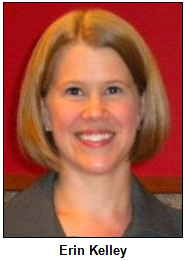 To explore the deep heritage of the three groups and how they have evolved, Nelson is joined in studio by three guests:
To explore the deep heritage of the three groups and how they have evolved, Nelson is joined in studio by three guests:
- Erin Kelley, past president of the League of Women Voters Indianapolis. She also is the communications director for the Marion County Clerk.
- Bonnie Carter, a civic leader who is a longtime member of the Indianapolis Woman's Club. She is a retired nuclear medical technologist from the IU Medical Center.
- Donnae Dole of the Woman's Department Club. She is executive director of the Hoosier Salon, a statewide nonprofit that promotes Indiana artists.
Members of the Woman's Club are expected to research and present papers; their topics cover a vast range, from arts and culture to science and education, but not religion or politics.
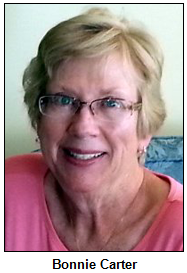 Although the League of Women Voters does not endorse candidates, it studies various issues and then forms policy positions. Topics range from immigration to, on the local level, redistricting reform.
Although the League of Women Voters does not endorse candidates, it studies various issues and then forms policy positions. Topics range from immigration to, on the local level, redistricting reform.
The name of the Woman's Department Club derives partially because, in 1912, "departments" were set up to provide activities and community outreach. They included an "art department," "music department" and an "education department."
A charter member of the club was appointed to the Indianapolis School Board.
According to info supplied by Bonnie, the first women's club in the country may have been a group organized in the historic village of New Harmony in southwestern Indiana.
A collection of treasured paintings, many done by the renowned Hoosier Group of artists in the early 1900s, hung in a former clubhouse owned by the Woman's Department. The clubhouse, on North Meridian Street, was sold in 1964. Then the paintings were housed at the Indianapolis Museum of Art before being sold at auction in 2001.
Proceeds from that sale of artwork (which included paintings by T.C. Steele and William Forsyth) were used to create a fund for scholarships in education and in endeavors supporting the arts. Among various outreach activities, the Woman's Department funds scholarships in nursing and sponsors awards for artists.
Today, the Woman's Department meets at the historic Indianapolis Propylaeum in the Old Northside neighborhood. So does the Woman's Club, whose founders in 1875 included educator May Wright Sewall, a dynamic civic leader who became an internationally known suffragist and an ally of Susan B. Anthony.
 May Wright Sewall (1844-1920) also founded the Propylaeum. Her life and impact were the focus of a Hoosier History Live show in March 2012 with historian Ray Boomhower and Jan Wahls, a member of the Propylaeum Historic Foundation.
May Wright Sewall (1844-1920) also founded the Propylaeum. Her life and impact were the focus of a Hoosier History Live show in March 2012 with historian Ray Boomhower and Jan Wahls, a member of the Propylaeum Historic Foundation.
According to our guest Erin Kelley, the League of Women Voters is "a direct offshoot of the National American Suffrage Association."
About the time women won the right to vote in 1920, suffragist Carrie Chapman Catt and others, as Erin puts it, "saw the need to keep all these mighty women organized."
The League of Women Voters was envisioned to help them - and future generations of women - become informed, active citizens.
Some history facts:
- Although the League of Women Voters started exclusively for women, men have been welcome to become members since the 1970s.
- The wives of Hoosier Group artists Steele and Forsyth were members of the Woman's Department Club.
- According to a history of the Woman's Club, the Indianapolis organization inspired similar groups in Richmond, Lafayette and other Indiana cities.
Learn more:
Roadtrip: Civil War sites in Indy
 Guest Roadtripper William Selm, historian and adjunct faculty member at IUPUI, tells us to look around Indianapolis for hometown reminders of the Civil War.
Guest Roadtripper William Selm, historian and adjunct faculty member at IUPUI, tells us to look around Indianapolis for hometown reminders of the Civil War.
"We are in the midst of the American Civil War Sesquicentennial," he says, "and 150 years ago the war was still raging in its fourth year. Indiana was thick in the fight under the leadership of the war governor, Oliver P. Morton. This titanic conflict in American history is remembered throughout Indianapolis, and the most obvious reminder is the beloved Indiana Soldiers' and Sailors' Monument in the very center of the city."
Indianapolis also was the site of a prisoner-of-war internment camp. Camp Morton was opened in April 1861 as a training recruitment camp for Indiana volunteers. It was located in what had formerly been the Indiana State Fairgrounds before the fairgrounds relocated to 38th Street.
Camp Morton has an official cast-metal marker at North Alabama and 19th streets near where the camp entrance was. The prison camp's Col. Richard Owen, known to be kindly and humane, was remembered and honored by his former charges by a bronze bust that is near the center of the Indiana Statehouse.
The grimmer side of Camp Morton is remembered by the large granite Confederate Memorial in Garfield Park, just inside the southeastern entrance. It originally stood as the funerary monument in Greenlawn Cemetery, where the Confederate soldiers who died in captivity in Indianapolis were originally buried. The monument lists all the names of the Confederate soldiers, as well as their state regiments. A number came from border states that officially remained in the Union.
Other reminders include three Abraham Lincoln monuments, the Oliver P. Morton monument at the east entrance of the State House, the Camp Sullivan marker in Military Park and many others. The most recent reminder is the Indy Eleven Football (soccer) Club, named for Gen. Lew Wallace's (Brookville-born) 11th Indiana Regiment.
History Mystery
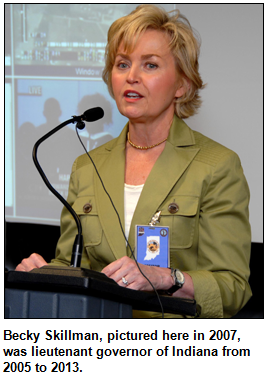 Bedford native Becky Skillman served two terms as Indiana's lieutenant governor after winning election in 2004 on the Republican ticket with Mitch Daniels. Although she became the first woman elected to the state's No. 2 post, Becky Skillman was not the first to serve in the office. In an earlier state administration, a woman was appointed to be Indiana's lieutenant governor when an opening occurred.
Bedford native Becky Skillman served two terms as Indiana's lieutenant governor after winning election in 2004 on the Republican ticket with Mitch Daniels. Although she became the first woman elected to the state's No. 2 post, Becky Skillman was not the first to serve in the office. In an earlier state administration, a woman was appointed to be Indiana's lieutenant governor when an opening occurred.
Question: Name the first woman to serve as the state's lieutenant governor.
Hint: Her stint in the office occurred during the last 15 years.
The prize pack includes a gift certificate to the Mikado restaurant and two passes to the IMAX Theater at White River State Park, courtesy of Visit Indy, and a pair of passes to GlowGolf at Circle Centre mall, courtesy of GlowGolf.
Marketing Indiana - and the lieutenant governor
 (Oct. 18, 2014) - "Honest-to-Goodness Indiana" made its debut earlier this year as the marketing slogan for the Hoosier state. Since then, it has been heard in TV commercials and featured on billboards, and it has popped up in magazine ads.
(Oct. 18, 2014) - "Honest-to-Goodness Indiana" made its debut earlier this year as the marketing slogan for the Hoosier state. Since then, it has been heard in TV commercials and featured on billboards, and it has popped up in magazine ads.
During the last 30 years, other promotional slogans for the state have included Restart Your Engines and Wander Indiana.
To share insights about the state's marketing campaigns and techniques, current and past, Nelson is joined in studio by two state officials - one of them No. 2 in the chain of command. Listen to "Honest to Goodness Indiana" here.
Lt. Gov. Sue Ellspermann, who manages six state agencies, including the Office of Tourism Development, is one of the guests.  A native of Ferdinand in southern Indiana, Lt. Gov. Ellspermann has a doctorate in industrial engineering and had a varied career in research, business and politics before she was elected in 2012 on a ticket with Gov. Mike Pence.
A native of Ferdinand in southern Indiana, Lt. Gov. Ellspermann has a doctorate in industrial engineering and had a varied career in research, business and politics before she was elected in 2012 on a ticket with Gov. Mike Pence.
She is joined on the show by Mark Newman, executive director of the Office of Tourism Development, as we explore the strategy for the Visit Indiana campaign, including the "Honest-to-Goodness" tagline and the cities and states where it is being used.
TV commercials feature an "Honest to Goodness" tune sung by pop musician-songwriter Jon McLaughlin, who grew up in Anderson. Sequences in the commercials or references in the lyrics (or sometimes both) highlight sites ranging from The Dunes at Lake Michigan, the French Lick Springs Hotel and the Joseph Decuis gourmet restaurant in Roanoke to bustling Massachusetts Avenue and the Central Canal in downtown Indy.
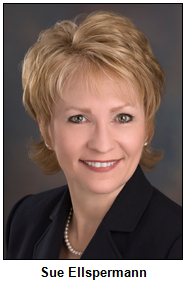 "Honest-to-Goodness" replaced "Restart Your Engines," which had an eight-year run as the state's marketing slogan.
"Honest-to-Goodness" replaced "Restart Your Engines," which had an eight-year run as the state's marketing slogan.
"Many tourism officials around the state complained that the last brand platform was too Indianapolis-centric," the Indianapolis Business Journal reported in March. The same article - as well as others written in reaction to the introduction of the "Honest-to-Goodness" slogan - included some criticism that it was too folksy.
Just as the Hoosier state is diverse, so is the background of Lt. Gov. Ellspermann. She grew up in a family of six children, graduated from Purdue with a degree in industrial engineering (her advanced degrees, including her Ph.D., are from the University of Louisville) and owned a small business for 20 years. Then she became the founding director of the University of Southern Indiana's Center for Applied Research and Economic Development.
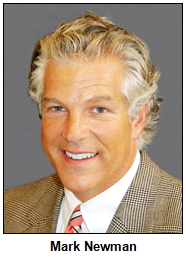 In addition to exploring various aspects of marketing Indiana during our show, Nelson asks the lieutenant governor about her journey to the state's No. 2 post. Before being selected as Mike Pence's running mate, she had served one term in the Indiana House, representing a district that included Dubois, Perry, Spencer and Warrick counties.
In addition to exploring various aspects of marketing Indiana during our show, Nelson asks the lieutenant governor about her journey to the state's No. 2 post. Before being selected as Mike Pence's running mate, she had served one term in the Indiana House, representing a district that included Dubois, Perry, Spencer and Warrick counties.
Before our guest Mark Newman joined the state tourism office in 2012, he was a vice president of marketing with the Indianapolis Symphony Orchestra; prior to that, he had worked as chief operating officer of Indiana Sports Corp.
Fun facts: According to an article in The New York Times earlier this year, the slogan for Texas is "It's Like a Whole Other Country." In North Carolina, it's "Beauty Amplified." The Cornhusker state markets itself as "Nebraska Nice" and Connecticut as "Still Revolutionary."
 In the re-branding process for Indiana that resulted in the “Honest to Goodness” slogan and other aspects of the current campaign, nearly 8,000 people ultimately participated, our guest Mark Newman told the IBJ. They responded to surveys, participated in focus groups or were involved in other ways.
In the re-branding process for Indiana that resulted in the “Honest to Goodness” slogan and other aspects of the current campaign, nearly 8,000 people ultimately participated, our guest Mark Newman told the IBJ. They responded to surveys, participated in focus groups or were involved in other ways.
According to several news accounts, Indiana is near the bottom of the states - 47th - in spending for tourism promotion.
During the 1980s, a major tourism promotion highlighted the "Wander Indiana" slogan, which was featured on state license plates. Apparently like just about any slogan, "Wander Indiana" also was met with criticism, including that it implied the state was slow-paced and unfocused.
When the "Honest to Goodness" campaign was unveiled in February, state officials indicated it eventually will be featured in national and regional magazines, including some associated with popular TV channels such as a the Food Network. State officials emphasized that efforts were made to feature diversity in the campaign, including diverse regions across Indiana.
Roadtrip: New Albany, on the Ohio River
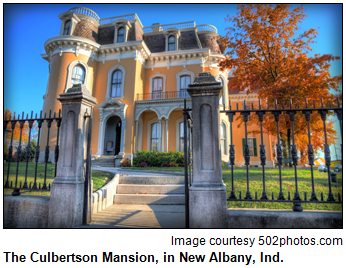 Guest Roadtripper and public historian Glory-June Greiff tells us that, "History is a happening thing in New Albany on the Ohio River."
Guest Roadtripper and public historian Glory-June Greiff tells us that, "History is a happening thing in New Albany on the Ohio River."
She explains: "One of Indiana's earliest towns, it's a preservationist's delight, with two centuries of buildings, many of which are undergoing rehab and adaptive reuse, and a great downtown to explore!"
The town founder's Scribner House from 1814 still stands, owned by the DAR. And a Greek Revival early state bank from the 1830s now houses a club. Lots of great public art, too!
Some of Glory's recommended sites:
- The Culbertson Mansion State Historic Site is open for tours. It is one of several fabulous houses along Mansion Row overlooking the Ohio River.
- The Division Street School, 1800 Conservative St., is listed in the National Register of Historic Places and offers exhibits on early education efforts for African-American children.
- The Carnegie Center for Art and History, located in the former Carnegie Library on Spring Street.
For good eats, just walk around downtown, and there's food everywhere for all tastes. You might try The Exchange, located in an 1870s building on Market Street.
History Mystery
Thousands of tourists are drawn every October to Parke County for the Covered Bridge Festival. Located in far-western Indiana, Parke County markets itself as "the covered bridge capital of the world" because it still has 31 of the historic structures.
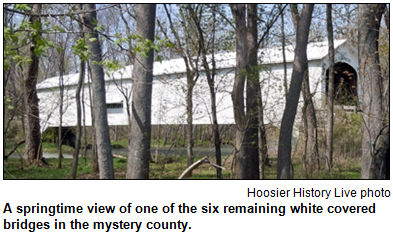 The county's 58th annual Covered Bridge Festival concludes Sunday (Oct. 19). Some of the most prolific builders of covered bridges during the 19th and early 20th centuries were based in Parke County.
The county's 58th annual Covered Bridge Festival concludes Sunday (Oct. 19). Some of the most prolific builders of covered bridges during the 19th and early 20th centuries were based in Parke County.
However, another county in Indiana was the home of a rival covered-bridge maker that built at least 58 of them.
Unlike the covered bridges in Parke County, which tend to be red, this county's builder preferred to make white covered bridges. Many of them were decorated with scrolls - script-like designs - on the exterior.
Six historic covered bridges are still standing in this county. One of the six was reconstructed after it was destroyed during a tornado in 2008. The reconstruction used some of the bridge's original wood, which the tornado had flung into a river spanned by the bridge.
Question: What is the Indiana county?
The prize pack is a gift certificate to Le Peep restaurant, two passes to the IMAX Theater at White River State Park and two passes to Conner Prairie, all courtesy of Visit Indy.
Ask Nelson - and the Hoosierist, too
 (Oct. 11, 2014) - Expect a bonus opportunity with our invitation to Hoosier History Live! listeners to call in and ask our host, author/historian Nelson Price, questions about our Hoosier heritage.
(Oct. 11, 2014) - Expect a bonus opportunity with our invitation to Hoosier History Live! listeners to call in and ask our host, author/historian Nelson Price, questions about our Hoosier heritage.
During this show, which featured open phone lines throughout for callers, the bonus opportunity involves a media colleague who, like Nelson, loves Hoosier trivia.
Sam Stall, who writes The Hoosierist column for Indianapolis Monthly magazine, joins Nelson in studio as co-host for the show. The Hoosierist is a question-and-answer column in which Sam tackles just about any question under the sun related to Indiana - from our natural landscape to weird statistics.
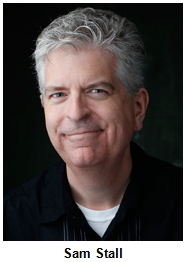 In addition to calling Nelson with questions - the WICR-FM (88.7) studio number is (317) 788-3314 - listeners are encouraged to ask questions of Sam, who banters with our host between phone calls.
In addition to calling Nelson with questions - the WICR-FM (88.7) studio number is (317) 788-3314 - listeners are encouraged to ask questions of Sam, who banters with our host between phone calls.
During the show, Sam shares details about the highest natural point in Indiana, which certainly is not known for mountain ranges or anything even resembling them. A teaser: The high point is called Hoosier Hill and is located in a far-eastern region of the state.
Sam also shares weird statistics he has amassed about Indiana, including some related to how many turkeys the state produces annually, as well as how many Christmas trees are Hoosier natives.
Nelson, in turn, shares insights about his areas of expertise, including famous people from Indiana and Indianapolis city history, drawing from his books Indiana Legends: Famous Hoosiers from Johnny Appleseed to David Letterman (Hawthorne Publishing) and Indianapolis Then and Now (Thunder Bay Press).
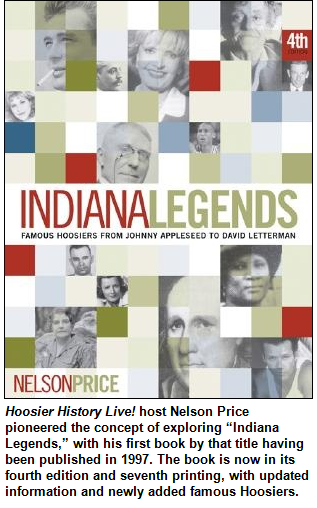 Because the pro baseball season is nearing its annual climax with the World Series, Nelson discusses a colorful Hoosier baseball player who became a household name thanks to his triumphs 96 years ago. In the 1908 World Series, former Indiana farm boy Mordecai "Three Finger" Brown was a pitcher who won the series for the Chicago Cubs. To this day, the Cubs have never won another World Series.
Because the pro baseball season is nearing its annual climax with the World Series, Nelson discusses a colorful Hoosier baseball player who became a household name thanks to his triumphs 96 years ago. In the 1908 World Series, former Indiana farm boy Mordecai "Three Finger" Brown was a pitcher who won the series for the Chicago Cubs. To this day, the Cubs have never won another World Series.
A native of tiny Nyesville in far-western Indiana, Mordecai Brown achieved stardom despite suffering a severe injury during a childhood accident with a corn shredder. As Nelson will explain, some analysts contended Brown's disfigured right hand actually gave his curveball an exceedingly sharp, downward break that proved challenging for batters. He eventually became the first native Hoosier inducted into the Baseball Hall of Fame.
Other topics Nelson and Sam explore during the show:
- Raggedy Ann. Nelson explains why, in his opinion, the world-famous doll is a Hoosier by "birth." Fun fact: Did you know the original Raggedy Ann dolls were not redheads? They had hair made of brown yarn - as well as hearts (sewn into their chests) that could be felt when children hugged their dolls.
- The Silk Stocking neighborhood of Kokomo. Sam discusses the historic neighborhood, as well as similar posh, historic enclaves in other Indiana cities.
- Corn. As the author of Corn Country: Celebrating Indiana's Favorite Crop (Emmis Books, 2003), Sam knows his corn. He will discuss the various types you see from the highways when you drive by Indiana's cornfields - and why most of it is not consumed by people.
- The bygone Claypool and Lincoln hotels. Nelson shares details about the rival hotels in downtown Indy that were demolished in the late 1960s.
Want to weigh in on any of these topics? This show will be your opportunity. During our last "Ask Nelson" show, callers phoned in to supplement the history insights or provide first-person accounts related to the topics.
We ran out of time before Nelson could share some insights about internationally famous violinist Joshua Bell, a Bloomington native. So he discusses an anecdote related to the first time he interviewed Joshua, who was disembarking from a commercial airline with his Stradivarius violin (estimated value: $2 million) in tow. (Several years ago, Joshua upgraded to an even more expensive Stradivarius.)
Regular listeners may recall that Sam Stall, "The Hoosierist" columnist, was a Hoosier History Live! guest in October 2012, joining Nelson for a Cafeterias across Indiana show. Sam's other books - he has written two dozen - include Tray Chic: Celebrating Indiana’s Cafeteria Culture (Emmis Books, 2004).
A native of Goshen, Sam is an Indianapolis-based freelance writer who lives in the Broad Ripple neighborhood with his wife and son.
Roadtrip: Sarah Bolton, and Sarah Bolton Park in Beech Grove
Guest Roadtripper Andrea Neal, columnist for the Indiana Policy Review and founder of Indiana At 200, tells us that, "Pioneer poet Sarah T. Bolton has been lost to history, but in the 1840s and '50s she was a famous Hoosier."
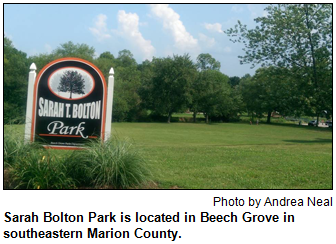 She continues: "Her poetry was known across the country, and her most famous poem, Paddle Your Own Canoe, was set to music and translated into a dozen foreign languages."
She continues: "Her poetry was known across the country, and her most famous poem, Paddle Your Own Canoe, was set to music and translated into a dozen foreign languages."
Bolton was born Sarah Tittle Barrett in 1814 in Newport, Ky., and moved as a toddler with her parents to Jennings County. Not liking the isolation, her father sold the farm and took the family to more civilized Madison, where Sarah studied Latin and read Virgil and other classics. Her first published poem appeared in the Madison Banner in 1826. She was not quite 14.
In 1831, Miss Barrett married newspaperman Nathaniel Bolton, and the two moved to Indianapolis, where they ran a dairy farm and wrote and immersed themselves in public affairs.
Bolton was a prominent figure in Indiana and was often asked to write poems for public occasions. Although anthologies of Bolton's poetry are no longer in print, she was widely published for her era. During the Civil War, her Union Forever! poem was credited with rallying the North.
By 1871 Bolton had retired from the spotlight and bought land at Beech Bank southeast of Indianapolis - now Beech Grove - where she lived her golden years in relative quiet. She died in 1893.
She is memorialized at a community park purchased by Beech Grove in 1930. The city's website notes, "The park reflects the life and beauty that Mrs. Bolton often spoke of in her poetry."
History Mystery
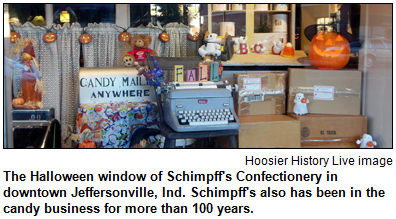 In addition to being the site of the highest natural point in Indiana, Wayne County, on the state's far-eastern border, is the home of a historic candy business. Located in the town of Hagerstown, the candy business was founded in 1890 and became well-known for its caramels. For decades, visitors have been able to arrange to see the caramels and other treats being made at the Hagerstown business.
In addition to being the site of the highest natural point in Indiana, Wayne County, on the state's far-eastern border, is the home of a historic candy business. Located in the town of Hagerstown, the candy business was founded in 1890 and became well-known for its caramels. For decades, visitors have been able to arrange to see the caramels and other treats being made at the Hagerstown business.
After 120 years, ownership of the candy enterprise was sold by its founding family, although their name has been retained on the business, which is continuing as a landmark in Hagerstown.
Question: Name the historic candy business.
The prize pack is a gift certificate to Le Peep restaurant and two passes to the IMAX Theater at White River State Park, courtesy of Visit Indy, and four passes to the Indiana Experience at the Indiana History Center, courtesy of the Indiana Historical Society.
World War I and Indiana
 (Sept. 27, 2014) - The 100th anniversary of the outbreak of World War I is prompting analysis and reflection about the "war to end all wars."
(Sept. 27, 2014) - The 100th anniversary of the outbreak of World War I is prompting analysis and reflection about the "war to end all wars."
During the horrific conflict that broke out in 1914 (although the United States did not enter the war until 1917), about 1,420 Hoosiers were killed in combat, according to some accounts. Thousands more were injured, suffered from shell shock or had their lives significantly altered in other ways.
Knox County Superior Court Judge Jim Osborne of Vincennes joins Nelson in studio to share insights about the war that often is depicted with scenes involving foxholes, gas masks and doughboys.
Judge Osborne, a former high school history teacher, is the founder and curator of the Indiana Military Museum in Vincennes, which has had special events commemorating World War I's centennial. In June, volunteers in Vincennes dug trenches on the museum's property so young Hoosiers could see how the war was fought; re-enactors portrayed Allied and German soldiers. The museum also has exhibited a restored French Renault hospital field truck from 1914.
The war's end in November 1918 was celebrated for months afterward. To welcome home Indiana's returning soldiers, thousands of people flocked to downtown Indy on May 7, 1919 for a celebration that featured a massive replica of the Arc de Triomphe (victory arch) in Paris.
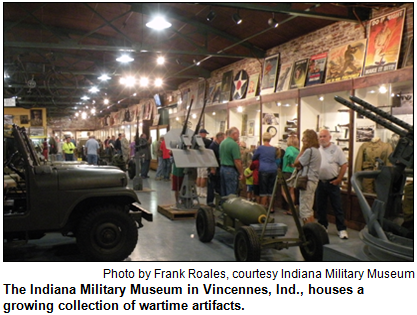 According to the Indianapolis Star, the victory arch spanned the width of the Meridian Street entrance to Monument Circle.
According to the Indianapolis Star, the victory arch spanned the width of the Meridian Street entrance to Monument Circle.
Our guest Judge Osborne is an avid military collector and historian. He established the non-profit Indiana Military Museum in 1982 as a way to enhance education of U.S. military history and preserve significant artifacts.
None of the 4.7 million U.S. veterans of World War I remain alive. The U.S. death toll was more than 116,500.
Even before the United States entered the war, America suffered casualties. In 1915, the British ocean liner Lusitania was attacked by Germany; its sinking killed nearly 1,200 passengers, including 128 Americans.
In Indiana, a military camp was established at scenic Winona Lake during the war. At Camp Winona, mechanics and truck drivers were trained for the war effort. According to the book Winona at 100, challenges at Camp Winona - as well as other military camps - included fatalities from diseases such as influenza and pneumonia.
During the war, Fort Benjamin Harrison in Indianapolis became one of the country's biggest training sites. The fort (now Fort Harrison State Park) had three large officer training camps during the "Great War." 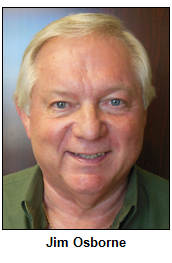 At a specialty camp, about 10,000 troops at Fort Harrison received instruction as engineers and railroad specialists, according to the Encyclopedia of Indianapolis.
At a specialty camp, about 10,000 troops at Fort Harrison received instruction as engineers and railroad specialists, according to the Encyclopedia of Indianapolis.
Also according to the encyclopedia, various auto-related manufacturers in the Hoosier capital, including companies then known as Prest-O-Lite and Allison Engineering, converted to making, respectively, munitions and airplane engines. The city's gas company converted some operations to make explosives.
Hoosiers who served in World War I included future Republican presidential candidate Wendell Willkie, a native of Elwood. Willkie was in the U.S. Army in France as the war wound down. Indiana-born composer Cole Porter claimed to have served in the French Foreign Legion, but his biographers have disputed that. Tony Hulman, the future owner of the Indianapolis Motor Speedway, was a teenager who served with the ambulance corps of the American Red Cross during the war.
And Gene Stratton-Porter, the famous naturalist/novelist from northeastern Indiana (her bestsellers included A Girl from the Limberlost), donated $5,000 to the Red Cross during the war; her husband's relatives were surgeons in France.
During the war, a key national figure in the Red Cross also was a Hoosier. 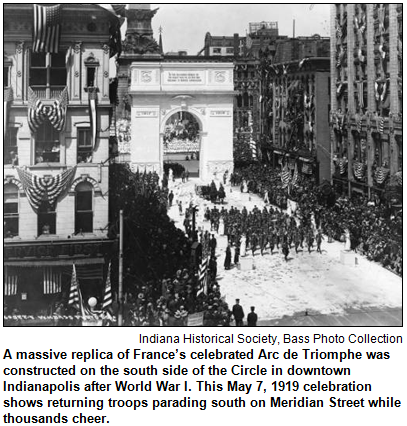 Previously a small operation, the Red Cross grew dramatically because of the unprecedented need for medical care. Vincennes native and Indiana University graduate Ernest Bicknell, who had been national director of the Red Cross, traveled to Europe to oversee several relief efforts.
Previously a small operation, the Red Cross grew dramatically because of the unprecedented need for medical care. Vincennes native and Indiana University graduate Ernest Bicknell, who had been national director of the Red Cross, traveled to Europe to oversee several relief efforts.
Women's organizations and churches across Indiana also focused to the war effort. A "socks for soldiers" crusade spearheaded by Hoosier women involved knitting thousands of socks for Indiana regiments as they left for France, according to the Encyclopedia of Indianapolis.
After the war ended and the signing of peace treaties, including the Treaty of Versailles, the American Legion was founded in 1919. The new organization chose Indianapolis as the site of its national headquarters, where it remains to this day. Construction of the five-block Indiana World War Memorial Plaza (including what is sometimes called American Legion mall) followed.
Learn more:
- New York Times "War to End All Wars."
- Indiana Military Museum.
- New jargon developed in the trenches during WWI.
- Indiana native Ernest Moore Viquesney's Doughboy statue.
- Fort Benjamin Harrison during WWI.
Roadtrip: Logan Street Stroll in Noblesville
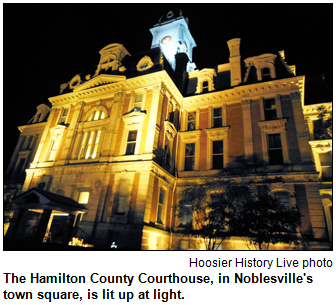 Guest Roadtripper Janet Gilray of Legacy Keepers Music points out that a new self-guided walking tour of downtown Noblesville and adjacent Logan Street, just to the east of downtown, is available.
Guest Roadtripper Janet Gilray of Legacy Keepers Music points out that a new self-guided walking tour of downtown Noblesville and adjacent Logan Street, just to the east of downtown, is available.
William Connor and Josiah Polk platted the town of Noblesville seven years after Indiana became a state, with the town boundaries being the White River, Harrison Street, 12th Street, and Cherry Street on the south.
Logan Street Stroll highlights include:
- The Noble County Courthouse.
- Alexander's old-fashioned ice cream parlor.
- Kirk's Hardware, in operation since 1890.
- The Logan Village Antique Mall.
- Logan Street Sanctuary, which is a repurposed old church.
- Homes along Logan Street representing Early, Eastlake, Queen Anne and Victorian architectural styles, as well as Italianate, Greek Revival and American Foursquare.
- A Cherokee Lodge also once existed on the street.
Additionally, a Logan Street Shuffle will be held on Oct. 12 from 1 to 5 p.m. at the Logan Street Sanctuary at 1274 Logan Street in Noblesville, including performances by the Riverboat Floozies and a steampunk fashion show.
History Mystery
A nationally famous building in southern Indiana was used as a hospital for soldiers wounded during World War I. In 1918 and 1919, U.S. Army soldiers returning from Europe were treated in the atrium and other areas of the landmark building.
 Its role as a wartime hospital was a striking departure from the reason the impressive structure attained fame. The ornate building, which opened in 1902, had been visited by hundreds of wealthy Americans.
Its role as a wartime hospital was a striking departure from the reason the impressive structure attained fame. The ornate building, which opened in 1902, had been visited by hundreds of wealthy Americans.
After its stint as a World War I hospital for soldiers, the building returned to its pre-war grandeur. But the Great Depression had a significant impact on its operation.
Question: Name the historic building in southern Indiana.
The prize pack is a gift certificate to the Story Inn in Brown County, courtesy of the Story Inn, and two passes to the NCAA Hall of Fame, courtesy of Visit Indy, and four passes to the Indiana Experience at the Indiana History Center, courtesy of the Indiana Historical Society.
History of TV in Indy
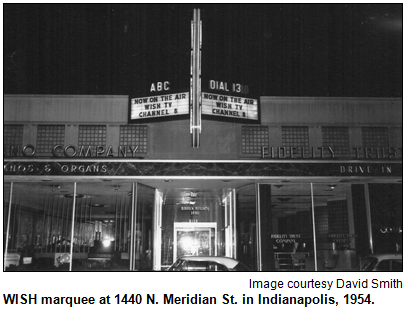 (Sept. 20, 2014) - With the headlines about a major switch in network affiliations of TV stations in Indy, what better opportunity to spotlight the history of TV in the Hoosier capital?
(Sept. 20, 2014) - With the headlines about a major switch in network affiliations of TV stations in Indy, what better opportunity to spotlight the history of TV in the Hoosier capital?
As Hoosier History Live will explore with two broadcast veterans in Indiana as Nelson's guests, the shuffling of network affiliations has happened previously, although not often.
As of Jan. 1, CBS will end its affiliation of 58 years with Channel 8/WISH and switch its programming to Channel 4/WTTV.
David L. Smith, who began his TV career in 1951 (with WTTV) during the dawn of television in the Hoosier state, joins Nelson in studio. His long list of credits include working in management for 20 years at WISH and hosting a popular series, When Movies Were Movies, that aired for 10 years beginning in 1971.
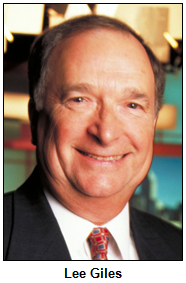 His books include Indianapolis Television (Arcadia Publishing, 2012), which explores the evolution of TV in the Hoosier capital and highlights a parade of personalities whose careers were linked to various TV stations in Indy.
His books include Indianapolis Television (Arcadia Publishing, 2012), which explores the evolution of TV in the Hoosier capital and highlights a parade of personalities whose careers were linked to various TV stations in Indy.
They include David Letterman (a weatherman during the 1970s), the troubled former Hollywood actress Frances Farmer (who was the host of an afternoon movie show during the 1960s) and Channel 4 children's TV personalities Janie Hodge and Cowboy Bob.
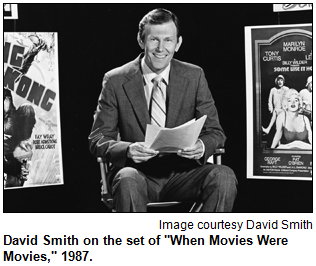 Another well-known name who got her start in Indy TV was hired by a former Channel 8 news director who joins Nelson and David Smith on the show. Jane Pauley was hired in 1972 by Lee Giles, whose long, award-winning career as a news director at WISH was preceded by on-air posts in the news department, including anchor and Statehouse reporter.
Another well-known name who got her start in Indy TV was hired by a former Channel 8 news director who joins Nelson and David Smith on the show. Jane Pauley was hired in 1972 by Lee Giles, whose long, award-winning career as a news director at WISH was preceded by on-air posts in the news department, including anchor and Statehouse reporter.
Both of our guests were working in the Indy TV market during the late 1970s when two stations switched network affiliations. Channel 13/WTHR-TV (formerly WLWI) had been affiliated with ABC-TV; Channel 6/WRTV had been an NBC affiliate. The two stations switched networks as part of a power play.
The maneuvering so enraged the then-general manager of Channel 13 that he resorted to a late-night, on-air act of frustration that Dave Smith will describe during our show.
He also recounts the incident in his Indianapolis Television book, which traces the beginnings of experimentation with the medium in the Hoosier capital during the late 1930s. (A ham radio operator who was studying electrical engineering at Purdue may have been the first to broadcast a TV image in Indiana, the book reports.)
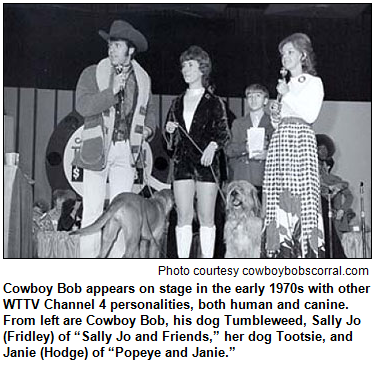 Some history facts:
Some history facts:
- On Memorial Day weekend in 1949, a TV station in Indianapolis went on the air for the first time. The inaugural-day programs on Channel 6, then WFBM-TV, included a live broadcast of the Indianapolis 500.
- Some accounts indicate 2,000 television sets were tuned in to that 500-Mile Race.
- Channel 4/WTTV founder Sarkes Tarzian, who had immigrated from a Turkish region of Armenia, was based in Bloomington, where he had become an engineer for RCA. According to Indianapolis Television, the result during the early years of TV meant that for a while, "Bloomington had the distinction of being the smallest city in the world with its own television station."
Several of the initial staff members at Channel 4 were Indiana University students, according to our guest Dave Smith's book Indianapolis Television. After being hired at the TV station in 1951, he did on-air work and also produced, directed, edited film and served as a cameraman.
In addition to Dave's later, long stint at Channel 8, which included serving as program and production manager, he was a telecommunications professor at Ball State University. His other books include Hoosiers in Hollywood (Indiana Historical Society Press, 2006) and a biography of movie star Clifton Webb, an Indianapolis native.
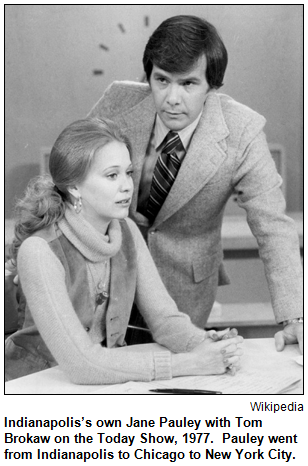 Both of our guests, Dave Smith and Lee Giles, have been presidents of the Indiana Broadcast Pioneers and have been inducted into its hall of fame. Lee Giles also has been inducted into the Indiana Journalism Hall of Fame; his 40-year career at WISH-TV included 35 years as news director, a remarkably long tenure in a post that typically turns over every few years.
Both of our guests, Dave Smith and Lee Giles, have been presidents of the Indiana Broadcast Pioneers and have been inducted into its hall of fame. Lee Giles also has been inducted into the Indiana Journalism Hall of Fame; his 40-year career at WISH-TV included 35 years as news director, a remarkably long tenure in a post that typically turns over every few years.
WISH-TV was not always a CBS affiliate. During the 1950s, it had carried NBC programming before switching to CBS. The upcoming switch of CBS to WTTV, which has been an independent station, means that Channel 4 will begin carrying the network's popular programs - as well as many Indianapolis Colts games - in 2015.
By the way, several well-known news anchors and personalities in the Indy TV market have been studio guests on Hoosier History Live! since our debut in January 2008. They include retired Channel 8 news anchor Mike Ahern (he was a guest on show in October 2009 about the legendary House of Blue Lights) and Barbara Boyd, who, at Channel 6, became the first African-American woman in Indiana to anchor a news broadcast. Dave Smith's book mentions the attention she drew as a consumer reporter when Barbara reported about her own mastectomy from her hospital bed.
Learn more:
- What We Watched on Television.
- Indiana Broadcast Pioneers.
- History of WFBM.
- Broadcasting 101.
- Indiana Journalism Hall of Fame.
- 2010 interview with Janie Hodge by Al Hunter for Eastside Voice.
Roadtrip: Decatur Sculpture Walk
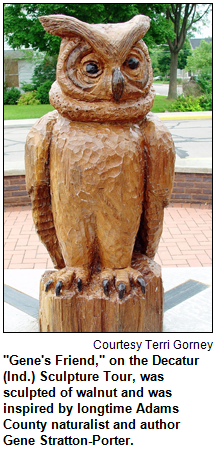 Guest Roadtripper Terri Gorney of Fort Wayne, who also volunteers at several conservation organizations, including ACRES, DNR and Limberlost, suggests that we visit the small Adams County town of Decatur in northeast Indiana for its third annual Sculpture Walk.
Guest Roadtripper Terri Gorney of Fort Wayne, who also volunteers at several conservation organizations, including ACRES, DNR and Limberlost, suggests that we visit the small Adams County town of Decatur in northeast Indiana for its third annual Sculpture Walk.
Decatur is the birthplace and boyhood home of David Smith, one of the most well-known sculptors of the 20th century. You can also see the work of artist Greg Mendez, also a native of Decatur and inspired by David Smith. Here's a town that is proud of its artists!
This year there are 17 outdoor sculptures and six in downtown businesses, as well as permanent private sculptures.
While in Decatur, you can visit Storybook Park, established in 2013 next to the Adams Public Library. It was designed by another Decatur native, landscape designer Nick Girod. There is also a beautiful Peace Memorial on the courthouse lawn. Enjoy an ice cream at the Ice Cream Depot or lunch or dinner at Marko's on Second Street, Back 40 Junction, or the Galley.
History Mystery
One of the longest-serving weathercasters in Indianapolis TV history was a viewer favorite on WISH-TV/Channel 8 from the late 1950s (when he was hired as an announcer) until his retirement in 1991.
During the brutal Blizzard of 1978, he was a nearly round-the-clock presence on Channel 8 as he provided Central Indiana residents with constant updates about the historic winter storm. His trademarks included horn-rimmed eyeglasses and a weather van with his name emblazoned on it. In the 1950s, before joining WISH-TV, he was an announcer and host on Channel 4/WTTV.
Question:Who was the longtime Channel 8 weatherman?
The prize pack is a gift certificate to the Tin Roof, a live music joint in downtown Indianapolis, and two passes to the Eiteljorg Museum, courtesy of Visit Indy, and four passes to the Indiana Experience at the Indiana History Center, courtesy of the Indiana Historical Society.
Another show online!
Show on grocers now available for listening
From family grocers to supermarkets. This show, originally aired on July 19, 2014, is now available for downloading and listening thanks to the generous support of Bruce and Julie Buchanan.
Remember, friends, we at Hoosier History Live are more like a small family corner grocery than anything else!
Independents make great radio. And a big thanks to creative collaborators Richard Sullivan, Nelson Price and Molly Head, who put together this newsletter each and every week.
Nelson in print
These 5 famous Hoosiers reinvented themselves
Just in time for Labor Day, host Nelson Price has penned another piece for The Indianapolis Star about historic - and current-day - prominent Hoosiers who began new chapters in their work lives after initially taking a different direction entirely.
- Indianapolis Star article: These 5 famous Hoosiers reinvented themselves
Historian Jim Madison's insights on Hoosiers
|
(Sept. 13, 2014) - Indianapolis Monthly magazine called him "probably the closest thing Indiana has to a historian laureate."
His eagerly awaited new book, Hoosiers: A New History of Indiana (co-published by Indiana University Press and the Indiana Historical Society Press), explores the entire sweep of the state's heritage, starting centuries before the arrival of French fur traders during the early 1700s and concluding with economic and political upheavals of the 21st century.
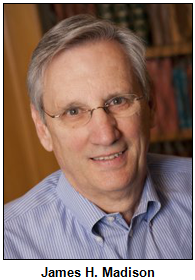 James Madison, professor emeritus of history at Indiana University, is Nelson's special in-studio guest to share insights about a range of topics, including how the Hoosier character has been shaped by ethnic immigration, farm-to-city migration and manufacturing trends.
James Madison, professor emeritus of history at Indiana University, is Nelson's special in-studio guest to share insights about a range of topics, including how the Hoosier character has been shaped by ethnic immigration, farm-to-city migration and manufacturing trends.
Some topics addressed in Professor Madison's new book that we explore during the show:
- Did you know Indiana was a political "swing state" in national elections 100 years ago? As a result, both political parties often included Hoosiers as vice presidential candidates on their tickets.
- Indiana's initial state constitution in 1816 was drafted largely by native Southerners. Referring to the constitutional convention that year, Professor Madison's book points out that "all but 9 of the 43 delegates had lived below the Mason-Dixon line prior to moving to Indiana."
- Because of the state's long heritage in automotive-related industries, resentment of foreign-made cars persisted in many communities, even as top business leaders began courting Japanese investments. Even in 2004, 81 percent of Indiana-registered vehicles were American makes such as Fords and Chevys, according to statistics featured in Professor Madison's book. In contrast, the national average was 51 percent.
"Who at the state's Centennial in 1916 could have imagined Japanese auto factories sprouting in Indiana cornfields?" Professor Madison asks in Hoosiers: A New History of Indiana. "Who could have imagined Hoosier kids playing soccer when everyone knew that hands and feet were meant for basketball? Who could have imagined a mosque on Hoosier soil?"
Most of the state's earliest white settlers migrated from what Professor Madison's book calls the "upland South," meaning they often were "people too poor to own slaves."  He cites 1850 census data indicating 44 percent had come from southern states, followed by 31 percent from Ohio.
He cites 1850 census data indicating 44 percent had come from southern states, followed by 31 percent from Ohio.
In 1851, the state had a second constitutional convention because, in part, of a financial crisis stemming from debt incurred by what Professor Madison's book calls "canal mania": the frenzy to build canals, which quickly became obsolete with the railroad boom.
The "new" Indiana Constitution of 1851, which prohibits the state from going into debt, "contributed generally to the shaping of a more conservative outlook in Indiana," Professor Madison writes.
He is a member of the Indiana Bicentennial Commission that is overseeing celebrations for the state's 200th birthday in 2016. (For a Hoosier History Live show on June 22, 2013, he was a studio guest about the upcoming Bicentennial and how the state celebrated the Centennial in 1916.)
Professor Madison also is the author of several other books that explore various aspects of the state's heritage, including a biography of entrepreneur/philanthropist Eli Lilly, a look at a lynching in Marion in 1930, and The Indiana Way: A State History (IU Press, 1986).
In his new book, he explores the notorious Ku Klux Klan, which had a stranglehold on Indiana during the 1920s, and various misconceptions about that era. 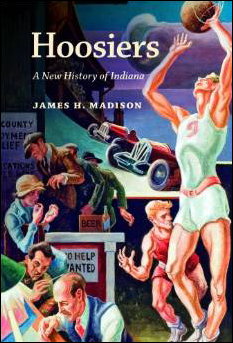 He also traces farm-to-city migration, citing the 1910 census showing that, for the first time, the number of rural Hoosiers declined while the urban population increased significantly.
He also traces farm-to-city migration, citing the 1910 census showing that, for the first time, the number of rural Hoosiers declined while the urban population increased significantly.
During an earlier era, according to Hoosiers: A New History of Indiana, pioneer women here were marrying younger and having more children than women who remained in the East.
"The birthrate in Indiana in the 1810s ranked among the highest in the world," Professor Madison writes.
His book explores early African-American settlements such as Lyles Station in Gibson County.
And he describes the letters written during the Civil War by young Hoosier soldiers as "among the most interesting documents in all of Indiana history." As they marched through the South, the soldiers "saw firsthand the reality of slavery" and, in their letters home, challenged the South's "sunny depiction" of itself.
In chapters focusing on post-World War II eras, Hoosiers: A New History of Indiana explores the state's manufacturing heritage and evolving attitudes toward foreign investment, particularly in auto production. Whereas auto-related businesses typically had been located in northern Indiana for most of the 20th century, Professor Madison describes the tendency of Japanese companies since the 1980s to select small town or rural locations, often near such southern Indiana communities as Greensburg and Princeton.
In agriculture, he recounts the development of "industrial-type operations" such as the massive Fair Oaks Farms in northwest Indiana.
In addition to serving on the Bicentennial Commission, Professor Madison is a board member of the Indiana Historical Society and Indiana Humanities.
Roadtrip: Indiana Bicentennial Train
 Amy Lamb of the Indiana Historical Society tells us to get on board the fall 2014 run of the Indiana Bicentennial Train. In a unique collaboration with The Indiana Rail Road Company and Norfolk Southern Corporation, the train will visit Columbus (Sept. 18-20), Jasper (Sept. 25-27), Terre Haute (Oct. 2-4) and Bargersville (Oct. 9-11).
Amy Lamb of the Indiana Historical Society tells us to get on board the fall 2014 run of the Indiana Bicentennial Train. In a unique collaboration with The Indiana Rail Road Company and Norfolk Southern Corporation, the train will visit Columbus (Sept. 18-20), Jasper (Sept. 25-27), Terre Haute (Oct. 2-4) and Bargersville (Oct. 9-11).
Originally known as the Indiana History Train, the Indiana Bicentennial Train has welcomed more than 71,000 visitors in its six years of travel. It consists of three 65-foot renovated Amtrak freight cars and features a free traveling exhibition, The Next Indiana.
In addition to the exhibition, temporary "depots" are set up at each venue to provide an enjoyable, comprehensive experience. Visitors can participate in hands-on and educational activities, catch a 1916 interpreter presentation, connect with the mission and offerings of the Indiana Historical Society and purchase items from a pop-up History Market.
The Bicentennial Train and its accompanying activities are all free and open to the public, operating 9 a.m. to 6 p.m. on Thursday and Friday, and 9 a.m. to 4 p.m. on Saturday. Every visitor will receive a complimentary pass to visit Indiana Experience at the Eugene and Marilyn Glick Indiana History Center. For more information, call (317) 232-1882 or visit www.indianahistory.org/train.
History Mystery
|
By the early 1900s, according to statistics in James Madison's Hoosiers: A New History of Indiana, South Bend was the nation's sixth-largest manufacturer of farm machinery. A major reason was the presence in South Bend of a family-owned business that made plows. In fact, the family's factory became the world’s largest maker of plows.
A Queen Anne-style mansion built in the 1890s - and owned by the South Bend family for 72 years - is open for tours and listed on the National Register of Historic Places.
Question: Name the South Bend family that became wealthy in the plow-manufacturing business.
The prize pack includes four passes to the Indiana Experience at the Indiana History Center, courtesy of the Indiana Historical Society, a gift certificate the restaurant Mikado in downtown Indianapolis, courtesy of VisitIndy, and a pair of passes to GlowGolf in the Circle Centre Mall, courtesy of GlowGolf.
Prohibition in Indiana
(Sept. 6, 2014) - As the country moved to enact Prohibition, Indiana "was very much a battleground," according to an expert who will be a guest on our show.
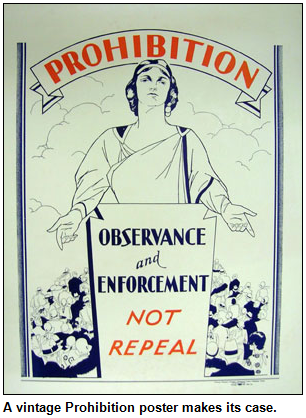 Consider the number of Hoosier breweries that were in business, particularly in Terre Haute and Indianapolis. As Indianapolis-based author/historian Jason Lantzer notes, one of the major breweries was led by the maternal grandfather of Kurt Vonnegut.
Consider the number of Hoosier breweries that were in business, particularly in Terre Haute and Indianapolis. As Indianapolis-based author/historian Jason Lantzer notes, one of the major breweries was led by the maternal grandfather of Kurt Vonnegut.
On the other hand, many towns and counties across the state were "dry" for several years before January 1920, when the 18th Amendment - which was widely known as Prohibition - became part of the U.S. Constitution.
And Indiana had one of the best-organized state branches of the Anti-Saloon League, according to Jason, who is the author of Prohibition Is Here to Stay (University of Notre Dame Press, 2009) and the upcoming Interpreting the Prohibition Era at Museums and Historic Sites (R&L Publishers).
Jason, who also is the coordinator of the honors program at Butler University, joins Nelson in studio for a show exploring the colorful era of speakeasies, bootleggers, moonshine and temperance advocates such as suffragist Frances Willard, who was named the national head of the Union at an event in Indianapolis. (Jason notes that a bronze plaque about her ascendancy in 1879 is displayed in the rotunda of the Indiana Statehouse.)
Jason and Nelson are joined in studio by Katherine Gould, associate curator of cultural history at the Indiana State Museum, which will host a traveling exhibit, American Spirits: The Rise and Fall of Prohibition, that opens Sept. 20.
The exhibit, which was created by the National Constitution Center in Philadelphia, spans the beginnings of the temperance movement from the early 1800s up through the repeal of Prohibition in 1933.
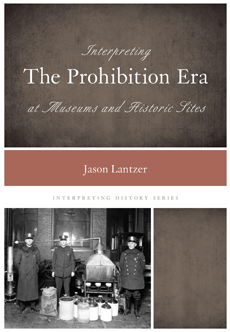 State Museum officials note that famous figures with Hoosier connections who crusaded for Prohibition included Billy Sunday (1862-1935), a pro baseball star who became one of the country's best-known evangelists.
State Museum officials note that famous figures with Hoosier connections who crusaded for Prohibition included Billy Sunday (1862-1935), a pro baseball star who became one of the country's best-known evangelists.
Beginning in 1911, the former Chicago baseball player was based for much of the year in Winona Lake in northern Indiana. A major Christian campground with a Billy Sunday Tabernacle was built in Winona Lake, as was a home for Sunday and his family, a bungalow that he called Mount Hood.
Prohibition Is Here to Stay, our guest Jason Lantzer's first book, is a biography of another influential clergyman who crusaded against alcohol abuse. Rev. Edward Shumaker was a Methodist minister who, for nearly 25 years, led Indiana's chapter of the Anti-Saloon League, exerting influence far beyond the Hoosier state in what many called a "noble crusade."
Opponents of Prohibition included Albert Lieber, who ran the Indianapolis Brewing Company in the early 1900s. His daughter, Edith, was married to Kurt Vonnegut Sr.
Indiana went "dry" in April 1918, nearly two years before the nation, according to the Indiana Historical Society. Even several years before that, some Indiana counties such as LaGrange and Randolph already had prohibited the manufacturing, sale and transportation of alcohol.
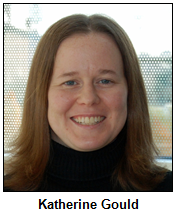 In 1923, during the height of Prohibition, Indiana lawmakers passed the state's first drunk-driving law. The punishment was $500 and a jail sentence of up to six months, according to the historical society. Repeat offenders faced prison terms as long as five years.
In 1923, during the height of Prohibition, Indiana lawmakers passed the state's first drunk-driving law. The punishment was $500 and a jail sentence of up to six months, according to the historical society. Repeat offenders faced prison terms as long as five years.
Many suffragists crusaded for Prohibition because they had seen the devastating impact of men's alcoholism on their wives and children. In addition to Billy Sunday, advocates for Prohibition included May Wright Sewall, an Indianapolis-based suffragist, civic leader and educator.
 According to the historical society, which hosted an exhibit titled "Busted: Prohibition Enforced" in 2011, about 30 breweries and more than 2,500 saloons across the state closed their doors when Indiana went "dry." (After the launch of the historical society's “You Are There” exhibit, Hoosier History Live explored some aspects of Prohibition during a show on June 25, 2011.)
According to the historical society, which hosted an exhibit titled "Busted: Prohibition Enforced" in 2011, about 30 breweries and more than 2,500 saloons across the state closed their doors when Indiana went "dry." (After the launch of the historical society's “You Are There” exhibit, Hoosier History Live explored some aspects of Prohibition during a show on June 25, 2011.)
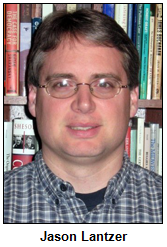 The upcoming exhibit at the Indiana State Museum will feature recreations of a church where visitors can hear temperance speeches, as well as a speakeasy where they can learn to dance the Charleston and learn slang of the Roaring '20s.
The upcoming exhibit at the Indiana State Museum will feature recreations of a church where visitors can hear temperance speeches, as well as a speakeasy where they can learn to dance the Charleston and learn slang of the Roaring '20s.
The historical society's exhibit focused on the raid in 1920 of a major bootlegger operating out of a barn near New Bethel (now Wanamaker) in far-southeastern Marion County. A photo of that raid - considered the largest bootlegging bust in the Midwest since Prohibition began - not only inspired the historical society's exhibit, it is featured on the cover of the upcoming book by our guest Jason Lantzer.
The exhibit coming to the state museum has been curated by Daniel Okrent, the author of the national bestseller Last Call: The Rise and Fall of Prohibition (Scribner, 2010).
Suggested "learn more" websites:
- Interpreting the Prohibition Era at Museums and Historic Sites - A guide that helps interpreters explain the history of Prohibition, its repeal and its legacies.
- Prohibition Is Here to Stay - Jason Lantzer's book, subtitled "The Rev. Edward S. Shumaker and the Dry Crusade in America."
- Frances Elizabeth Willard - A plaque in the Indiana Statehouse rotunda commemorates the work of this anti-booze advocate, who led the WCTU.
- Anti-Saloon League - A powerful national organization, it was founded in 1893 in Ohio.
- Anti-Saloon League Museum - An initiative of the Westerville (Ohio) Public Library.
Roadtrip: Pleasant Run bike tour in Indy
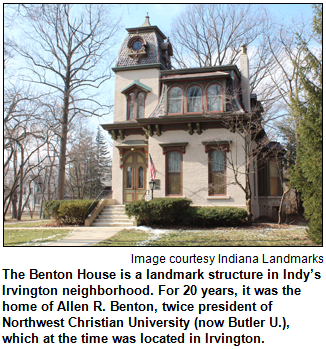 Guest Roadtripper Suzanne Stanis of Indiana Landmarks suggests an opportunity to embrace the German philosophy of sound mind and body through exercise while exploring German-born George Kessler's marvelous park and boulevard system In Indianapolis.
Guest Roadtripper Suzanne Stanis of Indiana Landmarks suggests an opportunity to embrace the German philosophy of sound mind and body through exercise while exploring German-born George Kessler's marvelous park and boulevard system In Indianapolis.
In 1908, landscape architect George Kessler presented a plan to the Indianapolis Park Board that would use the natural terrain of Indianapolis to weave a system of boulevards and parkways connecting public parks. Today this plan, expanded upon by Lawrence Sheridan in the 1920s, connects 12 parks. Its system of roadways and parks encompasses 3,474 acres and is listed in the National Register of Historic Places.
Fun fact: Did you know that Indy finally named a city park for George Kessler in recent years? It's at 25th and Pennsylvania streets in Fall Creek Place.
There's an opportunity on Sept. 27 for a 15-mile round trip bike ride exploring Pleasant Run from Garfield Park to Irvington in Indianapolis. Highlights of the tour include historic Garfield Park, Pleasant Run Parkway, Bona Thompson Memorial Library in Irvington, and the Fountain Square neighborhood. More information on the bike tour is on the Indiana Landmarks website.
History Mystery
A county in Indiana is considered by many historians to have been the site of the country's first successful commercial winery. 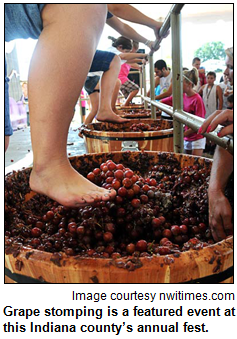 European immigrants to the county set up vineyards and established the winery during the early 1800s. Some historians say the immigrants may even have introduced grape cultivation to the United States.
European immigrants to the county set up vineyards and established the winery during the early 1800s. Some historians say the immigrants may even have introduced grape cultivation to the United States.
As a salute to its wine-making heritage, the Indiana county celebrates an annual wine festival. It typically features a grape stomp, riverboat cruises and music, as well as tents showcasing Indiana wineries.
Question: What is the Indiana county?
The prize pack includes four passes to the Indiana State Museum for an opportunity to see "American Spirits: The Rise and Fall of Prohibition," which opens Sept. 20, two tickets to the tickets to the Hoosier Hops & Harvest Festival at Story Inn, courtesy of Story Inn, and two passes to Conner Prairie Interactive History Park, courtesy of Conner Prairie.
Serving up Hoosier heritage food
(Aug. 30, 2014) - Pork tenderloins and persimmon pudding are on the menu for our show.
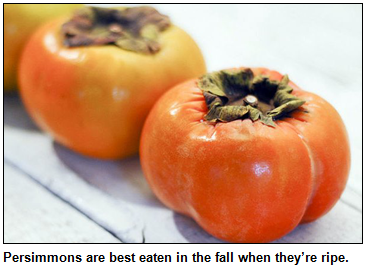 So are sugar cream pie, beef Manhattan sandwiches, fried biscuits, apple butter and Van Camp's pork and beans.
So are sugar cream pie, beef Manhattan sandwiches, fried biscuits, apple butter and Van Camp's pork and beans.
Also on the menu: the heritage of canning. It's intertwined with our Hoosier food history, thanks in no small part to the enterprising Ball brothers who came to Muncie in the 1880s.
To explore classic Hoosier foods - and topics related to the state's traditional cuisine - Nelson is joined in studio by one of the state's best-known food journalists. Jolene Ketzenberger, the Indianapolis-based founder and editor of the local food website EatDrinkIndy, has covered the Hoosier culinary scene for more than 20 years.
Here's her take on the breaded pork tenderloin sandwich, which has been identified with Indiana for generations:
"I think it's clearly a cousin to the schnitzel, which seems reasonable considering the German heritage of many Hoosiers."
Did you know a historic restaurant in northeastern Indiana claims to have invented the pork tenderloin sandwich? Nick's Kitchen in Huntington dates its start to 1904, when founder Nick Frienstein began selling his wares from a street cart. A few years later, Nick's brother started frying - and breading - pork cutlets to sell as sandwiches.
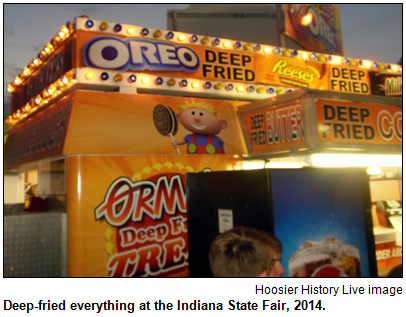 Regardless of their origin, pork tenderloins have been a longtime hit with Hoosiers but are seldom served in other states. Other sandwiches are even more regional in appeal, including one that Jolene calls a "southern Indiana classic": the brain sandwich.
Regardless of their origin, pork tenderloins have been a longtime hit with Hoosiers but are seldom served in other states. Other sandwiches are even more regional in appeal, including one that Jolene calls a "southern Indiana classic": the brain sandwich.
Jolene, who enjoys shopping in farmers markets and trying new recipes, reports she felt compelled to make a brain sandwich so she could include it in her Cafe Indiana Cookbook (2010), which she co-authored with Joanne Raetz Stuttgen.
"When I was testing the recipe, the power was out," she recalls. "So we were eating fried brains by candlelight - very zombie-esque, which seemed to amuse my boys."
Jolene and her husband, John, are the parents of three children. Her food journalism has appeared in Indianapolis Monthly, NUVO Newsweekly, the Indianapolis Business Journal and the Indianapolis Star. A regular judge at food and cocktail competitions, Jolene is at work on a book focusing on the evolution of the food scene in Indy.
The Hoosier capital was the setting for the launch of Van Camp's canned pork and beans. (Stokely-Van Campwas based in Indy. Pork and beans were marketed across the country under the Van Camp's label.)
According to Jolene's research, the beef Manhattan sandwich also is said to have originated in Indy. She reports the sandwich "doesn't seem to exist in New York's Manhattan or much outside of Indiana."
Some other food-heritage tidbits we explore during the show:
- Persimmons. Known in some places as Sharon fruit or as "the fruit of the gods" by the ancient Greeks, the orange-yellow fruit has been cultivated everywhere from China and Korea to Indiana and California. In southern Indiana, the town of Mitchell will host its 68th annual Persimmon Festival from Sept. 20-27.
 Sugar cream pie. In the far-eastern Indiana town of Winchester, Wick's Pies is the world's largest maker of this Hoosier heritage food. A multigenerational family-owned business, Wick's produces more than 750,000 sugar cream pies every year, according to Jolene's research. During previous Hoosier History Live! shows, foodie guests have explained that the pie became a staple in farm kitchens because its ingredients (unlike those of fruit pies) were available year-round here.
Sugar cream pie. In the far-eastern Indiana town of Winchester, Wick's Pies is the world's largest maker of this Hoosier heritage food. A multigenerational family-owned business, Wick's produces more than 750,000 sugar cream pies every year, according to Jolene's research. During previous Hoosier History Live! shows, foodie guests have explained that the pie became a staple in farm kitchens because its ingredients (unlike those of fruit pies) were available year-round here.- Fried biscuits and apple butter. As Jolene notes, they are associated with such mainstays on the Hoosier food scene as the Nashville House in Brown County and Jug's Catering in Indianapolis.
- Canning and the impact of Ball Corp. The factory in Muncie was opened in 1888 by five Ball brothers, who moved from Buffalo, N.Y., and achieved tremendous success, particularly with their famous Mason jars. The glass jars were used across the country for canning many homegrown products, including some, like tomatoes, that also have a long association with Indiana. (Red Gold, the manufacturer of tomato products, is based in Elwood. Its corporate headquarters is located in the former Elwood Elementary School.)
For decades, the Ball Blue Book was, as Jolene puts it, the "go-to canning guide."
Eventually, though, home canning sharply declined in popularity. In Muncie, glass production ended during the 1960s as Ball Corp. diversified. In the late 1990s, the company moved its headquarters to Colorado.
But canning may not be just a part of Hoosier history. Jolene reports signs of "renewed hipster interest" in it; she says canning seems to have developed a "cool" reputation among some foodies.
Tune in to the show for more insights about this enticing topic.
Jolene's "learn more" website picks:
- The Tenderloin Connoisseur - A blog devoted to the search for the perfect tenderloin sandwich.
- Hilltop Inn in Evansville - Home of the fried-brain sandwich.
- Beef Manhattan - A Hoosier original.
- Eat Drink Indy - Jolene's website covers the Indy food scene.
Roadtrip: Knightstown
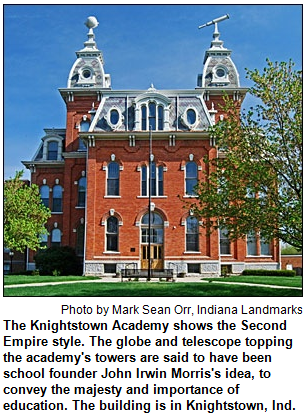 Guest Roadtripper Joe Frost of Indiana Landmarks' Eastern Regional Office and Indiana National Road Association will suggest a Roadtrip to a National Road town about 30 miles east of Indianapolis, Knightstown.
Guest Roadtripper Joe Frost of Indiana Landmarks' Eastern Regional Office and Indiana National Road Association will suggest a Roadtrip to a National Road town about 30 miles east of Indianapolis, Knightstown.
The "Hoosier Gym" that was home court to the Huskers in the movie Hoosiers is located in Knightstown.
History Mystery
From the 1940s through the early 1980s, a beverage with a trademarked name was distributed out of Indianapolis and became enormously popular with children. Sold in bottles (and, later, in cans) like soft drinks of the era, the beverage was promoted at various times by Hoosier celebrities such as Channel 4/WTTV personalities Cowboy Bob and Sammy Terry.
The creator of the beverage had a background in the dairy and ice cream business, which was reflected in its flavor. Distribution of the beverage extended far beyond Indiana, even though it was bottled in the Hoosier capital.
Question: Name the beverage.
The prize pack includes two tickets to the tickets to the Hoosier Hops & Harvest Festival at Story Inn, courtesy of Story Inn, four passes to the Indiana Experience, courtesy of the Indiana Historical Society, and two passes to Conner Prairie Interactive History Park, courtesy of Conner Prairie.
Underground Railroad reality and myths
(Aug. 23, 2014 - encore presentation) - If you believe folklore across Indiana, just about every historic house, inn and tavern - particularly those with hidden rooms, cellars or attics - served as a stop on the Underground Railroad.
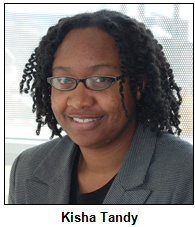 Exaggerations and misconceptions abound regarding the movement before and during the Civil War to help escaped slaves, according to experts.
Exaggerations and misconceptions abound regarding the movement before and during the Civil War to help escaped slaves, according to experts.
To share insights about the myths and reality regarding the extent and nature of the Underground Railroad network in Indiana - including what is and isn't confirmed - two experts join Nelson in studio during this encore broadcast. (The original air date of this show was June 29, 2013.)
Nelson's guests are Kisha Tandy, assistant curator of social history at the Indiana State Museum, and historic researcher and genealogist Dona Stokes-Lucas of Indianapolis.  Dona also is a board member of Indiana Freedom Trails Inc., a nonprofit established to pull together, verify and preserve information about Underground Railroad history in the Hoosier state.
Dona also is a board member of Indiana Freedom Trails Inc., a nonprofit established to pull together, verify and preserve information about Underground Railroad history in the Hoosier state.
The Underground Railroad era generally is defined as beginning in the mid-1830s.
Oral histories, diaries, notations in family Bibles and letters have been crucial in figuring out the routes, buildings and people associated with the effort to help runaway slaves - or freedom seekers - as they passed through Indiana.
According to several accounts, St. Joseph County, which includes South Bend, served an integral role with slaves as they headed north. And because of the prevalence of anti-slavery Quakers in Wayne County and other parts of far-eastern Indiana, that region also had a flurry of clandestine activity.
During the show, Dona and Kisha also discuss the frequency with which so-called slave catchers from the South - often mercenaries - combed Indiana in search of freedom seekers.
Article details 'overlooked yet influential Hoosiers'
(July 6, 2014) - Hoosier History Live's host, Nelson Price, has penned an article for indystar.com that focuses on notable Hoosiers, present and past, who deserve more attention.
![]() Says Nelson: "I picked five diverse Hoosiers, three of them historic figures and two contemporary. One of the latter is archaeologist/anthropologist Christopher Schmidt (of U Indy's Indiana Prehistory Lab), whom I regard as a rock star. He has been a radio show guest twice so far."
Says Nelson: "I picked five diverse Hoosiers, three of them historic figures and two contemporary. One of the latter is archaeologist/anthropologist Christopher Schmidt (of U Indy's Indiana Prehistory Lab), whom I regard as a rock star. He has been a radio show guest twice so far."
Others in the article include:
- Chief Menominee, leader of the Potawatomi in northern Indiana during the 1830s.
- Anita DeFrantz, Olympics organizer who hails from Indy.
- Tom Harmon, football star, World War II hero and pioneer TV sportscaster.
- Levi and Catharine Coffin, whose home in Newport (Fountain City now) became known as the "Grand Central Station" of the Underground Railroad during the 1840s.
So ... click over to the story on the indystar.com website and take a look at Nelson's most recent published piece of history journalism!
6th-anniversary party
Another rousing success!
The sixth anniversary party for Hoosier History Live! on Feb. 27 was yet another rousing success.
About 200 guests hailing from all corners of the state, from Fort Wayne to Jeffersonville, attended our gala, which was hosted by Indiana Landmarks at their state headquarters, the beautifully renovated Central Avenue United Methodist Church.
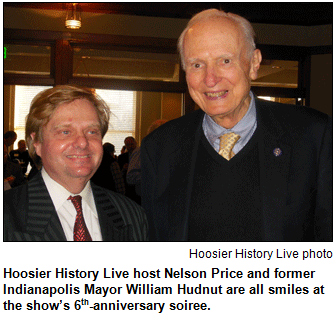 The party was attended by dozens of the distinguished Hoosiers who have been studio guests on the radio show during the last six years, including notables such as novelist James Alexander Thom and his wife, Dark Rain Thom; Jane “Janie” Hodge, the pioneer of children's TV programming, and Jesse Kharbanda, president of the Hoosier Environmental Council.
The party was attended by dozens of the distinguished Hoosiers who have been studio guests on the radio show during the last six years, including notables such as novelist James Alexander Thom and his wife, Dark Rain Thom; Jane “Janie” Hodge, the pioneer of children's TV programming, and Jesse Kharbanda, president of the Hoosier Environmental Council.
Former Indianapolis Mayor William Hudnut spoke with great enthusiasm to our guests ("History matters!" - he proclaimed), as did Jeff Smulyan, CEO of Emmis Communications.
Hoosier History Live! wishes to thank the following performers, costumed re-enactors and others who contributed to the evening's success: Hank Fincken as Johnny Appleseed, Danny Russel as Abe Lincoln, kilted members of the Scottish Society of Indianapolis as a nod to our many programs about ethnic groups in Indiana, Shirley Judkins on the grand piano performing Indiana's Songwriter Legends, and Janet Gilray as "Ms. Melody" of Legacy Keepers and Dan Wethington of bluegrass band Cornfields & Crossroads. Photos by Frank Espich of the Indianapolis Star.
Birthday cake and mini cupcakes by Chef Maureen Dunlap, and photography by Bill Holmes.
Acknowledgments also to Garry Chilluffo, Mark Szobody, Marsh Davis, Sharon Gamble, Doris Bond, Laura Yeo, Leah Cody, Carol Simmons, Gary BraVard, Clayton Ryan, Jed Duvall, Lockerbie Pub, Richard Sullivan, Pam Fraizer, Tom Rea, Lorraine Vavul and Jeanne Blake.
|
Lenape (Delaware) Indian heritage in Indiana
(Aug. 16, 2014) - "I think in Indiana, as in many places, it's only been in the last 30 to 40 years that we've chosen to look outside of myth ... to truly understand the first peoples who lived in our state."
That comment from a historian introduces a new documentary about the Lenape tribe of Native Americans. It's the tribe that was named Delaware Indians by white settlers.
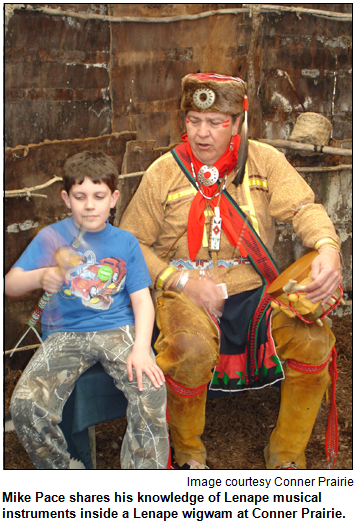 The Lenape lived in the woodlands of east central Indiana from the 1790s into the early 1820s; during that time, they founded villages or trading posts that evolved into towns, including Anderson, Muncie and Strawtown.
The Lenape lived in the woodlands of east central Indiana from the 1790s into the early 1820s; during that time, they founded villages or trading posts that evolved into towns, including Anderson, Muncie and Strawtown.
Under the terms of the Treaty of St. Mary's negotiated in 1818, the Lenape gave up their claims to Hoosier soil and, as part of what has been called a "forced migration," moved a few years later to Kansas.
Eventually, the Lenape were moved again, this time to Oklahoma, the tribe's home state in modern times.
Considering that the Lenape had lived in New York, New Jersey, Pennsylvania and Delaware for generations even before being relocated to the Indiana Territory, is it any wonder that one expert in the documentary calls them "possibly the most-moved group in American history"?
To explore the tribe's life on Hoosier soil and impact here, Nelson is joined in studio by two guests:
- Chris Flook, a Ball State University telecommunications instructor who is one of the executive producers of the new documentary, titled The Lenape on the Wapahani River (watch the video at this link).It has been shown on PBS TV stations in Muncie, Oklahoma and elsewhere across the country.
- And Mike Pace, a descendant of Lenape who once lived in Indiana; he helped create the Lenape village at Conner Prairie Interactive History Park. For several months of the year, Mike lives in Bartlesville, Okla., but he spends summers at Conner Prairie, where he is an interpreter specialist. Mike is among the experts interviewed on-camera in The Lenape on the Wapahani River.
During the early 1800s, Lenape leaders in Indiana included Chief William Anderson, for whom the largest city in Madison County is named. The Lenape who moved to Kansas included Anderson's daughter, Mekinges, who became the first wife of frontier entrepreneur and fur trader William Conner, namesake of Conner Prairie. 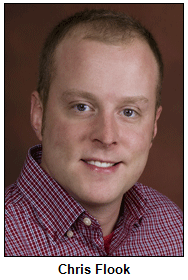 They had six children, all of whom moved with their mother to Kansas; Conner remained in Indiana, remarried (a white woman) and had more children with his second wife.
They had six children, all of whom moved with their mother to Kansas; Conner remained in Indiana, remarried (a white woman) and had more children with his second wife.
During one of the first Hoosier History Live! shows after our debut in January 2008, we explored some aspects of the Lenape (Delaware) tribe in a show about the publication of Long Journey Home (Indiana University Press, 2008). It's a book of oral histories and color photos put together by Indianapolis-based author Rita Kohn and photojournalist Jim Brown.
Our upcoming guest Chris Flook and other Ball State faculty and students already have won four national awards for The Lenape on the Wapahani River. According to their documentary, the Lenape were known as "the grandfather tribe" when they lived near the Delaware River and elsewhere on the East Coast and in the mid-Atlantic region.
 By the 1790s, when the Lenape were moved to the dense forests of central Indiana, though, they had lost stature, their numbers "decreased by disease and warfare," the documentary notes. The diseases included smallpox, influenza and other illnesses brought by European settlers to which Native Americans had not developed immunity.
By the 1790s, when the Lenape were moved to the dense forests of central Indiana, though, they had lost stature, their numbers "decreased by disease and warfare," the documentary notes. The diseases included smallpox, influenza and other illnesses brought by European settlers to which Native Americans had not developed immunity.
Our guest Mike Pace, a former assistant chief of the Delaware Tribe, has spoken across the country - and even overseas - about aspects of Native American heritage.
In addition to helping oversee the new documentary about the Lenape, our guest Chris Flook put together Indiana's Courthouse Squares, a website showcasing all 92 county courthouses and town squares (or their equivalents) in the state. In connection with that project, Chris was a guest May 23 for a Hoosier History Live! show focusing on Courthouse Squares across Indiana.
Learn more:
- The Unami Language.
- The Moravian Indian Mission on the White River - John Kluge and Abraham Luckenbach.
- Sons of the Wilderness - John and William Conner.
- History of the Moravian Mission Among the Indians - George Loskiel.
- Miller, J. (1994). The 1806 purge among the Indiana Delaware: sorcery, gender, boundaries, and legitimacy. Ethnohistory, 245-266.
- In Search of the Indiana Lenape - Jessica Yann.
- Ghosts of the Delaware - Beth McCord.
History Mystery
During the early 1800s, a Native American tribe flourished across much of the northern one-fourth of what become the state of Indiana. In fact, many names of towns, lakes and parks in far-northern Indiana are derived from this tribe's language. Examples include Lake Maxinkuckee at Culver; the town of Wakarusa and Pokagon State Park.
 Known for their colorful attire, the Native American tribe often wore ruffled shirts, jewelry and pants with ribbons instead of the buckskin worn by some other tribes. In 1838, this tribe was forced out of Indiana by white soldiers who led Native American men, women and children on a grueling march to Kansas, during which dozens of Indians died from disease, exhaustion and other factors.
Known for their colorful attire, the Native American tribe often wore ruffled shirts, jewelry and pants with ribbons instead of the buckskin worn by some other tribes. In 1838, this tribe was forced out of Indiana by white soldiers who led Native American men, women and children on a grueling march to Kansas, during which dozens of Indians died from disease, exhaustion and other factors.
Question: Name the Native American tribe.
The prize pack includes two tickets to the tickets to the Hoosier Hops & Harvest Festival at Story Inn, courtesy of Story Inn, four passes to the Indiana Experience, courtesy of the Indiana Historical Society, and two passes to Conner Prairie Interactive History Park, courtesy of Conner Prairie.
Roadtrip: Logansport
Guest Roadtripper and public historian Glory-June Greiff tells us that, "Just up the old Michigan Road from Indy, about 75 miles, is Logansport in Cass County, which, given its key location at the confluence of two rivers (the Eel and the Wabash), was an original town on this historic route."
Logansport, she also notes, also was a port on Wabash and Erie Canal.
"I'd always been intrigued by this town, with its plethora of historic buildings and layers of transportation history, but in recent years Logansport has been making very good use of its historic assets. In 2009 it was designated a Preserve America Community."
 A historic railroad depot anchors a riverside public space, the Little Turtle Waterway Plaza, a nice place to start an exploratory walk downtown that still boasts a number of great old buildings, many of which now house interesting shops and restaurants.
A historic railroad depot anchors a riverside public space, the Little Turtle Waterway Plaza, a nice place to start an exploratory walk downtown that still boasts a number of great old buildings, many of which now house interesting shops and restaurants.
In the past few years quite a lot of new public sculpture has appeared downtown, including a carousel horse. Clearly, this is a tribute to the 19th-century carousel carved by master craftsman Gustav A. Dentzel in Riverside Park on Logansport's east side. Despite the fact the carousel is a National Historic Landmark, rides are only 75 cents. Maybe you'll catch the brass ring!
Riverside Park, as its name implies, is a pleasant place to spend an afternoon. Don't miss the miniature golf course not far from the carousel!
Adds Glory: "I'm fond of old drive-in restaurants, and Logansport has two I recommend. The Char-Bett is located in a 1930s former gas station on the outskirts of town on the old Michigan Road (State Road 25) heading northeast toward Rochester: tasty drive-in food and all manner of ice cream treats, including sodas, which can be hard to find these days. And the Sycamore Drive-In is just off old U.S. 24, once a major route, at 316 20th St. They, too, offer sodas among their ice cream treats and a nice assortment of drive-in fare."
The Redheads and all-girl bands of 1920s, '30s
|
(Aug. 9, 2014) - Even though they became nationally known during the 1920s as The Parisian Redheads, many of the band members were not red-haired - and, rather than Paris, they were based in Indiana.
In the 1930s, the all-female orchestra/dance band, which was promoted as "America's Greatest Girl Band," became known as The Fourteen Bricktops.
 The colorful history of the now-forgotten novelty band - which was based in Indianapolis, with a pianist born in the eastern Indiana town of Portland, a saxophonist from Elwood, a harpist from Richmond and other Hoosier "lady musicians" - is the focus of our show. Nelson is joined in studio by Evan Finch, an Indy-based advertising copywriter who has extensively researched The Parisian Redheads and other all-female orchestras.
The colorful history of the now-forgotten novelty band - which was based in Indianapolis, with a pianist born in the eastern Indiana town of Portland, a saxophonist from Elwood, a harpist from Richmond and other Hoosier "lady musicians" - is the focus of our show. Nelson is joined in studio by Evan Finch, an Indy-based advertising copywriter who has extensively researched The Parisian Redheads and other all-female orchestras.
"So-called 'ladies' orchestras had existed since the late 19th century due to the fact that male orchestras rarely hired female musicians," Evan notes in an article in the upcoming summer issue of Traces of Indiana and Midwestern History magazine. It's the popular magazine published by the Indiana Historical Society.
"As a result, women formed their own groups."
However, the impresarios behind The Parisian Redheads were two men, Charles Green and Harry Z. Freeman of Indianapolis, both of whom had experiences with organizing musical programs on the Chautauqua circuit. That well-known cultural circuit also had provided opportunities for many of The Parisian Redheads, several of whom were classically trained musicians, according to Evan's article.
"By the end of 1926, the group had become a local sensation," Evan writes. "In Indianapolis alone, within a space of four weeks, the Parisians played a reception forQueen Marie of Romania, opened the city's Marott Hotel and graced the stage of the Circle Theatre."
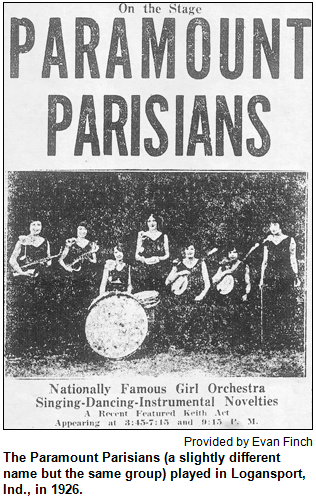 Of the original Redheads, only pianist/singer Martha Tripper (a Portland native who later moved to Kokomo) was a natural redhead, Evan reports.
Of the original Redheads, only pianist/singer Martha Tripper (a Portland native who later moved to Kokomo) was a natural redhead, Evan reports.
"The other women were required either to dye their hair or wear red wigs when appearing in public. In the name of success, the musicians went along with the gimmick, although not always happily."
The Redheads expanded to a 13-piece orchestra in 1927 and attained national success. According to Evan, the performers eventually included a "Mistress of Ceremonies," a woman who dressed in a man's tuxedo and "sang, danced, conducted and otherwise functioned as the band's public face."
Some fun facts:
- Our guest Evan Finch, who works for Young & Laramore, joined Nelson in studio May 10 for a show about Offbeat Landmarks across Indiana. "I like weird stuff," Evan says, referring to his interest in quirky aspects of our state's heritage.
- During the 1930s and '40s, bandleader and composer Phil Spitalny and His All-Girl Orchestra reaped national fame on radio and in concerts. The group featured a performer promoted as Evelyn and Her Magic Violin.
- Referring to The Parisian Redheads, Evan writes: "The group's earliest reviews referred to them as a 'jazz orchestra,' but the Redheads, in an effort to please the diverse tastes of vaudeville audiences, actually played everything from operettas to show tunes.
During the show, we feature some musical interludes to give listeners a flavor of the Redheads (Bricktops) in performance.
Evan and Nelson also share info about other all-female musical groups from Indiana. They have included the Hampton Sisters, who went, as the Indianapolis Star once put it, "from a child act to jazz legends."
The Hampton Sisters included pianist Aletra Hampton and bassist Virtue Hampton Whitted, who were 92 and 84 years old, respectively, when they died just months apart in 2007.  The group also included, at various times, two other Hampton sisters, Carmelita and Dawn.
The group also included, at various times, two other Hampton sisters, Carmelita and Dawn.
Group members also changed over the years with The Parisian Redheads-turned-Fourteen Bricktops (also known by other names, such as the Paramount Parisians, early on).
Even though the Bricktops broke up in the 1930s, some of the musicians enjoyed flourishing careers long afterward. Bricktop member Ruth Hutchins Thrasher became, as Evan puts it, "a valued member of the Indianapolis Symphony Orchestra - and played several different instruments for them over the course of four decades."
Why the emphasis (or insistence) on red hair?
"In addition to adding an extra layer of novelty, red hair gave the band a visual identity - and a hair color associated with free-spiritedness seems in tune with the Jazz Age," Evan writes in his upcoming Traces article.
He notes that, as the years passed, dozens of women musicians from across the country joined the band. But the group always had Indiana musicians, including Bobbie Greiss, a singer-dancer who grew up in Indianapolis and was recruited as the group's conductor. Trumpet player Lillian Evans was a native of Dublin in Wayne County, while another trumpeter, Alice Miller, attended Tech High School in Indy.
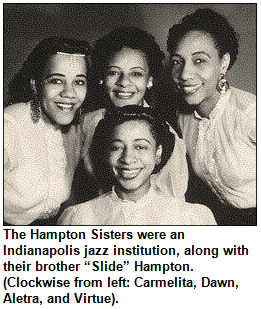 Other members of the Parisians (or of the Bricktops) included saxophonist Bernice Lobdell of Huntington; accordionist Jeane Brown of Greencastle, and saxophonist Marietta Gift of Converse.
Other members of the Parisians (or of the Bricktops) included saxophonist Bernice Lobdell of Huntington; accordionist Jeane Brown of Greencastle, and saxophonist Marietta Gift of Converse.
In 1929, the band played the Palace in New York City and shared a bill with the famous Marx Brothers. As the vaudeville circuit declined, the Bricktops transformed into a dance band.
"The success of the Parisian Redheads and the Fourteen Bricktops proved that a band of women could compete successfully with men, both in terms of performance and financial reward," Evan writes.
He adds: "In the many years since the Bricktops' dissolution, opportunities for female musicians have improved. In 2010, it was estimated that the membership of America's top 15 orchestras - once almost exclusively male - had become 35 percent female."
To learn more, Evan recommends:
- A short film made by the Redheads including Oh Sweet Mystery of Life.
- Early-20th-century all-women bands.
- Later-20th-century bands.
History Mystery
 One of the country's most popular bandleaders during the 1930s and '40s was a native of Linton, Ind. He grew up in the town in the far-western part of the Hoosier state, then enjoyed great success at nightclubs during the Big Band era.
One of the country's most popular bandleaders during the 1930s and '40s was a native of Linton, Ind. He grew up in the town in the far-western part of the Hoosier state, then enjoyed great success at nightclubs during the Big Band era.
The native Hoosier also was a hit on radio as the sidekick to comedian Jack Benny during the 1930s and '40s. Eventually, the bandleader starred in his own radio show with his wife, a glamorous movie star. He also appeared in more than a dozen Hollywood films, often playing a character like himself.
But his best-known connection to the movies may have been serving as the voice of an animal in a Disney cartoon movie. The bandleader died in 1995 at age 91.
Question: Who was he?
The prize pack includes two tickets to Beef & Boards Dinner Theatre and two passes to the Indianapolis Zoo, courtesy of Visit Indy, and four passes to the Indiana Experience, courtesy of the Indiana Historical Society.
Roadtrip: Roberts Settlement in Hamilton County
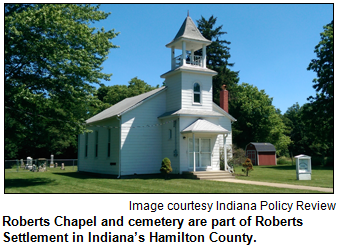 Guest Roadtripper Kisha Tandy, a curator at the Indiana State Museum, suggests a Roadtrip to Roberts Settlement, which once was a flourishing farm community of African-American pioneers from North Carolina who moved north to make their home in Jackson Township in Hamilton County.
Guest Roadtripper Kisha Tandy, a curator at the Indiana State Museum, suggests a Roadtrip to Roberts Settlement, which once was a flourishing farm community of African-American pioneers from North Carolina who moved north to make their home in Jackson Township in Hamilton County.
The history of Roberts Settlement sheds light on a group of individuals who owned land and established communities in Indiana before 1850.
The first residents to Roberts arrived in 1835 as free blacks. The settlement included homesteads and a school and church. Descendants continue to meet annually on July 4th for the Roberts Settlement Annual Homecoming to celebrate their family and heritage. And one always can stop by to look at the Roberts Chapel Church and Cemetery.
Kisha also recommends the book Southern Seed, Northern Soil (IU Press, 2002) by Stephen Vincent about African-American farming communities in the Midwest. She also reports that a documentary has been made about the topic; learn more on Saturday's show.
Russian immigration
(Aug. 2, 2014) - Carmel resident Natalia Rekhter immigrated from Russia in 1991. So she is among those who have come from her homeland to Indiana since the mid-1980s, which is when the bulk of immigration from Russia here began - much later than that of many of the other ethnic heritage groups that Hoosier History Live! has explored in our rotating series. 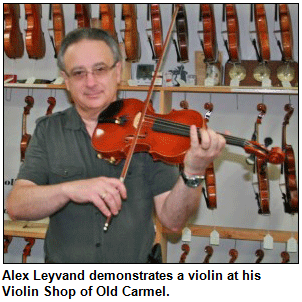 The exceptions involve significant Russian Jewish immigration in the late 1800s and early 1900s. Here is a link to Natalia's blog.
The exceptions involve significant Russian Jewish immigration in the late 1800s and early 1900s. Here is a link to Natalia's blog.
Natalia, who immigrated with her husband and young son, will be among Nelson's studio guests. She is director of development at the Indianapolis Russian School, which was founded 21 years ago by a group of Russian immigrants who wanted their children to learn about their heritage. Beyond classes in the Russian language, the school offers instruction in everything from math to chess.
In addition to a growing Russian community in the Indianapolis area, New Castle also has become the home of many immigrants since the mid-1980s, Natalia reports. She is originally from Ivanovo, a Russian province about 200 miles north of Moscow.
In an article in The Indianapolis Star last February, Natalia, 47, indicated that economic reasons motivated her family's immigration. In Russia, four generations of her family (six people) lived in a two-bedroom apartment.
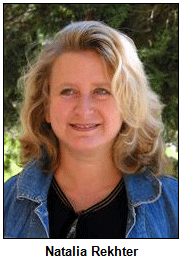 Nelson and Natalia are joined by Indianapolis resident Alex Leyvand, 65, owner of the Violin Shop of Old Carmel.
Nelson and Natalia are joined by Indianapolis resident Alex Leyvand, 65, owner of the Violin Shop of Old Carmel.
Alex, who also makes musical instruments and is a violinist, grew up in Moscow. He immigrated in 1989 - a few months before the breakup of the Soviet Union - with his wife, daughter and parents. In his homeland, Alex had played the violin in a prestigious orchestra based in Moscow. 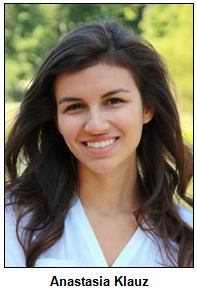 He says his family primarily immigrated because of "political differences" in his homeland.
He says his family primarily immigrated because of "political differences" in his homeland.
In addition to Alex and Natalia, Nelson will be joined by Carmel resident Anastasia Klauz, 24, whose family is from St. Petersburg. They immigrated when Anastasia was just 4 years old. Today, she is a family therapist for Eskenazi Health.
According to Peopling Indiana: The Ethnic Experience (Indiana Historical Society Press, 1996), large waves of Jewish immigration to the United States from Russia - as well as from Poland, Lithuania, Romania and other Eastern European countries - occurred from 1880 to 1924.
In Indiana, the major areas of settlement tended to be in the northwest part of the state, as well as in Indianapolis and Vincennes. Decades later - during the Soviet Union era - Jewish organizations across Indiana helped with the resettlement of other waves of immigrants.
According to the Russian and East European Institute at Indiana University, many Russian immigrants or Americans with Russian heritage settled - at least temporarily - in Bloomington "at the height of the Cold War" during the early 1960s.
That’s because Russian language instruction was being offered by IU and the U.S. Air Force.
"During World War II, IU began a long partnership with the U.S. military to teach foreign languages," the institute notes.
"Bloomington in the 1960s had a very large Russian community," according to the IU institute. "The decade was an ideal time for IU students to study the Russian language. While many Russians moved away when the Air Force Language Program ceased, there remained a corps of instructors."
Since 2009, the Indianapolis Russian School - that our guest Natalia Rekhter is affiliated with - has been located at University High School, a private, college prep school in Carmel. The Russian school offers piano lessons for children 5 years old and older; private tutoring for children and adults in the Russian language; document translation and other services.
In our rotating series about ethnic immigration to the Hoosier state, Hoosier History Live! has explored German, Irish, Scottish, Brazilian, Columbian and Venezuelan, Greek and Cuban immigration, among an array of others. In 2008, our first year on the air, we explored our state's Jewish heritage. Last summer, we delved into aspects of Swedish and Norwegian heritage.
(Note: We are linking to past show newsletters for shows produced since October of 2009. The German, Scottish, and Greek heritage shows were produced before that time. We need support for archiving all of our 300-plus show enewsletters and audio archives. We are operating on a very limited budget.)
Learn more:
- Russian & East European Institute at Indiana University.
- NPR podcast "Panic In A Suitcase" book review; novel takes a fresh look at a family's 1991 emigration from Odessa to Brighton Beach in Brooklyn, N.Y.
History Mystery
Mikhail Baryshnikov, the expatriate Russian dancer, has collaborated several times with a famous choreographer born in Indiana. She was the choreographer for the 1985 movie White Nights, which starred Baryshnikov and was set in Russia.  During the 1990s, the choreographer toured with Baryshnikov; they performed concerts in Indiana and elsewhere across the country that featured various forms of dance.
During the 1990s, the choreographer toured with Baryshnikov; they performed concerts in Indiana and elsewhere across the country that featured various forms of dance.
She was born in the town of Portland in far-eastern Indian in 1941. She has gone on to become a dominant international figure in dance, winning Tony and Emmy Awards. In addition to collaborating with Baryshnikov, she has collaborated with pop star Billy Joel for a Broadway show and choreographed sequences for the movie Amadeus (1984). In 2008, she was honored by the Kennedy Center for the Performing Arts.
Question: Who is the Indiana-born choreographer?
The prize pack includes a four tickets to the tickets to the Hoosier Hops & Harvest Festival at Story Inn, courtesy of Story Inn, four passes to the Indiana Experience, courtesy of the Indiana Historical Society, and two passes to Conner Prairie Interactive History Park, courtesy of Conner Prairie.
Roadtrip: Vernon, Ind.
Guest Roadtripper and freelance writer and photographer Jane Ammeson, who specializes in food, travel and personalities, suggests a Roadtrip to the charming town of Vernon in Jennings County, which is about 70 miles southeast of Indianapolis. That's Vernon, the historic village south of the larger town of North Vernon!
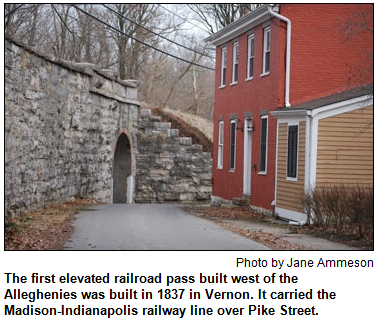 Jane reports that on July 11, 1863, Confederate General John Hunt Morgan, who was marauding through southeastern Indiana after crossing the Ohio River from Kentucky, arrived with his men just south of Vernon on the banks of the Muscatatuck River. Having defeated the Indiana Home Guard near Corydon, Morgan and his raiders had looted and burned their way through the hamlets dotting this part of the state.
Jane reports that on July 11, 1863, Confederate General John Hunt Morgan, who was marauding through southeastern Indiana after crossing the Ohio River from Kentucky, arrived with his men just south of Vernon on the banks of the Muscatatuck River. Having defeated the Indiana Home Guard near Corydon, Morgan and his raiders had looted and burned their way through the hamlets dotting this part of the state.
Morgan demanded the town surrender, but instead of laying down arms, Colonel Hugh T. Williams of the Indiana Legion told Morgan he "must take it by hard force."
Instead Morgan moved on to DuPont, where he and his men stole 2,000 hams from Frank Mayfield's meat packing plant and tied them to their saddles before riding on again.
"We bluffed him," says Wanda Wright of the Jennings County Historical Society Museum. "He didn't even come into Vernon."
Listed as a Historic District on the National Register of Historic Places, Vernon, platted in 1815 which is a year before Indiana became a state, is considered one of the best examples of a mid-19th-century Indiana community. More than 100 of its buildings date back to the 1800s, which is remarkable in a town with a population of less than 400. T.C. Steele, one of the state's most famous artists, used Vernon as the scenes for some of his best works including Street in Vernon (1886), Oaks of Vernon (1887), Vernon Beeches (1892) and Hills of Vernon (1894).
The Jennings County Historical Society is headquartered in an old stagecoach stop and inn built in 1838, located near the town square with its 1859 Italianate-style courthouse.
Vernon also hosts a huge Antique and Collectibles Market each Labor Day weekend!
Vernon and Jennings County are also the settings for the 1956 movie Friendly Persuasion starring Gary Cooper and Dorothy McGuire about a Hoosier Quaker family during the Civil War. The movie is based on Jessymyn West's novel 1945 novel, The Friendly Persuasion, about the same topic. Jessymyn West was born in Vernon in 1902 to a Quaker family and moved to California with her family when she was 6.
Indy Mayor Ballard on Marines history and 'old' Cathedral High
(July 26, 2014 - encore presentation) - An Indianapolis native, he grew up on the Eastside, attended the "old" Cathedral High School (when it was located downtown and had all male students) and eventually enlisted in the U.S. Marine Corps.
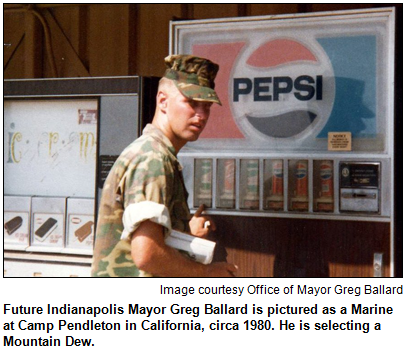 So there's much local history turf to cover with Mayor Greg Ballard of Indianapolis as he joins Nelson in-studio during an encore presentation of a show exploring history topics that have been intertwined with his life. (The original air date of this show was June 15, 2013.)
So there's much local history turf to cover with Mayor Greg Ballard of Indianapolis as he joins Nelson in-studio during an encore presentation of a show exploring history topics that have been intertwined with his life. (The original air date of this show was June 15, 2013.)
You won't want to miss Mayor Ballard's recollections of incidents that unfolded during the years that he hitchhiked from his Eastside neighborhood to Cathedral. Like generations of teenage boys before him who attended the downtown Cathedral, Greg Ballard, a member of the Class of '72, relied primarily on hitchhiking to get to and from school for four years.
During the show, Mayor Ballard, now 59, also shares details about the unlikely way his decision to enlist in the Marines occurred. After a 23-year military career, Mayor Ballard, a Republican, retired as a lieutenant colonel from the Marines in 2001 and returned to his hometown to enter private business.
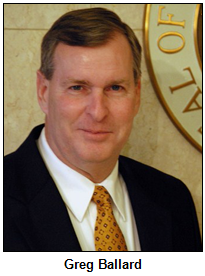 He also discusses other links between the Hoosier state and Marines, in addition to sharing his own experiences. His decision to enlist eventually led to assignments in places such as Okinawa, Japan; Saudi Arabia during the first Persian Gulf War; and Stuttgart, Germany, as well as in Michigan and North Carolina.
He also discusses other links between the Hoosier state and Marines, in addition to sharing his own experiences. His decision to enlist eventually led to assignments in places such as Okinawa, Japan; Saudi Arabia during the first Persian Gulf War; and Stuttgart, Germany, as well as in Michigan and North Carolina.
Before that, the future mayor attended Cathedral on a scholarship. His years there were preceded and followed by major changes. Since its founding in 1918, Cathedral had been located at 14th and Meridian streets.
In 1976, four years after he graduated, Cathedral merged with Ladywood, an all-girls Catholic academy located on the northeastside, a decision that was presented as a financial necessity for both schools. (The merged, co-ed school, which took the Cathedral name, is on the former Ladywood site on East 56th Street.) Previously, while Greg Ballard was attending Cathedral, Ladywood had merged in 1971 with Cathedral's "sister" school downtown, St. Agnes Academy.
Greg Ballard grew up in a family of five children. After graduating from Cathedral, he attended Indiana University, where a pivotal event occurred related to his decision to join the Marines.
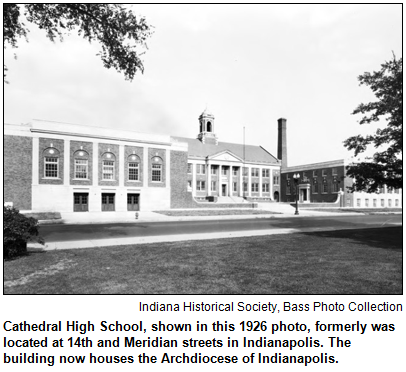 During the first Persian Gulf War, he was promoted to major. He met his wife, Winnie Ballard, a native of the Philippines, while on assignment in California.
During the first Persian Gulf War, he was promoted to major. He met his wife, Winnie Ballard, a native of the Philippines, while on assignment in California.
He had never run for political office before defeating incumbent Bart Peterson in the 2007 mayoral election in what has been called one of the biggest upsets in Indy's political history.
Hoosiers who have achieved distinction in the Marines - and are discussed during the show - include David Shoup (1904-1983), a Tippecanoe County native who grew up on farms there and near Covington. A Medal of Honor winner during World War II, Shoup led the U.S. invasion during the Battle of Tarawa in the Pacific Theater of the war. He rose to become the 22nd commandant of the U.S. Marines Corps, serving in the top post during the Eisenhower and Kennedy administrations. Shoup, who later became a vocal critic of the Vietnam War, is buried in Arlington National Cemetery.
Other Hoosiers who have served in the Marines - and who are discussed by Mayor Ballard during the show - include Carol Mutter, a retired lieutenant general who lives in Brownsburg. She was born in Colorado and became the first woman to receive the rank of lieutenant general in the Marine Corps.
Encore Roadtrip: Monument Circle for kids
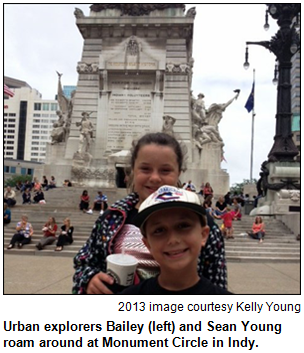 Guest Roadtripper Kelly Young of Baise Communications reported that she took her kids for a recent tour of Monument Circle in downtown Indianapolis. Her children were fascinated by Christ Church Cathedral, with its early gothic revival architecture, Tiffany stained-glass windows and pipe organ.
Guest Roadtripper Kelly Young of Baise Communications reported that she took her kids for a recent tour of Monument Circle in downtown Indianapolis. Her children were fascinated by Christ Church Cathedral, with its early gothic revival architecture, Tiffany stained-glass windows and pipe organ.
Kelly's daughter had studied President Lincoln in school and was fascinated to learn that the church bells had rung out as Lincoln's body lay in state at the nearby Capitol.
Kelly and crew then crossed the street, headed up the 330 steps (yes, walked!) to the observation level of the Soldiers and Sailors Monument for a great view of the city, and they visited the Civil War Museum in the lower level.
They topped off their Roadtrip with ice cream from the Chocolate Cafe, and then a quick trip back in time for Kelly at Rocket Fizz, a candy shop with nearly every type of novelty candy. Both of these sweet spots are right on the Circle.
From family grocers to supermarkets
|
(July 19, 2014) - For about 103 years, the Italian ancestors of Tom Castaldi were in the food business, primarily in Logansport, where they owned neighborhood grocery stores. Beginning in the 1880s, his great-grandparents' store sold not just "fruits, vegetables, tobaccos, but also ice cream and (even) featured an oyster bar," according to Tom.
Not only is Tom Castaldi (who grew up in Logansport and lives today in Fort Wayne) the Allen County historian, he has become an expert about the heyday of neighborhood groceries.
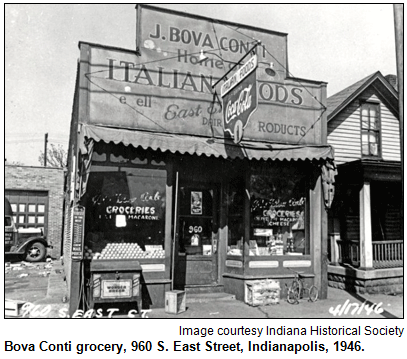 For generations, these family-owned stores were cherished in neighborhoods and villages across the state, from Lockerbie and Broad Ripple in Indianapolis to Logansport, where a candy case from the final Castaldi family's store is displayed at the Cass County Historical Museum.
For generations, these family-owned stores were cherished in neighborhoods and villages across the state, from Lockerbie and Broad Ripple in Indianapolis to Logansport, where a candy case from the final Castaldi family's store is displayed at the Cass County Historical Museum.
In addition to exploring family-run grocery stores and their social impact, Hoosier History Live also delves into the entree across Indiana of grocery chains, including those that eventually introduced the supermarket concept.
Indianapolis-based writer, researcher and editor Sharon Butsch Freeland (writer of numerous Historic Indianapolis articles) dug into the entrance of Cincinnati-based Kroger in the Indy market for a Feb. 12, 2013, article at historicindianapolis.com.
According to Sharon's thoroughly researched piece, Kroger entered the Indianapolis market clear back in the mid-1920s by acquiring an existing family-owned chain of 72 neighborhood groceries. So the initial Kroger stores in the Hoosier capital undoubtedly were located in small storefronts; the supermarket concept was introduced later.
Tom and Sharon join Nelson in studio to share insights about family-owned neighborhood groceries and their modern-era successors, the supermarket chains. This show undoubtedly will include tidbits about the evolution of the ways Hoosiers have shopped, cooked and lived.
Some history facts:
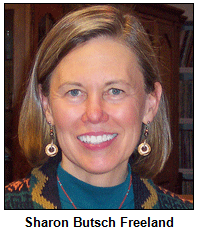 According to a recent column in The Indianapolis Business Journal by Greg Andrews, Marsh Supermarkets made retailing history 40 years ago. An executive in June 1974 at the Indiana-based chain made the first purchase in the country using a UPC bar code. (He bought a pack of Juicy Fruit chewing gum to test the brand-new scanner at a Marsh store.)
According to a recent column in The Indianapolis Business Journal by Greg Andrews, Marsh Supermarkets made retailing history 40 years ago. An executive in June 1974 at the Indiana-based chain made the first purchase in the country using a UPC bar code. (He bought a pack of Juicy Fruit chewing gum to test the brand-new scanner at a Marsh store.)- Our guest Sharon Butsch Freeland is a seventh-generation Hoosier; her maternal ancestors migrated from Ohio to Crawfordsville in 1828, and her paternal ancestors immigrated from Germany to Indianapolis in 1840.
- During the 103-year stretch in the food business, our guest Tom Castaldi's family had a total of eight stores in Logansport. On only two occasions, though, were two stores operating simultaneously.
Tom's great-grandfather, Lorenzo Solimano, had been born in Genoa, Italy in 1838. With his wife Mary, Lorenzo (who changed the spelling to Laurence) opened the first Logansport store in the 1880s. The last store was closed in 1983. The exhibit about the stores at the Cass County Historical Museum is titled "Growing Up Grocery."
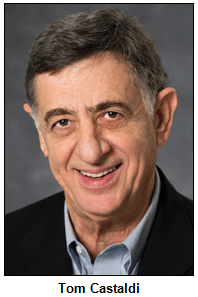 "Customers came in the neighborhood store up to the counter and gave their list of items - one by one - to the owner or clerk, who, in turn, fetched them off the shelf and stacked them on the counter," Tom recalls.
"Customers came in the neighborhood store up to the counter and gave their list of items - one by one - to the owner or clerk, who, in turn, fetched them off the shelf and stacked them on the counter," Tom recalls.
He adds: "My grandfather or father may not find it unusual to see hardware items in a modern 'mega-market.' But they would be rather surprised that I got my flu and shingles shots in a grocery pharmacy department."
The debut of the supermarket concept - which involves customers helping themselves to spacious aisles of products in a free-standing store with its own expansive, often four-sided parking lot - is unclear.
According to some accounts, the A&P chain introduced the supermarket concept in the 1930s in Pennsylvania. Other accounts point to a Kroger store in the Queens borough of New York City, also in the 1930s. The supermarket concept grew rapidly after World War II.
According to Sharon's research, a pivotal episode in the Indy area was the opening of a so-called "drive-in" Kroger (that is, a store with its own, expansive parking lot), which made the front page of The Indianapolis News in 1932.
"Before the 1930s, most grocery stores were narrow storefronts in commercial buildings that also contained other types of businesses, or groceries were rooms added on to the fronts of residences," Sharon notes. 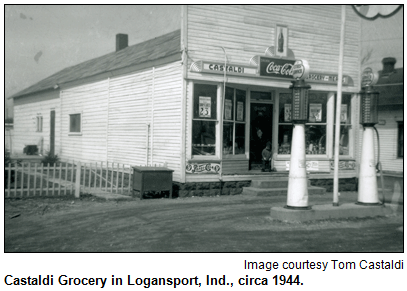 "Customers walked or took a bus to the nearest neighborhood business to get their goods, and usually bought only what they needed for that day or a few coming days."
"Customers walked or took a bus to the nearest neighborhood business to get their goods, and usually bought only what they needed for that day or a few coming days."
In 1931, Marsh had opened its first store; it was in Muncie. According to an article in The Indianapolis News in 1961, at which point the chain had 65 stores in five states, the first Marsh in Indy opened at East 52nd Street and Keystone Avenue in 1957. (Generations of family ownership of Marsh ended in 2006 when the company was purchased by Sun Capital Partners, based in Florida.)
O'Malia Food Markets made its debut in 1966 with a grocery in Carmel. Generations of Indy shoppers also patronized Atlas at East 54th Street and College Avenue (where a teenage David Letterman was a clerk in the 1960s), and Guidone, a grocery store at East 10th Street and Arlington Avenue owned by Italian immigrant Joe Guidone that was popular during the 1960s and '70s.
Small, family-owned stores of yore like the ones owned by the Italian ancestors of our guest Tom Castaldi often offered two cherished services, he notes: "No-interest credit and home delivery."
However, Tom notes the selection of grocery items was limited compared to modern supermarkets.
"Perhaps the neighborhood grocery had two types of pork and beans, or green beans, in cans on the shelf. Now the 'mega-stores' have shelving in rows as long as our entire building, with many brands of the same vegetable type."
He describes his growing-up years in a house adjacent to his family's grocery store this way: "It was like having a huge pantry available."
History Mystery
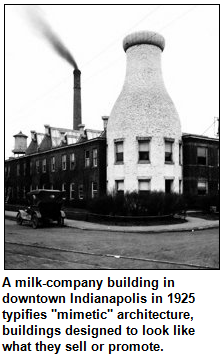 In the 1890s, a Civil War resident living in Greenwood started a dairy business that became one of the best-known in Central Indiana for more than 60 years.
In the 1890s, a Civil War resident living in Greenwood started a dairy business that became one of the best-known in Central Indiana for more than 60 years.
The dairy's headquarters on East 15th Street in Indianapolis was particularly memorable. Its corners were shaped like giant milk bottles. At stables nearby, the dairy kept horses to deliver milk to customers.
At one point, the dairy became the largest milk company in the state. It was sold in 1963 to Maplehurst Jersey Farms.
Question: What was the dairy?
The prize pack includes a gift certificate to McNiven's restaurant and two passes to the Indianapolis Zoo, courtesy of Visit Indy, and four passes to the Indiana Experience, courtesy of the Indiana Historical Society.
Roadtrip: More Swiss adventures, and 'bird town' designation
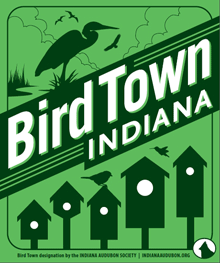 Guest Roadtripper Terri Gorney of Fort Wayne, who also volunteers at several conservation organizations, including ACRES, DNR and Limberlost, adds to last week's Berne report with notice of its upcoming Swiss Days festival on July 24, 25 and 26.
Guest Roadtripper Terri Gorney of Fort Wayne, who also volunteers at several conservation organizations, including ACRES, DNR and Limberlost, adds to last week's Berne report with notice of its upcoming Swiss Days festival on July 24, 25 and 26.
Terri reports that Swiss Days are celebrated with authentic Swiss costumes, great foods, crafts and merchandise, and you can also enjoy polka, accordions, gospel singers, a quilt show, an antique tractor and engine show, sawmill demonstrations, cheese making, wiener-dog races, sand sculptures, kid's tractor pull and a parade. Indiana certainly cherishes its many ethnic traditions.
During the festival, Berne will also be named "Bird Town No. 7" by the Indiana Audubon Society. This is a designation awarded to those communities that demonstrate an ongoing commitment to the protection of birds. Other "Bird Town" Hoosier communities include Geneva, Chesterton, Rome City, Nashville, Fort Wayne and Kendallville.
Judge Sarah Evans Barker, history-maker in Indiana courts
(July 12, 2014) - Even before becoming Indiana's first woman federal judge, Sarah Evans Barker was making history. More than 40 years ago, she became the first woman in the Hoosier state to be an assistant U.S. attorney.
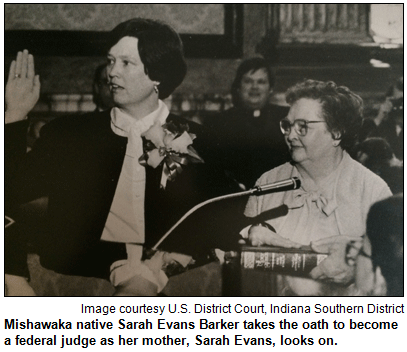 Now, as U.S. District Judge Sarah Evans Barker shifts to "senior status" - that is, a reduced caseload (only by 20 percent, though) - she is Nelson's in-studio guest, as Hoosier History Live! focuses on her pioneering life and career.
Now, as U.S. District Judge Sarah Evans Barker shifts to "senior status" - that is, a reduced caseload (only by 20 percent, though) - she is Nelson's in-studio guest, as Hoosier History Live! focuses on her pioneering life and career.
Known for her keen insights, eloquence and wit, Judge Barker also, for more than 20 years, has been a top civic leader in her home state, a distinction that has been noted in her raft of honors. They have included being named a Living Legend in 2010 by the Indiana Historical Society and, most recently, the Lifetime Achievement honoree of the 2014 Cultural Vision Awards.
She also is renowned, every July 4 season, for presiding at the naturalization ceremonies for hundreds of immigrants as they become new U.S. citizens.
A native of Mishawaka, Judge Barker has said she was a "late bloomer" and did not set out to become a judicial pioneer - or even, necessarily, a lawyer. In a recent interview with Nuvo Newsweekly, which presents the Cultural Vision Awards, Judge Barker attributed her decision to attend law school to a pivotal piece of advice she received at Indiana University.
 Years later, after her marriage to Ken Barker, then a partner at Bose McKinney & Evans in Indianapolis, the couple made another major decision. More than 35 years ago, they decided Ken Barker would be a stay-at-home dad (with their three children) while she pursued her legal career.
Years later, after her marriage to Ken Barker, then a partner at Bose McKinney & Evans in Indianapolis, the couple made another major decision. More than 35 years ago, they decided Ken Barker would be a stay-at-home dad (with their three children) while she pursued her legal career.
"There were no patterns," Judge Barker once told the Indianapolis Business Journal. "We had to make it up as we went."
In 1984, President Ronald Reagan nominated her at age 40 to be U.S. judge of the southern district of Indiana, with the result that she became the first woman on the federal bench in the Hoosier state.
Since then, Judge Barker has presided over several of the most high-profile federal cases in the state, including those involving overcrowding at the Marion County Jail, a proposed ban in Indianapolis on pornographic material, the sale of the Indianapolis Baptist Temple and class-action lawsuits involving Firestone tire.
She has served on national panels on judicial ethics and on the boards of history-focused organizations, including the Indiana Historical Society and the Indiana Bicentennial Commission that's overseeing celebrations for the state's 200th birthday in 2016.
Last month, Judge Barker served as the emcee for an Indiana State Museum Foundation gala that honored another trail-blazing woman, Rabbi Sandy Sasso of Indianapolis. Rabbi Sasso was the first woman in the country to be ordained as a rabbi in the Jewish reconstructionist movement; her pioneering role was the focus of a Hoosier History Live! show last October.
According to a profile of Judge Barker in 19 Stars of Indiana: Exceptional Hoosier Women (IU Press and IBJ Media, 2009) by Michael Maurer, she grew up as a "tomboy" in Mishawaka:
"I was not interested in sewing and cooking. ... I did them, but only so I could also take woodworking and sheep-raising, which were regarded as 'boys' projects."
But she didn't consider attending law school until a dorm counselor at IU suggested it during her junior year.
Judge Barker graduated from the American University School of Law in Washington D.C. After that, she worked as a legislative aide on Capitol Hill until marrying Ken Barker, whom she had met in Mishawaka.
In addition to being the parents of three grown children - Katie, Susan and Grady - the Barkers now are grandparents.
Some history facts:
- In 1972, Judge Barker became the first woman to serve as assistant U.S. attorney in Indiana.
- At a naturalization ceremony earlier this month on the lawn of the Benjamin Harrison Presidential Site, Judge Barker presided as 101 people became U.S. citizens. According to a report in The Indianapolis Star, they included immigrants from as far away as Zimbabwe.
- In law school, her classmates included future Indianapolis attorney Ron Elberger, who has become known as the "Late Night Lawyer" because his high-profile clients have included David Letterman. (Our host Nelson profiled Ron Elberger in his "Late Night Lawyer" capacity - and quoted Judge Barker in The Indianapolis News article - clear back in the 1980s.)
For our show with Judge Barker, we have a special format and won't be taking call-in questions and comments from listeners. However, we will have a report from our Roadtripper correspondent and the History Mystery.
Learn more: Video interview with Judge Barker from the Indianapolis Business Journal
History Mystery
Although U.S. Supreme Court Chief Justice John Roberts was born in Buffalo, N.Y., he grew up in northern Indiana and graduated from La Lumiere School, a boarding school in LaPorte.
Decades earlier, another U.S. Supreme Court justice also had deep connections to Indiana, albeit to the other end of the state. He was born in southern Indiana in 1890. His family members were farmers near the Ohio River.  The future Supreme Court justice attended Indiana University, where he was a student leader.
The future Supreme Court justice attended Indiana University, where he was a student leader.
In the 1930s, Hoosiers elected him to the U.S. Senate. A Democrat, he helped spearhead Franklin D. Roosevelt's "New Deal" legislation through Congress.
The native Hoosier was appointed to the U.S. Supreme Court by Harry S. Truman. He served on the court from 1949 until 1956.
The prize pack includes two admissions to the Benjamin Harrison Presidential Site, courtesy of Visit Indy, four passes to the Indiana Experience, courtesy of the Indiana Historical Society, and two passes to Conner Prairie Interactive History Park, courtesy of Conner Prairie.
Roadtrip: Swiss-influenced Berne
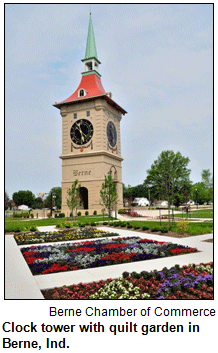 Guest Roadtripper and film historian Eric Grayson suggests a trip to what he calls "historic and not-so-historic Berne," which is about 25 miles south of Fort Wayne.
Guest Roadtripper and film historian Eric Grayson suggests a trip to what he calls "historic and not-so-historic Berne," which is about 25 miles south of Fort Wayne.
Says Eric: "Berne fashions itself as a Swiss town, and they have a lot of historic and new buildings that show a Swiss influence. The area is full of Amish, so watch out that a stray horseshoe nail doesn't pop your tire. No such luck for me!"
Berne was founded in 1852 Mennonite settlers from Switzerland, and the railroad went through in 1871. Despite some new buildings, such as their 2010 clock tower, there's a lot of history in Berne. Most of the historic downtown is intact, full of nice antique stores.
There's a great cheese factory called Swissland Cheese, and there's an old restaurant in town called Palmer House that is famous for pies. If you're in a hurry, there's a newer place called The White Cottage that has excellent soups and sandwiches.
If you like bed-and-breakfasts in historic buildings, the Schug House from 1907 is an outstanding one, serving food from the local area.
Presidential visits to Indiana
 (July 5, 2014) - As he traveled to Washington D.C. for his presidential inauguration in 1861, Abraham Lincoln stopped in Indianapolis and spoke from the balcony of a hotel.
(July 5, 2014) - As he traveled to Washington D.C. for his presidential inauguration in 1861, Abraham Lincoln stopped in Indianapolis and spoke from the balcony of a hotel.
Harry Truman got a speeding ticket near Greenfield during a road trip with his wife, Bess, in 1953 after they had left the White House.
Franklin D. Roosevelt visited the renowned French Lick Springs Hotel in 1931 for a key meeting with Democratic power brokers.
And Richard Nixon came to the Indiana University Medical Center in 1974 to visit his daughter Julie, who had been hospitalized suddenly while working for the Saturday Evening Post.
During this patriotic-themed weekend, Hoosier History Live! explores the range of visits by American presidents (including future presidents, former presidents or their families) to the Hoosier state.
Nelson is joined in-studio by two author/historians who have written about some of the POTUS visits:
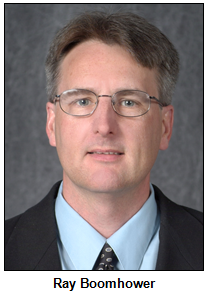 Ray Boomhower of the Indiana Historical Society, the editor of Traces of Indiana and Midwestern History magazine. An upcoming issue of Traces will describe future president FDR's pivotal visit to French Lick. (The article was written by Jim Fadely, an expert on the resort hotel and a popular guest on previous Hoosier History Live! shows.) In previous issues of Traces, Ray has written about other presidential visits; they include a scandal that unfolded in 1907 when cocktails were served at a soiree Teddy Roosevelt attended at the Indianapolis mansion of his vice president, Charles Fairbanks.
Ray Boomhower of the Indiana Historical Society, the editor of Traces of Indiana and Midwestern History magazine. An upcoming issue of Traces will describe future president FDR's pivotal visit to French Lick. (The article was written by Jim Fadely, an expert on the resort hotel and a popular guest on previous Hoosier History Live! shows.) In previous issues of Traces, Ray has written about other presidential visits; they include a scandal that unfolded in 1907 when cocktails were served at a soiree Teddy Roosevelt attended at the Indianapolis mansion of his vice president, Charles Fairbanks.- And Al Hunter, a columnist for The Weekly View newspaper that serves the eastside of Indy and Greenfield. Al's mother was a patient at the IU Medical Center just a few rooms away from Julie Nixon Eisenhower when her father visited during the final year of his presidency. Al notes that, as vice president, Richard Nixon had visited Indy in connection with another hospital. Nixon came for the ground-breaking of Community Hospital (now known as Community East) in 1954.
Of course, Benjamin Harrison, the only president elected from Indiana, made several visits to his home state after he won the country's top office in 1888.
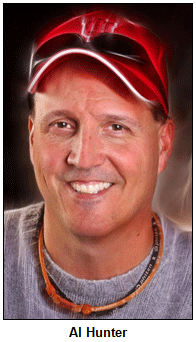 Abe Lincoln, who lived in southern Indiana from ages 7 to 21, spoke from the balcony of the Bates House in downtown Indy as he traveled in February 1861 from Springfield, Ill., to the nation's capital for his inaugural. His talk touched on the need to preserve the Union.
Abe Lincoln, who lived in southern Indiana from ages 7 to 21, spoke from the balcony of the Bates House in downtown Indy as he traveled in February 1861 from Springfield, Ill., to the nation's capital for his inaugural. His talk touched on the need to preserve the Union.
During the Centennial celebrations in 1916 of Indiana's statehood, Woodrow Wilson attended a parade on Monument Circle and spoke at the Indiana State Fairgrounds. Our guest Al Hunter notes that two years earlier, when Wilson was president of Princeton, he visited Butler University, which then was located in Irvington.
Both Roosevelts - Teddy and FDR - also made multiple visits to the Hoosier state. In 1902, Teddy, who was suffering from a serious injury to his leg, spoke in Tipton and Noblesville during train stops. While in Indianapolis later on that trip, he was rushed to St. Vincent Hospital for treatment.
FDR visited Vincennes for the dedication of the George Rogers Clark Memorial in the 1930s. And in 1936, he opened the Indiana State Fair.
He stayed at the ornate French Lick Springs Hotel in 1931 when he was maneuvering to be the Democratic presidential nominee. The resort hotel became internationally known beginning in the early 1900s when it was purchased and lavishly enhanced by Thomas Taggart, a former Indianapolis mayor and nationally powerful Democratic power broker; the 1931 gathering attended by FDR was the National Governors Conference. Truman also visited French Lick in 1944.
But the best-known visit by Truman unfolded during June 1953 when the former president and his wife, Bess, took a road trip in their car - without Secret Service protection - to savor America. ![]() During the journey, which is the focus of the book Harry Truman's Excellent Adventure: The True Story of an American Road Trip by Matthew Algeo (Chicago Review Press, 2009), the Trumans were house guests at the North Meridian Street mansion of another nationally powerful Democrat, banker Frank McKinney Sr.
During the journey, which is the focus of the book Harry Truman's Excellent Adventure: The True Story of an American Road Trip by Matthew Algeo (Chicago Review Press, 2009), the Trumans were house guests at the North Meridian Street mansion of another nationally powerful Democrat, banker Frank McKinney Sr.
It was during this road trip that Truman received a speeding ticket near Greenfield.
So many presidents have visited Indiana during our nearly 200 years of statehood that we can't explore all of them. But here’s a sampling of others:
- In 1842, Martin Van Buren, by then a former president, tumbled out of his carriage in Plainfield while traveling on the National Road. According to folklore, the carriage was deliberately tipped into the mud because Van Buren, while president, had vetoed a bill to fund improvements for the National Road, now U.S. 40.
- Dwight and Mamie Eisenhower stayed at a home (on the northside of Indy) during the 1950s when it was owned by one of his former top military aides. The house now is owned by Emerson Houck, a retired Lilly executive and author who has been a Hoosier History Live! guest.
- Visits by John F. Kennedy include a speech at a Muncie factory when he was a presidential candidate in 1960, as well as at a rally at the Indianapolis airport two years later.
- Barack Obama has made several visits to Indiana, particularly during his Democratic primary battle with Hillary Rodham Clinton in 2008. They included a visit by the entire future First Family - Obama, wife Michelle and their two daughters - to the Dunham House in Tipton County. The Dunham House, a historic farmhouse that was the home for several generations of Obama's maternal ancestors, has been the focus of Hoosier History Live! shows.
History Mystery
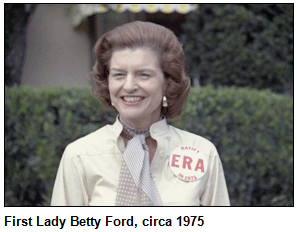 In October 1976, First Lady Betty Ford visited Indianapolis to celebrate the opening of a new building. It houses a cultural institution that, even then, had been a part of the community since the 1920s at various locations.
In October 1976, First Lady Betty Ford visited Indianapolis to celebrate the opening of a new building. It houses a cultural institution that, even then, had been a part of the community since the 1920s at various locations.
Its new building, though, was regarded as a major step forward in civic pride. Mrs. Ford received a guided tour the night before the new building opened to the public.
Question: What is the cultural institution?
The prize pack includes a gift certificate to Dick's Last Resort restaurant, courtesy of Visit Indy, four passes to the Indiana Experience, courtesy of the Indiana Historical Society, and two passes to Conner Prairie Interactive History Park, courtesy of Conner Prairie.
Roadtrip: Auto heritage mecca in Auburn and Dekalb County
Guest Roadtripper and public historian Glory-June Greiff asks, "How about a trip to Auburn? It really doesn't take long from Indianapolis via I-69, and you can stop in downtown Fort Wayne at the Pembroke Cafe for yummy bakery treats or an early lunch of soup, salad or sandwiches. Or catch them on the way back for supper."
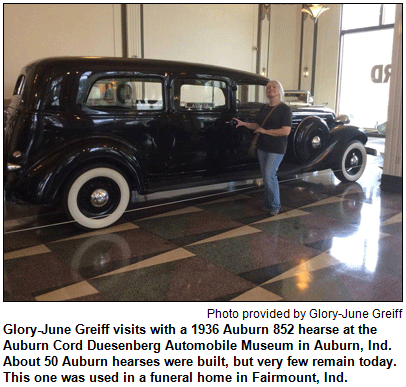 The Auburn Cord Duesenberg Museum is only one of the many intriguing places to visit in Auburn and the surrounding area, way up in the northeast corner of Indiana. The museum is an Art Deco delight, filled not only with a myriad of examples (all restored and runable!) of the three cars of its name, but numerous others, including many one-offs made in Indiana (and some cool Studebakers - Glory is from the South Bend area).
The Auburn Cord Duesenberg Museum is only one of the many intriguing places to visit in Auburn and the surrounding area, way up in the northeast corner of Indiana. The museum is an Art Deco delight, filled not only with a myriad of examples (all restored and runable!) of the three cars of its name, but numerous others, including many one-offs made in Indiana (and some cool Studebakers - Glory is from the South Bend area).
Indiana once was second only to Michigan in automobile production, and though many have closed in recent years, it remains home to a variety of auto parts manufacturers.
The A-C-D Museum focuses on the cars - and also on the men who designed and built them. The office of E.L. Cord looks as if he just stepped out for lunch, for example. Over the years, the museum has added several interactive exhibits incorporating materials from the extensive archives.
An amazing number of museums are located in and around Auburn. Adjacent to the A-C-D Museum is the National Auto and Truck Museum, located in adjacent historic buildings, containing trucks spanning several decades, as well as numerous postwar classic cars. The museum also houses a huge collection of model trucks and automobiles.
Other museums include the Hoosier Air Museum at the DeKalb County Airport on County Road 62.
And then just outside Auburn off I-69 are two separate museums funded by the Kruse Foundation, the National Military History Center and the Kruse Automotive and Carriage Museum. There are even more museums in the DeKalb County towns of Garrett and Butler.
But Auburn itself is a nice county-seat town fill of beautiful old buildings if, like Glory, you enjoy walking amidst such treasures. Don't miss the courthouse, built in 1911, and the Eckhart Library on South Jackson Street, also opened in 1911.
All this walking might leave you wanting ice cream or a little snack, and there's a great little drive-in in the 1400 block north of Main Street, the old highway going north out of town. It has just been remodeled, so it doesn't have that wonderful '60s look anymore, but, says Glory, "I can vouch for the fact that their shakes are still great!"
Passenger pigeons and other extinct or endangered birds
|
(June 28, 2014) - Passenger pigeons and Carolina parakeets are long gone from the Hoosier state - as well as everywhere else. In fact, the last wild passenger pigeon was shot in the southeastern Indiana town of Laurel in 1902, according to one of our guests.
Not only does Hoosier History Live! explore species of birds that once existed in Indiana, we also look at some of the 26 bird species considered endangered in the state. 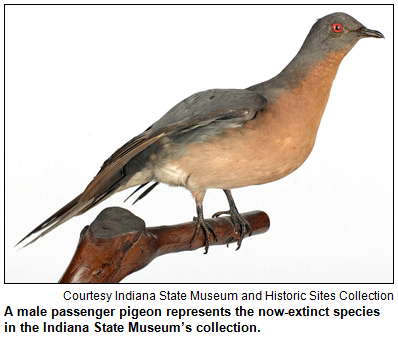 Whooping cranes and cerulean warblers are among them. Nelson is joined by three guests:
Whooping cranes and cerulean warblers are among them. Nelson is joined by three guests:
- Joel Greenberg, an Illinois-based author of the new book A Feathered River Across the Sky: The Passenger Pigeon's Flight to Extinction. According to Joel, the passenger pigeon once was the most abundant bird in North America. Accounts by early settlers describe massive flights that darkened the sky, sometimes for days.
- Don Gorney, director of bird conservation and education for Amos Butler Audubon. Not only does Don give popular bird-watching walks across central Indiana, he has been a popular guest on previous Hoosier History Live! shows.
- And Damon Lowe, chief curator of science and technology at the Indiana State Museum. From Aug. 10 through Dec. 21, 2014, the State Museum will host an exhibit about the history of the passenger pigeon; it will include a small display of male and female passenger pigeon specimens.
 According to our guest Don Gorney, the Carolina parakeet was "the only parrot species native to the eastern United States." It was gone from Indiana by the mid-1800s. So was the ivory-billed woodpecker, which Don describes as "the largest woodpecker found in the U.S." Like the passenger pigeon, those two species are extinct.
According to our guest Don Gorney, the Carolina parakeet was "the only parrot species native to the eastern United States." It was gone from Indiana by the mid-1800s. So was the ivory-billed woodpecker, which Don describes as "the largest woodpecker found in the U.S." Like the passenger pigeon, those two species are extinct.
Whooping cranes, although small in number and listed as federally endangered, regularly migrate through Indiana, Don reports. Other species listed as endangered in Indiana - in addition to the cerulean warbler (which Don describes as "a small, bluish warbler of hardwood forests") - include the piping plover.
 "This pale, small shorebird no longer nests in Indiana," Don says, "but it does migrate through in small numbers."
"This pale, small shorebird no longer nests in Indiana," Don says, "but it does migrate through in small numbers."
According to our guest Joel Greenberg, this year marks the centenary of the extinction of the passenger pigeon. Although the last wild bird was shot in 1902 in Indiana, the final passenger pigeon in captivity died in 1914 in the Cincinnati Zoo.
"The story of the passenger pigeon," Joel writes, "is a cautionary tale that no matter how common something is - be it alive or something inanimate like fuel or water - we can cause its depletion if we are not careful in our use."
According to Joel's book, when European settlers arrived in North America, "25 to 40 percent of the continent's birds were passenger pigeons, traveling in flocks so massive as to block out the sun for hours or even days. 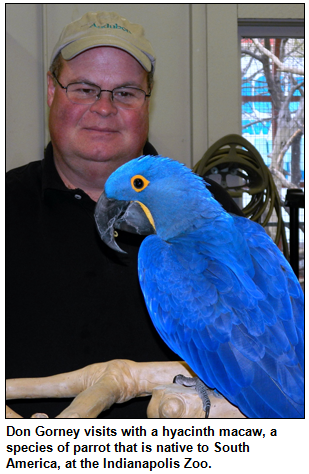 The downbeats of their wings would chill the air beneath and create a thundering roar that would drown out all other sound."
The downbeats of their wings would chill the air beneath and create a thundering roar that would drown out all other sound."
Among those who documented the presence of immense flocks of passenger pigeons in the Midwest was John James Audubon (1785-1851), the famous naturalist, artist and ornithologist.
Passenger pigeons were described as trim, muscular, speedy and nomadic. Unlike the carrier pigeon (rock pigeon) that originated in Europe and is now a common site in cities, passenger pigeons were native to the eastern half of the United States and Canada, Joel notes.
In addition to the passenger pigeon and the Carolina parakeet - a gregarious species that our guest Don Gorney says traveled in "loud flocks which made it easy for farmers to shoot many of them at a time" - another extinct bird that once lived in Indiana was the Eskimo Curlew. Don describes it as "a large snowbird that once was present in very large numbers as it migrated through the United States to its breeding grounds on the Canadian tundra."
Among the species that currently are endangered in Indiana, the cerulean warbler "needs large forest blocks to nest, but this type of habitat is disappearing," Don says.
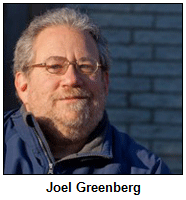 According to our guest Damon Lowe, of the 26 bird species listed as endangered in Indiana, four also are on federal lists.
According to our guest Damon Lowe, of the 26 bird species listed as endangered in Indiana, four also are on federal lists.
The upcoming exhibit at the Indiana State Museum will explore the impact that passenger pigeons have had on society and the story of their decline as well as highlight other species that are threatened. The exhibit eventually will travel to other state historic sites, including the Limberlost and Gene-Stratton Porter sites (in Geneva and Rome City) and Angel Mounds.
Learn more:
- Modern bird extinctions in the U.S.
- Indiana Dept of Natural Resources, Endangered Wildlife information.
- Indiana Dept of Natural Resources, Endangered Species.
- Project Passenger Pigeon.
Roadtrip: Upcoming county fairs
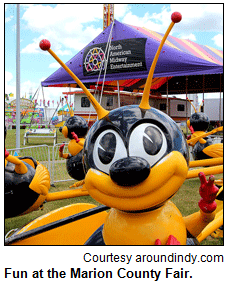 What can be more nostalgic than the sights, sounds and smells of a trip to the county fair?
What can be more nostalgic than the sights, sounds and smells of a trip to the county fair?
Guest Roadtripper Daina Chamness of Yours Truly Foods and other culinary adventures too numerous to count will talk about upcoming county fairs.
As the Marion County Fair winds down this Sunday, you'll have the St. Joseph, Pulaski, Boone, Shelby, and Bartholomew county fairs to looks forward to around the upcoming 4th of July weekend. Tune in this Saturday for all the particulars!
History Mystery
In northern Indiana, a wildlife area has become a popular destination for visitors to watch thousands of a species of migratory birds that stop there during the fall. 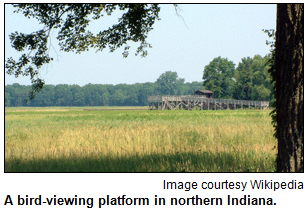 In what has been described as "one of the most impressive wildlife spectacles in the Midwest," thousands of the birds - flying from all directions, with distinctive cries - gather in the northwestern Indiana area to feed before continuing their migration to the south.
In what has been described as "one of the most impressive wildlife spectacles in the Midwest," thousands of the birds - flying from all directions, with distinctive cries - gather in the northwestern Indiana area to feed before continuing their migration to the south.
Question: What is the species of bird that gathers there by the thousands in the fall?
The prize pack includes two tickets to the Eiteljorg Museum, courtesy of Visit Indy, four passes to the Indiana Experience, courtesy of the Indiana Historical Society, and two passes to Conner Prairie Interactive History Park, courtesy of Conner Prairie.
Flag of Indy, anthem, 'Indiana' movie and other symbolism
(June 21, 2014) - Did you know the city of Indianapolis has an official flag? You won't confuse it with the official state of Indiana flag, which has a torch and a burst of 19 stars symbolizing the Hoosier state as the 19th to enter the Union. Gold and dark blue are the predominant colors on the state flag, which is well-known.
The obscure flag representing the Hoosier capital has a white cross and a lighter shade of blue, with a white star in the middle of a red circle. 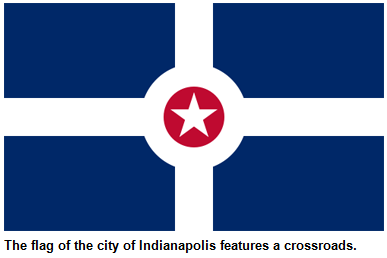 It was designed in 1962 by an 18-year-old freshman at the Herron School of Art, according to an article in The Indianapolis Star published in 2012 on the flag's 50th anniversary.
It was designed in 1962 by an 18-year-old freshman at the Herron School of Art, according to an article in The Indianapolis Star published in 2012 on the flag's 50th anniversary.
Our guest is a beloved historian who occasionally wears a lapel pin depicting the Indy flag. George Geib, who retired last month after a long career as a distinguished professor of history at Butler University, joins Nelson in studio as we explore an array of symbols for the city of Indy and for the Hoosier state. Just like our host Nelson, Professor Geib is the author of books about various aspects of Indianapolis history.
During this month that includes Flag Day, Professor Geib and Nelson also explore products created to tout the Hoosier state and its capital city, in addition to the seldom-seen city flag. (If you want to catch the flag of Indianapolis in action - flapping in the summer breeze - visit the City-County Building. Along with the American flag, the city flag flies on a pole in the courtyard on the south side of the 28-story office tower that houses city offices, including, on the top floor, Mayor Greg Ballard's office.)
Professor Geib and Nelson also will share details about a silent movie, titled Indiana, produced in 1916 in connection with the celebration of the Centennial of Indiana's statehood.
By the way, the state flag also was an outgrowth of the Centennial. In 1916, the General Assembly, as part of the Centennial celebrations, called for the adoption of a state flag. The Daughters of the American Revolution sponsored a contest to select the winner. 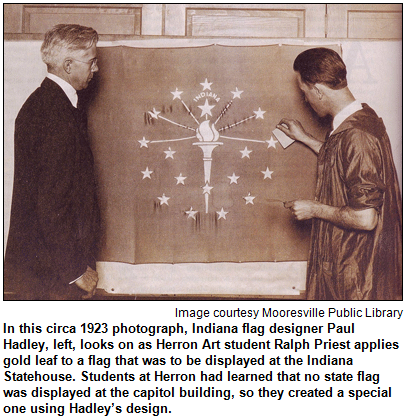 Mooresville artist Paul Hadley created the design that won among more than 200 entries.
Mooresville artist Paul Hadley created the design that won among more than 200 entries.
The lapel pin (depicting the city of Indy flag) worn by our guest Professor Geib was given to him by former Mayor William Hudnut. In addition to writing books about aspects of the capital city, including Indianapolis: Hoosiers' Circle City (Continental Heritage Press) and Indianapolis First (Indianapolis Chamber of Commerce), Professor Geib has been named a Sagamore of the Wabash and has served on many civic and historic boards, including the Indianapolis Historic Preservation Commission.
Professor Geib has been investigating whether, as some sources claim, the city of Indy has an official anthem. He shares results of his research during our show.
As for Indiana, the silent movie made in 1916: Here is some of the footage (James Whitcomb Riley with Children on Lockerbie Street) featuring Hoosier poet James Whitcomb Riley surrounded by children on the lawn of the Lockerbie residence, now known as the James Whitcomb Riley Museum Home.
According to an Indianapolis Star story in 1916, the Indiana movie also included footage of a massive pageant held for several consecutive evenings at Riverside Park that celebrated the Centennial. The pageant and other details about the way the Centennial was celebrated - as well as plans for our upcoming Bicentennial in 2016 - were explored during a Hoosier History Live! show last year with James Madison, a professor emeritus of history at IU who is a member of the Indiana Bicentennial Commission.
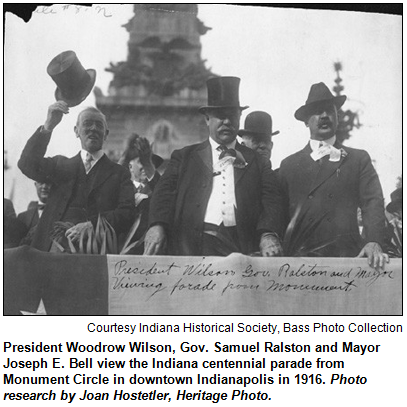 To give you a sampling of other film from the 1916 era, we are including this Indianapolis 1916 Ford newsreel footage featuring shots of Monument Circle, trolley cars going by, "Pearl Street, the Grand Canyon of Indianapolis," and other magnificent sights!
To give you a sampling of other film from the 1916 era, we are including this Indianapolis 1916 Ford newsreel footage featuring shots of Monument Circle, trolley cars going by, "Pearl Street, the Grand Canyon of Indianapolis," and other magnificent sights!
Also from that era, More Indianapolis 1916 features shots of Lockerbie street, James Whitcomb Riley with cigar, Centennial parade on Monument Circle with U.S. President Woodrow Wilson and Indiana Governor Samuel Ralston, 30,000 schoolchildren participating in a flag drill, the (now-gone) Emrichville Bridge over White River, scenes from Riverside Park, and much more!
With Professor Geib during Saturday's show, we also explore a fascinating footnote to Indy's history known as "Hanna's Folly." In 1831, civic leader Robert Hanna launched a steamboat on the White River to prove that the waterway was so navigable that it could be a major trade route.
Problem was, the steamboat (named the Robert Hanna in his honor) ran aground on sand in the shallow White River and remained stranded for an extended period, becoming a laughingstock. Professor Geib shares details about the embarrassing incident in early Indy history.
Obviously, the ill-advised steamboat never became a symbol of the Hoosier capital.
The flag designed in 1962 that does symbolize Indy (even though many folks don't know about it) was created by Roger Gohl, a Herron freshman. According to the Indianapolis Star story, he entered the competition because he wanted the $50 offered to the winner by the Indianapolis Chamber of Commerce.
The flag's wide, white cross symbolizes Indy as the "Crossroads of America," the city's longtime slogan.
Learn more: Indiana state symbols.
Roadtrip: Roann, Ind.
 Guest Roadtripper and freelance writer and photographer Jane Ammeson, who specializes in food, travel and personalities, tells us that "a former railroad town located on the Eel River in Wabash County, Roann (population 400), is hardly on anyone's list of places to go. But with a restored wooden covered bridge, grist mill built in 1855, the Paw Paw Township Carnegie Library (out of 238 such libraries, Roann's is the 214th smallest in size) and a generations-old family restaurant, Lynn's, in the downtown, Roann has kept its small town charm."
Guest Roadtripper and freelance writer and photographer Jane Ammeson, who specializes in food, travel and personalities, tells us that "a former railroad town located on the Eel River in Wabash County, Roann (population 400), is hardly on anyone's list of places to go. But with a restored wooden covered bridge, grist mill built in 1855, the Paw Paw Township Carnegie Library (out of 238 such libraries, Roann's is the 214th smallest in size) and a generations-old family restaurant, Lynn's, in the downtown, Roann has kept its small town charm."
Jane Ammeson continues: "Historic homes and businesses in pristine shape, an original log cabin built in 1863 and a vibrant community heritage dedicated to the enhancement and preservation of the town's cultural and architectural heritage resulted in the Roann Historic District officially being listed on the National Register of Historic Places in 2013. Roann is definitely a bypassed gem."
History Mystery
 A few states have official state pies. The state pie of Florida is key lime pie. In Massachusetts, it's Boston cream pie. Apple pie is the official state pie of Vermont.
A few states have official state pies. The state pie of Florida is key lime pie. In Massachusetts, it's Boston cream pie. Apple pie is the official state pie of Vermont.
Since 2009, Indiana has had an official state pie. The world's largest maker of this kind of pie is located in far-eastern Indiana.
Question: What kind of pie is it?
The call-in number is (317) 788-3314. Please do not call into the show until you hear Nelson pose the question on the air, and please do not try to win the prize if you have won any other prize on WICR during the last two months.
The prize pack includes a gift certificate to LePeep Restaurant, courtesy of Visit Indy, four passes to the Indiana Experience, courtesy of the Indiana Historical Society, and two passes to Conner Prairie Interactive History Park, courtesy of Conner Prairie.
Ask Nelson - and photographer colleague, too
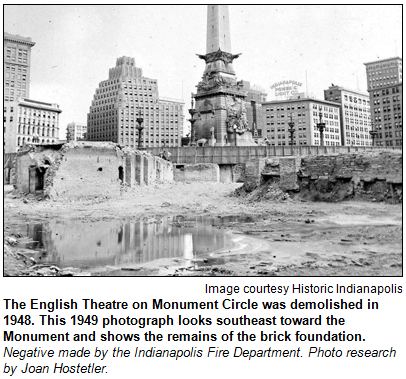 (June 14, 2014) - Once again, Hoosier History Live! turns the tables on our host, Indianapolis-based author/historian Nelson Price, opens the phone lines and invites listeners to call in with questions about our Hoosier heritage.
(June 14, 2014) - Once again, Hoosier History Live! turns the tables on our host, Indianapolis-based author/historian Nelson Price, opens the phone lines and invites listeners to call in with questions about our Hoosier heritage.
Nelson, who calls himself a "garbage can of useless Hoosier trivia," is joined in studio by his collaborator on many projects, photographer extraordinaire Garry Chilluffo of Chilluffo Photography.
Garry, whose specialties include architectural photography, collaborated with Nelson and photo historian Joan Hostetler on Indianapolis Then and Now (Thunder Bay Press), a popular visual history book about the evolution of the Hoosier capital.
So in addition to calling Nelson with questions, listeners also ask questions of Garry, whose expertise includes many aspects of transportation history.
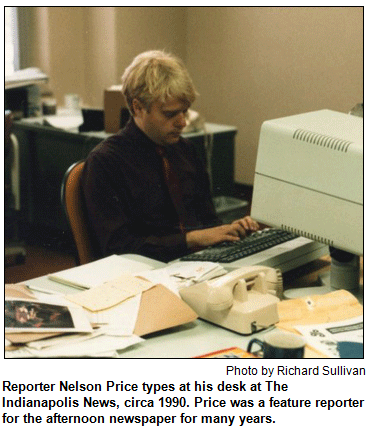 During the show, Garry shares insights about the trolley system that once flourished in Indy, drawing from the book Indianapolis Railways (Pioneer Press of West Virginia) by the late Jerry Marlette.
During the show, Garry shares insights about the trolley system that once flourished in Indy, drawing from the book Indianapolis Railways (Pioneer Press of West Virginia) by the late Jerry Marlette.
Between phone calls from listeners, Nelson and Garry share insights about sites featured in their Then and Now book, as well as about famous Hoosiers whom Nelson has interviewed or researched - and some of whom Garry has photographed.
They include maestro Josef Gingold, the founder of the International Violin Competition in Indy. Garry photographed Gingold (1909-1995), a distinguished professor at the world-renowned Indiana University School of Music, so the maestro's features could be embossed on the gold medal now given to winners of the violin competition.
Professor Gingold is among the more than 160 historic and contemporary notables featured in Nelson's book, Indiana Legends: Famous Hoosiers from Johnny Appleseed to David Letterman (Hawthorne Publishing).
So is Gingold's star pupil, internationally famous violinist Joshua Bell, a Bloomington native. Nelson shares an anecdote related to the first time he interviewed Joshua, who was disembarking from a commercial airline with his Stradivarius violin (estimated value: $2 million) in tow. (Since then, Joshua has upgraded to an even more expensive Stradivarius.)
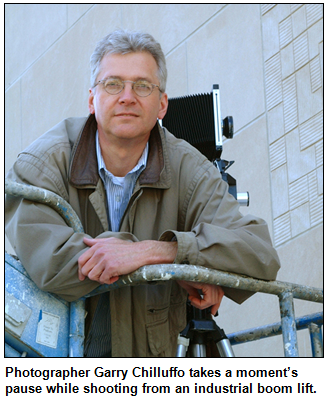 The airline/violin anecdote is relevant because of the recent contretemps involving Indianapolis Symphony Orchestra concertmaster Zach De Pue and a commuter airline that initially refused to let him bring his historic violin aboard.
The airline/violin anecdote is relevant because of the recent contretemps involving Indianapolis Symphony Orchestra concertmaster Zach De Pue and a commuter airline that initially refused to let him bring his historic violin aboard.
During the show, Garry shares insights about the historic Wholesale District in the south portion of downtown Indy, an area that includes Union Station, where dozens of retailers sold produce and other wares.
Garry also discusses Lockefield Gardens, which opened in 1938 as the first major public housing project in the city. Among the notable Hoosiers who grew up near Lockefield Gardens is a legendary athlete included in Nelson's books: Oscar Robertson, who led Attucks High School to back-to-back state championship titles before his outstanding career as a college and pro player.
And Nelson discusses his multiple interviews over the years with a Crawfordsville native who will be named a Living Legend by the Indiana Historical Society next month: Crossword puzzle guru Will Shortz, puzzle-master of the New York Times and author of many crossword books.
Will, who became the first (and, so far, only) person to graduate from IU with a degree in enigmatology (the study of puzzles), grew up on a horse farm near Crawfordsville.
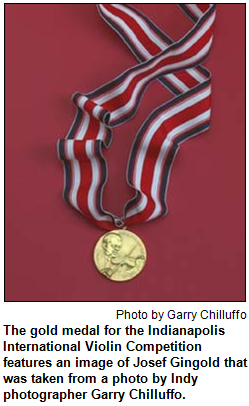 Moving from games to historic fun, Nelson and Garry also discuss the bygone Riverside Amusement Park that flourished for decades on the westside of Indy. Garry reviews what's on the site today of the former carnival rides, which included a Ferris wheel and dueling roller coasters.
Moving from games to historic fun, Nelson and Garry also discuss the bygone Riverside Amusement Park that flourished for decades on the westside of Indy. Garry reviews what's on the site today of the former carnival rides, which included a Ferris wheel and dueling roller coasters.
Garry photographed the current site for theThen/Now book to accompany text by Nelson, who wrote about the amusement park by drawing on boyhood memories of growing up during the waning era of Riverside, which closed in 1970.
Garry, who concedes he's afraid of heights, has had to climb on girders and ride in helicopters for some of his photography projects. He photographed the 92 icons representing all of Indiana's counties that are depicted on the exterior of the Indiana State Museum in White River State Park. His photos of the county icons appear in the book The Art of the 92 County Walk published by the state museum.
The cover of Indianapolis Then and Now depicts the opulent English Theatre, Hotel and Opera House, which was built on Monument Circle beginning in 1880.
Nelson and Garry share details about the four-story English structure, which featured the largest stage in Indiana; it was the setting for a spellbinding production of Ben-Hur in the early 1900s. Amid an outcry from the public, the English was demolished in 1948. The site now is occupied by the headquarters building of Anthem/Wellpoint.
Roadtrip: Clinton, Ind.
|
Guest Roadtripper and film historian Eric Grayson selects Clinton in Vermillion County, a little north of Terre Haute, for his Roadtrip pick.
Says Eric: "My grandparents lived there when I was a child, and I visited often. Clinton's rich coal mines nearby attracted many Italian immigrants in the first part of the 20th century. The town has been home to the Little Italy Festival since 1966. Clinton also has a coal mining museum, and Horney's hardware store, which had the best toy selection when I was a kid. And it's still there."
He continues: "Clinton's downtown is still rich with early 20th-century architecture, and its imported Italian fountain is a local landmark. It's home to one of the last thriving small-town newspapers, still in business, called The Daily Clintonian. Locals are very picky about Italian food, so it was cause for celebration when a well-known chef opened Gerrie's, which I haven't visited yet! The word on the street is that their food is amazing."
History Mystery
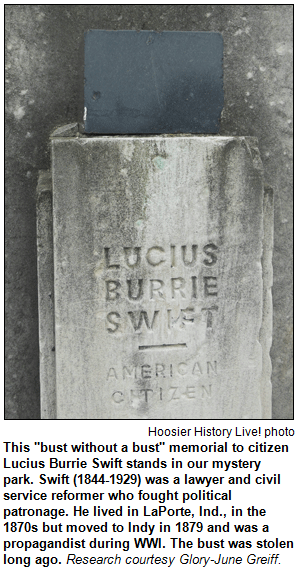 Sites featured in Indianapolis Then and Now, the visual history book on which our host Nelson Price collaborated with photographer Garry Chilluffo and photo historian Joan Hostetler, include one of the oldest parks in Indianapolis. Originally a harness racetrack, the land was purchased by the city of Indy during the 1870s, when the park was created.
Sites featured in Indianapolis Then and Now, the visual history book on which our host Nelson Price collaborated with photographer Garry Chilluffo and photo historian Joan Hostetler, include one of the oldest parks in Indianapolis. Originally a harness racetrack, the land was purchased by the city of Indy during the 1870s, when the park was created.
The park became known for its conservatory, sunken gardens and amphitheater.
Question: What is the park?
The prize pack includes two passes to GlowGolf, courtesy of GlowGolf, four passes to the Indiana Experience, courtesy of the Indiana Historical Society, and two passes to Conner Prairie Interactive History Park, courtesy of Conner Prairie.
Natural gas boom of 1880s and '90s
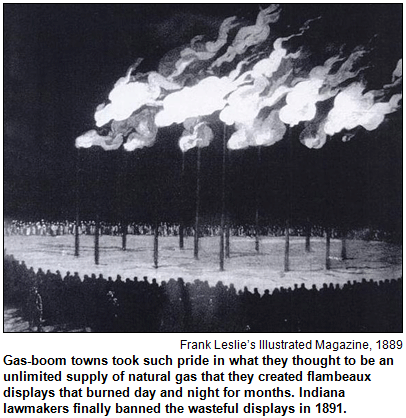 (June 7, 2014) - An entire region in east central Indiana became the setting in the 1880s and '90s for, as one of our guests puts it, "one of the great natural resource discoveries of American history." The Natural Gas Boom in Indiana also is regarded as one of the most dramatic eras in the state's history.
(June 7, 2014) - An entire region in east central Indiana became the setting in the 1880s and '90s for, as one of our guests puts it, "one of the great natural resource discoveries of American history." The Natural Gas Boom in Indiana also is regarded as one of the most dramatic eras in the state's history.
Alas, the boom - which significantly affected cities such as Muncie, Kokomo, Anderson, Marion, Elwood, Gas City and Fairmount - did not last, even though many civic leaders, businesses and residents assumed the plentiful natural gas would never run out. For most industries, businesses and homeowners, the era was over by 1910 or much earlier.
To explore what unfolded - and how Indiana became one of the country's top glass-producing states during the Natural Gas Boom - Nelson is joined in studio by two guests:
- James Glass, a well-known historic preservationist and the co-author of The Gas Boom of East Central Indiana (Arcadia, 2005). Jim, who writes the popular "Culture Watch" column for The Indianapolis Star, is principal of Historic Preservation and Heritage Consulting.
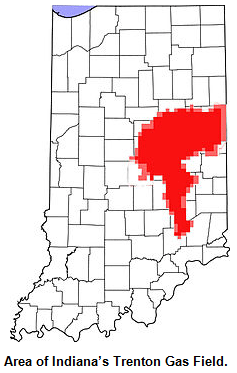 And Dave Broman of Kokomo, executive director of the Howard County Historical Society. The society is located in the Sieberling Mansion, a historic residence built by a prominent figure in the gas boom.
And Dave Broman of Kokomo, executive director of the Howard County Historical Society. The society is located in the Sieberling Mansion, a historic residence built by a prominent figure in the gas boom.
According to our guest Jim Glass, Indiana's "gas belt" covered 2,500 square miles, making it the largest natural gas field in the country in the 1890s.
A range of industries requiring large quantities of fuel were attracted to east central Indiana as a result. They included glass (Muncie became the country's No. 2 glass-producing city after Pittsburgh, Jim writes), brick, wire and nail, iron and strawboard, an early type of cardboard.
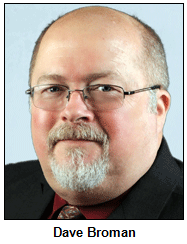 Without the gas boom, many historians are convinced Indiana would not have become a major industrial state. At the least, its transition from being an agricultural state would have been significantly delayed.
Without the gas boom, many historians are convinced Indiana would not have become a major industrial state. At the least, its transition from being an agricultural state would have been significantly delayed.
So why did the Natural Gas Boom end so quickly?
"No effort to conserve," Jim writes. "No one wanted to believe the gas would run out, despite plenty of scientific evidence."
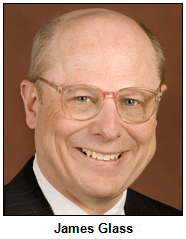 The boom essentially began at a gas well near Eaton, a small town north of Muncie. According to The Gas Boom of East Central Indiana, it became, as a result of drilling in 1886, "the first well in Indiana to produce a profitable supply of gas."
The boom essentially began at a gas well near Eaton, a small town north of Muncie. According to The Gas Boom of East Central Indiana, it became, as a result of drilling in 1886, "the first well in Indiana to produce a profitable supply of gas."
As drilling quickly spread across east central Indiana, officials decided the best way to show off the output of a new gas well was to light it up. A resulting flame - known as a flambeau - become a common sight in the night sky. Flambeaux, burning night and day, often were regarded as community "billboards" for the abundance of natural gas.
Towns like Muncie grew rapidly, with its Ball Brothers Company becoming the country's largest producer of fruit-canning jars by 1900.
According to our guest Jim Glass, more than 100 glass factories may have been in operation between 1887 and 1901 in east central Indiana.
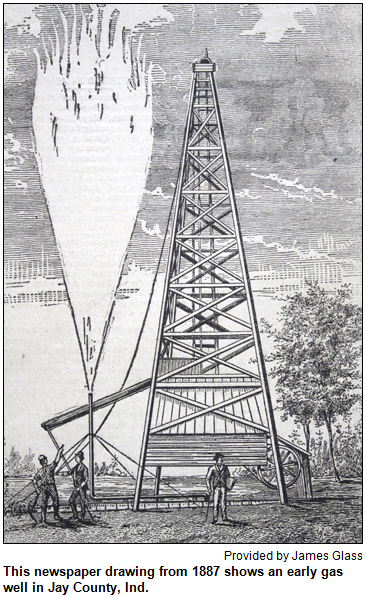 Among them was a glassmaking business in the Howard County town of Greentown. The factory burned to the ground in 1903; in recent decades, Greentown Glass has become highly collectible.
Among them was a glassmaking business in the Howard County town of Greentown. The factory burned to the ground in 1903; in recent decades, Greentown Glass has become highly collectible.
Today, glass manufacturers in Jay County in far-eastern Indiana and in Kokomo are among the last factories remaining from the Natural Gas Boom era.
Both of our guests have connections to the region affected by the Natural Gas Boom.
Dave Broman was born in Anderson and grew up in Bluffton, a town on the fringes of the Trenton gas field. He worked in radio broadcasting in several cities, including Anderson and Kokomo. Since 2012, Dave has been executive director of the Howard County Historical Society; his goals include enhancing the explanations of the boom era - and the lessons that can be learned.
A former board member of Indiana Landmarks, Jim Glass served as director of the Indiana DNR's Division of Historic Preservation and Archaeology.
Other history facts:
- Although, as Jim Glass's book puts it, many factories "simply pulled up stakes" when the natural gas boom ended in the early 1900s, others remained, and some even flourished by evolving. Ball Brothers converted to manufactured gas and prospered for many more decades. (The Ball Brothers glass jar factory finally closed in 1962.)
- Promoters who touted their communities and enticed factories became known as "boomers."
- In addition to Howard and Jay counties, the gas boom primarily affected Delaware, Madison, Grant, Blackford, Hamilton and Tipton counties.
Learn more: Our guests recommend watching this video, Fueling a Region: Indiana's Gas Boom, which was published in 2013 by WIPB Public TV in Muncie.
Roadtrip: Morgantown, Ind.
Guest Roadtripper and public historian Glory-June Greiff recommends Morgantown in Morgan County southwest of Indianapolis:
"It may be best known to folks as that little town on SR135 you drive through on the way to Brown County. But it's nice to spend a few hours there to see what Morgantown has to offer. 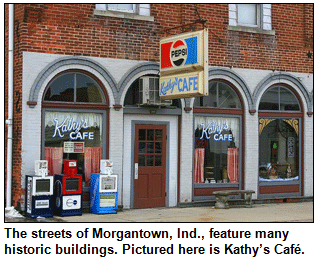 There are quite a number of restaurants for such a small village, but I recommend Kathy's Cafe, 159 W. Washington Street. Good, basic country cafe food, and really great pies, all homemade!"
There are quite a number of restaurants for such a small village, but I recommend Kathy's Cafe, 159 W. Washington Street. Good, basic country cafe food, and really great pies, all homemade!"
Morgantown is compact enough that you can simply walk around and enjoy its many historic buildings - most of the downtown is listed in the National Register of Historic Places - as well as its small-town atmosphere and its interesting jumble of local shops.
There's a large antique store (the Antique Cooperative at 129 W. Washington) that is well worth a look, and the House of Clocks (75 W. Washington) maintains a sizable stock of clocks from around the world and repairs them as well.
"Perhaps Morgantown's most unusual offering," says Glory, "is Graham's Bee Works, 125 W. Washington, a regional supplier of all things beekeepers need, including bees! As I have just become a beekeeper myself, this place, which had always intrigued me, has taken on new importance!"
History Mystery
The Grant County town of Gas City was known as Harrisburg in the 1860s when the community was settled. With the discovery of natural gas in the area in 1887, Harrisburg, like many communities in east central Indiana, became a boom town. During the 1890s, the town changed its name to Gas City.
 Other towns across Indiana also have changed their names for various reasons. Among them was the town of Bethlehem. The town changed its name because another Indiana community also had the biblical name.
Other towns across Indiana also have changed their names for various reasons. Among them was the town of Bethlehem. The town changed its name because another Indiana community also had the biblical name.
The town that switched from Bethlehem to another name eventually became one of the fastest-growing cities in Indiana.
Question: What is the city?
The prize pack is a gift certificate to the Rathskeller Restaurant in downtown Indy, courtesy of Visit Indy, four passes to the Indiana Experience, courtesy of the Indiana Historical Society, and two passes to Conner Prairie Interactive History Park, courtesy of Conner Prairie.
Lyn St. James, racing pioneer for women
(May 31, 2014) - Has it really been 22 years since she became the first woman to win the Rookie of the Year award in the Indianapolis 500?
Even though time has roared by and Lyn St. James retired from Indy Car racing in 2001, the pioneer has never left the spotlight. In fact, Lyn, who competed in the 500 Mile Race seven times, will be racing again at the Indianapolis Motor Speedway on June 8. Along with such fellow veterans as Al Unser Jr. and Willy T. Ribbs, she will compete in the Indy Legends Pro-Am, a race on the Speedway's road track with muscle cars, including vintage Corvettes and Mustangs.
In fact, Lyn will do double duty that weekend because she also will compete in an open-wheel race at the Speedway.  She will drive a specially designed Chevron built in 1977, a fully restored race car. Lyn will drive it in a new "Brickyard Invitational" weekend organized by the Sportscar Vintage Racing Association.
She will drive a specially designed Chevron built in 1977, a fully restored race car. Lyn will drive it in a new "Brickyard Invitational" weekend organized by the Sportscar Vintage Racing Association.
Before that, Lyn, 67, is Nelson's studio guest, as Hoosier History Live! explores the life and career of the race-driver-turned-motivational speaker who has been a role model for young women and girls.
"There's no sound in the world like the scream of an Indy car" is the opening line in her book Lyn St. James: An Incredible Journey (LSJ Press, 2005), which initially was published as Ride of Your Life (Hyperion, 2002).
In the book, she writes about her unforgettable first visit to the Speedway as a teenager. While her male friends could walk around Gasoline Alley, Lyn was forced to wait outside because women and girls weren't allowed in the restricted area then.
Although she became the first woman to be named Rookie of the Year - that happened in 1992, when she finished 11th, her best result - Lyn wasn't the first woman driver to compete in the Indy 500. That distinction, of course, belongs to Janet Guthrie, who competed in the 1977 race.
But Lyn's accomplishments in a sport that remained almost universally male-dominated resulted in visits to the White House to meet three presidents (Ronald Reagan, George H.W. Bush and Bill Clinton) and appearances on national TV programs, including The David Letterman Show and The Today Show.
She often has been included in lists of the "Top 100 Women Athletes of the 20th Century."
Primarily based in Phoenix now, Lyn has lived in Florida, Ohio and, periodically, the Indianapolis area.
She has worked as a pit reporter for ABC and ESPN. Her civic endeavors include serving on the advisory board of the Indiana Fever pro basketball team and as a founding board member of the Indiana Motorsports Association.
All of this began inauspiciously; in fact, her racing career started with the wrong kind of splash. In reviewing Ride of Your Life for The Indianapolis Star in 2002, our host Nelson wrote:
 "With a candor that qualifies as courageous, St. James discusses the highs as well as the lows of her career, including an embarrassing description of her first race in 1974 in West Palm Beach, Florida, when she spun her Ford Pinto into a lake near the track."
"With a candor that qualifies as courageous, St. James discusses the highs as well as the lows of her career, including an embarrassing description of her first race in 1974 in West Palm Beach, Florida, when she spun her Ford Pinto into a lake near the track."
That rookie mishap unfolded at a race track surrounded by murky wetlands and ponds. Lyn's car careened into one of them after she lost control.
Despite that nerve-wracking episode - and the butterflies that surely afflict all Indy 500 drivers when they put their safety on the line at the Speedway - Lyn writes that the most frightening moment of her life had nothing to do with auto racing. It occurred when she was a seventh-grader at a private, all-girls academy in Ohio. She competed there in an organized sport for the first time as a member of a field hockey team.
"When the opposing team charged downfield toward me, I felt the most intense wave of panic I've ever experienced," she writes. "Nothing since that day has come close. I got over it. I stood my ground that afternoon, and eventually became captain of the field hockey team."
Years later, she oversaw a driver development program for young women after her racing career ended.
On the track, her accomplishments include qualifying sixth in 1994 for the Indy 500, out-qualifying Mario Andretti, Nigel Mansell and other legendary drivers. In 1995, Lyn set a world record on a closed-course track for women when she reached a speed of 225.72 mph.
History fact: In 2000, two women qualified for the Indy 500 for the first time when Lyn was joined in the field by Sarah Fisher. (Hence, that was the first time Mari Hulman George ever used the plural for women in the command: "Ladies and gentlemen, start your engines!")
Also at the Indy 500 in 2000, Lyn - at age 53 - was the oldest driver in the field, male or female. She retired as an Indy-car driver the next year.
Roadtrip: Ruth Lilly 'Twin Oaks' home tour
Guest Roadtripper Diana Mutz of the Indiana Historical Society recommends that you take a rare peek at the former estate of both L.S. Ayres II and philanthropist Ruth Lilly. 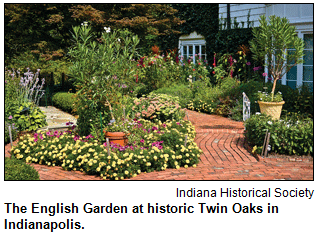 It's the Historic Twin Oaks Home and Garden Tour on June 6, 7 and 8, from 11 a.m. to 6 p.m. each day.
It's the Historic Twin Oaks Home and Garden Tour on June 6, 7 and 8, from 11 a.m. to 6 p.m. each day.
The 1941 Colonial Revival home is hidden behind the trees at 555 Kessler Boulevard West Drive in Indianapolis. Starting with the elegant spiral staircase and distinctive murals in the entry, guests can explore 17 rooms of this extraordinary house, as well as take a stroll through the home's meticulously kept English Garden.
The home is accessible by shuttle service only, with parking and shuttle service available at Fox Hill Elementary School (802 Fox Hill Drive, Indianapolis) - just a one-minute ride to Twin Oaks. Tickets for adults are $18 in advance or $20 at the door, and cost for children ages 3 through 12 is $5.
For more information and/or tickets, call (317) 232-1882 or visit www.indianahistory.org.
History Mystery
During the era Lyn St. James raced in the Indianapolis 500, one of the winners created a controversy in Victory Lane by spurning a tradition that dated back to the 1930s. 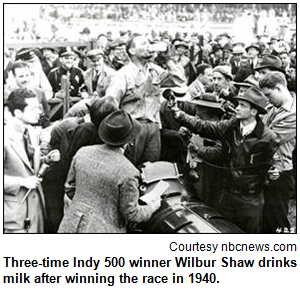 Rather than drink a celebratory bottle of milk immediately following his win in the Indy 500, he opted for orange juice.
Rather than drink a celebratory bottle of milk immediately following his win in the Indy 500, he opted for orange juice.
The "milk snub" by the Indy 500 winner outraged many spectators as well as officials of the Indianapolis Motor Speedway and the American Dairy Association. Even several years later, when he returned to drive the pace car in the Indy 500, the driver received some loud boos because he had ignored the tradition involving milk that was nearly 60 years old.
Question: Who was the driver?
The prize pack is a gift certificate to Arni's Restaurant, courtesy of Visit Indy, four passes to the Indiana Experience, courtesy of the Indiana Historical Society, and two passes to Conner Prairie Interactive History Park, courtesy of Conner Prairie.
Courthouse squares across Indiana
|
(May 24, 2014) - They are the centerpieces - many folks would say "gems" - of most towns that are county seats across the Hoosier state.
 One courthouse square, located in the heart of Amish country, has parking for buggies as well as cars. In another county, a historic courthouse was restored after local women - many of them more than 75 years old - undressed and posed for a calendar as a fund-raiser.
One courthouse square, located in the heart of Amish country, has parking for buggies as well as cars. In another county, a historic courthouse was restored after local women - many of them more than 75 years old - undressed and posed for a calendar as a fund-raiser.
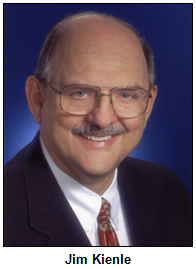 In yet another county seat, a downtown area has three nearby structures built as courthouses.
In yet another county seat, a downtown area has three nearby structures built as courthouses.
To explore our vast range of courthouse squares, Nelson is joined in studio by two guests:
- Chris Flook, a telecommunications instructor at Ball State University who devoted summers to visiting and photographing courthouse squares, or their equivalents, in all of our state's 92 counties. His project, a collaboration of several departments at Ball State, has a website at www.indianacourthousesquare.org with county-by-county visuals.
- And Indianapolis-based architect Jim Kienle, who specializes in historic renovation. Jim, director of historic preservation for Moody Nolan, has been a popular guest on several Hoosier History Live! shows, including a program in 2009 about the Orange County Courthouse in Paoli. Jim restored that historic courthouse, which was built in the Greek Revival style in 1850.
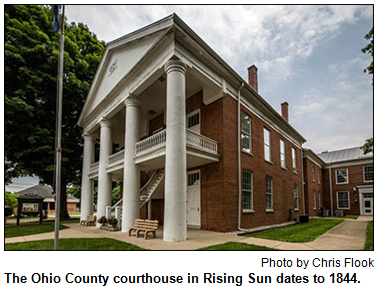 During our show, we focus not just on counties with historic courthouses. Nelson and his guests also explore cities that demolished their county courthouses. They include Indianapolis, where the ornate Marion County Courthouse was torn down during the early 1960s; courtrooms are housed in the City-County Building, a 28-story office complex. In Delaware County, the historic courthouse in Muncie also was demolished during the 1960s.
During our show, we focus not just on counties with historic courthouses. Nelson and his guests also explore cities that demolished their county courthouses. They include Indianapolis, where the ornate Marion County Courthouse was torn down during the early 1960s; courtrooms are housed in the City-County Building, a 28-story office complex. In Delaware County, the historic courthouse in Muncie also was demolished during the 1960s.
And we don't just focus on the courthouses, or their replacements during our show. Chris, Jim and Nelson also explore the structures around them as we focus on the "squares" or their equivalents. (In the Hoosier capital, a circle - Monument Circle- typically is regarded as the town square.)
Counties with courthouse squares on the itinerary for our show include:
- Ohio County. The courthouse in Rising Sun, which was built in 1844, is the oldest still in use. Like the Orange County Courthouse, the second-oldest, it was built in Greek Revival style.
 Randolph County. The historic courthouse in Winchester became the focus of national attention when members of a women's bridge club disrobed to pose as "Calendar Girls." The women, including one nearly 94 years old, raised money to spare their beloved courthouse from demolition. The book Magnificent 92 (IU Press, 1991) quotes a 19th-century historian as rhapsodizing: "A man might sooner be the architect of that edifice than be President of the United States or King of England."
Randolph County. The historic courthouse in Winchester became the focus of national attention when members of a women's bridge club disrobed to pose as "Calendar Girls." The women, including one nearly 94 years old, raised money to spare their beloved courthouse from demolition. The book Magnificent 92 (IU Press, 1991) quotes a 19th-century historian as rhapsodizing: "A man might sooner be the architect of that edifice than be President of the United States or King of England."- Elkhart County. Nearby parking areas in Goshen include spaces for cars as well as hitches for horses because of the Amish communities that have flourished in the county since the 19th century.
- Allen County. Often identified as the most lavish in the state, the county courthouse in Fort Wayne was completed in 1902.
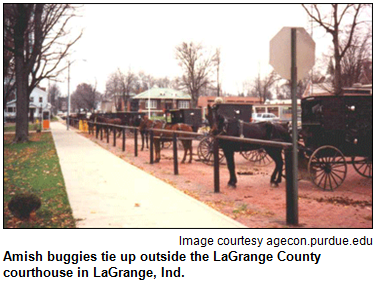 According to Magnificent 92, its architectural design was influenced by the Chicago World's Fair of 1893. Stained-glass windows, sculptures and paintings adorn the courthouse.
According to Magnificent 92, its architectural design was influenced by the Chicago World's Fair of 1893. Stained-glass windows, sculptures and paintings adorn the courthouse. - Hancock County. Also known as ornate, the courthouse in Greenfield has architectural features known as "grotesques," which are similar to gargoyles.
- St. Joseph County. In downtown South Bend, three nearby structures were built as courthouses.
- Wabash County. Located atop a hill, the majestic courthouse in Wabash was the setting for a claim to fame for the town in 1880. The courthouse was the site of an early experiment in electricity that drew international attention. Thousands of visitors watched as electricity jumped from one lamp to another in the dome of the courthouse, which, like many historic courthouses, has a clock tower.
 And Madison County. During the early 1970s, the 19th-century courthouse in Anderson was replaced by a structure of glass, steel and brick on a public plaza.
And Madison County. During the early 1970s, the 19th-century courthouse in Anderson was replaced by a structure of glass, steel and brick on a public plaza.
To photograph the 92 courthouse squares or their equivalents for the Indiana's Courthouse Squaresproject, our guest Chris Flook avoided interstates as he drove from county to county.
A native Hoosier, Chris has worked on several documentaries and projects focused on Indiana history. They include a new documentary about the Lenape (the Native American tribe that white settlers called Delaware Indians) that had its premiere in Muncie last month.
In fact, Chris appears on our show following a series of showings of the documentary in Oklahoma, the home state for many descendants of the Lenape who once lived in Indiana. Chris also serves on the boards of the Delaware County Historical Society and the Indiana Barn Foundation.
In addition to restoring the Orange County Courthouse, our guest Jim Kienle has been involved in the restoration of historic movie theaters across Indiana. They include the initial renovation of the Circle Theatre in Indy during the early 1980s and, more recently, the award-winning renovation of the Lerner Theatre in Elkhart.
Roadtrip: Tel-Hy Nature Preserve in Huntington
Guest Roadtripper Terri Gorney of Fort Wayne, who also volunteers at a number of conservation organizations, including ACRES, DNR and Limberlost, suggests we take a wander through nature at the beautiful Tel-Hy Nature Preserve in Huntington.
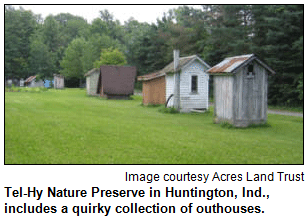 In Hebrew, Tel means "high" and Hy means "life," which describes the high bluffs with great views of the Wabash River in the preserve. Tel-Hy Nature Preserve is just under 40 acres in Huntington County and was donated to ACRES Land Trust by Hy and Lorry Goldenberg in 1994.
In Hebrew, Tel means "high" and Hy means "life," which describes the high bluffs with great views of the Wabash River in the preserve. Tel-Hy Nature Preserve is just under 40 acres in Huntington County and was donated to ACRES Land Trust by Hy and Lorry Goldenberg in 1994.
Tel-Hy has the distinction of being featured in the book Weird Indiana due in to part to its collection of outdoor privies located on the preserve just off the parking lot. According to legend, Hy Goldenberg once ordered a single outhouse but was shipped two by mistake. Apparently he believed two of anything was a collection, so he started collecting more unusual outhouses.
The preserve has a variety of wildflowers, including Virginia bluebells, wood phlox, hepatica, snow trillium, goldenrods and asters. Sycamores, black walnuts and beech are just some of the soaring trees on the property. And a number of birds call this property home at least part of the year; they include scarlet tanager, wood ducks and wood thrush.
History Mystery
|
During the "Super Tornado" outbreak of April 1974, a courthouse in an Indiana county took a direct hit from a powerful twister. The tornado demolished so much of the historic courthouse, which had been built in 1894, that county leaders decided they had no choice but to remove the remains and build a new courthouse from the ground up. The impact of the tornado on the county courthouse was discussed on Hoosier History Live! during a show last month on the 40th anniversary of the April 1974 tornado outbreak.
Question: What Indiana county OR town (county seat) lost its historic courthouse to a tornado in 1974? Either the name of the county or the town may be supplied to win the prize.
Hint: The county courthouse was located in the northern half of Indiana.
The prize is a two passes for Indianapolis 500 Track Tours and a gift certificate to Latitude in Castleton, courtesy of Visit Indy, and four passes to the Indiana Experience, courtesy of the Indiana Historical Society.
Recognition!
Host Nelson Price receives Fadely Award
(April 2014) - Our ever-effervescent host Nelson Price was honored with the presentation of the Fadely History Award on March 30 at annual meeting of the Marion County Historical Society at the Athenaeum in downtown Indy.  The award was presented by Jim Fadely, Director of College Counseling at University High School, in honor of his pioneer ancestors.
The award was presented by Jim Fadely, Director of College Counseling at University High School, in honor of his pioneer ancestors.
The award is presented by the Marion County Historical Society "in recognition of outstanding effort to advance the knowledge of history in Indianapolis and Marion County."
"With his career of writing features at the Indianapolis newspapers, his books about famous Hoosiers and his hosting of the current Hoosier History Live radio program, Nelson Price is the perfect recipient of the Fadely History Award for advancing the history of Indianapolis and Marion County," said Jim Fadely.
Thanks also to the Indianapolis Star for publishing Nelson's column on April 8, "Letterman's ties to Indy remain strong."
Slave trial in 1820s Indiana and Fairmount town history: Two classic shows
(May 17, 2014 - encore presentations) - Instead of a one-hour program, Hoosier History Live this week offers two back-to-back half-hour shows from our archives of nearly 300 programs. We have selected two of the most popular programs in our more than six years of covering all aspects of our Hoosier heritage.
Slave trials in 1820s
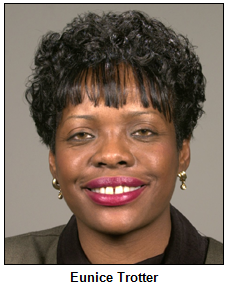 During the first classic show (original air date: Nov. 13, 2010), we explore how a young African-American woman in Vincennes made history in 1821. A lawyer for Mary Bateman Clark filed a lawsuit seeking her release from an "indentured servitude" contract with one of the most prominent men in the new state of Indiana. The contract required Mary to cook, clean and sew for Gen. Washington Johnston and his family for 20 years. He only pay was housing, food and clothing.
During the first classic show (original air date: Nov. 13, 2010), we explore how a young African-American woman in Vincennes made history in 1821. A lawyer for Mary Bateman Clark filed a lawsuit seeking her release from an "indentured servitude" contract with one of the most prominent men in the new state of Indiana. The contract required Mary to cook, clean and sew for Gen. Washington Johnston and his family for 20 years. He only pay was housing, food and clothing.
The case, which made its way to the Indiana Supreme Court, involved determining whether such "indentured servitude" contracts violated the state's constitution as a form of slavery. The Supreme Court ruled in Mary's favor and ordered her employer to release her.
To share insights about the social history of the era and the landmark case, Nelson is joined in studio by one of Mary's descendants, Indianapolis resident Eunice Trotter. Eunice, a veteran journalist, and her sister Ethel McCane are using their research about their ancestor to do "living history performances" for schools and civic groups across the state. They can be contacted through their website at marybatemanclark.org.
 Eunice and Ethel crusaded for a historic marker in honor of Mary Bateman Clark; it was dedicated at the Knox County Courthouse in 2009. The sisters are Mary Bateman Clark's great-great-great granddaughters.
Eunice and Ethel crusaded for a historic marker in honor of Mary Bateman Clark; it was dedicated at the Knox County Courthouse in 2009. The sisters are Mary Bateman Clark's great-great-great granddaughters.
According to their research, many white residents of Vincennes and other early Indiana communities worried about the presence of free African-Americans, fearing they would incite indentured blacks.
Fairmount town history
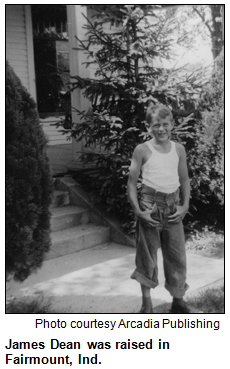 You may know that movie icon James Dean grew up on a farm near the Grant County town of Fairmount.
You may know that movie icon James Dean grew up on a farm near the Grant County town of Fairmount.
But were you aware the creator of the most widely syndicated comic strip in the world also grew up on a Fairmount farm? It was the boyhood home of Jim Davis, creator of Garfield, the cantankerous cat.
To explore the heritage of a town with several distinctions during our second classic show (original air date: Aug. 28, 2010), Nelson is joined in studio by Fairmount resident Cathy Duling Shouse, the author of a visual history book about her hometown, Fairmount, part of Arcadia Publishing's "Images of America" series. Cathy's ancestors settled in the Fairmount area before 1850.
 In her book, which she put together with the Fairmount Historical Museum, more than half of the 223 rare vintage photos came from private collections of local residents.
In her book, which she put together with the Fairmount Historical Museum, more than half of the 223 rare vintage photos came from private collections of local residents.
The images include a 1904 photo of the construction of the Winslow family farmhouse, where young James Dean was raised during the 1930s and '40s by his aunt and uncle.
There are also photos of Lake Galatia near Fairmount, which was formed by the last glacier. Lake Galatia is where, as Cathy puts it, "the most complete set of mammoth bones ever found was discovered." That was in 1904. The discovery of the huge skeleton of the mammoth (which apparently lived 11,000 years ago) sparked a lawsuit about their ownership.
Initially part of the Miami Indian territory, Fairmount was settled early on by Quakers. Fun fact: The mascot of old Fairmount High School - where James Dean, a member of the Class of 1949, was a standout basketball player - was "the Quakers."
Offbeat landmarks across Indiana
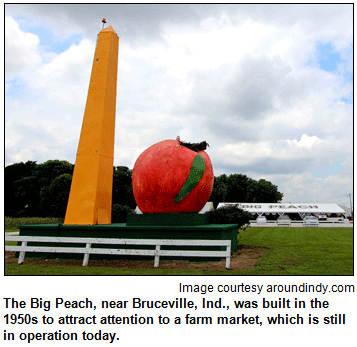 (May 10, 2014) - "I like weird stuff," says Evan Finch of Indianapolis. "I like history. And I like to drive around. On some weekends, I get to combine all three by driving around, finding unusual things and learning their histories."
(May 10, 2014) - "I like weird stuff," says Evan Finch of Indianapolis. "I like history. And I like to drive around. On some weekends, I get to combine all three by driving around, finding unusual things and learning their histories."
So Evan, an advertising copywriter who describes himself as a "dilettante" historic preservationist, has visited and will share insights about such offbeat or funky Hoosier landmarks as the Big Peach near the Knox County town of Bruceville and the Colossal Mushroom near Middlebury in Elkhart County. Evan describes the former as "a gigantic, eye-luring, concrete-and-chicken-wire" peach built in the 1950s to attract attention to a farm stand.
Also on the menu for our show: An exploration of the Giant Egg near Mentone, a town in far-northern Indiana that promotes itself as the "egg basket" of the Midwest. According to Evan, the town built a 10-foot-tall, 3,000-pound egg in 1946 to advertise its annual egg festival.
With Evan, a copywriter for Young & Laramore, we don't limit ourselves to food-shaped landmarks. 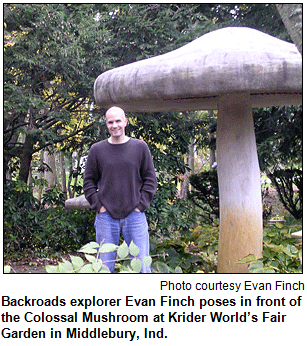 He shares insights about the sculpture of a giant serpent created by a stone cutter who lived on a farm near Needmore. The cutter, August Mack, was a German immigrant whose dream about a snake inspired him to create the mechanical serpent, which, as Evan puts it, "could move, hiss, rattle and open its mouth."
He shares insights about the sculpture of a giant serpent created by a stone cutter who lived on a farm near Needmore. The cutter, August Mack, was a German immigrant whose dream about a snake inspired him to create the mechanical serpent, which, as Evan puts it, "could move, hiss, rattle and open its mouth."
Promoted on a billboard, the giant snake became a roadside attraction during the 1930s and '40s, with its creator charging a modest admission to see it. Alas, the serpent landmark - unlike most of the others we will explore - apparently no longer exists. Evan explains why during the show.
Other landmarks Evan discusses include:
- The gravesite of Johnny Appleseed (real name: John Chapman) in Fort Wayne. Chapman (1774-1845) was the focus of a Hoosier History Live! show in November 2009 that featured an expert guest: Indianapolis-based playwright Hank Fincken, who portrays the Hoosier folk hero and other historic figures at events across the country.
- A statue of Joe Palooka (a once-popular comic strip character) that also was the brainstorm of southern Indiana stonecutters.
 Created by two of them and dedicated in Bedford in 1948, the Palooka statue has been moved several times but has stood in the town of Oolitic for more than 30 years. Noting that the statue is 10 feet tall, Evan observes: "He's a big Palooka.”
Created by two of them and dedicated in Bedford in 1948, the Palooka statue has been moved several times but has stood in the town of Oolitic for more than 30 years. Noting that the statue is 10 feet tall, Evan observes: "He's a big Palooka.” - And the largest preserved steer in the world. Known as "Old Ben," the steer has been displayed in Kokomo for decades. His weight upon his death was estimated at more than 4,500 pounds.
Never heard of Joe Palooka? The comic strip that featured the character - a muscle-bound, lantern-jawed boxer described as dumb but well-intentioned - ended in 1984.
The comic was in its heyday in 1948, though. That's when, according to some accounts, more than 4,000 people attended the dedication of the limestone Joe Palooka. It's 10 feet tall, weighs 10,000 pounds and can be found on Main Street in Oolitic near the town's post office.
 "I'm interested in anything unique, that makes one place different from any other place," our guest Evan Finch explained during a recent presentation about his "quirky landmarks" passion at Indiana Landmarks, the historic preservation organization. "Finding those differences makes life seem more mysterious and more fun."
"I'm interested in anything unique, that makes one place different from any other place," our guest Evan Finch explained during a recent presentation about his "quirky landmarks" passion at Indiana Landmarks, the historic preservation organization. "Finding those differences makes life seem more mysterious and more fun."
Surely the Colossal Mushroom qualifies as unique. According to Evan, the mushroom is one of several decorative structures constructed by the owner of a Middlebury nursery to promote his business at the 1933 World's Fair in Chicago. The eye-catching mushroom and other structures constructed by Krider Nurseries were displayed in gardens at the World's Fair.
"After the fair was over in 1934, Krider didn't want to lose all of their investment ... so they bought a lot of it back and reconstructed the garden in Middlebury," Evan reports.
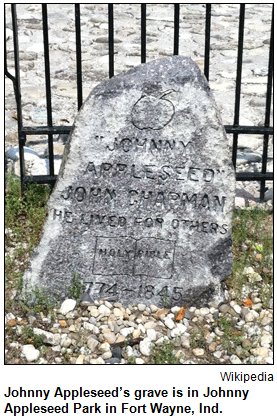 Although Krider went out of business more than 20 years ago, the mushroom remains as a towering figure in a community park.
Although Krider went out of business more than 20 years ago, the mushroom remains as a towering figure in a community park.
Equally colorful is the history of another roadside oddity that Evan will discuss. For several decades in Terre Haute, teenagers and other residents visited a family mausoleum to see "Stiffy Green," a bulldog that had been, as Evan puts it, "taxidermied."
Creeping around the mausoleum at Highland Lawn Cemetery at night became a Terre Haute rite of passage, Evan says. Terrified teenagers would shine flashlights at the bulldog to glance at its glowing eyes. Vandalism of Stiffy Green during the 1980s, though, resulted in moving the once-beloved pet from the cemetery to the basement of the Vigo County Historical Museum. In the basement, the bulldog sits in a replica of the family crypt.
During his Landmarks presentation, Evan likened the visits to Stiffy Green's mausoleum to a rite of passage for generations of teenagers in the Indianapolis area: Nocturnal visits to the bygone House of Blue Lights owned by eccentric millionaire Skiles Test.
During back-to-back Halloween seasons - in October of 2009 and 2010 - we broadcast Hoosier History Live shows about various aspects of the House of Blue Lights urban legend. The 2010 show featured a rare interview with Test's daughter, Louellen Test Hesse.
Roadtrip: Home plate at Butler University
|
Guest Roadtripper Jason Lantzer, author, past Hoosier History Live! guest, and director of Butler's Honors Program, will talk about this mysterious home-plate marker on Butler's campus in front of Jordan Hall. It's baseball season, so learn more about this historic athletic milestone on the show this Saturday!
History Mystery
A tree near the small town in southwestern Indiana of Milltown has become a roadside attraction because of what people fling onto its branches. 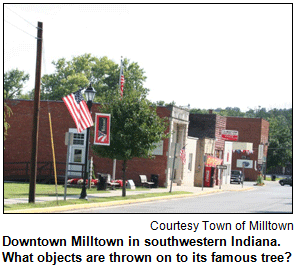 During the early 1960s, a group of Boy Scouts may have started the tradition of tossing the items onto the tree. For more than 50 years since then, people have thrown this object onto the tree. As a result, the tree has been featured in books, newspaper articles and TV and radio reports.
During the early 1960s, a group of Boy Scouts may have started the tradition of tossing the items onto the tree. For more than 50 years since then, people have thrown this object onto the tree. As a result, the tree has been featured in books, newspaper articles and TV and radio reports.
Question: What have hundreds of people tossed onto the tree?
The prize is a gift certificate to Arni's Restaurant, courtesy of Visit Indy, and four passes to the Indiana Experience, courtesy of the Indiana Historical Society, and a pair of passes to Glow Golf, the miniature golf course at the Circle Centre Mall, courtesy of Glow Golf.
Why do buildings look that way?
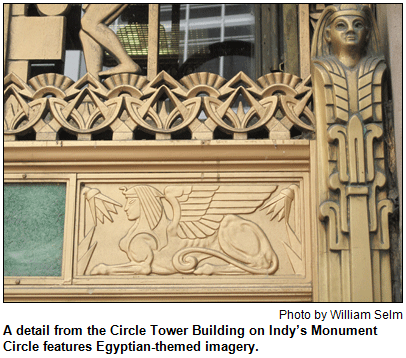 May 3, 2014 - With an architectural historian as our guest, Hoosier History Live! dissects the designs of several of the best-known buildings, monuments and plazas across the state.
May 3, 2014 - With an architectural historian as our guest, Hoosier History Live! dissects the designs of several of the best-known buildings, monuments and plazas across the state.
Fasten your seat belts for an architectural exploration that ranges from the Soldiers and Sailors Monument in downtown Indianapolis - as well as other buildings on or near Monument Circle - to St. Benedict Catholic Church in Terre Haute and the historic Knightstown Academy in Henry County.
Indianapolis-based architectural historian William Selm joins Nelson in studio to share insights about the design of those landmarks, as well as others, including the Indiana World War Memorial and its plaza in Indy, plus Circle Centre Mall, which opened in 1995 in downtown Indy and incorporated the facades of several historic structures in its exterior.  ("Façade-ectomy" is the quirky term that some preservationists have used to describe the move of facades of historic storefronts and other buildings to the exterior of the modern mall.)
("Façade-ectomy" is the quirky term that some preservationists have used to describe the move of facades of historic storefronts and other buildings to the exterior of the modern mall.)
As part of exploring the design of landmark buildings, which include the City Market, Columbia Club and Union Station in Indy, we also look at architectural symbols such as the use of shields in the designs.
Shields frequently were used by the prominent Indianapolis-based architectural firm of Vonnegut & Bohn, which was co-founded in the late 1880s by Bernard Vonnegut (1855-1908), the grandfather of internationally known novelist Kurt Vonnegut Jr.
Among Bernard Vonnegut's enduring creations is the majestic Athenaeum, which opened as a German cultural center in 1894 in downtown Indy.
Our guest William Selm, a fifth-generation German-American, shares insights about the design of the Athenaeum, which was built in the Renaissance Revival style and initially was called Das Deutsch Haus. (Its name was changed during the World War I era because of anti-German sentiments.) In the early 1990s, William Selm was a key figure in the crusade to save the Athenaeum, which by then had declined dramatically.
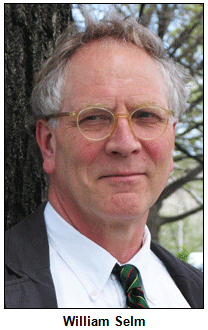 A native of Batesville, William is an instructor at IUPUI and former historian for the Indianapolis Historic Preservation Commission. For the historic district surrounding Monument Circle, he prepared the nomination that resulted in its listing on the National Register of Historic Places.
A native of Batesville, William is an instructor at IUPUI and former historian for the Indianapolis Historic Preservation Commission. For the historic district surrounding Monument Circle, he prepared the nomination that resulted in its listing on the National Register of Historic Places.
The Knightstown Academy also is listed on the national register.
Built as an educational facility by Quakersin the 1870s and designed in the Second Empire style, the distinctive-looking academy has twin towers. It became a public high school in Knightstown, serving in that capacity for several generations.
During the 1920s, an attached gymnasium was built at the Knightstown Academy. Remodeled by the Works Progress Administration during the Great Depression, the gym eventually staked its own claim on Hoosier history. It served as the home basketball court for fictional Hickory High School in the classic movie Hoosiers (1986). Now known as the "Hoosier Gym," it is the setting for weddings and an array of civic events.
Our architectural journey also includes a look at two Catholic churches with ties to the deep German heritage in Indiana.
In Terre Haute, near the end of the Civil War, German immigrants established a parish and built a church. It was replaced by the current St. Benedict Catholic Church in the 1890s.
 In Indianapolis, German-speaking residents founded St. Mary Catholic Church near the Lockerbie neighborhood. William Selm shares insights about the architecture of St. Mary's, which today is attended by an array of downtown residents and an ever-growing number of Hispanic families.
In Indianapolis, German-speaking residents founded St. Mary Catholic Church near the Lockerbie neighborhood. William Selm shares insights about the architecture of St. Mary's, which today is attended by an array of downtown residents and an ever-growing number of Hispanic families.
Also in the Hoosier capital, construction of the Soldiers and Sailors Monument began in the 1880s after a crusade by Col. Eli Lilly, Gen. Lew Wallace (the author of Ben Hur) and other prominent residents who wanted to honor Hoosiers lost in the Civil War. (Since then, the monument has been regarded by many as honoring Hoosiers lost in all wars.)
A German architect, Bruno Schmitz (1858-1916), won an international competition to design the monument, which was completed in 1901 and dedicated in 1902. Built of Indiana limestone, it has become the eternal symbol of the Hoosier capital. The basement of the monument houses the Col. Eli Lilly Civil War Museum.Roadtrip: Lyles Station Historic School and Museum
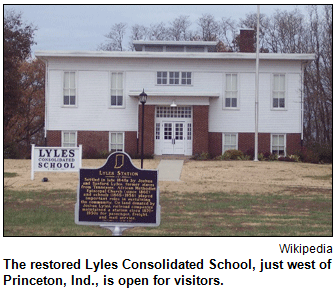 Guest Roadtripper Kisha Tandy of the Indiana State Museum suggests a Roadtrip to Lyles Station in southwestern Indiana, which is one of the few remaining African American settlements in Indiana. The settlement was founded by free African American Joshua Lyles in 1849, and it once had nearly 800 residents.
Guest Roadtripper Kisha Tandy of the Indiana State Museum suggests a Roadtrip to Lyles Station in southwestern Indiana, which is one of the few remaining African American settlements in Indiana. The settlement was founded by free African American Joshua Lyles in 1849, and it once had nearly 800 residents.
The community's schoolhouse was also the target of a major restoration and renovation effort around the turn of the 21st century and currently serves as a museum to the history of the community.
Alonzo Fields, the first African-American chief butler of the White House, serving for 21 years under Presidents Hoover, Roosevelt, Truman and Eisenhower, was also from Lyles Station and the subject of the play Looking Over the President's Shoulder by Indiana Repertory Theatre's playwright in residence, James Still.
History Mystery
|
According to many historians, the first house made of brick in what became the state of Indiana was built in the frontier town of Vincennes. Constructed in 1803 and '04, the Federal-style home was the residence of an early Indiana leader who became nationally famous.
In Vincennes, the state's oldest city, he modeled his brick home after the plantation in Virginia where he had grown up. He gave his Indiana home a distinctive name; among its outstanding features is a free-standing stairway.
The brick house has been restored and is toured by hundreds of visitors annually.
Question: What is the name of the brick house in Vincennes - and who was its famous owner? Both answers must be supplied to win the prize.
The prize is a gift certificate to Arni's Restaurant, courtesy of Visit Indy, and four passes to the Indiana Experience, courtesy of the Indiana Historical Society.
Jazz recording heritage in Richmond
(April 26, 2014 - encore presentation) - Memphis, New York City and Nashville, Tenn., have long been hailed for the significant roles their recording studios played in the boom of American popular music. Why do some say Richmond in far-eastern Indiana should be mentioned in the same breath?
 Consider that during the 1920s the parade of future musical legends who traveled to the town - specifically, to the Starr Piano Company and its Gennett Records division - included Louis Armstrong, Indiana native Hoagy Carmichael, cowboy singer Gene Autry and Jelly Roll Morton, who recorded nine piano solos at the Richmond studio in 1924.
Consider that during the 1920s the parade of future musical legends who traveled to the town - specifically, to the Starr Piano Company and its Gennett Records division - included Louis Armstrong, Indiana native Hoagy Carmichael, cowboy singer Gene Autry and Jelly Roll Morton, who recorded nine piano solos at the Richmond studio in 1924.
Hoosier History Live! explores Richmond's rich but frequently overlooked heritage in recording jazz, blues and country music in this encore broadcast of one of the most popular shows in our archives. Its original air date was April 13, 2013.
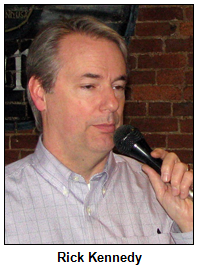 Nelson's guests include Bob Jacobsen and David Fulton, president and treasurer, respectively, of the Starr-Gennett Foundation, a non-profit that is helping Richmond reclaim its recording heritage, which ended with the Great Depression.
Nelson's guests include Bob Jacobsen and David Fulton, president and treasurer, respectively, of the Starr-Gennett Foundation, a non-profit that is helping Richmond reclaim its recording heritage, which ended with the Great Depression.
"Gennett was among the first record companies to cater to both the segregated white and black record markets," according to Rick Kennedy, author of Jelly Roll, Bix and Hoagy, whose book, first published by IU Press in 1994, has been released in an expanded, revised edition.
 Rick is a guest on our show, along with the board members of the foundation, which has established a Gennett Records Walk of Fame and an annual music festival in September near the Whitewater River.
Rick is a guest on our show, along with the board members of the foundation, which has established a Gennett Records Walk of Fame and an annual music festival in September near the Whitewater River.
That's also near where the riverside piano factory and recording studio made so much musical history.
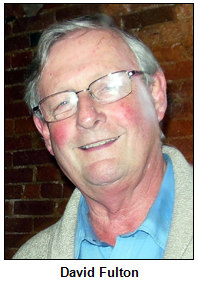 Performers who recorded on the Gennett label - either at its Richmond studio or one in Manhattan - included Duke Ellington, Joe "King" Oliver and legendary cornet and piano player Bix Beiderbecke, who befriended and influenced a young Hoagy Carmichael. The musical director and lead soloist of the Wolverine Orchestra (usually known as the Wolverines by jazz enthusiasts), Beiderbecke died at age 28 in 1931.
Performers who recorded on the Gennett label - either at its Richmond studio or one in Manhattan - included Duke Ellington, Joe "King" Oliver and legendary cornet and piano player Bix Beiderbecke, who befriended and influenced a young Hoagy Carmichael. The musical director and lead soloist of the Wolverine Orchestra (usually known as the Wolverines by jazz enthusiasts), Beiderbecke died at age 28 in 1931.
The musical heritage in Richmond had accelerated in the 1890s when piano retailer Henry Gennett bought an interest in a pre-existing piano company and renamed it Starr.
The saga that unfolded, according to Rick's book, included a legal fight over patent infringement between Gennett and mighty Victor Records, which in 1917 had produced the world's first jazz records. Gennett was joined by other small labels; they prevailed in 1922, breaking Victor's stranglehold.
Later in 1922, the New Orleans Rhythm Kings made their recording debut at the Richmond studio.
"Ragtime, jazz, blues, gospel, country and other 'new' sounds swelled the mainstream of popular music with the help of instruments and recordings produced by Starr and Gennett for international distribution," according to the Starr-Gennett Foundation.
Tornado history and storm chasing
|
(April 19, 2014) - With tornado season under way - and this month's 40th anniversary of one of the worst outbreaks - Hoosier History Live! tackles the heritage of twisters in Indiana. We also explore various aspects of storm chasing, including questions about why weather researchers put themselves in harm's way.
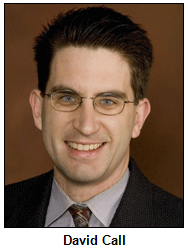 A "Super Outbreak" of tornadoes in April 1974 across the Midwest resulted in 49 deaths and 768 injuries in Indiana. Particularly hard-hit by the series of twisters were the cities of Monticello, Rochester, Madison and Hanover. To explore the impact of those tragic episodes and other tornado outbreaks - as well as to share insights about storm-chasing techniques - two guests join Nelson in studio:
A "Super Outbreak" of tornadoes in April 1974 across the Midwest resulted in 49 deaths and 768 injuries in Indiana. Particularly hard-hit by the series of twisters were the cities of Monticello, Rochester, Madison and Hanover. To explore the impact of those tragic episodes and other tornado outbreaks - as well as to share insights about storm-chasing techniques - two guests join Nelson in studio:
- Dave Call, an assistant professor at Ball State University, who, almost every spring, leads students on storm-chasing trips across the Midwest and Great Plains. He also has worked as a broadcast meteorologist.
- And Dan McCarthy, meteorologist-in-charge of the National Weather Service office in Indianapolis. He also is an expert on the April 1974 outbreak, which involved 20 tornadoes in Indiana and even more in Kentucky.
"Although Indiana is outside what most people think of as 'tornado alley,' the state does see an average of 22 tornadoes per year, and experiences three strong or violent tornadoes every two years," our guest Dave Call says.
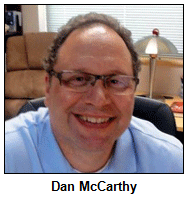 "Generally speaking, tornado counts have increased in recent years, largely due to better detection. However, the number of tornado deaths has been trending downward, probably due to better warnings and awareness."
"Generally speaking, tornado counts have increased in recent years, largely due to better detection. However, the number of tornado deaths has been trending downward, probably due to better warnings and awareness."
According to Dave, the "Super Outbreak" of April 1974 included the only officially recorded F5 tornado in Indiana. (The F scale, used to rate tornadoes on the basis of intensity, assesses them from F0 to F5; the latter have the fastest wind speeds and cause the most damage.)
In Monticello during the "Super Outbreak" 40 years ago, the historic White County Courthouse took a direct hit. Several churches, schools, businesses and cemeteries were destroyed or significantly damaged.
In far-southeastern Indiana, several farms were leveled by F5 tornado damage near Depauw, an unincorporated community in Harrison County. 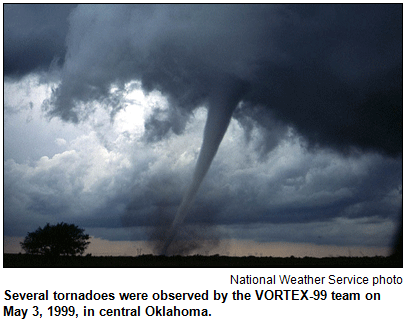 On the Hanover College campus, 32 of 33 buildings were damaged, with some completely destroyed.
On the Hanover College campus, 32 of 33 buildings were damaged, with some completely destroyed.
Southeastern Indiana also was hit the hardest by a tornado outbreak in March 2012. An F4 tornado that was on the ground for more than 50 miles caused extensive damage to Henryville, destroying the town's elementary school and junior/senior high school.
Eleven deaths in Indiana are blamed on the March 2012 tornado outbreak. In addition to Henryville, the small communities of Marysville and New Pekin suffered considerable damage.
With such dire consequences possible, why do weather researchers chase severe storms? In a guest column for The Indianapolis Star in June 2013, our guest Dave Call explained:
"Even with the dangers, there are good reasons to chase and get as close as we safely can to these meteorological monsters. Unfortunately, chasing is still one of the best methods for weather researchers to collect data about tornadoes. ... There is simply no good way to measure the near-storm environment without going to the storms themselves and deploying equipment."
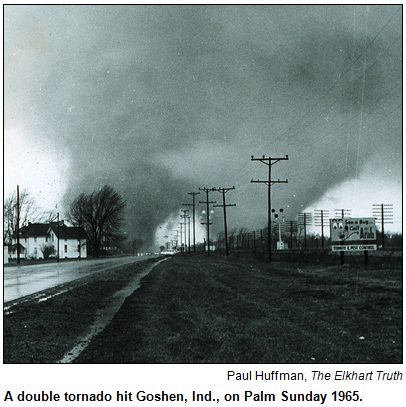 He wrote the column following the tragic death of former Discovery Channel storm chaser Tim Samaras, a weather researcher who was among three people killed during a chase in Oklahoma.
He wrote the column following the tragic death of former Discovery Channel storm chaser Tim Samaras, a weather researcher who was among three people killed during a chase in Oklahoma.
Dave emphasized that tornado chasers should, "at minimum" take classes in storm spotting, research safety techniques, travel with experienced partners and "have escape routes mapped out in case a storm suddenly changes direction."
This show isn't our first foray into Indiana's tornado history.
In March 2012, we explored the horrific Palm Sunday tornado outbreak of 1965, the deadliest in Indiana history. Nelson's guest was Dennis Keyser, who was a 10 year-old boy in Bremen on April 11, 1965, a date that set him on his career path.
After witnessing the devastation of the tornado outbreak, which killed a total of 137 Hoosiers and injured about 1,200 others, Dennis eventually studied atmospheric sciences at Purdue. For his master's in meteorology, he focused on severe-weather dynamics.
Today, he lives in Silver Springs, Md., and works in a highly specialized field of troubleshooting related to weather data.
Listen to the March 24, 2012 show, "Palm Sunday tornado outbreak of 1965":
![]()
(Show length 25:12 - Click once and be patient; the file may take some time to load!)
History Mystery
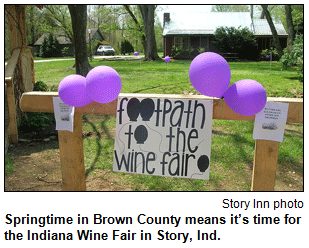 "Twisters" is a footnote in Hoosier sports history. It was the name of a short-lived, Indianapolis-based sports team that almost was called the Tornadoes. An expansion team in a professional league, the Indiana Twisters - sometimes known as the Indianapolis Twisters - competed for about two years in the mid-1990s. The team played at Market Square Arena, which was demolished in 2001.
"Twisters" is a footnote in Hoosier sports history. It was the name of a short-lived, Indianapolis-based sports team that almost was called the Tornadoes. An expansion team in a professional league, the Indiana Twisters - sometimes known as the Indianapolis Twisters - competed for about two years in the mid-1990s. The team played at Market Square Arena, which was demolished in 2001.
A few years before that, the Twisters were history. By the end of 1997, the team's brief heyday was over because its sports league had collapsed.
Question: What was the sport?
The prize is a pair of tickets to the Indiana Wine Fair in Brown County on April 26, courtesy of Story Inn, and a pair of tickets to the Benjamin Harrison Presidential Site, courtesy of Visit Indy.
Roadtrip: Worthington, Ind.
Guest Roadtripper and public historian Glory-June Greiff tells us, "Ignore the new interstate stampeding through the southern Indiana countryside. Take a drive about 70 miles southwestward from Indianapolis on State Road 67, past Spencer to the little town of Worthington, founded in 1849."
 She adds: "It's small, to be sure, but chock-full of history and simple pleasures."
She adds: "It's small, to be sure, but chock-full of history and simple pleasures."
Worthington is full of antique shops, many of them located in antique buildings, to fill your afternoon. Because the highway comes into Worthington at a sharp angle, the town has a public triangle rather than a square. In the late 19th century, a well was dug in the center of the triangle, later replaced with a flowing fountain pumped from an artesian well. People once came from miles around to fill jugs with this especially healthy (so they thought) water. Today, a fountain remains in the triangle and adds to the town's charm."
A few blocks from downtown is the city park, and in it is displayed Worthington's pride, a branch (and it is huge) of what was believed to be the largest sycamore tree in the state. It was destroyed in a storm in the 1920s, but a limb was saved and has been displayed for decades.
Hungry? Check out the Route 67 Diner right downtown (1 South Commercial), open seven days a week. Real food and ice cream goodies, too.
If the outdoors is more your thing, Worthington is only about 15 miles northeast of Goose Pond, a recently established fish and wildlife area. It is a birder's paradise, a good place to see a myriad of waterfowl and raptors.
If you're hungry before you head home, you can always stop at the Front Porch Steak House on Highway 67.
Baseball great Carl Erskine of Anderson
|
(April 12, 2014) - With the season opening of Major League Baseball this week, Hoosier History Live! explores the career, as well as the life away from the dugout, of one of the most beloved Hoosiers who ever pitched.
Nelson's special guest is Anderson native Carl Erskine, a star pitcher for the Brooklyn Dodgers (he was chosen to pitch the opening game in 1958 when the Dodgers moved to Los Angeles) during the era that the team's roster included his longtime close friend Jackie Robinson, who broke the racial barrier in the major leagues. Carl Erskine pitched for the Dodgers in five World Series.
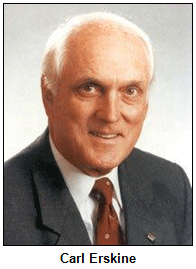 After retiring from baseball, Carl, now 87, returned to Anderson and became one of the top business and civic leaders in his hometown.
After retiring from baseball, Carl, now 87, returned to Anderson and became one of the top business and civic leaders in his hometown.
Carl and his wife, Betty, have been particularly dedicated to Special Olympics, in which their son Jimmy, who has Down syndrome and is now in his 50s, continues to compete. Carl wrote his most recent book, The Parallel (2012), as a way to raise funds for Special Olympics Indiana. The book draws parallels between the evolving social acceptances of minorities - thanks to trailblazers like Jackie Robinson - and societal acceptance of people with disabilities. Carl's other books include What I Learned from Jackie Robinson (McGraw-Hill, 2005).
Carl met Jackie Robinson in 1948 when the Hoosier was playing in the minor leagues and the civil rights pioneer gave him encouragement in the dugout. Carl went on to win 122 games as a pitcher for the Brooklyn/Los Angeles Dodgers. He also pitched three two no-hitters during his 12-year career with the team. In 1953, he set a record in the World Series for striking out 14 players. (They were New York Yankees.)
Following his return to Anderson, where he started out in sandlot, high school and amateur baseball, Carl was a bank president for several years. He also coached the baseball team at Anderson University and, for more than 40 years, has volunteered for Special Olympics.
His honors include being named a Living Legend by the Indiana Historical Society in 1999 and, in 2010, receiving the Sachem Award from then-Gov. Mitch Daniels in a ceremony at the Indiana Statehouse.
Carl, who was born in Anderson in 1926, grew up in a racially integrated neighborhood. His childhood pals included "Jumping" Johnny Wilson, an African-American who later was named "Mr. Basketball" as the state's best high school player in 1946. Eventually, Wilson played pro basketball for the Harlem Globetrotters.
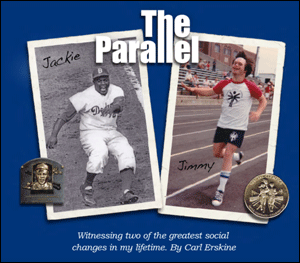 In What I Learned from Jackie Robinson, Carl writes that his early experiences with diverse families meant that he was open to a quick, easy friendship with Jackie Robinson, whose life story was depicted in the movie 42: The Jackie Robinson Story (2013).
In What I Learned from Jackie Robinson, Carl writes that his early experiences with diverse families meant that he was open to a quick, easy friendship with Jackie Robinson, whose life story was depicted in the movie 42: The Jackie Robinson Story (2013).
In his book, Carl describes a series of disturbing incidents in 1949 in Atlanta, where the KKK picketed the Dodgers and Robinson received death threats.
"We couldn't believe anybody would want to kill somebody else for playing ball because of his race," Carl writes. According to Carl, the classy way in which Robinson handled taunts from spectators, fellow players and the media taught him "to be 'better,' not bitter, whenever adversity struck."
In addition to Carl, Robinson's supporters on the Dodgers included another Hoosier: Gil Hodges(1924-1972), a native of Princeton, Ind., who was a star first baseman. Later in his career, Hodges became manager of the New York Mets and, in 1969, led the team to a World Series championship.
By then, Carl had retired as a player and had moved back to his hometown with his wife, Betty, and started a business. He also was president and a director of Star Bank.
The Erskines' son, Jimmy, had been born in 1960 with Down syndrome. Carl and Betty were urged to institutionalize him, but they declined and raised him at home. This led to their involvement with Special Olympics, where Jimmy has been a gold medalist.
History Mystery
In the early 1940s, before Carl Erskine played for the Brooklyn Dodgers, another Indiana-born baseball star was on the team's roster. A native of New Albany, he also played for teams in Boston and Pittsburgh.
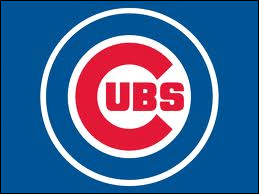 Primarily, though, the Hoosier was associated with the Chicago Cubs, where he was considered one of the greatest hit-and-run hitters of the 1930s and played against icons like Babe Ruth.
Primarily, though, the Hoosier was associated with the Chicago Cubs, where he was considered one of the greatest hit-and-run hitters of the 1930s and played against icons like Babe Ruth.
The mystery player, a second baseman, had been born in New Albany in 1909. At the end of his career, he was a team manager and scout. By the time he died in 1992, he had been inducted into the Baseball Hall of Fame.
Hint: His granddaughter, Cheri, grew up to marry former Gov. Mitch Daniels.
Question: Who is he?
The prize is a pair of tickets to the Indiana Wine Fair in Brown County on April 26, courtesy of Story Inn, and a pair of tickets to the Benjamin Harrison Presidential Site, courtesy of Visit Indy.
Roadtrip: T.C. Steele and Brown County wildflowers
 Guest Roadtripper Chris Della Rocca of Indiana Landmarks suggests we take in the 29th Annual Wildflower Foray in Brown county coming up April 25-27.
Guest Roadtripper Chris Della Rocca of Indiana Landmarks suggests we take in the 29th Annual Wildflower Foray in Brown county coming up April 25-27.
During a three-day period, guests can enjoy 24 different hikes and programs that focus on the natural history and environmental concerns of Brown County, especially as they relate to wildflower and bird populations. Included are wildflower and bird walks, wetland hikes, a boat trip on Lake Monroe, nature photography and more.
Hikes and programs will be on established trails throughout the T.C. Steele property and at other nearby natural areas, including DNR properties, Hoosier National Forest, Indiana University, Sycamore Land Trust and Nature Conservancy lands.
By the way, our History Mystery prize this week includes two tickets to the Indiana Wine Fair that same weekend in Brown County! Spring is especially welcome this year after such a seemingly endless winter!
Tiffany windows across Indiana
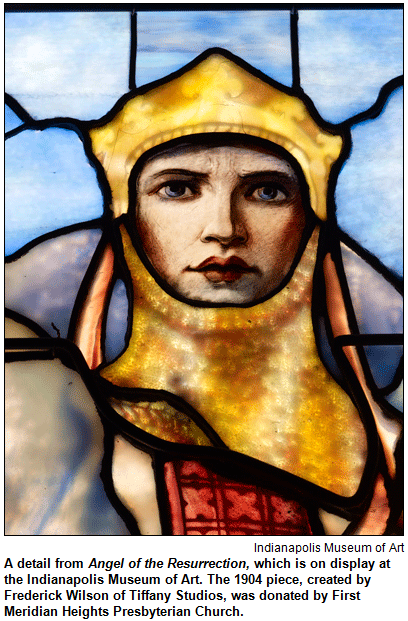 (April 5, 2014) - One of them - titled the Angel of the Resurrection and informally known as the "President Benjamin Harrison Memorial Window" - is at the Indianapolis Museum of Art.
(April 5, 2014) - One of them - titled the Angel of the Resurrection and informally known as the "President Benjamin Harrison Memorial Window" - is at the Indianapolis Museum of Art.
Another, The Ascension with Passion Flower and Vine, is in the chancel of Second Presbyterian Church in Indianapolis.
And other stained glass windows created in the late 1800s or early 1900s by the iconic, New York-based Tiffany Studios are in the Episcopal Cathedral of St. James in South Bend; the Morrison-Reeves Library in Richmond and on various mausoleums across Indiana.
As Hoosier History Live! explores those stunning Tiffany windows and others across Indiana, Nelson is joined in studio by two guests:
- Leslie Anderson-Perkins, a curatorial assistant at the IMA, which is about to launch a small exhibit associated with the "Harrison Window," which was commissioned by the former president's second wife and widow, Mary Lord Harrison, after his death in 1901. The window, which depicts Michael, the angel of the resurrection, signaling the dead to rise with the second coming of Christ, originally was installed at the former First Presbyterian Church, where Benjamin Harrison had been an elder for more than 40 years. More details recently have surfaced about the early history of the window.
- And Fred Kortepeter, the historian at Second Presbyterian Church. Its Tiffany window, which is 25-by-12 feet, was installed in the early 1900s when the church was located at Vermont and Pennsylvania streets. The massive window was re-installed when the church moved in the late 1950s to the current site at 7700 N. Meridian Street.
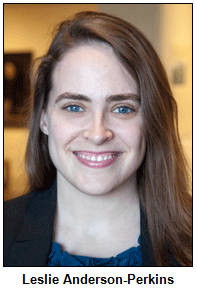 From the late 1870s through the early 1930s, Louis Comfort Tiffany and his decorative glass company (which had various names, but primarily was known as Tiffany Studios) produced thousands of windows for churches, businesses, private homes and mausoleums across the country.
From the late 1870s through the early 1930s, Louis Comfort Tiffany and his decorative glass company (which had various names, but primarily was known as Tiffany Studios) produced thousands of windows for churches, businesses, private homes and mausoleums across the country.
Wherever their location, Tiffany windows almost always are eye-catching, to say the least. Typically, the stained glass is multicolored and, during sunlight, has an iridescent effect; vibrant mottled glass is a hallmark of many of the windows.
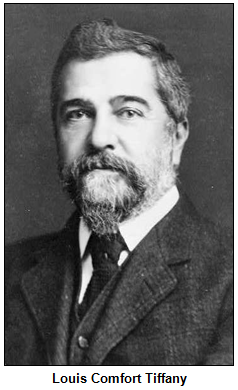 Declaring his life's goal was the "pursuit of beauty," Louis Comfort Tiffany (1848-1933) oversaw many designers at his decorative glass business. His father, Charles Lewis Tiffany, had founded the luxury jewelry retailer known as Tiffany & Co.
Declaring his life's goal was the "pursuit of beauty," Louis Comfort Tiffany (1848-1933) oversaw many designers at his decorative glass business. His father, Charles Lewis Tiffany, had founded the luxury jewelry retailer known as Tiffany & Co.
Leslie, our guest from the IMA, has traveled to South Bend and Richmond to gather details about the Tiffany windows in those Hoosier cities. In addition to the library in Richmond, buildings in the far-eastern Indiana city with Tiffany windows include St. Paul's Episcopal Church and Reid Memorial Church, a Presbyterian congregation that commissioned several stained-glass windows.
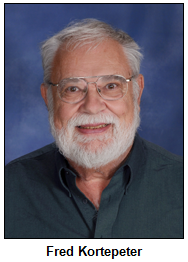 In Indianapolis, the same Tiffany artist, Frederick Wilson, designed the windows for both First and Second Presbyterian churches. Wilson, who often signed his windows, was one of the best-known designers at Tiffany, where many others worked in near-obscurity, overshadowed by the legendary "Tiffany" name.
In Indianapolis, the same Tiffany artist, Frederick Wilson, designed the windows for both First and Second Presbyterian churches. Wilson, who often signed his windows, was one of the best-known designers at Tiffany, where many others worked in near-obscurity, overshadowed by the legendary "Tiffany" name.
After various congregational changes and moves involving First Presbyterian Church, the Angel of the Resurrection window was donated in the early 1970s to the IMA by First Meridian Heights Presbyterian Church, a successor to the congregation. The window depicts Michael, the heroic angel, wearing chain mail and resembling a medieval knight as he beckons the dead to rise.
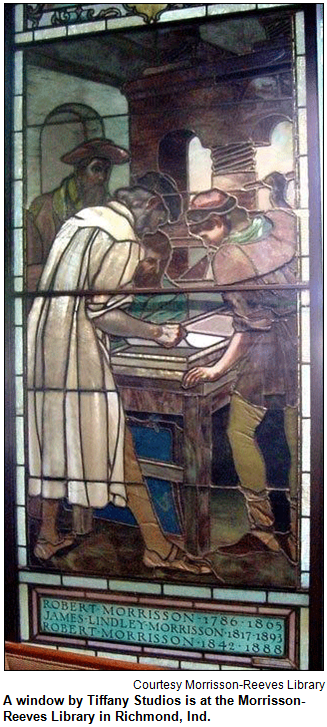 The Benjamin Harrison Presidential Site has provided the IMA with a presentation sketch for the window that was given to Mrs. Harrison; the sketch, along with a Tiffany Studios catalogue, will be displayed with the window as part of the exhibit.
The Benjamin Harrison Presidential Site has provided the IMA with a presentation sketch for the window that was given to Mrs. Harrison; the sketch, along with a Tiffany Studios catalogue, will be displayed with the window as part of the exhibit.
At Second Presbyterian, the Tiffany window was a gift to the church by the widow of a congregant, Charles F. Sayles, who died in 1902. The Ascension with Passion Flower and Vine initially was installed in 1905, according to a timeline supplied by our guest Fred Kortepeter.
Fred also has a list of Tiffany windows that had been installed - or were being commissioned - across Indiana circa 1910. The current whereabouts of some of the Tiffany windows has been a bit of a mystery. Both of our guests have undertaken research to explain about what may happened to some of the windows.
Some history facts:
- Among the predecessors of Benjamin Harrison, who served as president from 1888 to 1892, was Chester A. Arthur. He commissioned a young Louis C. Tiffany to decorate several rooms of the White House, boosting Tiffany's career.
- Benjamin Harrison's first wife, Caroline Scott Harrison, died of tuberculosis while she was the nation's first lady. After his defeat for re-election in 1892, Harrison returned to Indianapolis, resumed his law practice and married Mary Lord. Their daughter was a young child when her father died.
- In South Bend, the Cathedral of St. James actually has four Tiffany windows. One of the stained glass windows at the Episcopal church was a gift from the family of Peter Studebaker, who was among the five Studebaker Brothers of wagon- and car-making fame. This window initially was displayed at the 1893 Chicago World's Fair.
"Learn more" videos:
- Leslie Anderson-Perkins of the Indianapolis Museum of Art discusses the history of Angel of the Resurrection.
- Glass conservation and stabilization of a window.
History Mystery
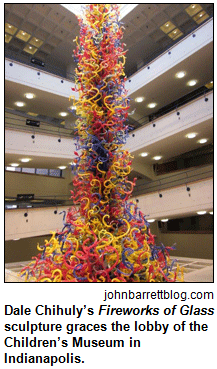 Major glass sculptures created by Dale Chihuly, the famous contemporary artist, have been commissioned across Indiana. And there have been exhibits of Chihuly's sculptures of blown glass at the Fort Wayne Museum of Art and many other cultural sites in the Hoosier state. The Children's Museum of Indianapolis features "Fireworks of Glass," a 43-foot tower that's considered to be the largest permanent sculpture of blown glass created by Chihuly, who is based in the state of Washington.
Major glass sculptures created by Dale Chihuly, the famous contemporary artist, have been commissioned across Indiana. And there have been exhibits of Chihuly's sculptures of blown glass at the Fort Wayne Museum of Art and many other cultural sites in the Hoosier state. The Children's Museum of Indianapolis features "Fireworks of Glass," a 43-foot tower that's considered to be the largest permanent sculpture of blown glass created by Chihuly, who is based in the state of Washington.
Elsewhere in Indianapolis, the Indiana University School of Medicine commissioned an enormous sculpture by Chihuly that represents an aspect of human biology. The glass sculpture, which weighs 3,000 pounds, was dedicated in 2003 in the medical school complex on the IUPUI campus.
Question: What aspect of biology does the massive sculpture symbolize?
The prize is a gift certificate to Arni's Restaurant and two admission to the Latitude 360 entertainment center in Castleton, courtesy of Visit Indy.
Roadtrip: Chief Richardville House in Fort Wayne
 Guest Roadtripper Tom Castaldi of Fort Wayne suggests a visit to the only known standing Treaty House in America, the Chief Richardville House in Fort Wayne. On the city's southwest side at 5705 Bluffton Road, the house is in the Greek Revival style and was built in 1827 for Miami Indian Civil Chief Jean-Baptiste de Richardville.
Guest Roadtripper Tom Castaldi of Fort Wayne suggests a visit to the only known standing Treaty House in America, the Chief Richardville House in Fort Wayne. On the city's southwest side at 5705 Bluffton Road, the house is in the Greek Revival style and was built in 1827 for Miami Indian Civil Chief Jean-Baptiste de Richardville.
A myth prevails that an unusually formed silver maple tree at the front entrance to the home has a special meaning in the Miami culture. Tom says that it cannot be determined whether the twisting of the limbs was caused by an act of nature or by human manipulation.
Within the lawn area of the house are two mature lilac trees that may be date to the 19th century. The house is open for touring each first Saturday between May and November. Admission is $7, or $5 for seniors or $3 for students.
Governors of Indiana
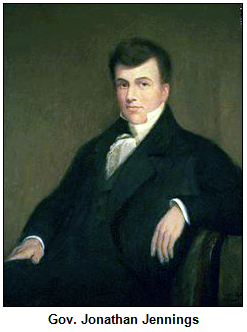 (March 29, 2014 - encore presentation) - "Historically, the office of governor in Indiana has been a weak institution compared to the strength of the state legislature and in contrast to the office of governor in some other states. Over time ... the office has been transformed into one with considerably more power."
(March 29, 2014 - encore presentation) - "Historically, the office of governor in Indiana has been a weak institution compared to the strength of the state legislature and in contrast to the office of governor in some other states. Over time ... the office has been transformed into one with considerably more power."
So begins a book co-edited by two distinguished Hoosiers who are Nelson's studio guests for a show exploring the colorful array of Indiana's chief executives since statehood in 1816 - as well as various patterns among the political leaders who have held the top office.
 During this encore broadcast of one of the most popular shows in our Hoosier History Live! archives (its original air date was April 6, 2013), our guests are Linda Gugin, a professor emeritus of political science at Indiana University Southeast, and James E. St. Clair, a journalism professor at ISU. They co-edited The Governors of Indiana (Indiana Historical Society Press, 2006), an anthology to which dozens of writers contributed profiles of the Hoosier state’s leaders.
During this encore broadcast of one of the most popular shows in our Hoosier History Live! archives (its original air date was April 6, 2013), our guests are Linda Gugin, a professor emeritus of political science at Indiana University Southeast, and James E. St. Clair, a journalism professor at ISU. They co-edited The Governors of Indiana (Indiana Historical Society Press, 2006), an anthology to which dozens of writers contributed profiles of the Hoosier state’s leaders.
Our first governor, Jonathan Jennings, was a longtime foe of slavery who resigned in 1822 after being elected to Congress; he struggled with alcoholism in his later years. During our show, Nelson and his guests will explore how Jennings and other early Indiana governors - including William Hendricks of Madison (our third governor) and Paris Dunning of Bloomington (our ninth) - dealt with slavery-related issues.
In their book, Jim and Linda identify the two "most powerful governors" as Civil War-era leader Oliver Perry Morton, a Republican from Centerville, and Franklin native Paul V. McNutt, a Democrat who was the state's chief executive during the Great Depression. 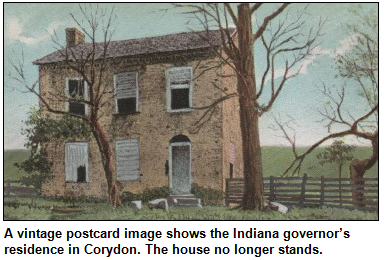 Morton had lost his first race for governor, in 1856, during a bitter election in which, according to our guests' book, Democrats resorted to "overt appeals to racism."
Morton had lost his first race for governor, in 1856, during a bitter election in which, according to our guests' book, Democrats resorted to "overt appeals to racism."
The election demonstrated "the polarized nature of the state at the time," with the Democratic candidate, New Albany lawyer and orator Ashbel Willard, prevailing in almost all of the southern counties and Morton in the north.
In 1860, Willard became the first of four Indiana governors to die in office. The most recent was Corydon newspaper publisher and state legislator Frank O'Bannon in 2003.
During the show, Nelson and his guests explore how various civil rights and social justice issues have been handled by governors. A former first lady, Zerelda Wallace, became a leading suffragist during the 1870s and '80s, lobbying the legislature for women's rights. She was the second wife of David Wallace, who had served as governor in the 1830s. Fun fact: His son from his first marriage is Lew Wallace, who went on to write the international bestseller Ben-Hur.
Native plants and early Indiana botanical explorations
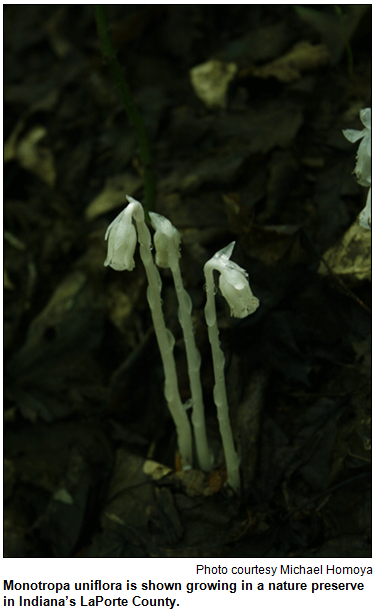 (March 22, 2014) - With, at long last, the arrival of spring - at least in terms of the calendar, if not the current weather - Hoosier History Live! focuses on our state's botanical heritage. And a special co-host guides us during our look at native plants and early botanical explorations.
(March 22, 2014) - With, at long last, the arrival of spring - at least in terms of the calendar, if not the current weather - Hoosier History Live! focuses on our state's botanical heritage. And a special co-host guides us during our look at native plants and early botanical explorations.
Did you know, for example, that 43 varieties of orchids are native to Indiana - more than in Hawaii?
Author and gardening expert Jo Ellen Meyers Sharp, who writes the popular "Hoosier Gardener" column for The Indianapolis Star, joins Nelson in studio for the show. Their guest is a fellow author, botanist and plant ecologist Michael Homoya of the Indiana Department of Natural Resources. His books include Orchids of Indiana (Indiana University Press), which describes all 43 native Indiana orchids.
Jo Ellen, the co-author of The Indiana Gardener's Guide and the author of The Visitor's Guide to American Gardens (both published by Cool Springs Press), is the secretary of Garden Writers Association. She has been writing and speaking about natural gardening for more than 20 years.
So Jo Ellen and Michael will be ideal for this show, during which we dig deep into botanical explorations across Indiana. The first known one occurred in 1795 by French explorer Andre Michaux. Some of Michaux's collections from the Indiana wilderness still exist in the national herbarium in Paris, according to Michael, who has personally seen them.
Our first state forester, Charlie Deam (1865-1953), grew up on a family farm in Wells County and went on to chronicle native plants across the state, including specific locations in counties and townships. 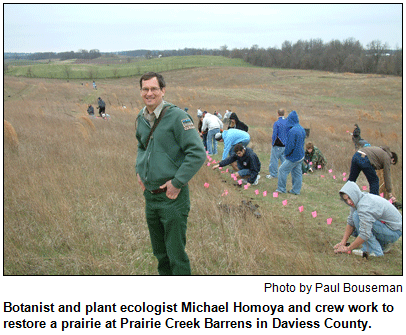 Known as the "father of Indiana botany," he collected more than 73,000 plant specimens from across Indiana, according to Michael Homoya. (His collection is now housed at the herbarium at Indiana University.)
Known as the "father of Indiana botany," he collected more than 73,000 plant specimens from across Indiana, according to Michael Homoya. (His collection is now housed at the herbarium at Indiana University.)
Some other insights about our state's natural history, courtesy of Jo Ellen and Michael:
- Short's Goldenrod(Solidago shortii) is one of the rarest plants in the world, only found in the wild in about two places in the country, including in Harrison County. The plant is now available in the garden trade as Solar Cascade, introduced by the Cincinnati Zoo and Botanical Garden. Short's Goldenrod is considered the most endangered plant in Indiana.
- Indiana ranks near the world's best for the show of forest spring wildflowers.
- The name of Thorntown in central Indiana comes from the Miami Indians, who referred to the area as "Thorn tree place."
-
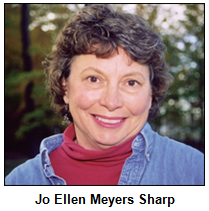 In 1915, a national contest was held to document the largest non-conifer tree in the country. A sycamore tree from Greene County was the winner; it was almost 14 feet in diameter.
In 1915, a national contest was held to document the largest non-conifer tree in the country. A sycamore tree from Greene County was the winner; it was almost 14 feet in diameter. - Stella do Ora daylily was developed Walter Jablonski, a daylily hybridizer from Merrillville, and was introduced in 1975. It was the first re-blooming daylily.
In addition to his book about orchids, our guest Michael Homoya has been the author or co-author of other books about Indiana wildflowers. They include Wildflowers and Ferns of Indiana's Forests (IU Press).
And Jo Ellen, in addition to being an author and columnist, is a garden coach and landscape consultant. A frequent guest about gardening topics on TV and radio stations across Indiana, she is a member of Great Garden Speakers.
History Mystery
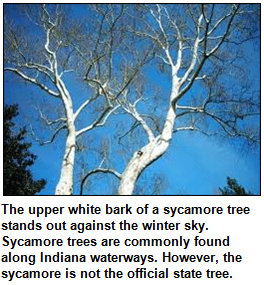 Question: What is the official state tree of Indiana?
Question: What is the official state tree of Indiana?
Sycamore trees shed their bark in winter, providing beautiful white branches to look at against the sky. However, the sycamore is not the state tree of Indiana.
The call-in number is (317) 788-3314. Please do not call into the show until you hear Nelson pose the question on the air, and please do not try to win the prize if you have won any other prize on WICR during the last two months.
The prize is a gift certificate to Howl at the Moon restaurant in downtown Indianapolis and two admission to the Benjamin Harrison Presidential Site, courtesy of Visit Indy.
Roadtrip: Circus Day at Indiana History Center
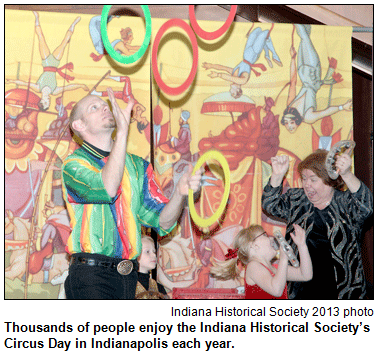 Guest Roadtripper Amy Lamb will suggest you run away to the Eugene and Marilyn Glick Indiana History Center at 450 W. Ohio Street in Indianapolis for the Indiana Historical Society's popular (and free) Circus Day celebration on Saturday, March 29, from 10 a.m. to 5 p.m.
Guest Roadtripper Amy Lamb will suggest you run away to the Eugene and Marilyn Glick Indiana History Center at 450 W. Ohio Street in Indianapolis for the Indiana Historical Society's popular (and free) Circus Day celebration on Saturday, March 29, from 10 a.m. to 5 p.m.
Many Hoosiers may not be aware that Indiana's connection to the circus industry dates back to the late 1800s. By the early 1900s, a number of the nation's premier shows set up winter quarters in Indiana. Today, Peru, Ind., is home to the world's largest amateur circus and the International Circus Hall of Fame.
The day will include performances from the Hampel Family Circus, the Amazing World of Animals, clowns, magicians and jugglers, as well as free admission to the Indiana Experience. Guests can purchase tickets to enjoy face painting, balloon sculptures, crafts and carnival games with prizes. For more information, visit www.indianahistory.org.
Wicked winter history with Paul Poteet
(March 15, 2014) - When you endure one of the most brutal winters in Hoosier history, whom do you call to put it in context?
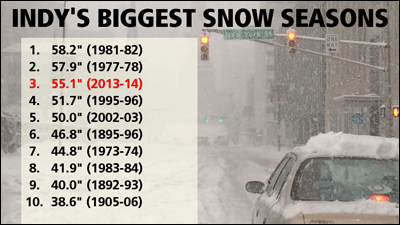 None other than the multimedia meteorologist often dubbed "Indiana's Weatherman." Indianapolis-based forecaster, weather historian and veteran broadcast personality Paul Poteet joins Nelson in studio to share details about the wicked winter of 2013-14 and how it stacks up to previous eras when temps also hit rock bottoms and snowfalls seemed endless, including the notorious Blizzard of 1978.
None other than the multimedia meteorologist often dubbed "Indiana's Weatherman." Indianapolis-based forecaster, weather historian and veteran broadcast personality Paul Poteet joins Nelson in studio to share details about the wicked winter of 2013-14 and how it stacks up to previous eras when temps also hit rock bottoms and snowfalls seemed endless, including the notorious Blizzard of 1978.
As the operator of the weather site paulpoteet.com, Paul delivers forecasts on the Internet and is a go-to guy for media clients ranging from newspapers such as The Indianapolis Star and The Lafayette Courier-Journal to radio stations WZPL-FM (99.5) and WQME-FM (98.7). For nearly 15 years until 2009, he was the morning news meteorologist for WRTV-Channel 6 in Indianapolis.
Known for his wit and boundless energy, Paul has been a busy man this winter, which included a dozen days in Indianapolis during January and February when the temps plunged below zero. 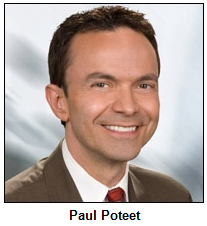 According to Paul, the 11.4 inches of snow that fell on Jan. 5 in the Indy area was "the second highest calendar-day snowfall since records began."
According to Paul, the 11.4 inches of snow that fell on Jan. 5 in the Indy area was "the second highest calendar-day snowfall since records began."
An independent forecaster, Paul owns Weather History Research, a business hired by insurance companies and law firms seeking historic weather data.
The snowiest winter on record in Indy was 1981-82, with a total of 58.2 inches.
And then there's the Blizzard of '78, which was the focus of our second show after Hoosier History Live! made its debut in January 2008. That blizzard, generally considered the worst in city history, involved a massive snowfall of 15.5 inches on top of more than 5 inches already on the ground.
According to Paul Poteet, the maximum snow depth ever recorded on the ground in the Indy area happened during the notorious Blizzard of '78. For three consecutive days (Jan. 26-28 of 1978), the snow depth measured 20 inches.
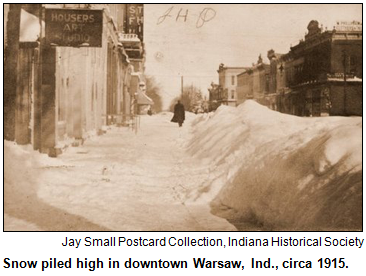 With wind chills reported at 51 degrees below zero, the Blizzard of '78 paralyzed the city, stranded hundreds of people at the American Red Cross shelter and at Indianapolis International Airport and led to the activation of the Indiana National Guard - even to the use of tanks - to rescue stranded motorists and stalled semis.
With wind chills reported at 51 degrees below zero, the Blizzard of '78 paralyzed the city, stranded hundreds of people at the American Red Cross shelter and at Indianapolis International Airport and led to the activation of the Indiana National Guard - even to the use of tanks - to rescue stranded motorists and stalled semis.
Our show, which was broadcast on the 30th anniversary of the Blizzard of '78, featured guests who included a pregnant woman who went into labor at a farmhouse in Franklin Township and the director of the Red Cross shelter.
- Listen here for Hoosier History Live! audio from our Jan. 16, 2008 show, during which former COO of the Indianapolis Red Cross Craig Widener talks about how the city opened its Red Cross Shelter to stranded Greyhound passengers.
- Listen here to for a caller talking about being stranded at O'Malia's grocery store in Carmel.
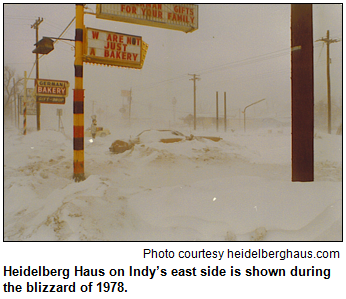 As Paul Poteet joins Nelson, he draws comparisons and contrasts among other wicked winter seasons. Some winter history facts for the Indy area, courtesy of Paul:
As Paul Poteet joins Nelson, he draws comparisons and contrasts among other wicked winter seasons. Some winter history facts for the Indy area, courtesy of Paul:
- Average date of first measurable snowfall: Nov. 19
- Average date of the last measurable snowfall: March 30.
- Average first freeze date: Oct. 16.
- Average last freeze date: April 17.
Two weeks ago, Paul traveled to Alaska to cover the Iditarod in connection with one of his other gigs. With TV personality Patty Spitler (also a former Hoosier History Live! guest), Paul co-hosts Pet Pals TV, a syndicated magazine show that focuses on dogs, cats and an array of other pets.
Consider this: When Paul and Patty left for the Iditarod last week, it was colder across central Indiana (at 6 degrees) than in Alaska, where temps were in the low 20s.
And if history is any guide, Hoosiers may not be out of the woods for quite awhile in terms of the need for overcoats, or at least jackets. According to Paul, the last date of measurable snowfall in central Indiana was May 8. That late-season snowfall happened in 1923.
History Mystery
 The lowest temperature ever recorded in the Indianapolis area occurred within the last 25 years.
The lowest temperature ever recorded in the Indianapolis area occurred within the last 25 years.
On a day during January of the mystery year that became historically cold, the air temperature in Indy plunged to a record low of minus-27 degrees, not counting wind chill.
Question: What was the year?
The prize is a gift certificate to Lorenzo's Ristorante in downtown Indianapolis, courtesy of Visit Indy, and four passes to GlowGolf, the miniature golf course in downtown Indy's Circle Centre Mall.
Roadtripper: Yount's Woolen Mill, Shades and Allen's Country Diner
Guest Roadtripper Gary BraVard encourages us to discover some treasure in Montgomery County; county seat is Crawfordsville. 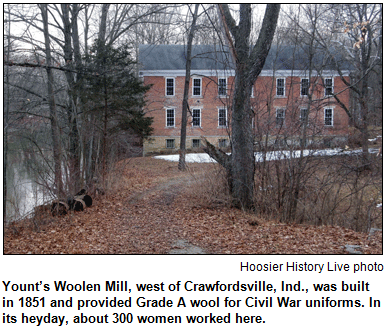 A picturesque hidden paradise stands four miles west of Crawfordsville along Sugar Creek, which winds its way through all those wonderful sandstone cliffs in Shades State Park.
A picturesque hidden paradise stands four miles west of Crawfordsville along Sugar Creek, which winds its way through all those wonderful sandstone cliffs in Shades State Park.
Yount's Woolen Mill is off Highway 32 west of Crawfordsville; it's south on Old Mill Road just west of Sugar Creek. It's rather tucked away.
Built in 1851, Yount's Woolen Mill provided much of the Grade A wool for Civil War uniforms. During its heyday about 300 women worked there, and sleeping quarters for the women were provided in the boarding house in front of the mill. The former boarding house now operates year-round as a bed and breakfast, Yountsville Mill Inn & Garden.
If you've absorbed enough natural beauty after hiking around Montgomery County, you can top off the day with some home cooking at Allen's Country Kitchen in downtown Crawfordsville. Tell them that the Roadtripper from Hoosier History Live sent you!
Bobby Plump on Milan's triumph, 60 years later
(March 8, 2014) - Can you think of any moment in Hoosier history that has become better known around the world than a buzzer-beating "last shot" in March 1954?
The basketball player who led underdog Milan High School to the championship in Indiana's state tournament in 1954 - a victory that inspired the movie Hoosiers - joins Nelson in studio to share insights (and separate facts from folklore and myths) as we mark the 60th anniversary of the "Milan Miracle."
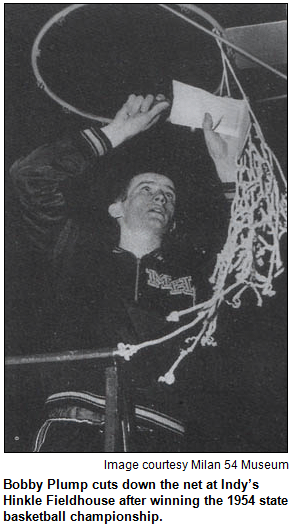 Although Bobby Plump has been a public figure ever since his shot went in the basket at Hinkle Fieldhouse, he and his Milan teammates have been reaping even greater attention in recent weeks because of the big anniversary. Former Gov. Mitch Daniels and Hoosiers screenwriter Angelo Pizzo attended a ceremony at which a ramp at Hinkle was named in Plump's honor. And the 1954 Milan state champion teammates were honored two weeks ago during a basketball game at Butler University, home of the fieldhouse. (As most longtime Indiana basketball fans know, Bobby went on to play for Butler after graduating from Milan High.)
Although Bobby Plump has been a public figure ever since his shot went in the basket at Hinkle Fieldhouse, he and his Milan teammates have been reaping even greater attention in recent weeks because of the big anniversary. Former Gov. Mitch Daniels and Hoosiers screenwriter Angelo Pizzo attended a ceremony at which a ramp at Hinkle was named in Plump's honor. And the 1954 Milan state champion teammates were honored two weeks ago during a basketball game at Butler University, home of the fieldhouse. (As most longtime Indiana basketball fans know, Bobby went on to play for Butler after graduating from Milan High.)
Amid the hoopla, Bobby somehow found time to phone in to Hoosier History Live! during our recent show about the history of Attucks High School so he could comment about Oscar Robertson and other outstanding players from the days when Indiana had an all-inclusive, single-class tournament.
Speaking of phoning in: With our call-in format, this show was an ideal opportunity for calling in and asking Bobby Plump, who is now 77, about the 1954 season that culminated with his game-winning shot. Thanks to that shot, Milan defeated Muncie Central High School 32-30 and made "Hoosier Hysteria" history.
Please keep in mind that Angelo Pizzo always has maintained - and Bobby frequently says - that the only aspect of the fictional Hoosiers (1986) that is lifted directly from the Milan story is "the last 18 seconds." (In other words, Bobby's last shot.) The relationship between Bobby and his real-life coach, Marvin Wood, for example, apparently was far different than the one between Jimmy Chitwood, the fictional star player in Hoosiers, and the coach played by Gene Hackman. Click here to watch video of Gene Hackman's inspirational locker room speech.
 For those who need a refresher: In 1954, the year "David slew Goliath" in Indiana, Milan High School in Ripley County was one of the smallest schools in the state, with about 160 students and a class of 27 seniors. Those seniors included Bobby Plump, who actually grew up in nearby Pierceville, a town smaller than Milan - so small, in fact, it didn't have a high school.
For those who need a refresher: In 1954, the year "David slew Goliath" in Indiana, Milan High School in Ripley County was one of the smallest schools in the state, with about 160 students and a class of 27 seniors. Those seniors included Bobby Plump, who actually grew up in nearby Pierceville, a town smaller than Milan - so small, in fact, it didn't have a high school.
That's why, just before the buzzer sounded at the 1954 state tournament, Bobby's last shot - which Nelson describes in his book Indiana Legends as "a stunning, 15-foot jump shot he scored against seemingly invincible Muncie Central" - instantly became iconic.
After being named Indiana's "Mr. Basketball" of 1954, Bobby played hoops as a Bulldog for legendary coach Tony Hinkle at Butler. Then he played for industrial and amateur teams before become an Indianapolis-based businessman and entrepreneur.
In the 1990s, Bobby crusaded against the creation of the multi-class state basketball tournament. His restaurant Plump's Last Shot in Broad Ripple displays vintage photos and memorabilia of the "Milan Miracle."
Photos and memorabilia also are exhibited at the Milan 54-Hoosiers Museum in the town that USA Today once called "arguably the most famous small town in high school sports history." In 1954, Milan had a population of about 1,150 - but crowds totaling more than 40,000 people flocked to the town the day after the upset victory in the state tournament.
Celebrations have continued on milestone anniversaries. For the 50th anniversary in March 2004, teams from Milan and Muncie Central had a rematch game.
Unlike the fictional Hickory Huskers team in Hoosiers, the Milan team in 1954 did not exactly burst from obscurity. 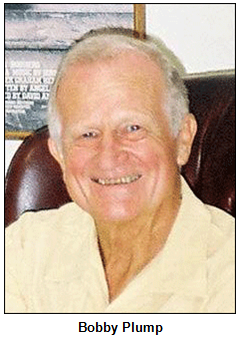 The year before, Bobby Plump and his fellow Milan Indians had made it to the semifinals of the state tournament. And in 1954, Milan defeated powerhouse Attucks (when Oscar Robertson was a sophomore) to reach the Final Four. Of course, Oscar Robertson - known as the "Big O" - and his Attucks teammates would go on to capture back-to-back championships in the two years after Milan's triumph.
The year before, Bobby Plump and his fellow Milan Indians had made it to the semifinals of the state tournament. And in 1954, Milan defeated powerhouse Attucks (when Oscar Robertson was a sophomore) to reach the Final Four. Of course, Oscar Robertson - known as the "Big O" - and his Attucks teammates would go on to capture back-to-back championships in the two years after Milan's triumph.
In terms of size, though, Milan certainly could have been considered an underdog in 1954. The tallest player on the team with Bobby Plump (5-feet-10) was Ron Truitt at 6-feet-2. Other players on the "Milan Miracle" team included Ray Craft, Gene White, Rollin Cutter and Roger Schroder. Bobby and some of the others had been playing barnyard basketball together since they were young boys. Like Bobby, Ray Craft and Rollin Cutter would go on to play at Butler for Coach Hinkle.
After graduating from Butler, Bobby played basketball with an industrial team based in Oklahoma called the Phillips 66 Oilers. In 1963, Bobby and his wife Jenine resettled in Indianapolis, where he launched a successful career in the insurance and financial planning business. They have three children - Tari, Kelli and Jonathan - and seven grandchildren.
Bobby Plump has been named a Sagamore of the Wabash and was inducted into the Indiana Basketball Hall of Fame.
History Mystery
The movie Hoosiers (1986) is set in the fictional small town of Hickory, Indiana. Its high school basketball team, the Huskers, bursts from obscurity to win the state championship in 1952. The year of the climactic tournament is just one of several deviations from real story of the Milan Indians, who won the championship in 1954.
Another deviation involves the small town team's final opponent. In real life, Milan defeated Muncie Central. In the movie, the Huskers beat a team from a different Indiana city, one that truly exists - unlike the fictional town of Hickory. In fact, the team that loses the climactic game in Hoosiers hails from a city that's larger than Muncie.
Question: What is the city?
The prize is a gift certificate to The Rathskeller in downtown Indianapolis, courtesy of Visit Indy, and four passes to GlowGolf, the miniature golf course in downtown Indy's Circle Centre Mall.
By request, we are publishing the answer to the March 1 History Mystery for readers who did not get a chance to hear the show. The question: In March of 1982, two Hoosier women founded a business that they named in honor of one of their mothers. Although their company started modestly in the basement of one of the co-founders, it has become an international success. Still based in the Indiana city where it began, the company makes products used by millions of women every year.
Question: Name the business and the Indiana city where it is headquartered.
Answer: Vera Bradley and Fort Wayne.
Madam Walker: her life, business and theater building
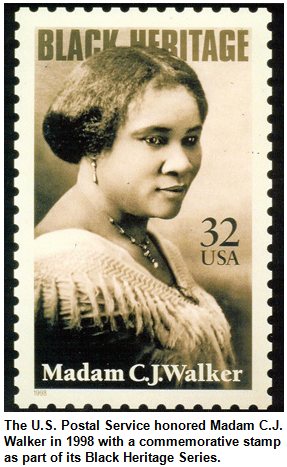 (March 1, 2014) - As we welcome Women's History Month following our salute to Black History Month, Hoosier History Live! explores various aspects of a pioneer entrepreneur, philanthropist and visionary whose life truly became iconic.
(March 1, 2014) - As we welcome Women's History Month following our salute to Black History Month, Hoosier History Live! explores various aspects of a pioneer entrepreneur, philanthropist and visionary whose life truly became iconic.
We have the best possible guest for our show about Madam Walker, the daughter of slaves who probably became the country's first self-made African-American woman millionaire. We also explore the Indianapolis landmark, the Madam Walker Theatre Center, that is among her legacies in her adopted hometown.
Nelson's guest is Madam Walker's great-great granddaughter and biographer, A'Lelia Bundles, who grew up in the Hoosier capital, graduated from North Central High School and Harvard, then became an Emmy Award-wining TV producer. She currently is based in the Washington D.C. area.
A former ABC News executive, A'Lelia wrote a critically acclaimed biography of her legendary ancestor, On Her Own Ground: The Life and Times of Madam C.J. Walker (Scribner, 2001).
Now A'Lelia is the author of a new book. Madam Walker Theatre Center: An Indianapolis Treasure (Arcadia Publishing) explores the construction and evolution of - as well as the social history associated with - the block-long flatiron structure built on Indiana Avenue in the 1920s and listed on the National Register of Historic Places.
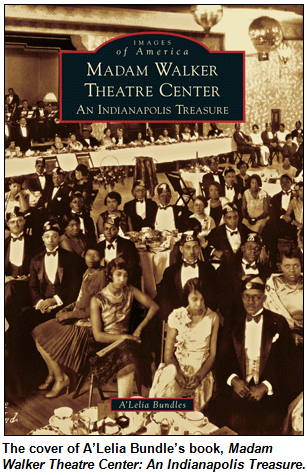 Madam Walker (1867-1919) did not live to see the opening of the building designed as the new corporate headquarters of her Madam C.J. Walker Manufacturing Co., which produced hair-care products sold internationally. But Madam Walker had the vision for the landmark building with a stage that, for more than 85 years, has been a venue for African-American performers such as Motown great Smokey Robinson and opera star Angela Brown, an Indy native.
Madam Walker (1867-1919) did not live to see the opening of the building designed as the new corporate headquarters of her Madam C.J. Walker Manufacturing Co., which produced hair-care products sold internationally. But Madam Walker had the vision for the landmark building with a stage that, for more than 85 years, has been a venue for African-American performers such as Motown great Smokey Robinson and opera star Angela Brown, an Indy native.
When the Walker building had a grand opening in 1927, it included, in addition to the corporate offices, a movie theater, beauty salon, ballroom and a café called the Coffee Pot that was promoted with a distinctive coffee-pot-shaped sign on the exterior.
Madam Walker had been born as Sarah Breedlove on a cotton plantation in Louisiana. By age 7, she was an orphan. She married during her teen years, had a daughter and, by age 20, was a widow. She found work as a laundress but in the 1890s suffered a severe scalp disease that, as A'Lelia notes in her new book, "was causing her to go bald."
From those inauspicious beginnings, Madam Walker created shampoos, ointments and other hair-care products that became enormously popular. 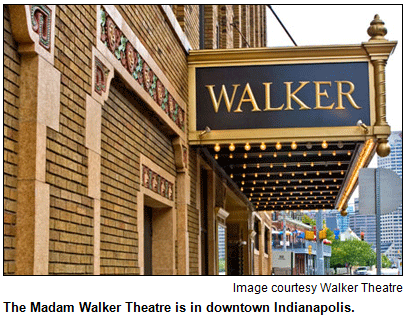 The company she founded eventually employed and trained thousands of women. In 1910, she moved its headquarters to Indianapolis for several reasons, including the city's "Crossroads of America" reputation as a railroad hub that enabled efficient shipping across the country for her products.
The company she founded eventually employed and trained thousands of women. In 1910, she moved its headquarters to Indianapolis for several reasons, including the city's "Crossroads of America" reputation as a railroad hub that enabled efficient shipping across the country for her products.
While patronizing a downtown Indy theater in 1914, Madam Walker was startled when she was told tickets for blacks had increased sharply higher than admission for whites. She promptly instructed her attorney to sue the theater.
"Legend has it," A'Lelia writes in her new book, "that she also vowed that day to build her own movie theater."
The book includes dozens of vintage photos of the building that, since a major restoration in 1988, has been a cultural arts center. Its theater, designed in an African art deco style, not only is the venue for jazz, blues and gospel concerts, it has been the setting for performances by the Vienna Boys Choir.
 In addition to being a pioneer African-American business leader, Madam Walker was a staunch advocate for women. The "on her own ground" reference in the title of A'Lelia's biography refers to a response that Madam Walker gave in 1912 when she was denied a request to be included on the program at the National Negro Business League convention:
In addition to being a pioneer African-American business leader, Madam Walker was a staunch advocate for women. The "on her own ground" reference in the title of A'Lelia's biography refers to a response that Madam Walker gave in 1912 when she was denied a request to be included on the program at the National Negro Business League convention:
"I am a woman who came from the cotton fields of the South. I was promoted from there to the washtub. Then I was promoted to the cook kitchen, and from there I promoted myself into the business of manufacturing hair goods. ... I have built my own factory on my own ground."
With her success in business, Madam Walker became an arts patron and a major philanthropist, helping fund the Senate Avenue YMCA in Indianapolis and other organizations.
In addition to vintage photos of the Walker Theatre, A'Lelia's new book includes photos of Madam Walker's Indianapolis home (which has been demolished), ads for her hair care products and a photo of her final residence in New York, a mansion just a few miles from the estate of John D. Rockefeller.
A'Lelia currently is working on a book about her namesake, Madam Walker's daughter A'Lelia Walker, who was based in New York and helped influence the Harlem Renaissance of the 1920s.
History Mystery
In March of 1982, two Hoosier women founded a business that they named in honor of one of their mothers. Although their company started modestly in the basement of one of the co-founders, it has become an international success.
Still based in the Indiana city where it began, the company makes products used by millions of women every year. The two co-founders also have become major philanthropists, establishing a foundation for breast cancer research that has been a major donor to the Indiana University School of Medicine.
Question: Name the business and the Indiana city where it is headquartered.
The prize is a gift certificate to O'Reilly's Pub and Restaurant in downtown Indianapolis, as well as a pair of tickets to the Benjamin Harrison Presidential Site.
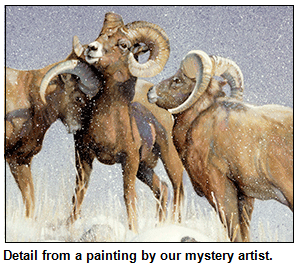 By request, we are publishing the answer to the Feb. 22 show History Mystery for readers who did not get a chance to hear the show. The question: Among the famous Hoosiers included in Indiana Legends, one of the books by our host Nelson Price, is a contemporary artist who has been in the news this month. She has announced plans to sell her gallery, which has been located in a former Methodist church built in the 1860s. She intends to open a new gallery in New York City, although she plans to keep her central Indiana home and studio, where she paints on the upper floor of a horse barn. Who is the artist?
By request, we are publishing the answer to the Feb. 22 show History Mystery for readers who did not get a chance to hear the show. The question: Among the famous Hoosiers included in Indiana Legends, one of the books by our host Nelson Price, is a contemporary artist who has been in the news this month. She has announced plans to sell her gallery, which has been located in a former Methodist church built in the 1860s. She intends to open a new gallery in New York City, although she plans to keep her central Indiana home and studio, where she paints on the upper floor of a horse barn. Who is the artist?
Answer: NANCY NOEL.
The artist, who was born of French heritage in Indianapolis in 1945, announced this month that she plans to sell The Sanctuary, her gallery on Main Street in Zionsville. The Sanctuary, which also includes a restaurant, is in a renovated historic building, a Free Methodist Church built in the 1860s.
In her announcement, Nancy Noel reported that she plans to open a New York City gallery, although she intends to keep her home and studio that are located on a rolling, 45-acre farm near Zionsville.
Roadtripper: Buffalo Trace in southern Indiana
Guest Roadtripper Andrea Neal tell us that bison hooves paved Indiana's first road, known as the Buffalo Trace. Long before Indiana became a state, American bison moved from the salt licks of Kentucky headed toward the grasslands of the Illinois prairie. In Indiana, the bison entered at the Falls of the Ohio and headed west through what later become Vincennes.
Very few remnants of their trail remain, but if you look closely you can still see sections of the Buffalo Trace. Andrea tell us that you can hike it too!
'Ask Nelson' - and Andrea Neal, too
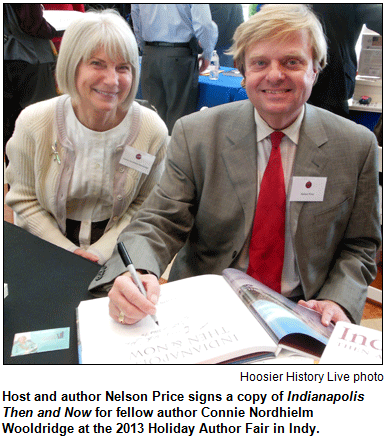 (Feb. 22, 2014) - Once again, Hoosier History Live! turns the tables on our host, author/historian Nelson Price, opens the phone lines and gives our listeners an opportunity to question the interviewer who calls himself "a garbage can of useless Hoosier trivia." Just as with previous all-call-in shows, Nelson is joined by a distinguished co-host.
(Feb. 22, 2014) - Once again, Hoosier History Live! turns the tables on our host, author/historian Nelson Price, opens the phone lines and gives our listeners an opportunity to question the interviewer who calls himself "a garbage can of useless Hoosier trivia." Just as with previous all-call-in shows, Nelson is joined by a distinguished co-host.
Not only is Andrea Neal a syndicated columnist and a member of the State Board of Education, she is a history teacher and a former editorial page editor at The Indianapolis Star. Andrea teaches at St. Richard's Episcopal School and has been writing a popular column about Indiana history - called "Indiana at 200" - as we advance toward the bicentennial of the Hoosier state in 2016. She also is an adjunct scholar with the Indiana Policy Review Foundation and a board member of the Benjamin Harrison Presidential Site.
Like Nelson, Andrea grew up in Indianapolis and is descended from a long line of Hoosiers; both Nelson and Andrea are board members of the Society of Indiana Pioneers, a non-profit that celebrates the state's heritage and was founded by descendants of early settlers.
Andrea discusses the Native American group in Indiana known as the Miami. Unfortunately, they lost their federally designated tribal status more than 100 years ago due to what Andrea says was an administrative error. She shares details.
 In terms of Hoosier history, Nelson's areas of expertise are famous Hoosiers (both historic and contemporary figures) and Indianapolis city history. His books include Indiana Legends: Famous Hoosiers from Johnny Appleseed to David Letterman (Hawthorne Publishing) and Indianapolis Then and Now (Thunder Bay Press), a visual history about his hometown.
In terms of Hoosier history, Nelson's areas of expertise are famous Hoosiers (both historic and contemporary figures) and Indianapolis city history. His books include Indiana Legends: Famous Hoosiers from Johnny Appleseed to David Letterman (Hawthorne Publishing) and Indianapolis Then and Now (Thunder Bay Press), a visual history about his hometown.
Some of Andrea's recent "Indiana at 200" columns have focused on topics that we also have explored on Hoosier History Live! shows, including the utopian communities that attempted to flourish in New Harmony; the wine-making heritage in Switzerland County (it is believed to have been the site of the first successful winery in the entire country) and the boyhood of Abe Lincoln in what's now Spencer County.
Fun fact: In addition to the previous week's show about young Abe's relationships with his father, mother and stepmother, we did a program in February 2009 about Lincoln's youth. Nelson's studio guests then included Andrea and two of her eighth-grade students at St. Richard's who had immersed themselves in the early years of the 16th president.
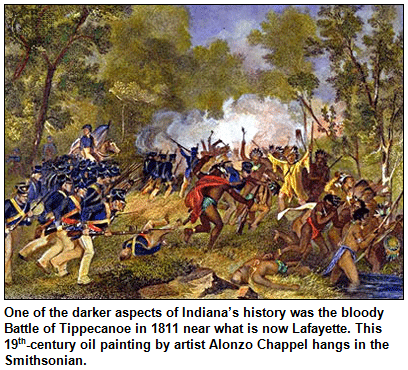 Other recent columns written by Andrea have focused on William Henry Harrison, the first governor of the Indiana Territory in the early 1800s (decades later, he was elected U.S. president) and the bloody Battle of Tippecanoe, in which soldiers under Harrison's command defeated Shawnee forces led by the Prophet, the controversial brother of legendary leader Tecumseh.
Other recent columns written by Andrea have focused on William Henry Harrison, the first governor of the Indiana Territory in the early 1800s (decades later, he was elected U.S. president) and the bloody Battle of Tippecanoe, in which soldiers under Harrison's command defeated Shawnee forces led by the Prophet, the controversial brother of legendary leader Tecumseh.
Nelson's book Indiana Legends, now in its 4th edition and 7th printing, features profiles of more than 160 notables, ranging from frontier figures such as Mother Theodore Guerin (a Catholic nun from France who founded orphanages, schools and the academy that became St. Mary of the Woods College near Terre Haute), who was named Indiana's first saint, to contemporary figures including Hoosier astronauts, Olympic athletes and artists.
Nelson and Andrea worked together for several years at The Indianapolis Star. Before that, he was a feature writer/columnist for The Indianapolis News, and Andrea was a Statehouse reporter for United Press International. So these two Hoosier history buffs began journalism careers at almost exactly the same time.
History Mystery
Among the famous Hoosiers included in Indiana Legends, one of the books by our host Nelson Price, is a contemporary artist who has been in the news this month. She has announced plans to sell her gallery, which has been located in a former Methodist church built in the 1860s.  She intends to open a new gallery in New York City, although she plans to keep her central Indiana home and studio, where she paints on the upper floor of a horse barn.
She intends to open a new gallery in New York City, although she plans to keep her central Indiana home and studio, where she paints on the upper floor of a horse barn.
The artist, who first achieved popular success with her portraits of children, grew up in Indianapolis. A teacher at Immaculate Heart of Mary Catholic School noticed her artistic talent and encouraged her. Celebrities who have owned her paintings include Robert Redford, the Beach Boys and the late South African leader Nelson Mandela.
Question: Who is she?
The prize is a gift certificate to Prime 47 restaurant in downtown Indianapolis, as well as a pair of tickets to the Benjamin Harrison Presidential Site.
Roadtripper: Belle of Louisville at Indiana Preservation Conference
 Guest Roadtripper Suzanne Stanis of Indiana Landmarks suggests a Roadtrip south on I-65 to visit the fabled riverboat, the Belle of Louisville. Though constructed in Pittsburgh in 1914 as the Idlewild, a ferry and freight packet, and living a vagabond's life in the 1950s, the Belle of Louisville dropped anchor on the Kentucky side of the Ohio River in 1962.
Guest Roadtripper Suzanne Stanis of Indiana Landmarks suggests a Roadtrip south on I-65 to visit the fabled riverboat, the Belle of Louisville. Though constructed in Pittsburgh in 1914 as the Idlewild, a ferry and freight packet, and living a vagabond's life in the 1950s, the Belle of Louisville dropped anchor on the Kentucky side of the Ohio River in 1962.
With engines built in the 1890s and still running strong, the Belle is a National Historic Landmark and the oldest operating Mississippi River-style steamboat in the country.
Louisville's "Legendary Lady" will be featured during Preserving Historic Places: Indiana's Statewide Preservation Conference in New Albany, Ind., April 9-11.
Attucks High School history
 (Feb. 15, 2014) - During the 1920s, white segregationists in Indianapolis pushed for the creation of the city's only all-black high school. Unlikely as it may have seemed to many at the time, Attucks High School emerged to be a source of black pride for generations of Hoosiers.
(Feb. 15, 2014) - During the 1920s, white segregationists in Indianapolis pushed for the creation of the city's only all-black high school. Unlikely as it may have seemed to many at the time, Attucks High School emerged to be a source of black pride for generations of Hoosiers.
As Hoosier History Live! salutes Black History Month, we explore the history of the high school attended by future legends, including basketball superstar Oscar Robertson; jazz musician David Baker; opera star Angela Brown and members of the Tuskegee Airmen, the country's first African-American military aviators.
For this look at Attucks - which opened in 1927, became a junior high/middle school during the 1980s and '90s and now is once again a high school, with a magnet program for Indianapolis Public Schools students interested in medical careers - Nelson is joined in studio by three guests:
 Stanley Warren, an Attucks alum (and former teacher) who became an administrator at DePauw University. Now retired, Dr. Warren is the author of Crispus Attucks High School: Hail to the Green, Hail to the Gold (Donning Co. Publishers, 1998). "The story of Crispus Attucks High School has many ups and downs," he writes, "but its place in history can never be questioned."
Stanley Warren, an Attucks alum (and former teacher) who became an administrator at DePauw University. Now retired, Dr. Warren is the author of Crispus Attucks High School: Hail to the Green, Hail to the Gold (Donning Co. Publishers, 1998). "The story of Crispus Attucks High School has many ups and downs," he writes, "but its place in history can never be questioned."- Pat Payne, director of the Crispus Attucks Museum and of the IPS Center for Multicultural Education. During a long tenure as an IPS teacher, Pat served as president of the Indianapolis Education Association in the 1980s.
- And Wilma Moore, senior archivist for African-American history at the Indiana Historical Society. Wilma, an Attucks alum, has been a popular guest on several Hoosier History Live! shows.
According to several accounts, IPS officials initially wanted to name the all-black school Thomas Jefferson High School. Many black leaders objected both to the creation of the segregated school (African-Americans had been attending Shortridge High School, Manual High School and other IPS schools) as well as to the proposed name.  School leaders eventually decided the namesake should be Crispus Attucks, an African-American who protested the British and is believed to have been the first American killed during the Boston Massacre of 1770.
School leaders eventually decided the namesake should be Crispus Attucks, an African-American who protested the British and is believed to have been the first American killed during the Boston Massacre of 1770.
By the time the new school opened, Dr. Warren writes, the concept of a separate high school for black students was being explored by other Indiana cities with sizable African-American communities.
"By 1929, both Gary Roosevelt High School in the northern part of the state and Evansville Lincoln High School in the south replicated the form and function of Crispus Attucks High School," according to his book.
Some history facts about the school, which is on the National Register of Historic Places:
- With its grand entryway, elegant auditorium and other features, Attucks High School quickly became a social center for the African-American community and a destination for visiting celebrities. Ten years after the school opened, it was visited by track star Jesse Owens, the gold medalist in the 1936 Berlin Olympics.
- The school's Tigers basketball teams, with stars such as Robertson and other future pro players, dominated the high school basketball tournament in the mid-1950s. Coached by Ray Crowe and clad in green and gold uniforms, the Tigers won back-to-back state championships.
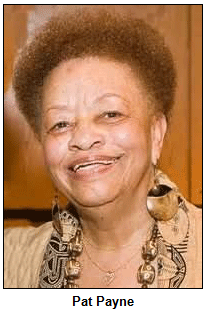 With the initial victory in 1955, Attucks became the country's first all-black high school to capture a state title in any sport.
With the initial victory in 1955, Attucks became the country's first all-black high school to capture a state title in any sport. - In the late 1960s, Attucks became the country's first all-black high school to be integrated at its original site, according to accounts in The Indianapolis News.
In addition to exhibits about the school's history, the Crispus Attucks Museum celebrates African-American history with vintage photos, artwork and memorabilia, including musical instruments played during the heyday of jazz clubs on nearby Indiana Avenue. During a Hoosier History Live! show in March 2008, future jazz icon David Baker shared anecdotes about sneaking into Indiana Avenue nightspots in the late 1940s when he was an Attucks student - and underage - by resorting to a fake mustache and a beret to appear older.
Because African-Americans with post-graduate degrees had limited employment options for decades after Attucks opened, many often joined the faculty at Attucks. As a result, Attucks became known for its outstanding faculty members, who were recruited across the country.
According to an article by our guest, Dr. Warren, in Traces of Indiana and Midwestern History magazine, the faculty when the school opened in 1927 included Mary Stokes, a "brilliant mathematician" who almost had been named valedictorian at Shortridge High School; she was elected to Phi Beta Kappa at Butler University. In addition to teaching math at Attucks, she taught Greek and sponsored the Poetry Club.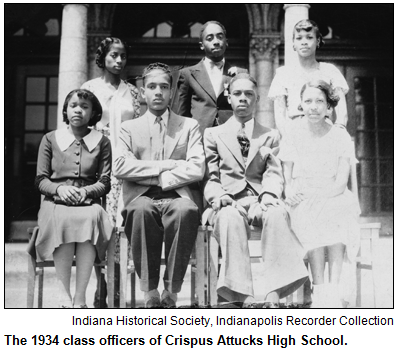 The school's first principal, Mathias Nolcox, earned a doctorate from Harvard.
The school's first principal, Mathias Nolcox, earned a doctorate from Harvard.
Ironically, given the school's eventual triumphs in basketball and other sports, Attucks "was built without a real gym," as the Indianapolis Star noted in a 2005 story on the 50th anniversary of the 1955 basketball championship. Instead, the school's auditorium included a combination stage/gym.
Initially, Attucks even was denied membership in the Indiana High School Athletics Association because it was not considered a "public" school - since white students were not included. Limited in the early years primarily to playing teams from other African-American high schools, Attucks players endured long, exhausting bus trips across the state. Attucks finally was allowed to compete in the IHSAA tournament in the 1940s.
Also during the 1940s, some Attucks alums were Tuskegee Airmen pilots in World War II. Harry Brooks, a member of the Class of '47, became a general in the U.S. Army. Another member of the Class of '47, John W. Lee, became the first black commissioned officer in the U.S. Navy.
History Mystery
Illustrious graduates of Attucks High School who have been Hoosier History Live! guests include a member of the Class of 1953 who enjoyed a long career with the Harlem Globetrotters.
 At Attucks, he and teammates such as Willie Gardner helped kick off what our guest, Stanley Warren, describes as the school's "basketball golden age" by helping take the Tigers to the state finals in 1951, where they were defeated by Evansville Reitz High School. Two years later, he was named the state's outstanding player, becoming Indiana's "Mr. Basketball" of 1953. That was followed by basketball triumphs at Indiana University.
At Attucks, he and teammates such as Willie Gardner helped kick off what our guest, Stanley Warren, describes as the school's "basketball golden age" by helping take the Tigers to the state finals in 1951, where they were defeated by Evansville Reitz High School. Two years later, he was named the state's outstanding player, becoming Indiana's "Mr. Basketball" of 1953. That was followed by basketball triumphs at Indiana University.
Next came a 27-year career touring the world with the Globetrotters, first as a barnstorming player then in public relations.
In recent years, he has been an Indianapolis-based businessman and motivational speaker.
Question: Who is he?
The prize is five tickets to the Crispus Attucks Museum, courtesy of the Crispus Attucks Museum, as well as gift certificate to MacNiven's in downtown Indy on Massachusetts Avenue, courtesy of Visit Indy.
Abe Lincoln's parents: Thomas, Nancy Hanks and stepmom Sarah
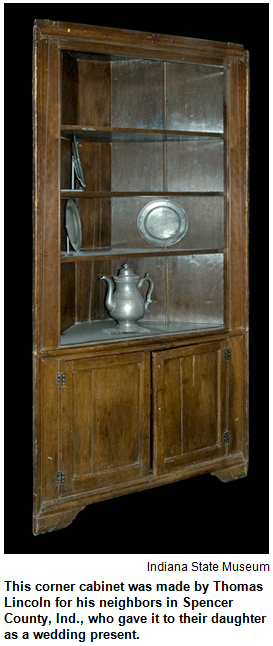 (Feb. 8, 2014) - As he often has been depicted, was Thomas Lincoln merely an illiterate farmer who objected to his son's passion for reading and learning when the family lived in the Indiana wilderness?
(Feb. 8, 2014) - As he often has been depicted, was Thomas Lincoln merely an illiterate farmer who objected to his son's passion for reading and learning when the family lived in the Indiana wilderness?
What was the relationship like between young Abe Lincoln and his mother, Nancy Hanks Lincoln, who died in Indiana when he was 9 years old? And what about the future 16th president's relationship with Sarah Johnston Lincoln, the widow from Kentucky who became his stepmother? Are there misconceptions about these parental relationships with Abe, who lived in southwestern Indiana during the character-shaping span between ages 7 to 21?
To explore these issues during the month when we celebrate the birthday of the "Great Emancipator" (1809-1865), Nelson has three guests:
- William E. Bartelt, the author of There I Grew Up: Remembering Abraham Lincoln's Youth (Indiana Historical Society Press, 2008). Widely considered the foremost Indiana-based authority about Lincoln's youth in the new Hoosier state (the Lincolns moved here in 1816, the year Indiana became a state), Bill lives in Newburgh, is a board member of the Indiana Historical Society and served on committees of the Federal Abraham Lincoln Bicentennial Commission. For more than 15 summers, he worked as a historian at the Lincoln Boyhood National Memorial in Spencer County.
- Steve Haaff, an industrial arts teacher at South Spencer High School who has become an expert on Thomas Lincoln's woodworking and cabinet-making skills. Steve has done presentations about the furniture Thomas Lincoln built for his pioneer neighbors while living in Kentucky, Indiana and Illinois.
- And Dale Ogden, chief curator of cultural history at the Indiana State Museum. Dale was our guest in February 2010 for a Hoosier History Live! show in connection with the opening at the state museum of a blockbuster Lincoln exhibit, which Dale oversaw.
With our distinguished guests, Nelson explores how Abe Lincoln's family life was greatly transformed during his years living in a small cabin in the frontier settlement of Little Pigeon Creek. The family of four - which included Lincoln's older sister, who also was named Sarah - evolved into a blended family after Thomas married Sarah (often called "Sally") Bush Johnston, who had children from her first marriage.  And Dennis Hanks, the 18-year-old ward of Nancy Hanks Lincoln's aunt, moved into the one-room Lincoln cabin - and slept in the loft with young Abe - after his guardians died.
And Dennis Hanks, the 18-year-old ward of Nancy Hanks Lincoln's aunt, moved into the one-room Lincoln cabin - and slept in the loft with young Abe - after his guardians died.
Amid all of the changing family dynamics, our guests will share insights about the parents of the lanky, book-loving youth who grew up to become perhaps America's greatest leader.
Our guest Steve Haaff, who has studied almost every piece of furniture available made by Thomas Lincoln, contends the patriarch long was misunderstood by historians because, as Steve told the Evansville Courier-Press, "they didn't speak the same language."
Steve, whose favorite style of furniture is Federalist, the type popular during Thomas Lincoln's era, says the family patriarch would have had to be highly skilled - and a master at calculations - to create the cabinets and other woodwork that he produced.
Nancy Hanks Lincoln (1784-1818) died from what frontier communities called "milk sickness" - the result of drinking milk from infected cows that had eaten white snakeroot. 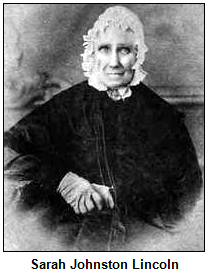 In his book, our guest Bill Bartelt describes white snakeroot as "a simple and abundant plant with a delicate white flower. ... Since colonial time, deaths from milk sickness occurred in isolated areas with few residents, drawing little interest from the medical profession."
In his book, our guest Bill Bartelt describes white snakeroot as "a simple and abundant plant with a delicate white flower. ... Since colonial time, deaths from milk sickness occurred in isolated areas with few residents, drawing little interest from the medical profession."
That changed, he continues, when the frequency of deaths swept through frontier settlements like Little Pigeon Creek. He notes that Lincoln and their neighbors would not have known "what caused the milk to become poisoned - and that mystery made it difficult to prevent the deaths."
The Lincolns had moved from Hardin County, Kentucky, to what is now Spencer County, Indiana(then Perry County) for several reasons, including disputes over land ownership. Many experts also have concluded that Abe Lincoln's parents objected to slavery.
 Tall for his age, young Abe was able to help his father build a cabin in Indiana's dense wilderness after the family's arrival. For their neighbors and others in Indiana, Thomas Lincoln made cabinets that displayed highly skilled craftsmanship for the era. They included a corner cabinet - now owned by the Indiana State Museum - that neighbors gave as a wedding gift to their daughter.
Tall for his age, young Abe was able to help his father build a cabin in Indiana's dense wilderness after the family's arrival. For their neighbors and others in Indiana, Thomas Lincoln made cabinets that displayed highly skilled craftsmanship for the era. They included a corner cabinet - now owned by the Indiana State Museum - that neighbors gave as a wedding gift to their daughter.
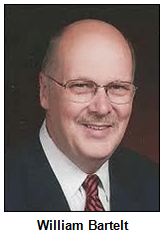 Referring decades later to his years in Indiana, Abraham Lincoln wrote, "There I grew up," accounting for the title of our guest Bill Bartelt's book.
Referring decades later to his years in Indiana, Abraham Lincoln wrote, "There I grew up," accounting for the title of our guest Bill Bartelt's book.
After the death of Nancy Hanks Lincoln, who was buried on a hill near the cabin in southern Indiana, Thomas Lincoln (1778-1851) returned to Kentucky. That's where he married Sarah (or Sally) Bush Johnston, whose first husband had died at least three years earlier. She had three children (Elizabeth, Matilda and John), who moved with her to the Lincoln cabin in Little Pigeon Creek.
According to Bill Bartelt's book, young Abe "bonded quickly with his stepmother, who recognized and encouraged his desire to learn and read."
The Lincolns lived in Indiana until 1830, when they moved to Illinois. By then, Abe's sister Sarah had married and died in childbirth.
Of the three parents who raised Lincoln, only his stepmother lived to see him elected to the presidency. In fact, she outlived her stepson and died in 1869.
Roadtrip: Romance at the Limberlost
 Guest Roadtripper Terri Gorney of Fort Wayne suggests we enjoy a romantic Valentine's Day at Limberlost, the home of Hoosier author Gene-Stratton Porter in Geneva, Ind., in Adams County, south of Fort Wayne.
Guest Roadtripper Terri Gorney of Fort Wayne suggests we enjoy a romantic Valentine's Day at Limberlost, the home of Hoosier author Gene-Stratton Porter in Geneva, Ind., in Adams County, south of Fort Wayne.
In addition to wine and dessert tastings, film historian Eric Grayson is generously allowing Limberlost to show the vintage 1934 film A Girl of the Limberlost, based on the book by Gene Stratton-Porter.
This special evening event is a fund raiser by the Friends of the Limberlost to help to raise funds to restore Gene Stratton-Porter's 1895 kitchen. Reservations are required; contact Curt or Randy at (260) 368-7428.
History Mystery
Dozens of buildings and businesses across Indiana have been named in honor of Abraham Lincoln since his death in 1865. In downtown Indianapolis, the Lincoln Hotel opened in 1918. It became known as one of the city's finest hotels during the first half of the 20th century and was the setting for political, civic and social gatherings, as was the rival Claypool Hotel.
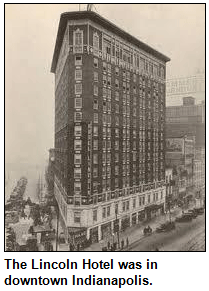 During the 1960s, however, both hotels slid downhill. The once-grand Lincoln Hotel was demolished in the early 1970s. On its site, however, one of downtown Indy's first modern, urban hotels opened in 1976. The new hotel was hailed as a step in downtown revitalization. Although the hotel has undergone several renovations since then, it still stands on the site of the former Lincoln Hotel.
During the 1960s, however, both hotels slid downhill. The once-grand Lincoln Hotel was demolished in the early 1970s. On its site, however, one of downtown Indy's first modern, urban hotels opened in 1976. The new hotel was hailed as a step in downtown revitalization. Although the hotel has undergone several renovations since then, it still stands on the site of the former Lincoln Hotel.
Question: Name the hotel.
The prize is a gift certificate to MacNiven's in downtown Indy on Massachusetts Avenue, and a pair of tickets to the James Whitcomb Riley Museum Home, courtesy of Visit Indy.
By request, we are publishing the answer to the live History Mystery, in case you didn't catch it on the air. The Feb. 1 History Mystery question: Name the center on Central Avenue in downtown Indianapolis that provides emergency shelter, clothing and food for homeless families with children.
Answer: DAYSPRING.
The Dayspring Center at 1537 Central Avenue in Indianapolis - near All Saints Episcopal Church - provides emergency shelter, clothing, and food for homeless families with children in central Indiana.
Dayspring traces its history to 1984, when Episcopalian volunteers opened a soup kitchen and a shelter in a church basement. Dayspring's center for emergency housing opened in the late 1980s. Nine years later, Dayspring began a transitional housing program to assist former residents who need assistance while working on longer-term goals. The agency estimates more than 10,000 children - and 3,000 families - have been helped at Dayspring Center since it opened.
Families, children, seniors and homeless: outreach heritage
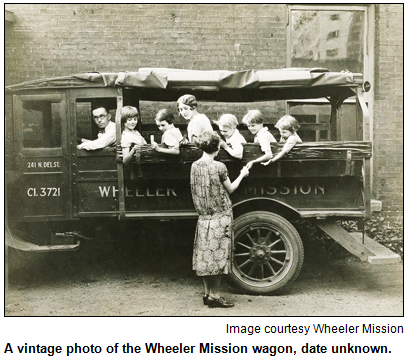 (Feb. 1, 2014) - In 1883, a small group of German immigrants to Indianapolis, motivated by their Lutheran faith, started a home for orphans.
(Feb. 1, 2014) - In 1883, a small group of German immigrants to Indianapolis, motivated by their Lutheran faith, started a home for orphans.
Ten years later, other residents of the Hoosier capital founded an outreach organization called Door of Hope. Volunteers included William V. Wheeler, a hardware salesman.
And in 1902, a residence known as the Jewish Shelter House, which offered care and services to the elderly, opened in Indy. By then, various services to the city's indigent - including financial assistance - had been offered for more than 40 years by the Hebrew Ladies Benevolent Society.
The heritage of the faith-based social outreach services that evolved from these beginnings will be explored with Nelson's studio guests from Lutheran Child and Family Services, Wheeler Mission Ministries and the Indianapolis Jewish Community Relations Council.
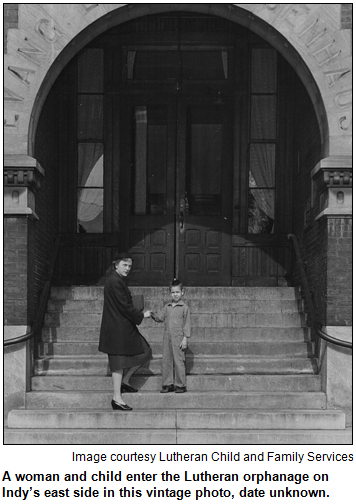 Wheeler Mission, which is celebrating its 120th anniversary, had an early focus on outreach to women who had been disowned by their families, often for sexual activity; in the early 1900s, volunteers even operated a "rescue wagon."
Wheeler Mission, which is celebrating its 120th anniversary, had an early focus on outreach to women who had been disowned by their families, often for sexual activity; in the early 1900s, volunteers even operated a "rescue wagon."
According to several accounts, the focus of the non-profit organization shifted to helping homeless men during the Great Depression. Since 1929, Wheeler has had one of its highest-visibility sites at 245 N. Delaware St. in downtown Indianapolis.
Our guest Steve Kerr, Wheeler's development director, traces the evolution of Wheeler, which in recent years has added programs and residential facilities for men and women seeking treatment for drug and alcohol abuse. Just last week, Wheeler announced it will break ground for a 12,000-square-foot facility for the homeless that will be adjacent to its existing shelter at 520 E. Market St.
Wheeler also operates several other missions, including two shelters for women and children in Indy and an addiction recovery center in Monroe County.
Lutheran Child and Family Services also has significantly expanded its services and evolved since the founding of the initial orphanage in the 1880s on East Washington Street by members of two Lutheran congregations.
Developments have included the opening in 1956 of Lutherwood, a residential facility (which has since been completely rebuilt), as well as the expansion of "counseling and compassionate care to families."
Sven Schumacher, CEO of the Foundation for Lutheran Child and Family Services (and himself a German immigrant in 1985), shares details.
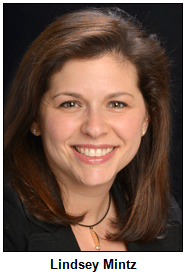 Nelson also is joined by Lindsey Mintz, executive director of the Jewish Community Relations Council, the public affairs arm of the Jewish community. The Jewish Shelter House that opened at the turn of the last century eventually evolved into Hooverwood, a nursing facility that specializes in residential care, adult day services and other social services.
Nelson also is joined by Lindsey Mintz, executive director of the Jewish Community Relations Council, the public affairs arm of the Jewish community. The Jewish Shelter House that opened at the turn of the last century eventually evolved into Hooverwood, a nursing facility that specializes in residential care, adult day services and other social services.
 The heritage of Hooverwood, which opened at its current location at 7001 Hoover Road in 1970, is just one aspect of a much larger history of social service delivery by the Jewish community in Indianapolis. Our guest Lindsey Mintz will discuss the evolution of a range of social services, including the Jewish Community Center and the Albert & Sara Reuben Senior and Community Resource Center. It provides a broad range of services and programming for both Jewish and non-Jewish residents of the Hoosier capital.
The heritage of Hooverwood, which opened at its current location at 7001 Hoover Road in 1970, is just one aspect of a much larger history of social service delivery by the Jewish community in Indianapolis. Our guest Lindsey Mintz will discuss the evolution of a range of social services, including the Jewish Community Center and the Albert & Sara Reuben Senior and Community Resource Center. It provides a broad range of services and programming for both Jewish and non-Jewish residents of the Hoosier capital.
According to several accounts, a settlement house for recent Jewish immigrants to the city - with special programs to help those who were poverty-stricken - as well as a community center were established more than 100 years ago. That was shortly after the opening of the shelter house for the elderly.
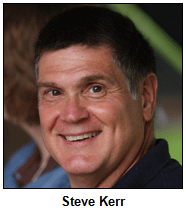 The Jewish community, Lindsey says, regards as one of its primary responsibilities "to care for those most in need. It's not only the fulfillment of a commandment to do so, but also helps create and sustain a society that is ultimately a safer, more hospitable society in which the Jewish community can thrive."
The Jewish community, Lindsey says, regards as one of its primary responsibilities "to care for those most in need. It's not only the fulfillment of a commandment to do so, but also helps create and sustain a society that is ultimately a safer, more hospitable society in which the Jewish community can thrive."
A third-generation Hoosier, Lindsey grew up in South Bend and has been executive director of the JCRC since 2012.
At Lutheran Family and Child Services, which turned 130 years old in 2013, our guest Sven Schumacher has been CEO of the foundation since 2006. That was two years after the ground-breaking for a complete rebuilding of Lutherwood, which the non-profit describes as "the most ambitious building project in the history of the agency." 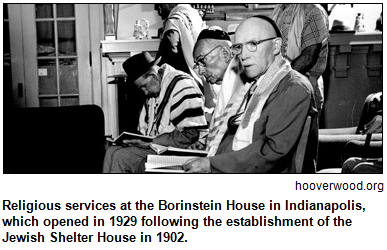 Additions to the facility at 1525 N. Ritter Ave. include dormitories, a chapel and a family center. Since the project's completion, Lutherwood has been able to treat 98 residential children as well as 60 students at its day school.
Additions to the facility at 1525 N. Ritter Ave. include dormitories, a chapel and a family center. Since the project's completion, Lutherwood has been able to treat 98 residential children as well as 60 students at its day school.
The first house, a small orphanage founded by the German immigrants in the 1880s, consisted of just nine rooms. It was overseen by Rev. Peter Seuel, a Lutheran minister who served as president until 1915. By then, the small orphanage had been replaced by a massive, three-story building on the near-eastside of Indy that served as a children's home until Lutherwood opened.
Today, Lutheran Child and Family Services partners on some programs with local German clubs and societies. Last year, the agency also began a collaboration with Community Health Network.
At Wheeler Mission Ministries, one of the key organizing figures, hardware salesman William Wheeler, also was a congregational leader at what became Central Avenue United Methodist Church. In fact, Wheeler oversaw the construction in the 1890s of the historic church building at 12th Street and Central Avenue that now is the state headquarters of Indiana Landmarks.
 According to A Door of Hope, a book about Wheeler Mission Ministries' history published in 1993, many women in the congregation at the Methodist church were worried about the fate of "unwed mothers, referred to as 'friendless women'." In rented rooms on the upper floor of a building on South Street in 1893, the new organization called Door of Hope offered a place where young women - who had been cast out by their families, abandoned by their lovers or referred by police and hospitals - could stay.
According to A Door of Hope, a book about Wheeler Mission Ministries' history published in 1993, many women in the congregation at the Methodist church were worried about the fate of "unwed mothers, referred to as 'friendless women'." In rented rooms on the upper floor of a building on South Street in 1893, the new organization called Door of Hope offered a place where young women - who had been cast out by their families, abandoned by their lovers or referred by police and hospitals - could stay.
Contending the mission should be broadened, William Wheeler persuaded congregation members to offer help to entire families. He and others "began intervening in the lives of families with husbands and fathers in jail," according to A Door of Hope.
After the stock market crash of 1929, "Wheeler morphed into a refuge for men," according to a recent story in The Indianapolis Star. The evolution and expansions of services has continued for decades. The expansion announced last week is for a facility of 12,000 square feet for the homeless adjacent to Wheeler's existing men's shelter on East Market St. The new facility is part of $6.5 million in upgrades planned for Wheeler's various facilities.
Roadtrip: Farmland in Randolph County
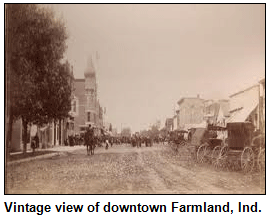 Film historian Eric Grayson suggests a Roadtrip to Farmland in Randolph County, on the eastern side of the state. The small town has one of the most active historic preservation organizations in the state.
Film historian Eric Grayson suggests a Roadtrip to Farmland in Randolph County, on the eastern side of the state. The small town has one of the most active historic preservation organizations in the state.
Farmland was originally a railroad town, and it still is. The few blocks of historic buildings are bisected by the railroad tracks. The flat terrain and open view from the tracks make this a great spot for taking sunset pictures.
Farmland has a nice little 1950s-style diner, The Chocolate Moose. The town also is famous for an annual Chili Cook Off. And there's a grain elevator next to the tracks that's now called the Ole Thyme Market.
Farmland also is home to the world-famous Courthouse Girls. The courthouse in Winchester, the county seat of Randolph County, was in danger of being torn down, so Historic Farmland mobilized its volunteers. They had some of their senior ladies pose semi-nude behind models of the courthouse to create a promotional calendar to help save the courthouse. And it worked!
History Mystery
In 1984, a soup kitchen and an overnight shelter opened in the basement of an Episcopal church in Indianapolis. The shelter and soup kitchen were run by a small group of volunteers inspired by an Episcopal priest who had been offering a place to sleep to homeless people. As a result of increasing need, the programs expanded and, in the late 1980s, a renovated building opened as an emergency shelter to assist homeless families with children.
In the decades since then, it has evolved into an agency that works to prevent homelessness with a range of programming. This has included a center on Central Avenue that provides emergency shelter, clothing and food for homeless families with children. In the agency's transitional housing program, families who leave community shelters can live for up to two years while working on long-term goals. The center for emergency shelter has the same name as the non-profit agency that runs it.
Question: What is it called?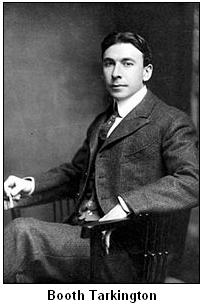
The prize is a gift certificate to New Orleans on the Avenue and Rhythm Discovery Center, courtesy of Visit Indy.
By request, we are publishing the answer to the live History Mystery, in case you didn't catch it on the air. The Jan. 25 History Mystery question: Name the Pulitzer Prize-winning novelist who is entombed in a family mausoleum at Crown Hill.
Answer: BOOTH TARKINGTON.
The famous author and playwright, an Indianapolis native who was living in a mansion at North Meridian Street at his death in 1946, was entombed at Crown Hill. The Tarkington-Jameson family mausoleum is in Section 13 of the cemetery.
Tarkington won his two Pulitzer Prizes for the novels Alice Adams (1921), which more than 10 years later was made into a movie starring Katharine Hepburn, and The Magnificent Ambersons (1918), a novel about an aristocratic family in a Midwestern city called Midland; it was obviously based on Indianapolis.
His series of Penrod stories about adolescent growing pains are still praised as captivating by critics. The title character of Penrod inspired the name of an annual arts festival in Tarkington's hometown. Tarkington is considered one of Indiana's literary greats of the early 20th century, along with his friends James Whitcomb Riley and Meredith Nicholson, who also are entombed or buried at Crown Hill.
Crown Hill Cemetery history
 (Jan. 25, 2014) - It's the third-largest private cemetery in the country, with a history that has been intertwined with Indianapolis since the 1860s. Crown Hill Cemetery also is the burial site of more American vice presidents than any other cemetery, as well as the gravesite of notables ranging from bank robber John Dillinger to poet James Whitcomb Riley and former Indianapolis Colts owner Robert Irsay.
(Jan. 25, 2014) - It's the third-largest private cemetery in the country, with a history that has been intertwined with Indianapolis since the 1860s. Crown Hill Cemetery also is the burial site of more American vice presidents than any other cemetery, as well as the gravesite of notables ranging from bank robber John Dillinger to poet James Whitcomb Riley and former Indianapolis Colts owner Robert Irsay.
As the landmark cemetery (which has had more than 200,000 burials since it was dedicated in 1864) turns 150 years old, Nelson explores its rich history, which also is being showcased in a lavish new book, Crown Hill: History, Spirit, Sanctuary (Indiana Historical Society Press).
He is joined in studio by three guests, including Keith Norwalk, president of Crown Hill Cemetery, and Douglas Wissing, an award-winning, Bloomington-based journalist and author who wrote much of the text for the book. They also are joined by Marty Davis of the Crown Hill Heritage Foundation, who took many of the book's photos.
Crown Hill's creation resulted in some ways from problems and limitations involving the Hoosier capital's first major cemetery, a pioneer graveyard known as Greenlawn Cemetery.
Located near the White River, Greenlawn was prone to flooding - and it also, as Doug notes in the book, was overwhelmed by deaths during the Civil War. Civic leaders decided a spacious new cemetery was needed in a "park-like" setting on high ground. 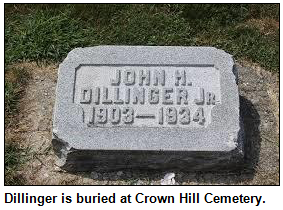 (As a tribute to James Whitcomb Riley, who died in 1916, the memorial monument for the "Hoosier poet" eventually was erected on the "crown" - or summit - of the cemetery. Riley had once written a poem titled At Crown Hill.)
(As a tribute to James Whitcomb Riley, who died in 1916, the memorial monument for the "Hoosier poet" eventually was erected on the "crown" - or summit - of the cemetery. Riley had once written a poem titled At Crown Hill.)
A Pioneer Cemetery at Crown Hill has become the re-burial site of early Hoosier settlers. That's because their original graveyards have become "lost" (or closed, often for redevelopment), a topic that was the focus of a Hoosier History Live! show last June. Many Hoosiers buried at Greenlawn were reburied in the Pioneer Cemetery.
With its towering Gothic Gate built in 1885 at the eastern entryway off of West 34th Street, Crown Hill has scores of distinctive monuments, mausoleums and other gravesites. According to various reports, the most visited is the grave marker for Dillinger (1903-1934), who was known as Public Enemy No. 1. Some visitors even leave coins on his grave marker; the coins are donated to the Riley Children's Foundation.
Speaking of criminals: Vandalism of cemetery art sometimes has had a fortunate resolution. Our guest Keith Norwalk shares details about the 1995 theft - and recovery - of an 800-pound sculpture of a stone hunting dog that had rested next to the gravesite of his "master" since the 1880s. 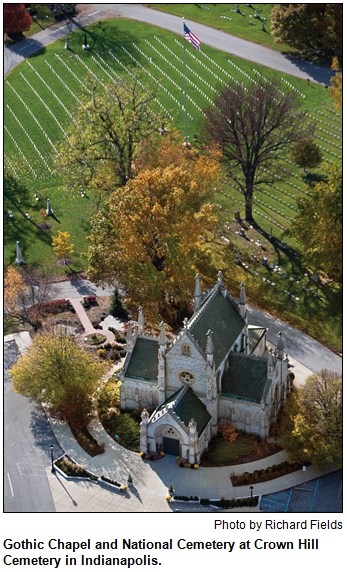 The stone dog was discovered across the country thanks to a sharp-eyed Crown Hill docent.
The stone dog was discovered across the country thanks to a sharp-eyed Crown Hill docent.
Some other history facts:
- First Lady Caroline Scott Harrison, who died of tuberculosis in the White House in 1892, is buried at Crown Hill. So is her husband, Benjamin Harrison, the only president elected from Indiana.
- The gravestone of Irsay, who died in 1997, has a giant horseshoe (symbolizing the Colts, of course) emblazoned on it.
- According to Crown Hill: History, Spirit, Sanctuary, one of the biggest funeral crowds in Crown Hill's history was for a potholder salesman. Our guest Doug Wissing explains why the service in 1971 for the humble salesman, Herbert Wirth, drew a huge crowd of diverse mourners.
Our guest Keith Norwalk has been Crown Hill's president since 1991. Two years later, he oversaw the opening of an on-site mortuary, Crown Hill Funeral Home, at 38th Street and Clarendon Road.
Our guest Marty Davis has worked for more than 30 years at Crown Hill, where her husband, Tom, often is the guide for themed tours. Marty, who specializes in nature photography, has won several awards for her images.
 During our show, she shares details about the "heroes of public safety" section of Crown Hill, including the Public Safety Memorial that honors Hoosier police officers and firefighters who have died in the line of duty. (Marty has photographed many of their funerals.)
During our show, she shares details about the "heroes of public safety" section of Crown Hill, including the Public Safety Memorial that honors Hoosier police officers and firefighters who have died in the line of duty. (Marty has photographed many of their funerals.)
Our guest Doug Wissing, a journalist acclaimed for his international coverage, has reported on everything from the war in Afghanistan to a medical missionary/explorer in Tibet.  Closer to home, Doug wrote about the history of brewing in the Hoosier state for his book Indiana: One Pint at a Time (Indiana Historical Society Press, 2010).
Closer to home, Doug wrote about the history of brewing in the Hoosier state for his book Indiana: One Pint at a Time (Indiana Historical Society Press, 2010).
During our show, Doug discusses details of a Dutch immigrant who chose to express frustration - with some justification - at his adopted homeland in the stone carving on his gravesite. (The grave marker is carved to look like a small replica of a Dutch barn of the early 1900s.)
Both Doug and Marty also discuss various aspects related to the burial site of Dillinger, an Indianapolis native who grew up on a farm near Mooresville and was fatally shot by federal agents in Chicago.
 Doug shares details about the bank robber's funeral service - as well as the service for his mother, who died when Dillinger was 3 years old. (The boy attended her service and reacted dramatically.)
Doug shares details about the bank robber's funeral service - as well as the service for his mother, who died when Dillinger was 3 years old. (The boy attended her service and reacted dramatically.)
Marty reports about visitors who traveled to Crown Hill after the release of Public Enemies, a movie in 2009 that starred Johnny Depp as Dillinger.
On a more serene note - but one that also has a Mooresville connection - we also explore daffodils. Specifically, Marty discusses Helen Link, a Morgan County resident who developed hundreds of varieties of the flower. Since her death in 2002, the Indiana Daffodil Society has been tending flowers around her memorial monument at Crown Hill, as well as elsewhere at the cemetery, including a Greek goddess statue.
"Each spring," Marty notes, "an important part of Helen Link blooms again as she rests nearby."
Roadtrip: An exploration of Shelbyville
Guest Roadtripper and public historian Glory-June Greiff recommends a short jaunt to Shelbyville, just a little southeast of Indianapolis. In 1822 Shelbyville was created on donated land to be the seat of Shelby County, established the year before.
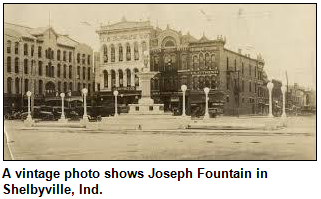 Glory tells us that if you enjoy wandering around looking at great old buildings, this is the place. There are several civic, commercial and residential buildings in a great variety of styles over which to marvel. The county courthouse on South Harrison is one of three Art Deco courthouses in the state, constructed under the New Deal in the 1930s. Near it stands the last Civil War monument erected in Indiana, a simple statue of a Union soldier.
Glory tells us that if you enjoy wandering around looking at great old buildings, this is the place. There are several civic, commercial and residential buildings in a great variety of styles over which to marvel. The county courthouse on South Harrison is one of three Art Deco courthouses in the state, constructed under the New Deal in the 1930s. Near it stands the last Civil War monument erected in Indiana, a simple statue of a Union soldier.
On the public square is a bronze sculpture commemorating author Charles Major, who lived in Shelbyville and certainly left his name around town. The sculpture depicts a character in his famous children's novel, The Bears of Blue River.
The Grover Museum at 52 W. Broadway is an exceptionally fine county museum, run by the Shelby County Historical Society and open Tuesday through Saturday, 9 a.m. to 4 p.m. Admission is free!
Our Roadtripper says that if all this history makes you hungry, stop at the Cow Palace at 319 N. Harrison for all things ice cream, not to mention tasty sandwiches. It's open 7 days a week until 9. If you feel like something a tad more substantial, she recommends the restaurant Tour of Italy, just starting its third year in the southwest corner of the public square at 39 Public Square. Ciao!
History Mystery
A family mausoleum at Crown Hill Cemetery includes the tomb of a famous Hoosier novelist and playwright who died in 1946. He was born in Indianapolis in 1869 and went on to win the Pulitzer Prize for fiction two times, a rare accomplishment.
His novels were the basis for movies in the 1930s and '40s, with stars such as Katharine Hepburn.
Perhaps his best-known novel was set in a city that obviously was Indianapolis, although the author gave his hometown a fictional name in the book. The movie based on that novel was directed by Orson Welles.
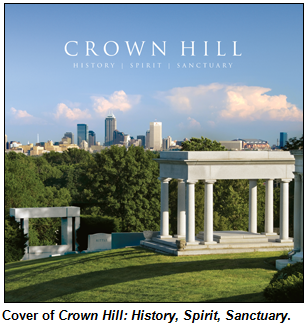 The author also wrote a series of stories about a mischievous boy that are considered among the best ever written about Midwestern adolescence.
The author also wrote a series of stories about a mischievous boy that are considered among the best ever written about Midwestern adolescence.
Despite his national fame, the author continued to live in Indianapolis, although he often spent summers at the resort town of Kennebunkport, Maine.
Question: Name this novelist, who is entombed in a family mausoleum at Crown Hill.
The prize is a copy of the new book, Crown Hill: History, Spirit, Sanctuary (Indiana Historical Society Press), as well as a pair of tickets to a historical tour of Crown Hill Cemetery, courtesy of Crown Hill Heritage Foundation.
By request, we are publishing the answer to the live History Mystery, in case you didn't catch it on the air. The Jan. 18 History Mystery question: What was the name of the mineral water sold at the West Baden Hotel? Hint: The character that symbolized the water was an elf or gnome-like figure.
Answer: SPRUDEL water.
Sold by the West Baden Springs Hotel, Sprudel water never become nearly as well-known and popular as Pluto water at the rival French Lick Springs Hotel. Some experts have attributed that to better marketing by French Lick; the content of both mineral waters has been described as nearly identical. In fact, both waters are said to be primarily laxatives.
In the early 1900s, the small towns of French Lick and West Baden each had high schools. A devil (Pluto) was the mascot of French Lick's basketball team, and an elf or gnome (Sprudel) was the West Baden mascot. By the time future superstar Larry Bird was growing up in the region, the high schools had been consolidated. Bird first drew widespread attention for his outstanding play at Springs Valley High School, the consolidated school.
Indiana's most mysterious county?
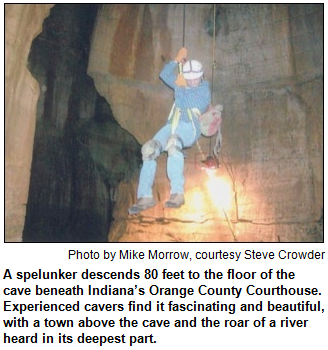 (Jan. 18, 2014) - With a limestone cave beneath the county seat of Paoli, a village underwater, colorful folklore involving the famous French Lick and West Baden Springs Hotels, a "lost" river and some Confederate sympathizers during the Civil War, Orange County in far-southwestern Indiana may be our most mysterious.
(Jan. 18, 2014) - With a limestone cave beneath the county seat of Paoli, a village underwater, colorful folklore involving the famous French Lick and West Baden Springs Hotels, a "lost" river and some Confederate sympathizers during the Civil War, Orange County in far-southwestern Indiana may be our most mysterious.
In this program, we explore the limestone cave beneath the historic Orange County Courthouse, where one of Nelson's guests has been a court reporter for more than 40 years. She is Orange County native Diane Dillard, a historic preservationist.
Her late husband, Arthur Dillard, a former prosecuting attorney, completed the manuscript for a book about Orange County's colorful heritage, Casinos, Copperheads, Pioneers and Politicians (Hawthorne Publishing, 2012), before his death.
In addition to Diane, Nelson's guests are two historians/authors with their own links to Orange County's heritage.
 They include Jim Fadely, who is considered the top expert on Thomas Taggart (1856-1929), the Irish immigrant-turned-Indianapolis mayor-turned French Lick hotel owner who brought international attention to the resort and its mineral springs and spas.
They include Jim Fadely, who is considered the top expert on Thomas Taggart (1856-1929), the Irish immigrant-turned-Indianapolis mayor-turned French Lick hotel owner who brought international attention to the resort and its mineral springs and spas.
Jim, an administrator at University High School, is heading up a campaign to restore the long-neglected Taggart Memorial at Riverside Park in Indianapolis; Indiana Landmarks had placed the limestone monument on its 10 Most Endangered list for a couple of years.
Nelson's guests also include author Nancy Niblack Baxter of Hawthorne Publishing, who edited Casinos, Copperheads, Pioneers and Politicians. 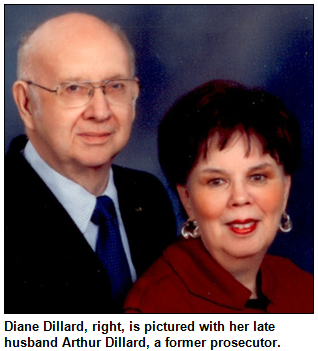 The casinos in the title refer to gambling that, although illegal in the early 1900s, openly flourished during the first heyday of the French Lick hotel and its arch-rival in West Baden.
The casinos in the title refer to gambling that, although illegal in the early 1900s, openly flourished during the first heyday of the French Lick hotel and its arch-rival in West Baden.
Owners of the West Baden hotel, built in 1902, included a flamboyant entrepreneur, Ed Ballard, who, like Taggart, rose from humble beginnings to become a millionaire. Our guest Jim Fadely will share insights about Ballard, who was shot to death in Hot Springs, Ark., in 1936.
The West Baden hotel, called the "Eighth Wonder of the World" upon its opening in 1902 because of its spectacular atrium and other features, closed as a hotel in the 1930s. After a lavish restoration spearheaded by the late philanthropist Bill Cook and his wife, Gayle, the West Baden Springs Hotel reopened in 2007. The Cooks also oversaw the restoration of the French Lick Springs Hotel.
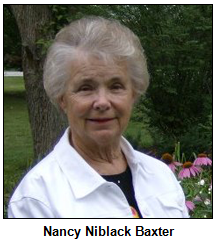 Earlier hotels on the French Lick site - including one that may have been a "hotbed of Copperhead activity" - are described in Casinos, Copperheads, Pioneers and Politicians. ("Copperhead" was a term for Southern sympathizers during the Civil War; it derives from copper buttons some wore.)
Earlier hotels on the French Lick site - including one that may have been a "hotbed of Copperhead activity" - are described in Casinos, Copperheads, Pioneers and Politicians. ("Copperhead" was a term for Southern sympathizers during the Civil War; it derives from copper buttons some wore.)
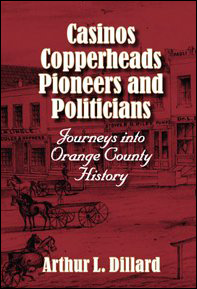 The Copperhead presence is analyzed by Arthur Dillard, a former president of the Orange County Historical Society, who spent years researching folklore about the county.
The Copperhead presence is analyzed by Arthur Dillard, a former president of the Orange County Historical Society, who spent years researching folklore about the county.
The mysterious cave underneath a vast section of Paoli, including the impressive courthouse, exists in part because, as his book puts it, "Ice Age glaciers did not touch this region."
In fact, the cave includes a cavern bigger than the courthouse, according to the book.
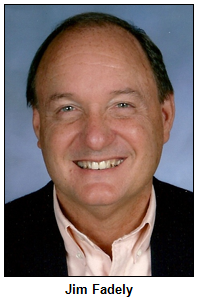 Diane and Nancy share insights about that, as well as about Newton Stewart, an Orange County village that thrived during the late 1800s but had been abandoned by the early 1970s. Subsequently, the village was flooded as part of the creation of Patoka Lake.
Diane and Nancy share insights about that, as well as about Newton Stewart, an Orange County village that thrived during the late 1800s but had been abandoned by the early 1970s. Subsequently, the village was flooded as part of the creation of Patoka Lake.
They also discuss bygone dry goods and general stores that once thrived in Orange County, as well as such mysterious street and place names as Moonshine Hollow, Grease County Road, Tater Road and Hog's Defeat Creek. The area's mineral springs appealed to Native Americans decades before white settlers arrived. 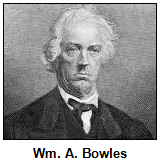 French Lick's distinctive name derives from the fact that French explorers had obtained salt from the springs.
French Lick's distinctive name derives from the fact that French explorers had obtained salt from the springs.
According to Casinos, Copperheads, Pioneers and Politicians, the valley's first hotel, which was known as the French Lick House, opened in 1845. Its owner was William A. Bowles, a Confederate sympathizer, physician and civic leader.
His hotel was a predecessor of the spectacular French Lick Springs Hotel that Taggart, a nationally powerful Democrat, marketed in the early 1900s to guests, including the Rockefellers, Roosevelts, Vanderbilts and Studebakers. (The memorial to Taggart was built in Riverside Park because, as Indy's mayor and a passionate advocate of parks, Taggart pushed for the city's purchase of the parkland despite critics who denounced it as a flood-prone "folly.")
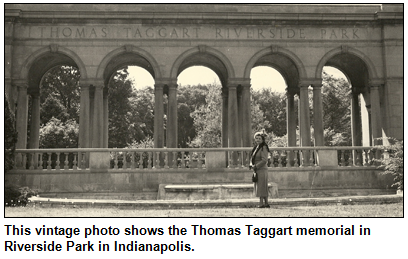 Our guest Jim Fadely, the chairman of the Taggart Memorial Task Force that is crusading to restore the memorial, is the author of Thomas Taggart: Public Servant, Political Boss (Indiana Historical Society Press).
Our guest Jim Fadely, the chairman of the Taggart Memorial Task Force that is crusading to restore the memorial, is the author of Thomas Taggart: Public Servant, Political Boss (Indiana Historical Society Press).
Just as Taggart was a Democratic power broker, various owners at the rival West Baden hotel were well-connected Republicans. As a result, when gambling linked to both hotels flourished during the early 1900s, local public officials often ignored the goings-on because leaders of both political parties were involved.
The atrium at the West Baden Springs Hotel was the world's largest free-span dome until the Astrodome in Houston opened in the 1960s.
West Baden had closed as a hotel during the Great Depression; then it was owned by Jesuit priests and, later, the Northwood Institute, which offered culinary, automotive and other training.
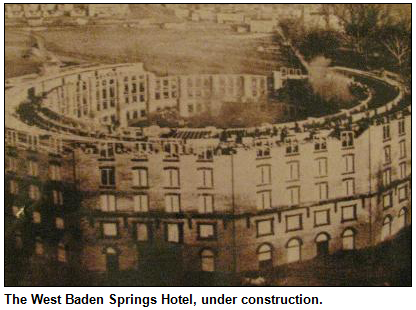 Ever since the lavish restoration, West Baden has again been a luxury hotel; it's a National Historic Landmark.
Ever since the lavish restoration, West Baden has again been a luxury hotel; it's a National Historic Landmark.
Other facts about the county with so many twists, turns and mysterious or historic features:
- The Orange County Courthouse, built in the Greek Revival style in 1850, is the state's second-oldest county courthouse in continual use. (The oldest is the Ohio County Courthouse.) Indy-based architect Jim Kienle shared insights during a Hoosier History Live! show in June 2010 following his restoration of the courthouse.
- According to Arthur Dillard's book, Moonshine Hollow is a name given by French Lick residents to a gulch on the south end of town because "illegally distilled whiskey was allegedly bartered or sold there."
- Arthur Dillard's grandfather was a blacksmith in Newton Stewart, the "town underwater."
Roadtrip: Kurt Vonnegut's Who am I this Time?
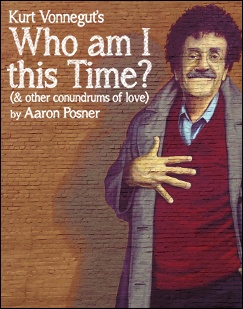 Guest Roadtripper Kelly Young of Baise Communications tells us about Kurt Vonnegut's Who am I this Time? - which opens at the Indiana Repertory Theatre on Jan. 28 and is directed by IRT artistic director Janet Allen.
Guest Roadtripper Kelly Young of Baise Communications tells us about Kurt Vonnegut's Who am I this Time? - which opens at the Indiana Repertory Theatre on Jan. 28 and is directed by IRT artistic director Janet Allen.
The show is a quirky collection of some of Vonnegut's most endearing characters who are searching for love and identity. The material is taken from the Indy hometown author's first short story collection, Welcome to the Monkey House.
Also at the IRT, And Then They Came for Me: Remembering the World of Anne Frank, opening Jan. 17. IRT Playwright in Residence James Still's most-produced play combines video and live performance, combining videotaped interviews with Holocaust survivors Ed Silverberg and Eva Schloss with live actors recreating scenes from their lives during World War II. James Still also been a guest on Hoosier History Live!
History Mystery
More than 100 years ago, the French Lick Springs Hotel became famous for selling Pluto water, the mineral water that was promoted as a curative for a range of ailments. Pluto water was marketed for many decades with an image of a red, devil-like figure who symbolized Pluto, ruler of the underworld.
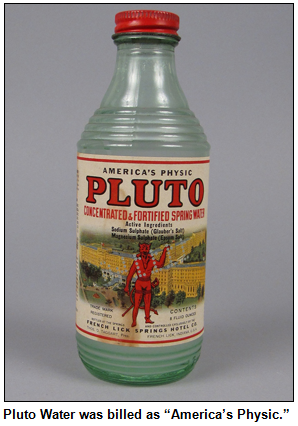 At the arch-rival West Baden Springs Hotel, "curative" mineral water was bottled and sold as well for many years in the early 1900s. Rather than call their product Pluto water, West Baden owners sold and marketed their mineral water under a different name.
At the arch-rival West Baden Springs Hotel, "curative" mineral water was bottled and sold as well for many years in the early 1900s. Rather than call their product Pluto water, West Baden owners sold and marketed their mineral water under a different name.
Question: What was the name of the mineral water sold at the West Baden Hotel?
Hint: The character who symbolized the water was an elf or gnome-like figure.
The prize is a gift certificate to the Winner's Circle Pub and Grille in downtown Indianapolis, and two tickets to the James Whitcomb Riley Museum Home, courtesy of Visit Indy.
By request, we are publishing the answer to the live History Mystery, in case you didn't catch it on the air. The Jan. 11 History Mystery question: Indiana native Ernie Pyle was the World War II journalist most admired by the American public and was killed during the war. In what state was he buried?
Answer: HAWAII.
Ernie Pyle's burial site is at the National Memorial Cemetery of the Pacific in Honolulu. Informally known as Punchbowl Cemetery, the national cemetery serves as a memorial to honor men and women who served in the U.S. armed forces and lost their lives doing so.
Ernie Pyle is one of the few American civilians killed during World War II to be awarded the Purple Heart. That distinction is noted on his gravestone at the memorial cemetery in Hawaii, which is visited by millions of tourists annually.
Pyle's parents had been sharecroppers in Dana, where his restored boyhood home is located.
World War II veterans remember
(Jan. 11, 2014) - Ranging from Marines, sailors and others who survived combat on the front lines to Hoosiers who served on the home front, more than 84 veterans of World War II, all with links to Indiana, have described their personal stories to educators Steve Hardwick and Duane Hodgin.
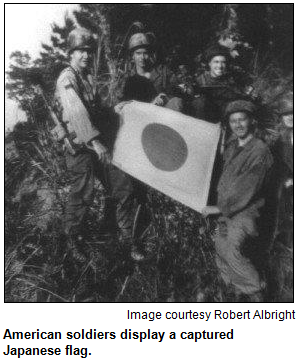 Then Steve and Duane, who were colleagues in Lawrence Township Schools in Indianapolis, pulled the remembrances together in a book titled WWII Duty, Honor, Country: The Memories of Those Who Were There (iUniverse, 2013).
Then Steve and Duane, who were colleagues in Lawrence Township Schools in Indianapolis, pulled the remembrances together in a book titled WWII Duty, Honor, Country: The Memories of Those Who Were There (iUniverse, 2013).
Now Steve, a fifth-grade teacher at Indian Creek Elementary School and a U.S. Army veteran, and Duane, who has retired as a school administrator and returned to live in his hometown of Richmond, are Nelson's guests.
They are joined by a World War II veteran, Noblesville resident Merrill "Lefty" Huntzinger, who was a staff sergeant in the 2nd Infantry Division.
"Lefty" landed at Omaha Beach a few weeks after D-Day. In the book, he recalls asking his squad leader where they were going. This was his reply: "We're going to hell, and if we are lucky, we will soon land up in heaven."
 Fortunately, "Lefty" survived the global conflict that, as Steve and Duane put it in their introduction, some historians consider to be the "single most significant and influential event of the 20th century."
Fortunately, "Lefty" survived the global conflict that, as Steve and Duane put it in their introduction, some historians consider to be the "single most significant and influential event of the 20th century."
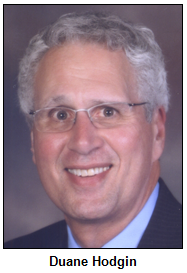 Among the Hoosiers whose memories are featured in their book is the late Jimmy O'Donnell, a U.S. Navy machinist who survived the sinking of the USS Indianapolis in the Pacific Ocean by a Japanese submarine.
Among the Hoosiers whose memories are featured in their book is the late Jimmy O'Donnell, a U.S. Navy machinist who survived the sinking of the USS Indianapolis in the Pacific Ocean by a Japanese submarine.
The episode often is described as the Navy's "worst tragedy at sea." About 800 of the crew (out of a total of 1,190) survived the sinking by remaining afloat in the dark, oil-covered ocean waters - for awhile. Help did not arrive for nearly five days, though. By then, about half of those sailors had drowned or had been killed by sharks.
In 1995, a monument to the USS Indianapolis was dedicated in downtown Indy. Jimmy O'Donnell, who retired as a firefighter, attended that ceremony; he died last January at age 92.
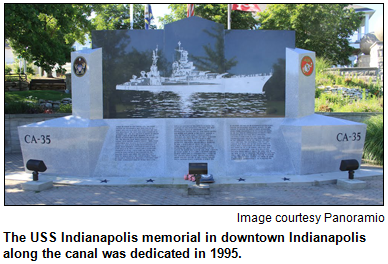 Other veterans of WWII whose memories are shared in the book by Steve and Duane include an Indy native who was one of the first group of African-Americans to serve in the Marines, as well as a nurse from Corydon who, like our guest "Lefty," landed at Omaha Beach a few weeks after D-Day. Serving in a trauma unit, she treated soldiers with serious head, chest and abdominal injuries.
Other veterans of WWII whose memories are shared in the book by Steve and Duane include an Indy native who was one of the first group of African-Americans to serve in the Marines, as well as a nurse from Corydon who, like our guest "Lefty," landed at Omaha Beach a few weeks after D-Day. Serving in a trauma unit, she treated soldiers with serious head, chest and abdominal injuries.
As The Indianapolis Star noted in an article about Steve and Duane's book last February, the experiences described by the veterans include "some (that are) funny, some sad, some gut-wrenching and some awe-inspiring."
The book evolved from a history project Steve initiated in 2001 at Indian Creek. A tribute to WWII veterans, the event has become an annual gathering in Lawrence Township and has been attended by many of the 84 veterans profiled in the book. 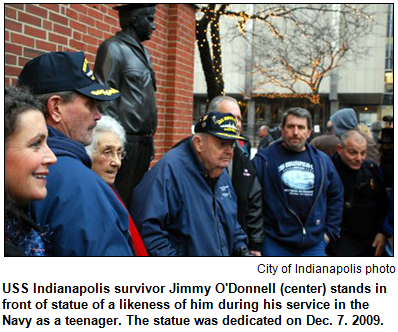 Of the 84, all are at least 87 years old; about 15 have died since Steve and Duane began their interviews and collecting photos.
Of the 84, all are at least 87 years old; about 15 have died since Steve and Duane began their interviews and collecting photos.
Those whose stories are featured include Eugene Hodgin of Richmond, the father of our guest Duane Hodgin. Duane was born while his father, a tech sergeant with the medical battalion in the 38th Infantry Division, was serving in New Guinea. Eugene did not see his first son until he was 15 months old. While serving his country, he severely injured his back lifting heavy crates of medical supplies.
"I was on my back in a tent for 30 days and could not move," he recalls in the book. Following that ordeal, he contracted a severe case of malaria.
Our guest "Lefty" Huntzinger was assigned to a machine gun squad that was fighting German soldiers. In the book, he shares memories of nightly rotations pulling guard duty.
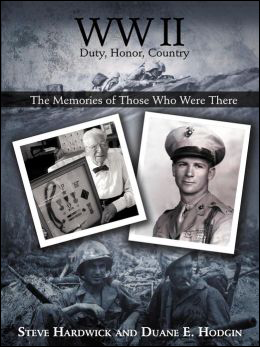 "It's a lonely, scary assignment because you're all alone, and you feel that the enemy has you in sight, and you could be shot at any time."
"It's a lonely, scary assignment because you're all alone, and you feel that the enemy has you in sight, and you could be shot at any time."
He also shares memories of crawling out of his foxhole to drag away a dying comrade whose open chest was full of shrapnel. "Lefty" eventually was awarded a Bronze Star for Valor.
Other Hoosier veterans whose stories are highlighted during our show (and who are featured in the book) include:
- A sergeant from Terre Haute who fought in the Philippines and was awarded two Purple Hearts. He shares a humorous story about a "great doughnut drop" that caused a temporary cease fire between Japanese and American soldiers. The doughnuts were dropped in a river in a New Guinea jungle.
- An Indianapolis woman who describes life on the home front, including the rationing of gasoline and tires, the sale of war bonds and the planting of victory gardens.
- And a medic from Fountain City who helped liberate several concentration camps. During combat, Bob Swift often cleared injured GIs from the battlefield. He recently visited Steve Hardwick's classroom to speak to fifth-graders about his war experiences.
History Mystery
Indiana native Ernie Pyle was the World War II journalist most admired by the American public. He told the soldiers' stories, reporting from the front lines, rotating among the various branches of service as he joined U.S. troops fighting in North Africa, Europe and the Pacific.
In April 1945, as the war was winding down, Ernie Pyle was killed by a Japanese machine gunner when his jeep came under fire. His remains eventually were brought to the United States for burial, but he was not buried in his hometown of Dana in far-western Indiana. Instead, Ernie Pyle's remains were buried in another state.
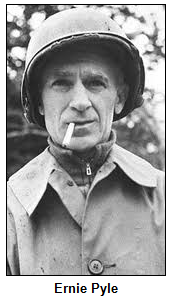 Question: What is the state?
Question: What is the state?
The prize is a gift certificate to California Pizza Kitchen in Circle Centre Mall, and two tickets to the Rhythm Discovery Center, courtesy of Visit Indy.
By request, we are publishing the answer to the live History Mystery, in case you didn't catch it on the air. The Jan. 4 show History Mystery: To help save a historic county courthouse in Indiana from demolition, several members of a local bridge club came up with a creative - some said quirky - idea to raise funds and public awareness in 2006. The women, most of whom were in their 80s (some were even in their 90s), posed for a calendar - in the buff. In what Indiana county is the courthouse?
Answer: RANDOLPH COUNTY.
Members of a bridge club in the east-central Indiana town of Farmland were appalled in 2006 when they learned that the Italianate courthouse in Randolph County was scheduled to be demolished and replaced by a new building.
Inspired by a movie titled Calendar Girls (2003), the women - most of whom were more than 80 years old - undressed and posed for the Court House Girls Calendar. They stood behind small, porcelain replicas of their beloved courthouse.
Eventually, the vote by county commissioners to demolish the courthouse was overturned. State legislators also credited the calendar girls with prodding the General Assembly to create a preservation commission on Indiana courthouses.
Squirrel invasion of 1800s and other quirky episodes
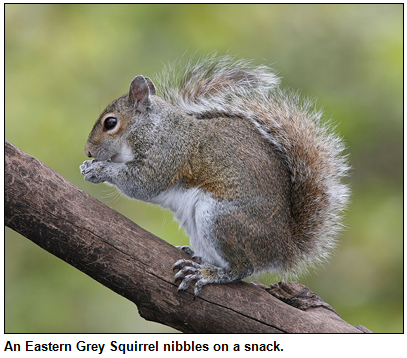 (Jan. 4, 2014) - Regular listeners may remember a phone caller during a recent show who sought details about the "Great Squirrel Invasion" during the 1820s and '30s in Indiana.
(Jan. 4, 2014) - Regular listeners may remember a phone caller during a recent show who sought details about the "Great Squirrel Invasion" during the 1820s and '30s in Indiana.
Our host Nelson confirmed the freakish episode had occurred - it apparently was almost akin to an Alfred Hitchcock movie, albeit with swarms of squirrels instead of flocks of birds as the invasive species - but he did not have details to share.
It so happens that some Hoosier historians have researched the squirrel saga; one of them is among our studio guests.
As a lighthearted way to kick off the new year (our sixth on the air), we also explore other quirky chapters in Hoosier history. In addition, Nelson and his guests debunk aspects of our folklore that, as it turns out, are significantly distorted or embellished accounts of what actually happened.
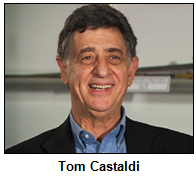 The seemingly sudden and unsettling presence of thousands and thousands of squirrels in the wilderness and towns across early Indiana, though, is no myth.
The seemingly sudden and unsettling presence of thousands and thousands of squirrels in the wilderness and towns across early Indiana, though, is no myth.
 "Three times during the first half of the 19th century, crops were destroyed by these bushy-tailed varmints," Allen County historian Tom Castaldi wrote in a column for Fort Wayne Monthly magazine.
"Three times during the first half of the 19th century, crops were destroyed by these bushy-tailed varmints," Allen County historian Tom Castaldi wrote in a column for Fort Wayne Monthly magazine.
Tom, one of our state's most popular county historians and an expert on canals, Italian immigration and other aspects of our heritage, joins Nelson in studio as we explore the squirrel invasions. In his column, Tom noted that early Indianapolis civic leader, attorney and landowner Calvin Fletcher described the massive number of squirrels in the 1820s - and wrote about the devastation they wrought - in his diaries.
Also quoting from Calvin Fletcher's diaries, Indianapolis historian Connie Zeigler noted that one Marion County resident, in desperation, killed 248 squirrels at his home in just three days. In a 2008 column in Urban Times, a monthly newspaper that covers Indy's historic neighborhoods, Connie described the squirrel numbers of the 1820s as "incomprehensible in the mind of a modern city dweller."
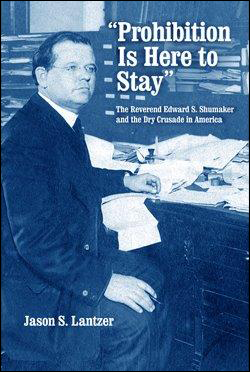 In addition to Tom Castaldi, a native of Logansport, Nelson is joined in studio by Jason Lantzer, who has taught history at Butler University, serves as the interim coordinator of its honors program and, like Tom, is widely acclaimed for his broad knowledge of our Hoosier heritage.
In addition to Tom Castaldi, a native of Logansport, Nelson is joined in studio by Jason Lantzer, who has taught history at Butler University, serves as the interim coordinator of its honors program and, like Tom, is widely acclaimed for his broad knowledge of our Hoosier heritage.
So Jason, a native of Wakarusa in far-northern Indiana, shares insights about various quirky episodes that have unfolded in Indiana. He also is the author of books, including Prohibition Is Here To Stay (University of Notre Dame Press, 2009).
Back to the squirrels. According to Tom’s column, a second squirrel invasion - this one during the 1830s - was documented by Wabash County historians and affected nearly the entire state.
"Early settlers equated them to an army on the move," according to Ron Woodward and Gladys Harvey, co-authors of Wabash County Chronicles (The History Press, 2010). "The vast hordes were so thick that their weight would cause tree limbs to fall. ... The corn crop was nearly decimated."
Tom Castaldi notes: "Even the Wabash River could not stop the little varmints as they swam the river or crossed on overhanging tree limbs, even forming a living chain bridge for other squirrels to cross."
 The explanations for these bizarre invasions?
The explanations for these bizarre invasions?
They apparently relate to environmental changes in the wilderness that caused hordes of squirrels to migrate to Indiana in search of food. During our show, Tom will share insights.
Lest you conclude the new year has made Hoosier History Live! go all squirrelly, we also explore such quirky episodes as:
- How the town of Wakarusa got its name. Who better than our guest Jason Lantzer, a native of the town in Elkhart County, to give us the scoop?
- A connection between a police booth in Goshen and John Dillinger, a native Hoosier who became a notorious bank robber (known across the country as "Public Enemy No. 1") during the 1930s.
- Folklore involving the opening of the Wabash & Erie Canal in Fort Wayne and famous political and military figure Gen. Lewis Cass. According to various tales, Cass (1782-1866), the top dignitary at the grand opening in 1843, fell - or was dunked - into the canal during the proceedings.
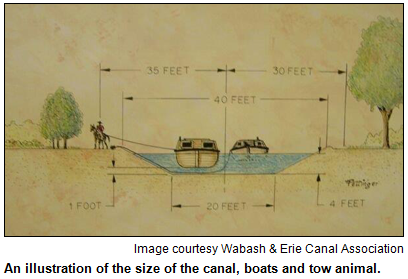 Tom Castaldi, who has researched the episode (Cass County, which includes Tom's hometown of Logansport, is named in honor of Lewis Cass) will explain what really happened. After negotiating treaties with Native Americans in Indiana, Lewis Cass (1782-1866) became the governor of Michigan, then a U.S. senator from our neighboring state, followed by a stint as U.S. secretary of state. He even was a Democratic presidential candidate.
Tom Castaldi, who has researched the episode (Cass County, which includes Tom's hometown of Logansport, is named in honor of Lewis Cass) will explain what really happened. After negotiating treaties with Native Americans in Indiana, Lewis Cass (1782-1866) became the governor of Michigan, then a U.S. senator from our neighboring state, followed by a stint as U.S. secretary of state. He even was a Democratic presidential candidate.
A board member of the Canal Society of Indiana, Tom Castaldi shares other quirky episodes involving the Hoosier state's rivers and canals during our show.
Tom is the author of a series of notebooks about the Wabash and Erie Canal's creation and impact in several counties, including Allen, Huntington, Cass, Carroll, Tippecanoe, Wabash and Miami counties.
Some other history nuggets (or should we say history "nuts," in honor of our squirrel topic?):
- Some of the first accounts of a squirrel invasion came from no less than John James Audubon, the legendary bird expert, naturalist and painter. "In 1819, Audubon, who was traveling down the Ohio River between Indiana and Kentucky by boat, saw large numbers of gray squirrels swarming across the river," Tom wrote in his Fort Wayne Monthly column. "Many drowned or were killed by hunters."
- In 2010, the Indiana Historical Society presented Tom Castaldi with its Eli Lilly Lifetime Achievement Award for his work in Indiana history.
- The final resting place of an African-American former slave named "Tom," who was one of several to have inspired the title character in Uncle Tom's Cabin, the international bestseller written by Harriet Beecher Stowe in 1852, is in Indiana. Our guest Jason Lantzer shares details about the unlikely "Uncle Tom" burial site during our show.
Roadtrip: How many stars at Indiana Roof?
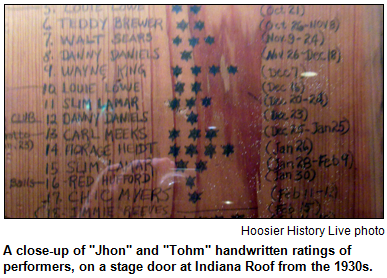 How many stars did you rate if you performed at the Indiana Roof in the 1930s? We know about the stars in the "sky" at the Roof, but guest Roadtripper Gary BraVard tells us about a unique stage door where, from 1931 to 1936, two Indiana Roof employees, John "Jhon" Young and Thomas "Tohm" Kelly, faithfully rated all the performers who appeared on stage there. (Apparently the two had stage names with slightly exotic spellings).
How many stars did you rate if you performed at the Indiana Roof in the 1930s? We know about the stars in the "sky" at the Roof, but guest Roadtripper Gary BraVard tells us about a unique stage door where, from 1931 to 1936, two Indiana Roof employees, John "Jhon" Young and Thomas "Tohm" Kelly, faithfully rated all the performers who appeared on stage there. (Apparently the two had stage names with slightly exotic spellings).
Cab Calloway and Jan Garber were given four stars by "Jhon" and "Tohm," and the two gave themselves five stars. The door remains in the ballroom today; it is to the left of the stage as you face it.
The Indiana Roof first opened in September of 1927 and was designed to appear as if you were in a European village. Painted grapevines creep up plaster columns, and the stucco facades, doorways and balconies contain exquisite details. The domed ceiling over the circular ballroom resembles a starry night sky, with soft clouds and a crescent moon. As a special treat, every once in a while you get to see and hear a thunderstorm!
History Mystery
To help save a historic county courthouse in Indiana from demolition, several members of a local bridge club came up with a creative - some said quirky - idea to raise funds and public awareness in 2006. The women, most of whom were in their 80s (some were even in their 90s), posed for a calendar - in the buff.
During the photo shoots, small replicas of the historic courthouse were discreetly positioned in front of the "calendar girls" in order to, as some accounts described it, "protect their dignity."
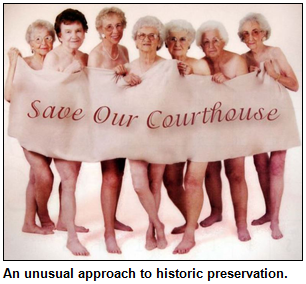 The calendar sold thousands of copies and drew national attention to the crusade to save the county courthouse. The bridge-playing calendar girls became unlikely celebrities and were credited with convincing officials to spare the courthouse, which was built in 1877.
The calendar sold thousands of copies and drew national attention to the crusade to save the county courthouse. The bridge-playing calendar girls became unlikely celebrities and were credited with convincing officials to spare the courthouse, which was built in 1877.
Question In what Indiana county is the courthouse?
The prize is two tickets to the Eiteljorg Museum and two tickets to the Indianapolis Motor Speedway Hall of Fame Museum, courtesy of Visit Indy.
By request, we are publishing the answer to the last live History Mystery, in case you didn't catch it on the air. The Dec. 21 show History Mystery: What was the department store chain that traces its beginnings to Vincennes?
Answer: GIMBELS.
The company was founded by Adam Gimbel, a young Bavarian immigrant who opened a general store in Vincennes in 1842. His two sons, Jacob and Isaac, were born in Vincennes during the 1850s.
Family members opened a successful department store in Milwaukee in the 1880s. Next came a large store in Philadelphia, followed in 1910 by the iconic Gimbels store in New York City overseen by Jacob Gimbel. The rivalry between Macy's and Gimbels was legendary and inspired a subplot of the 1947 movie "The Miracle on 34th Street."
Gimbels had 36 stores across the country, including its flagship New York City store, when the retailer closed in 1987.

